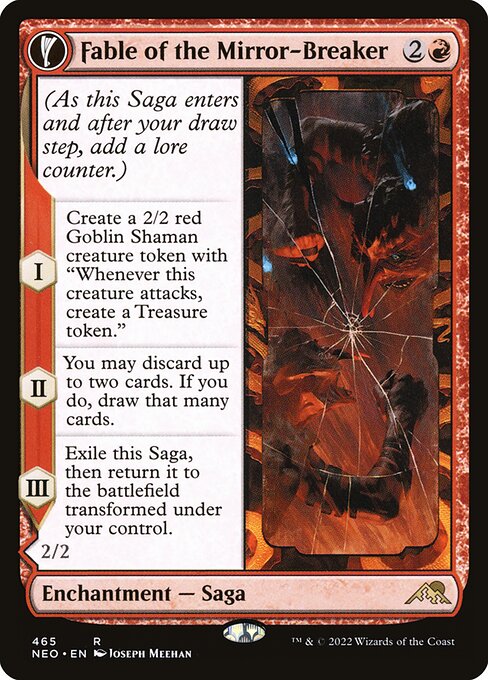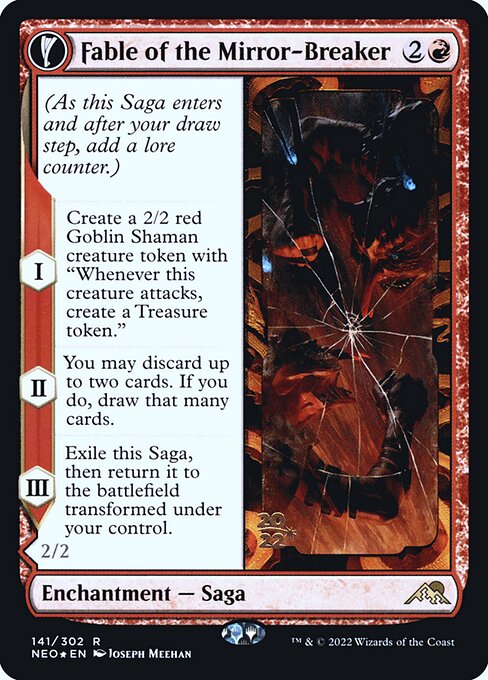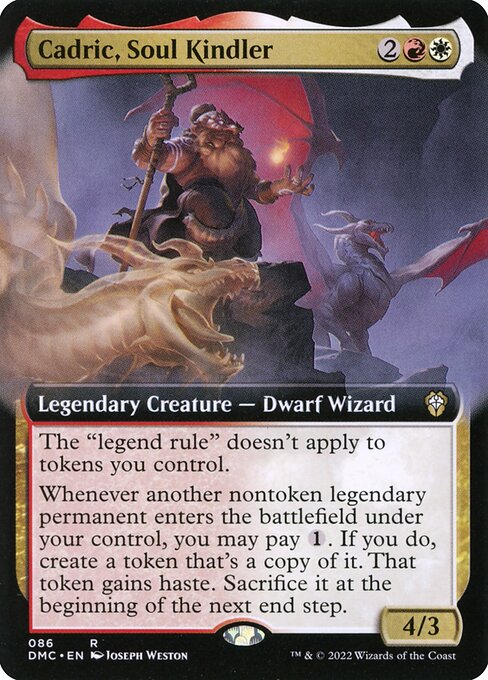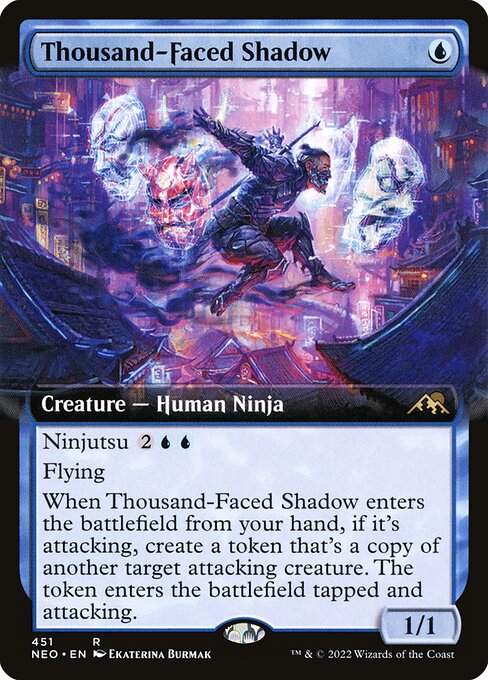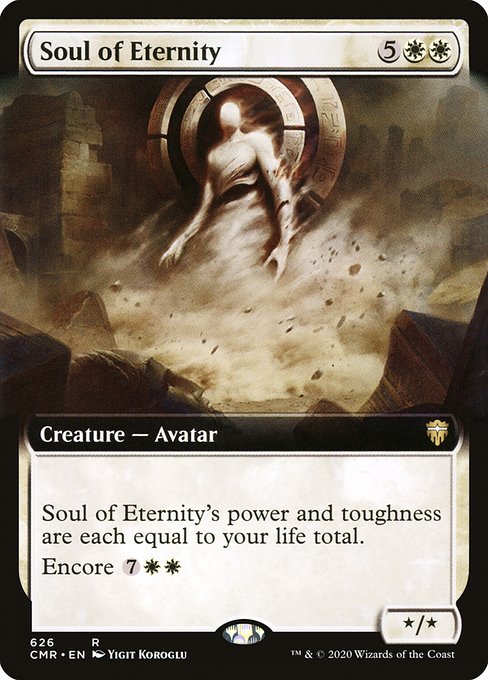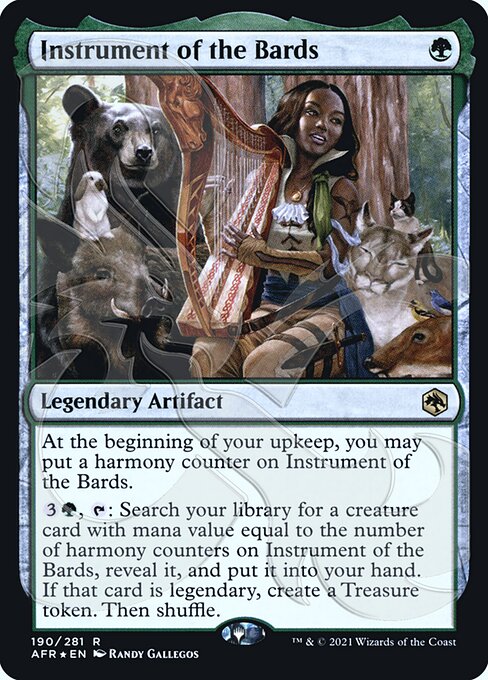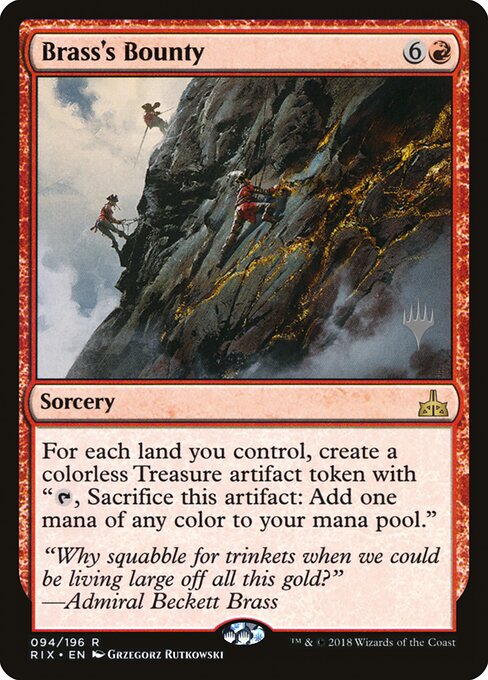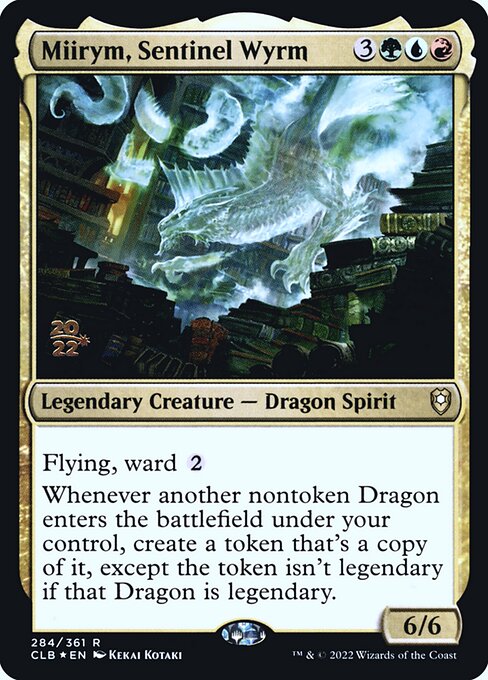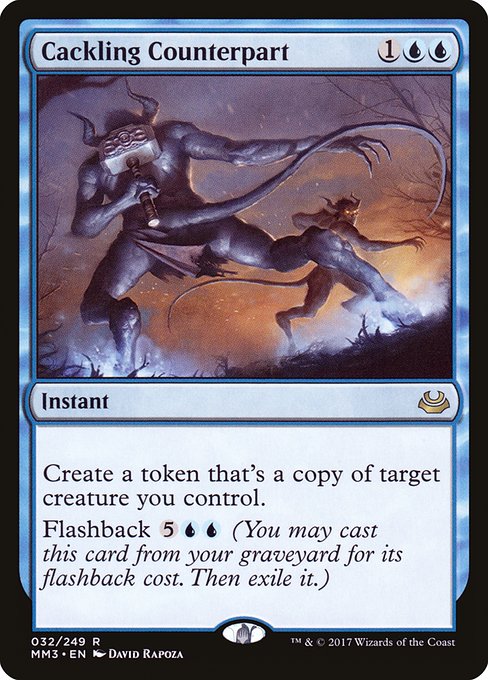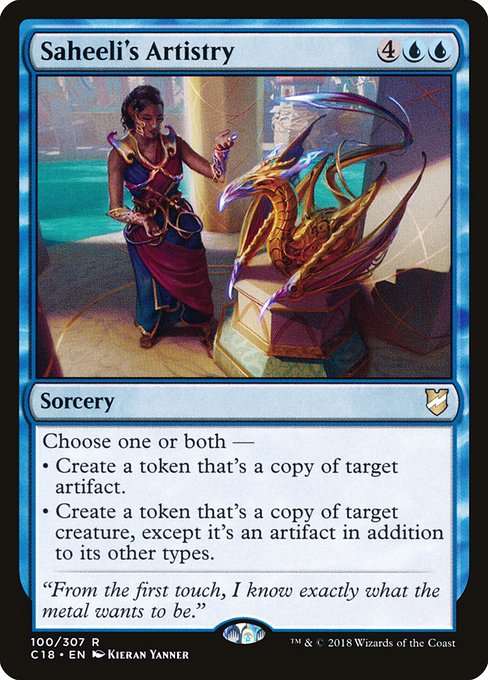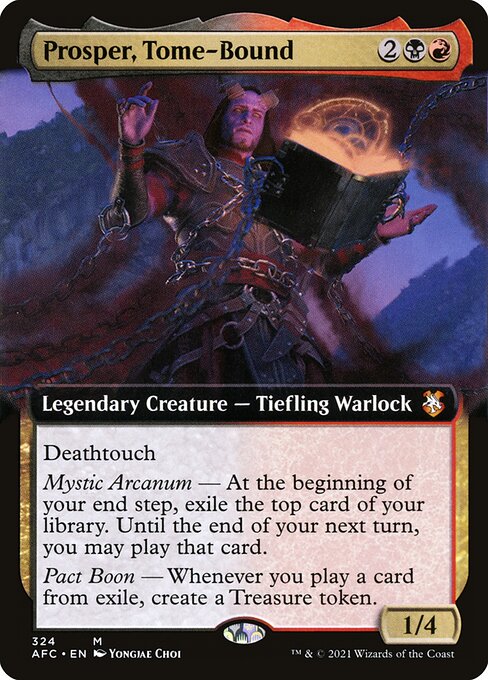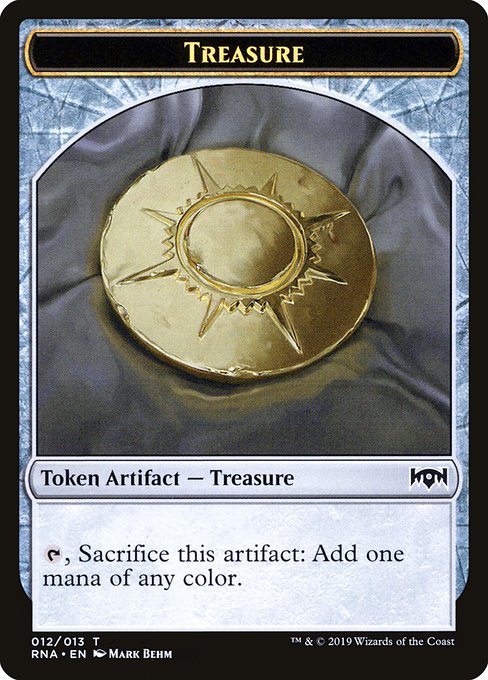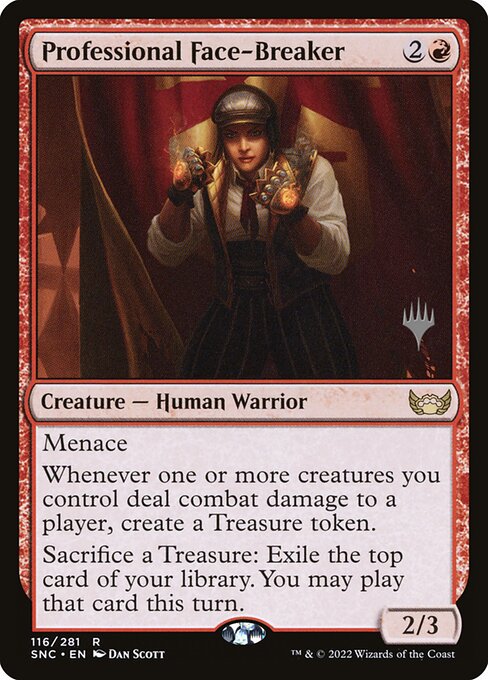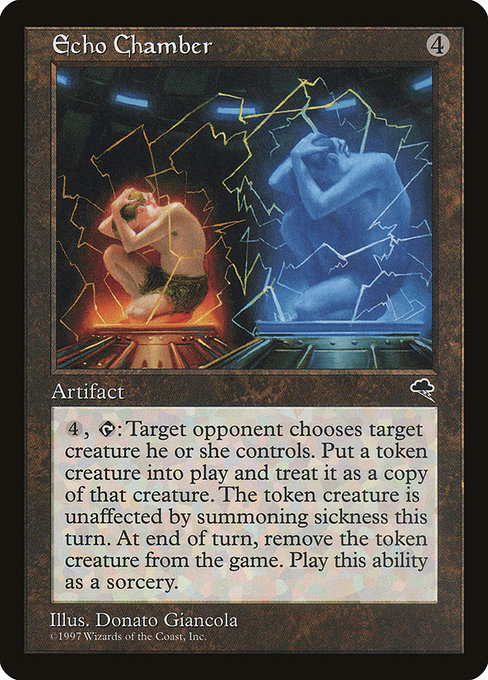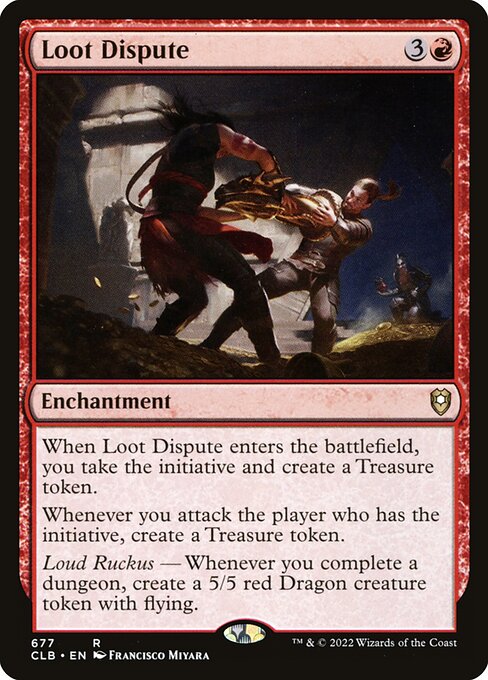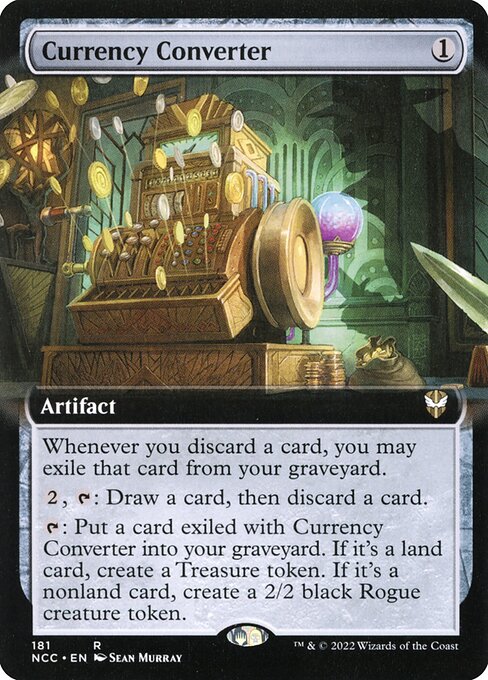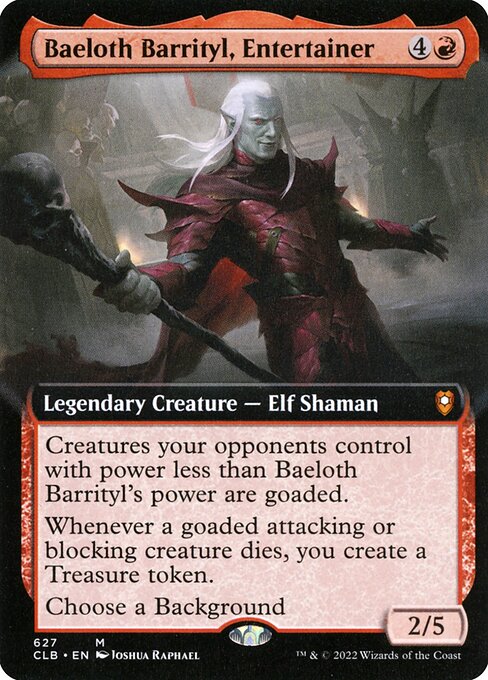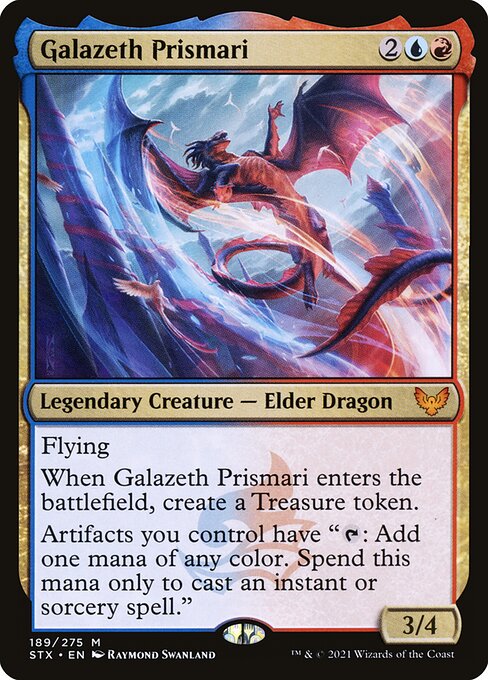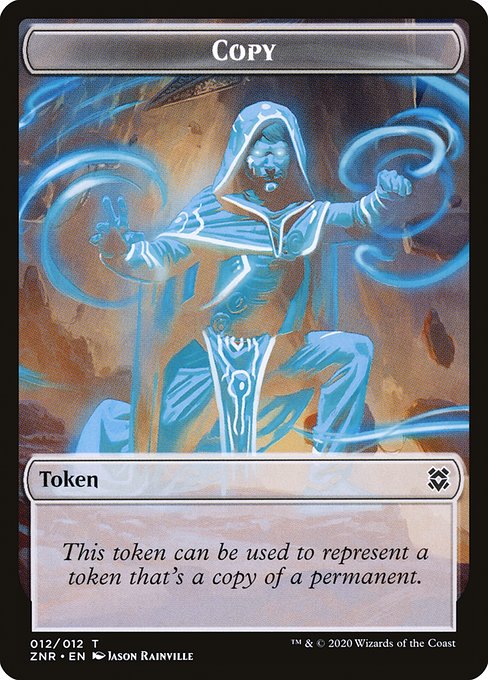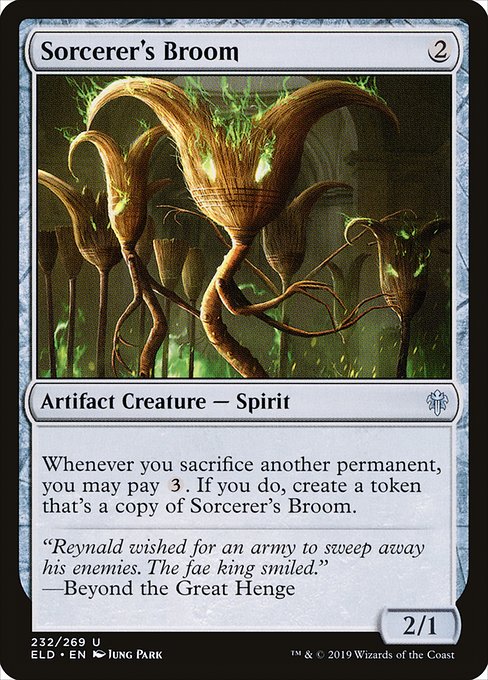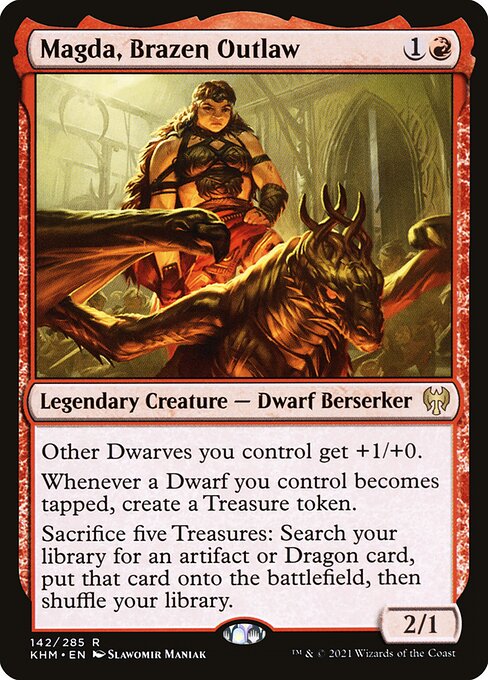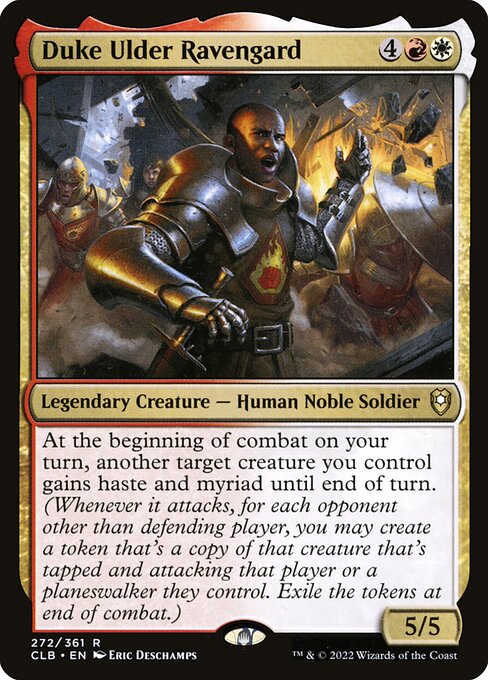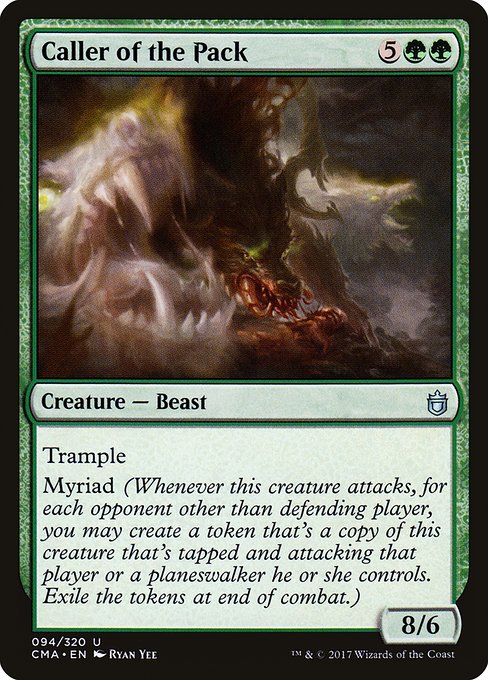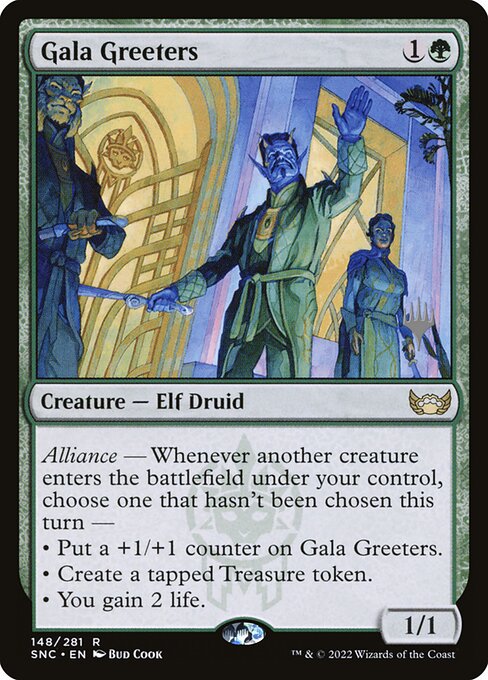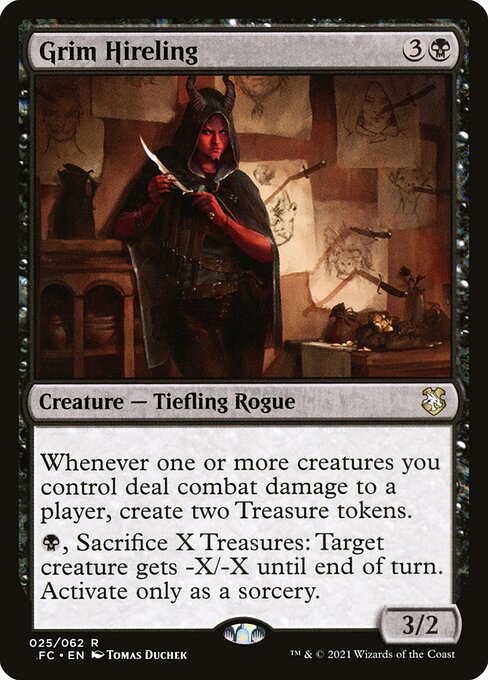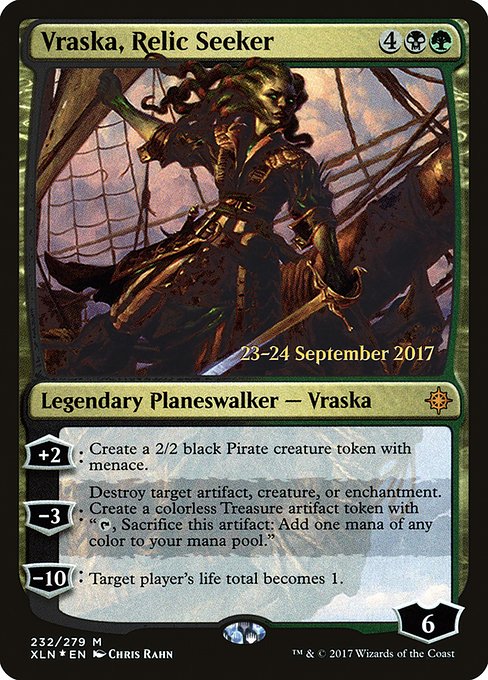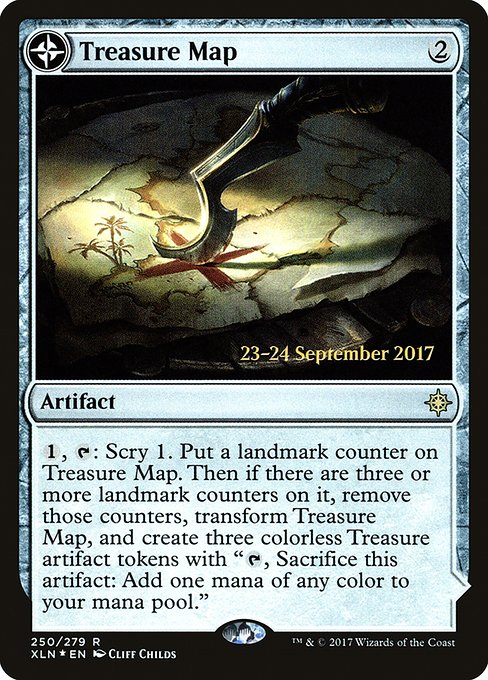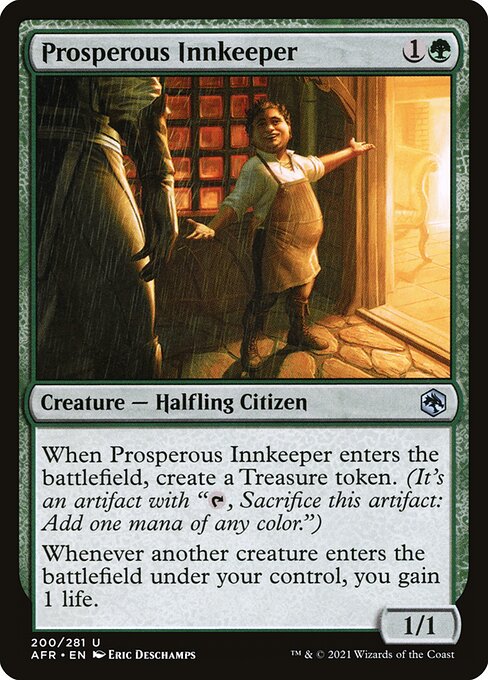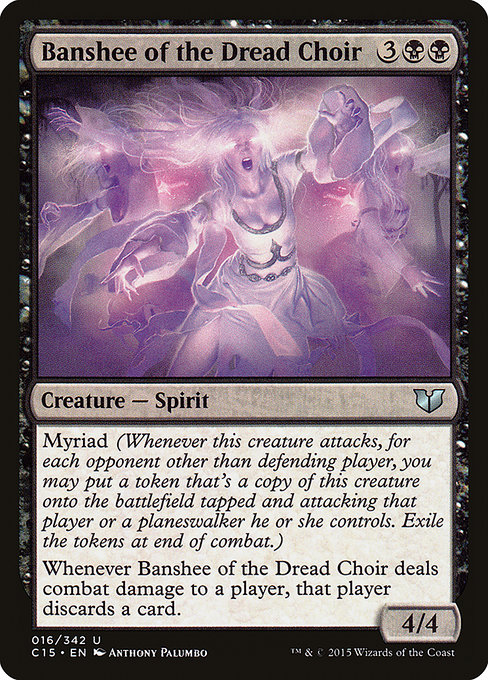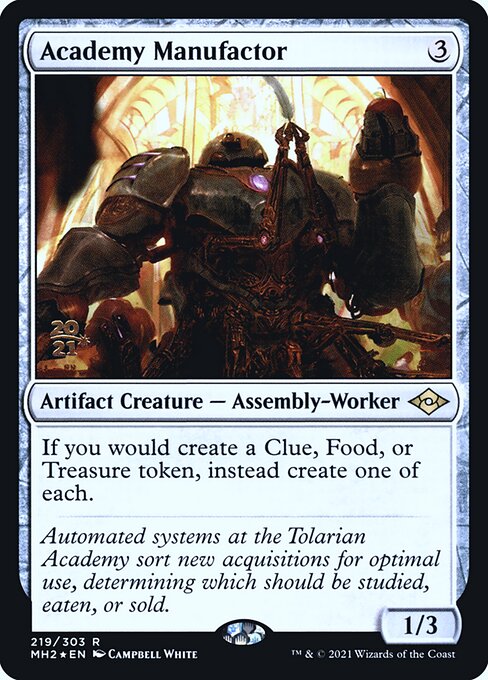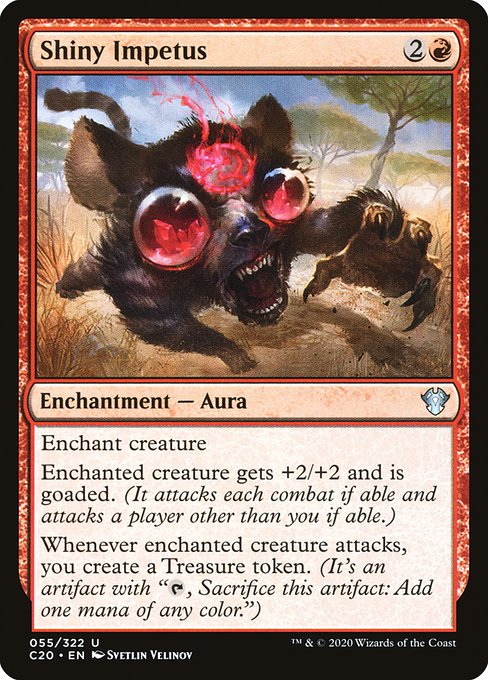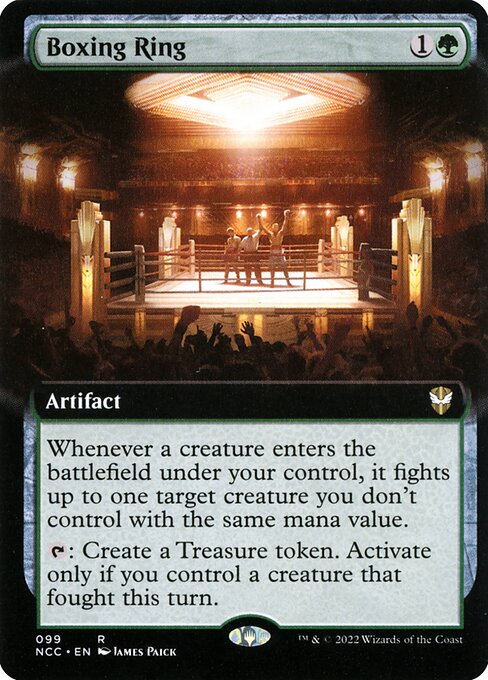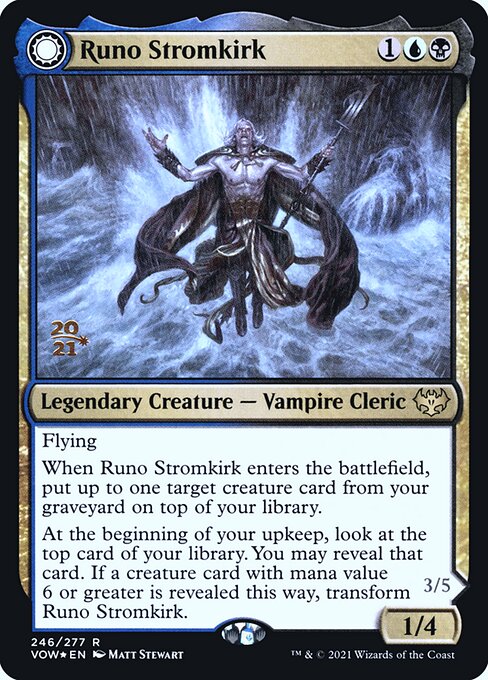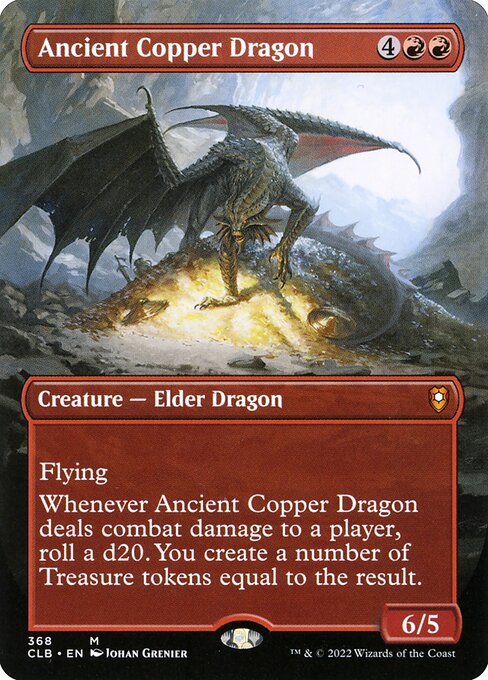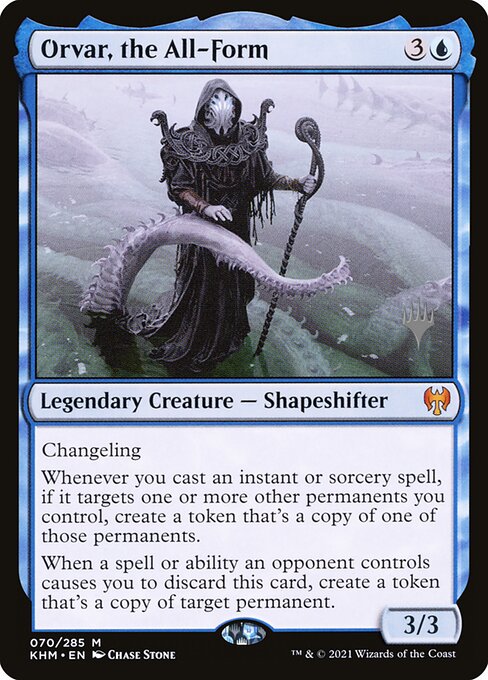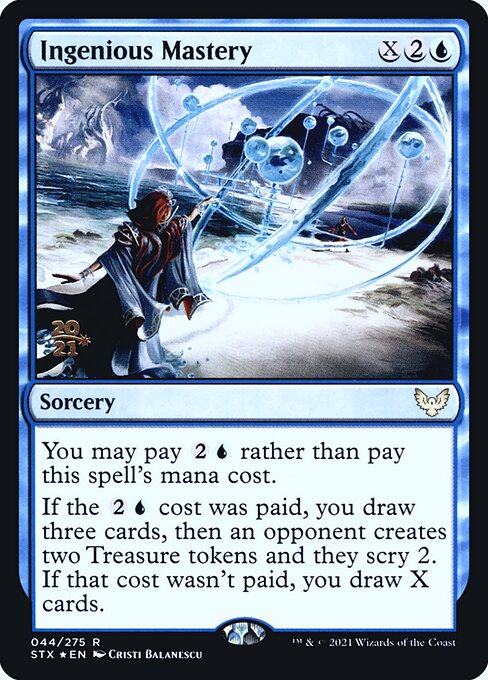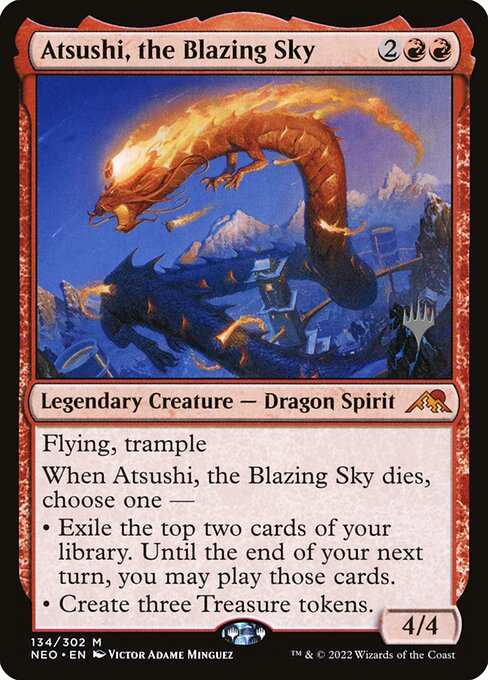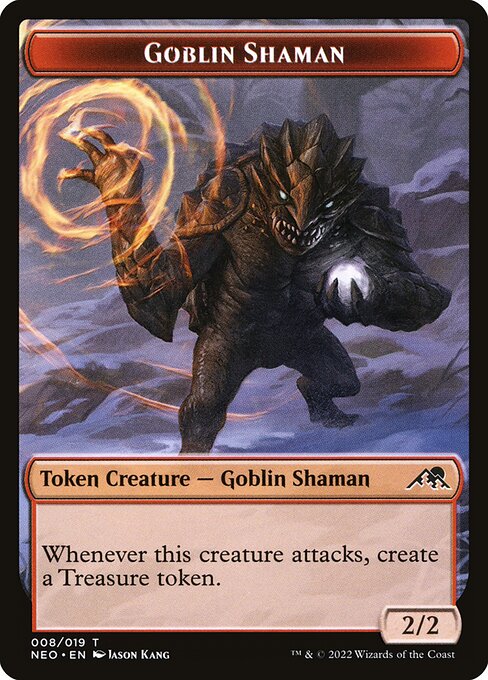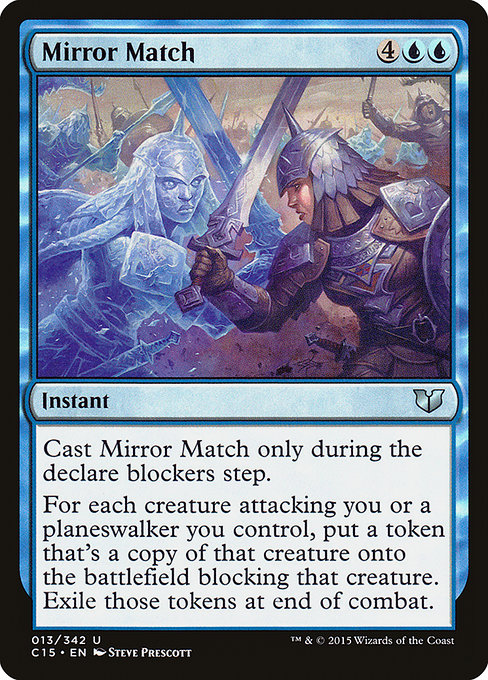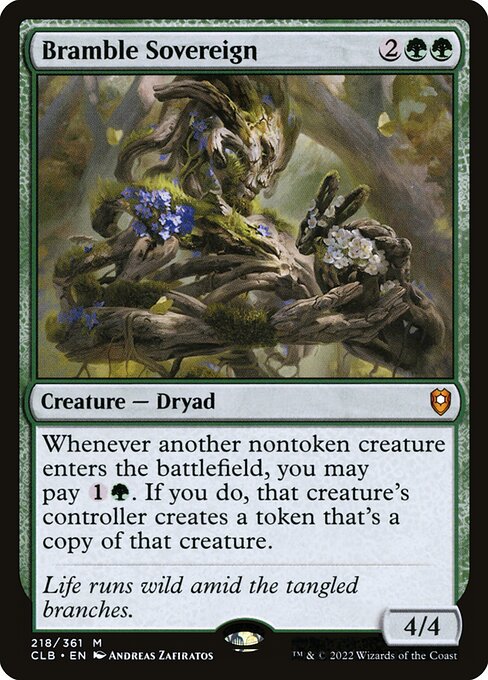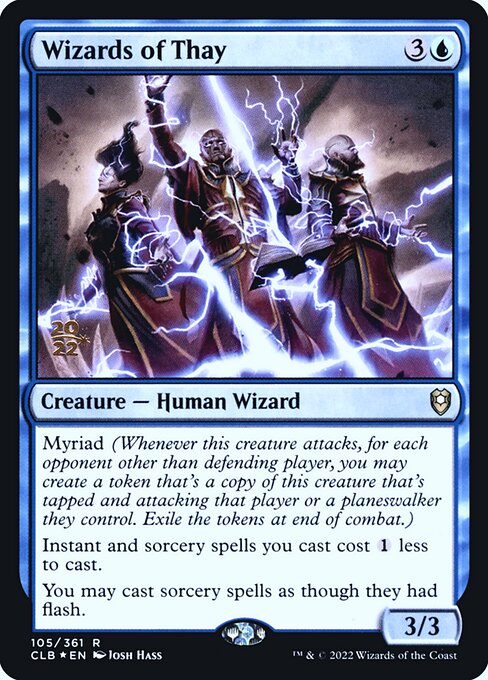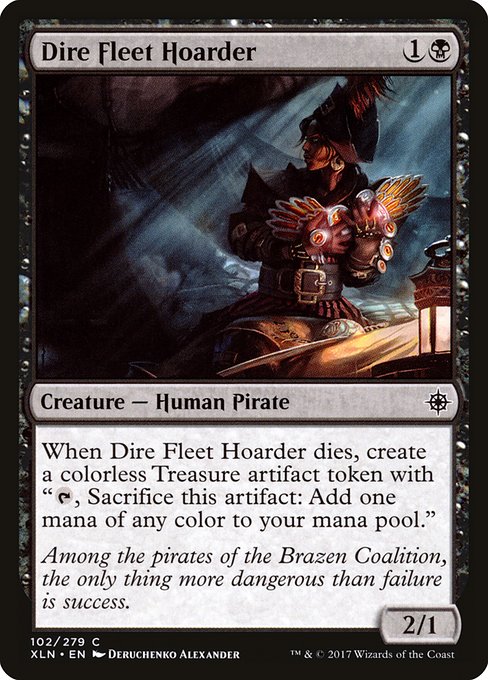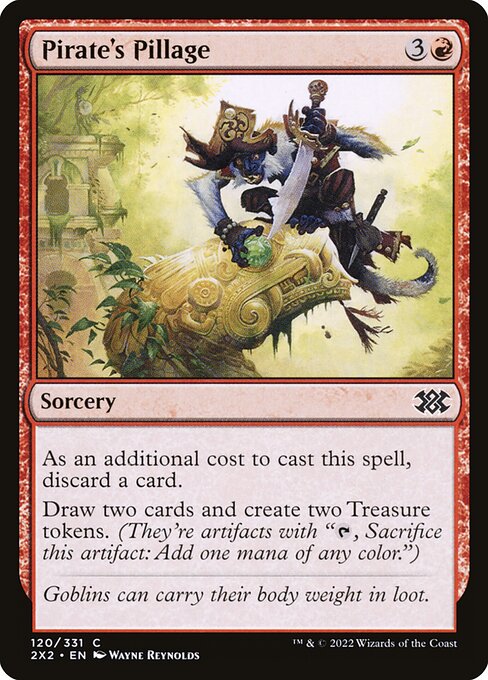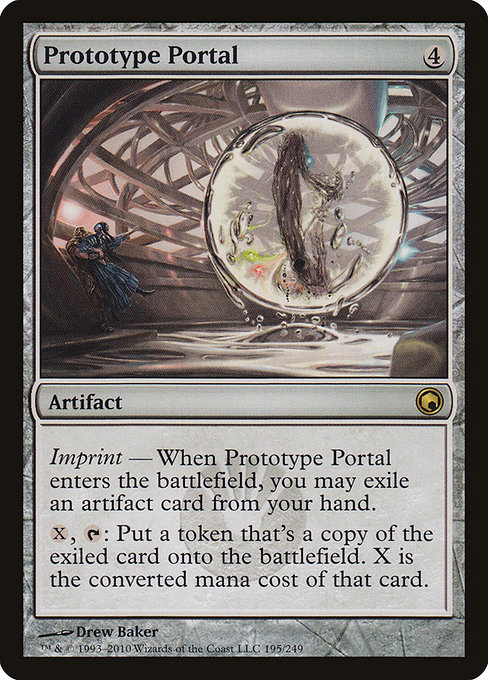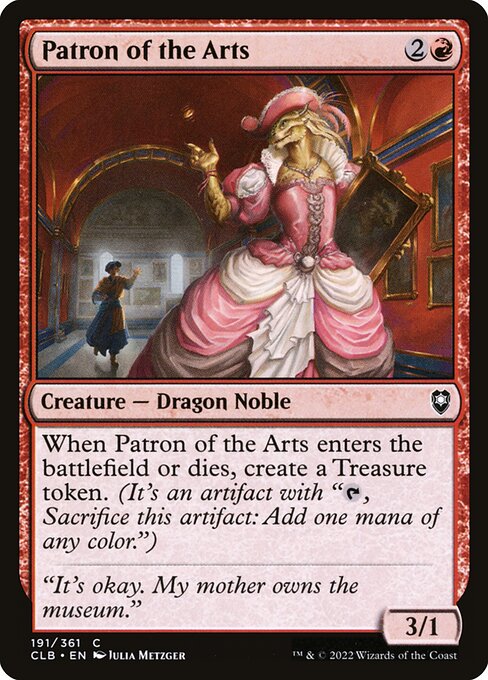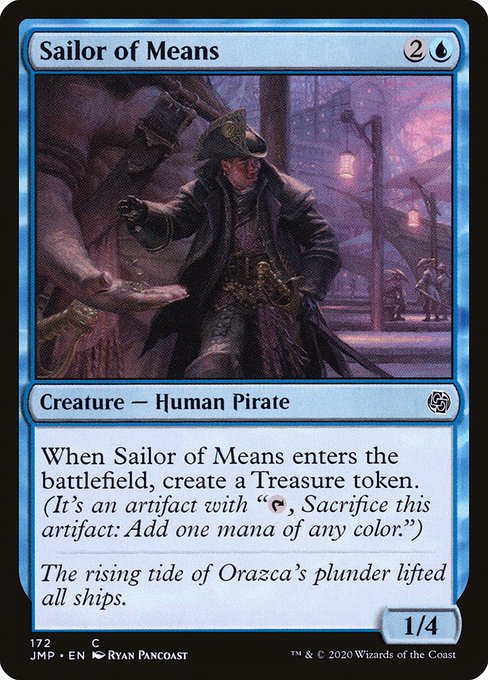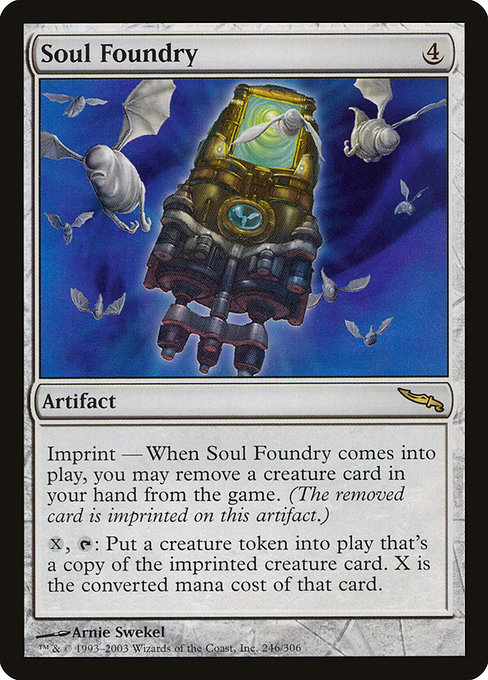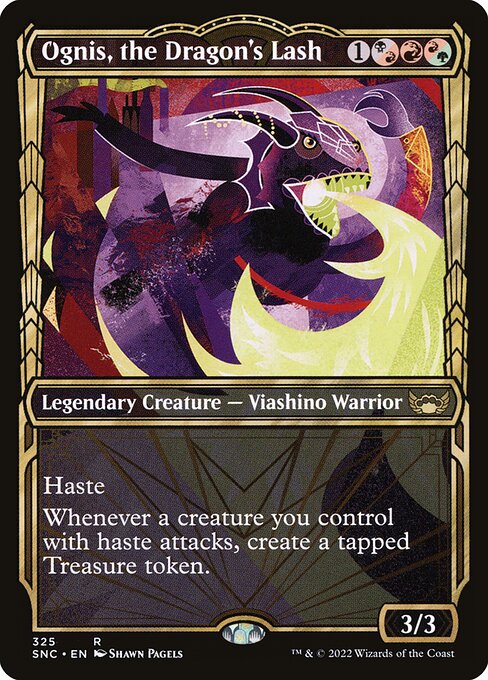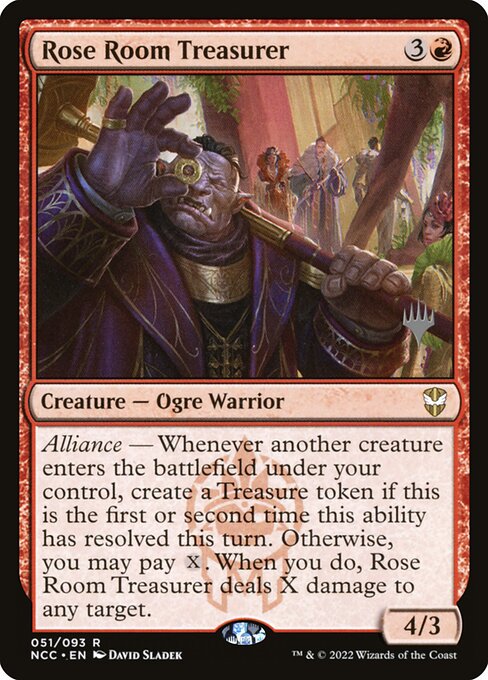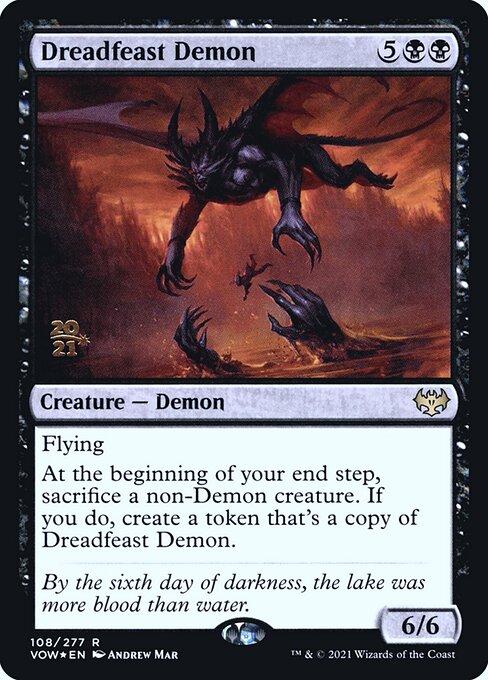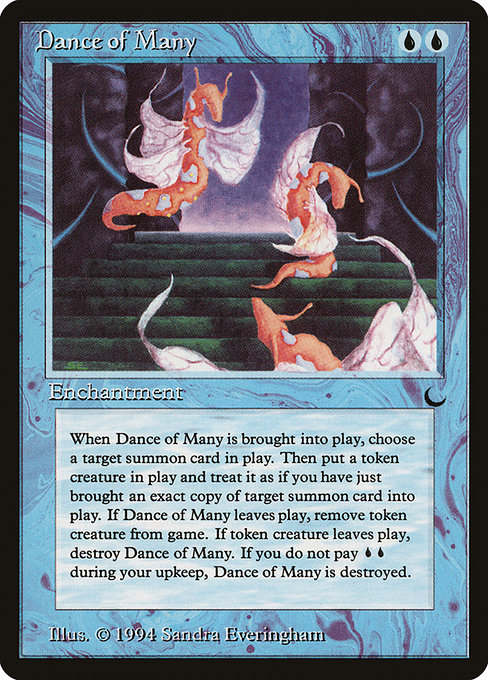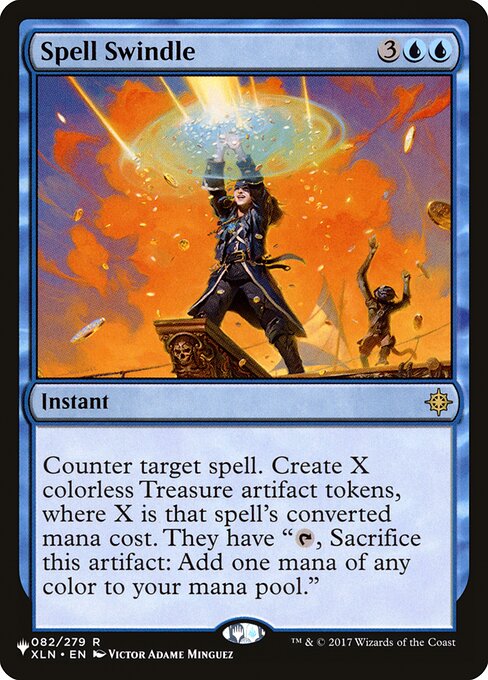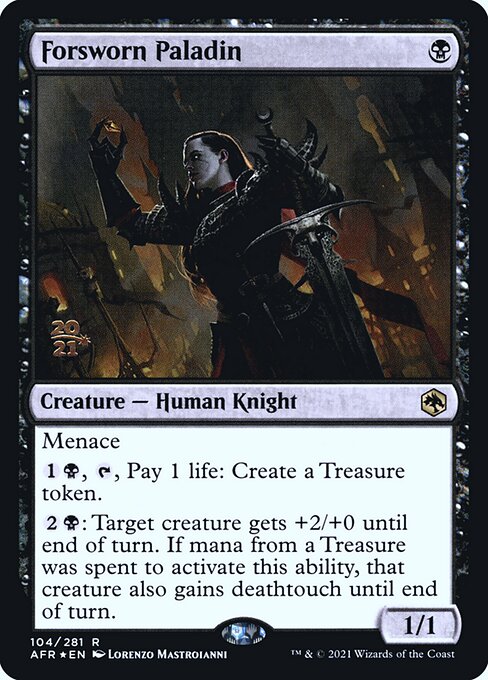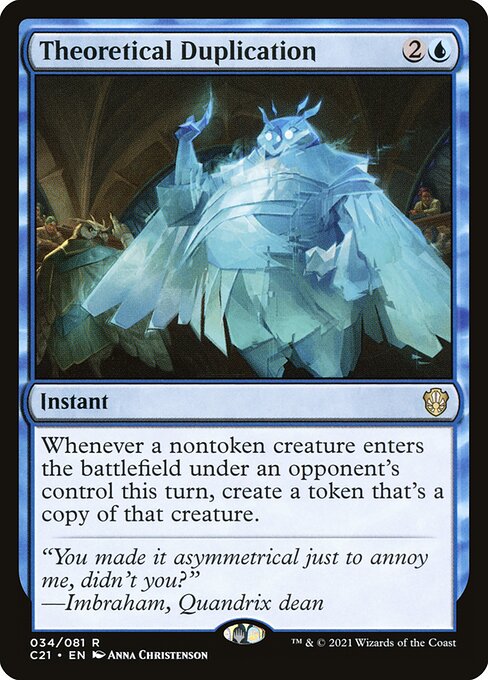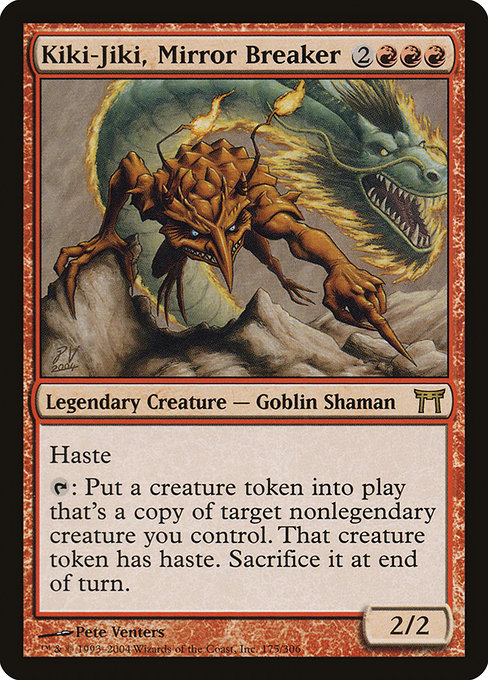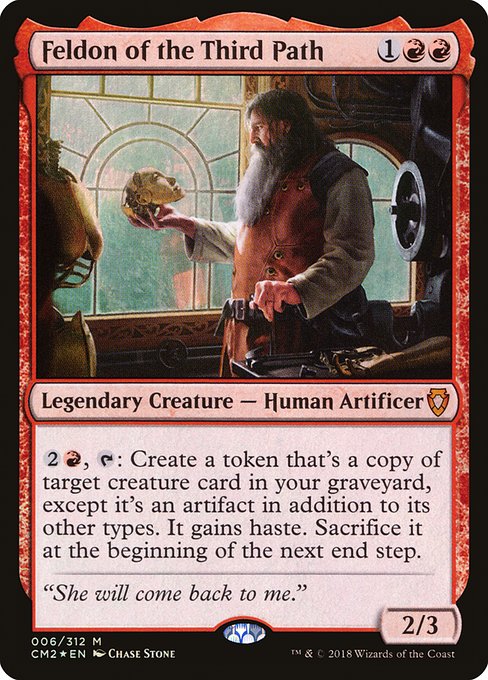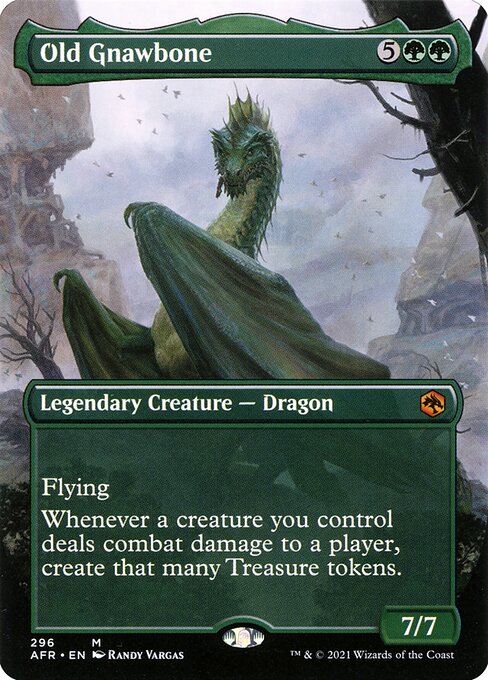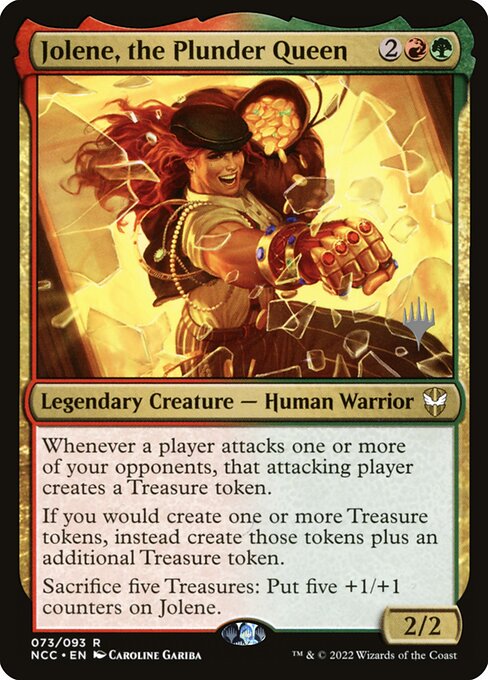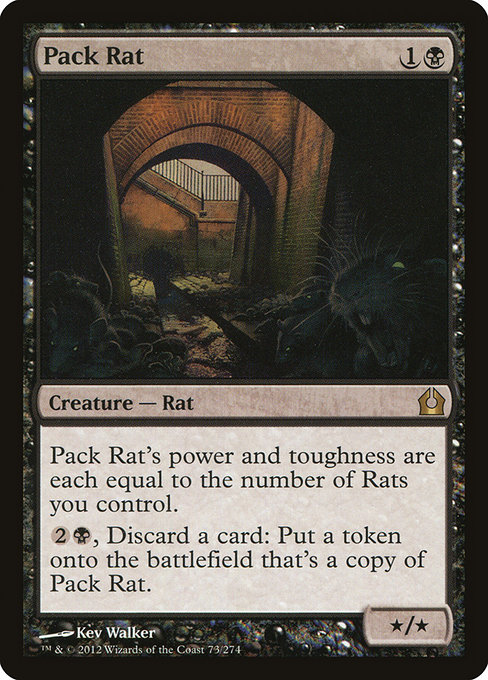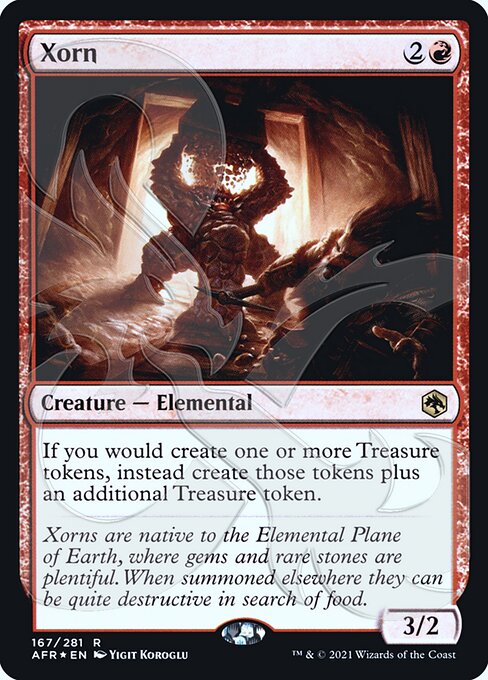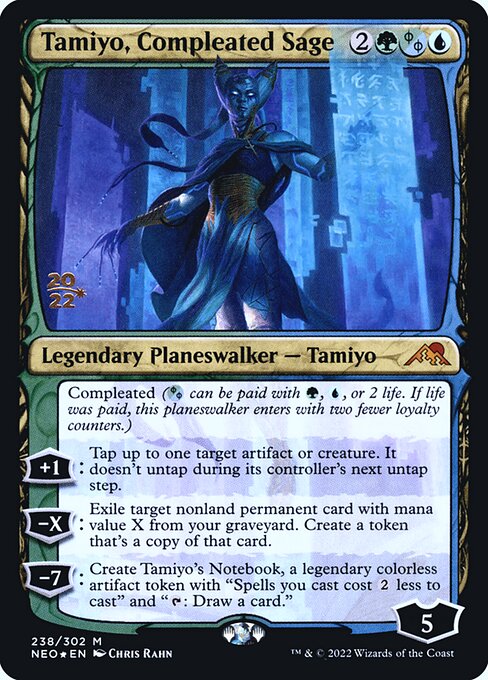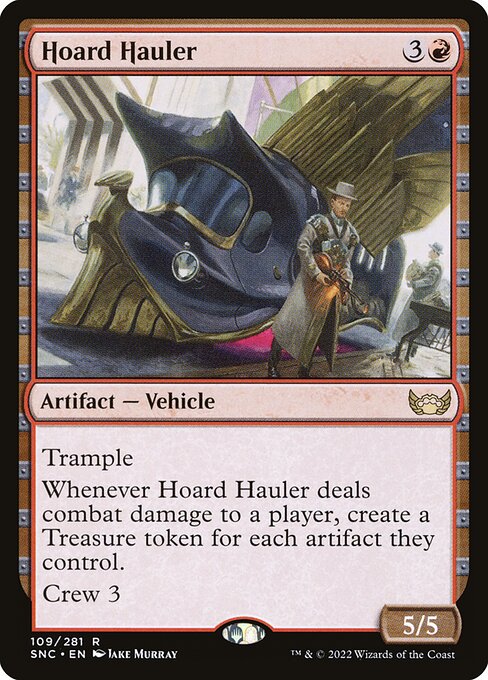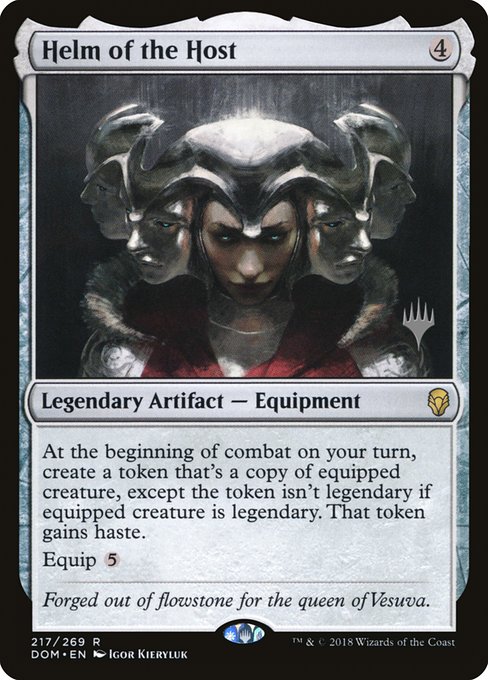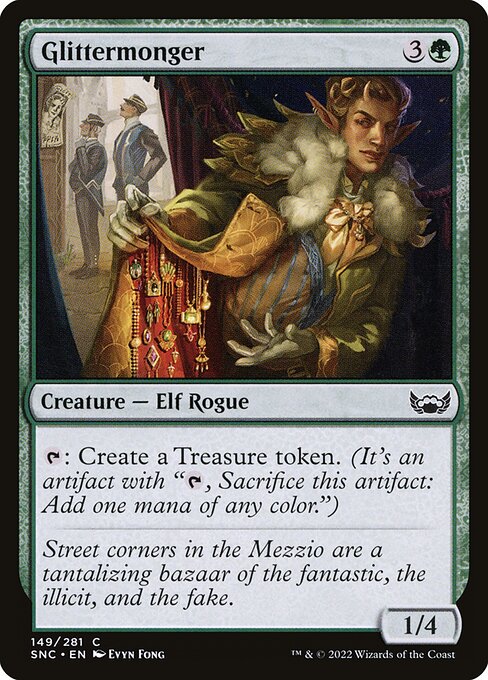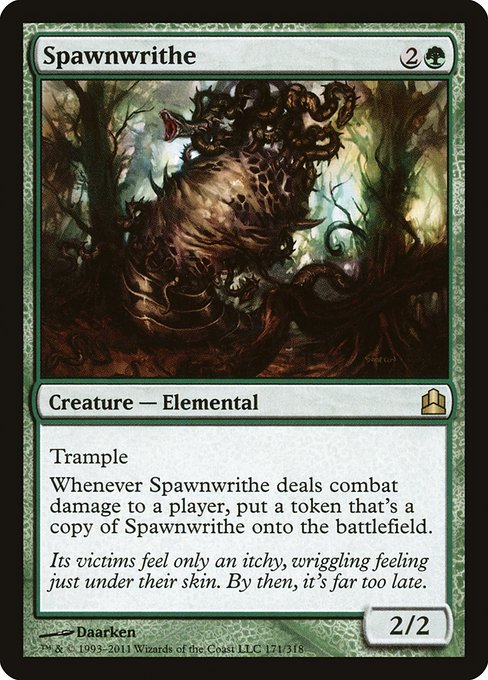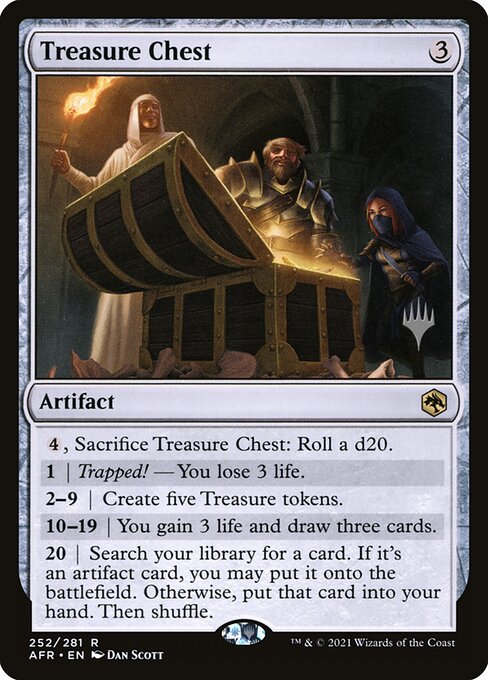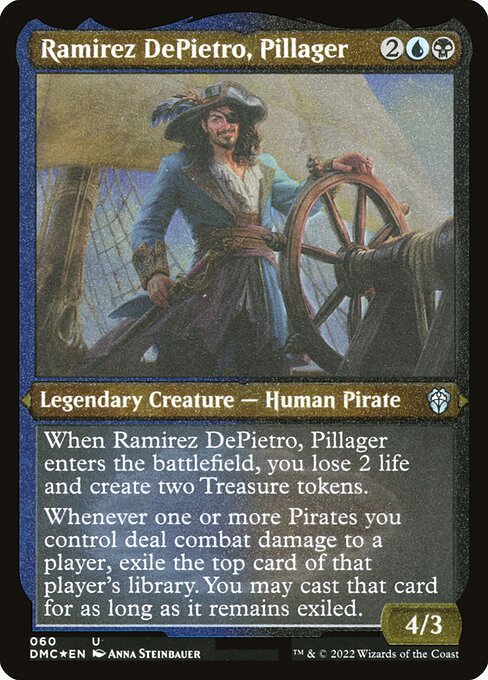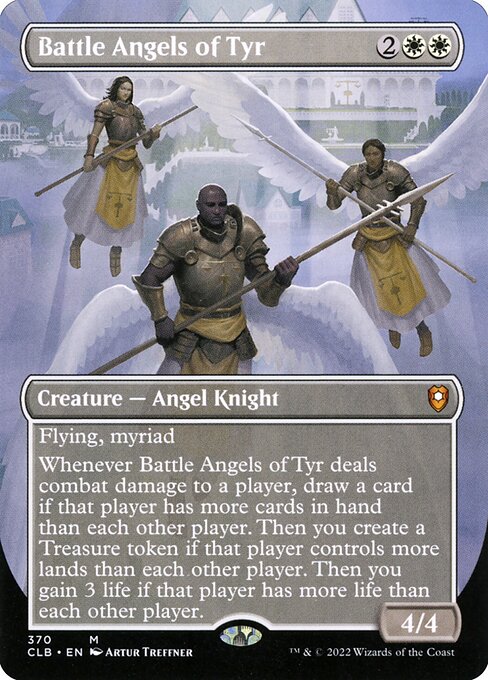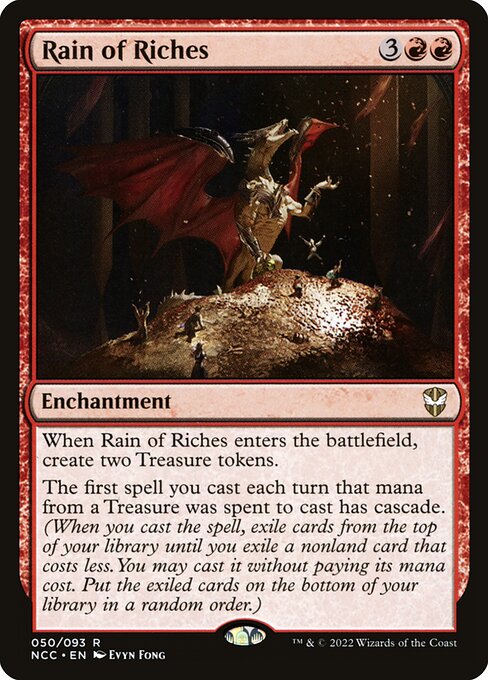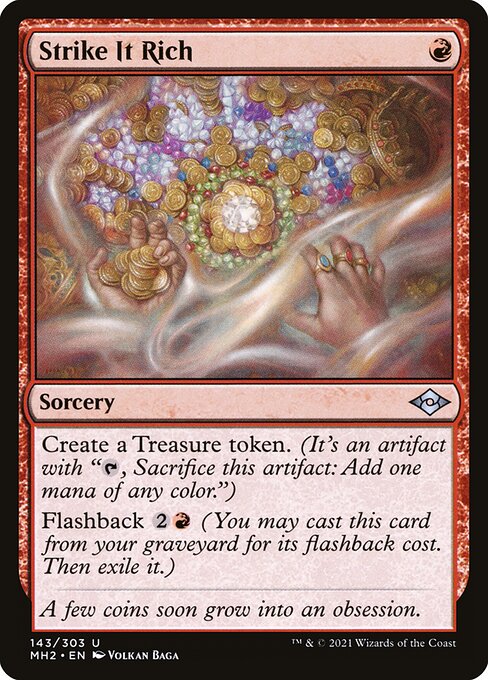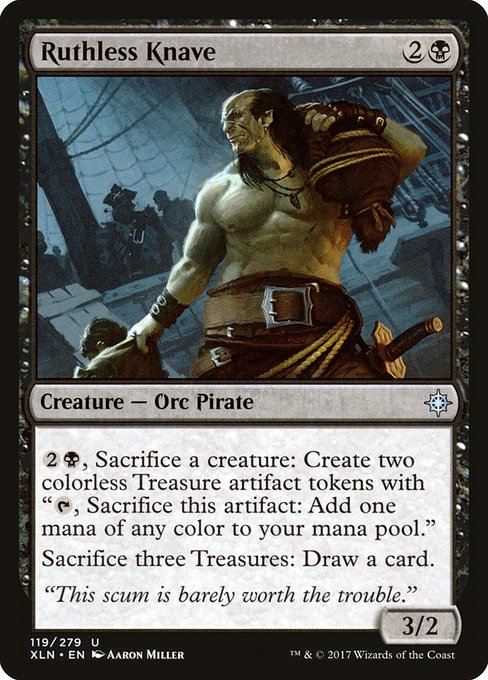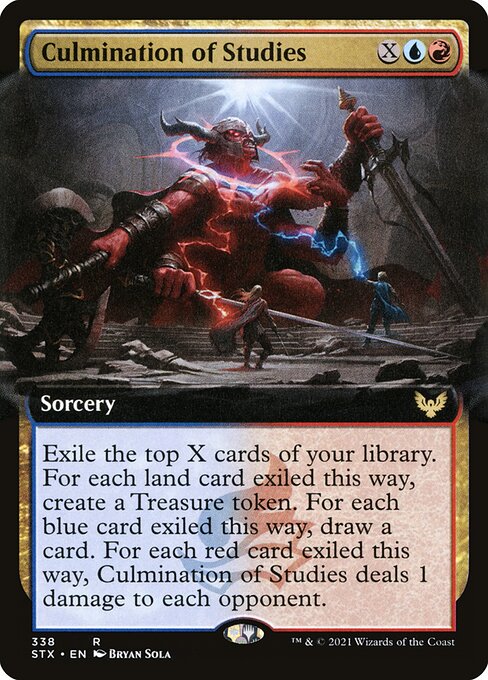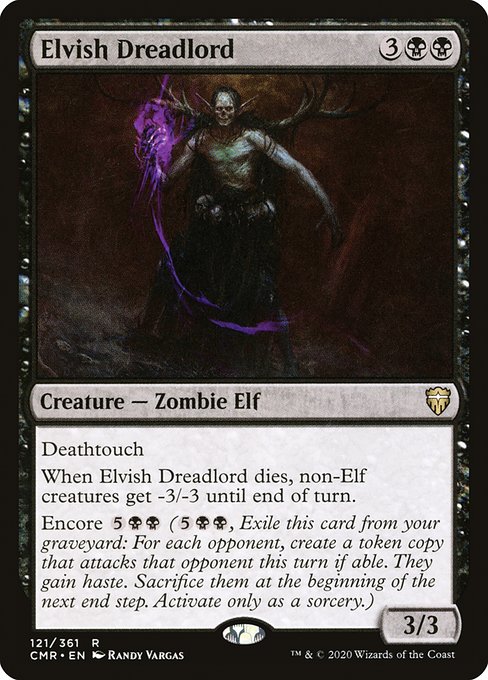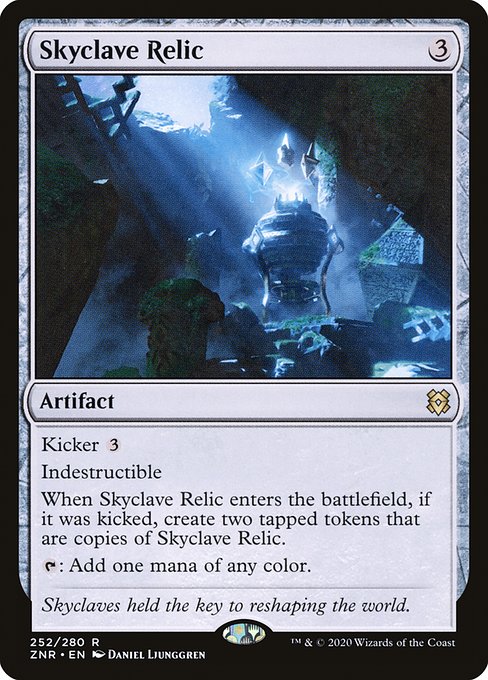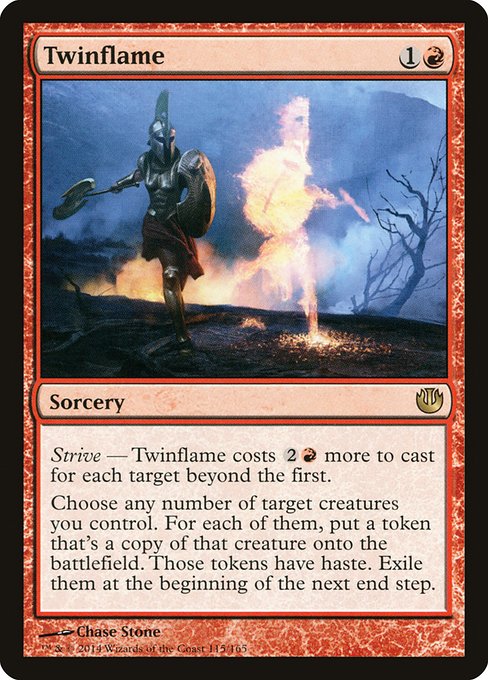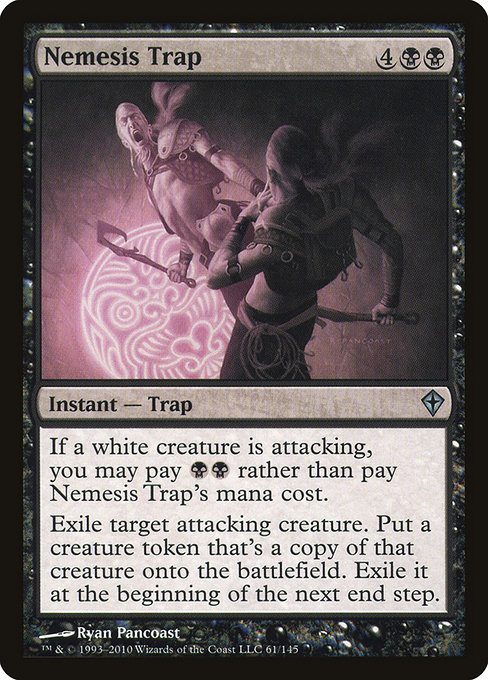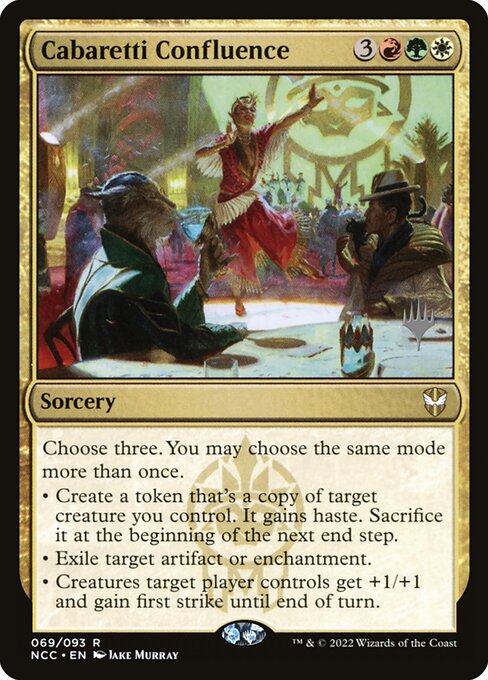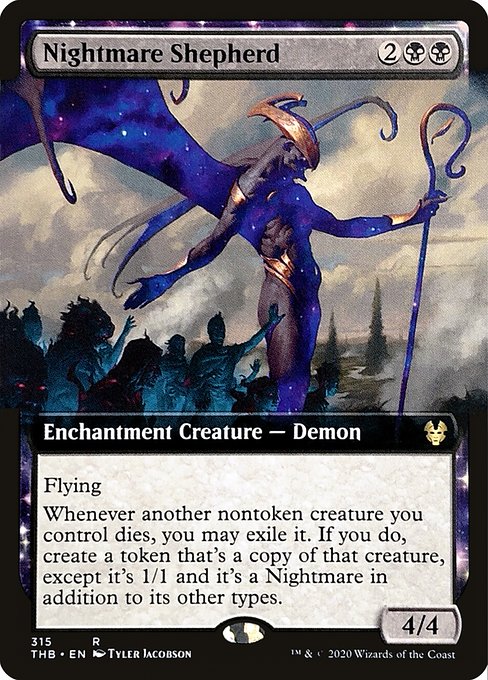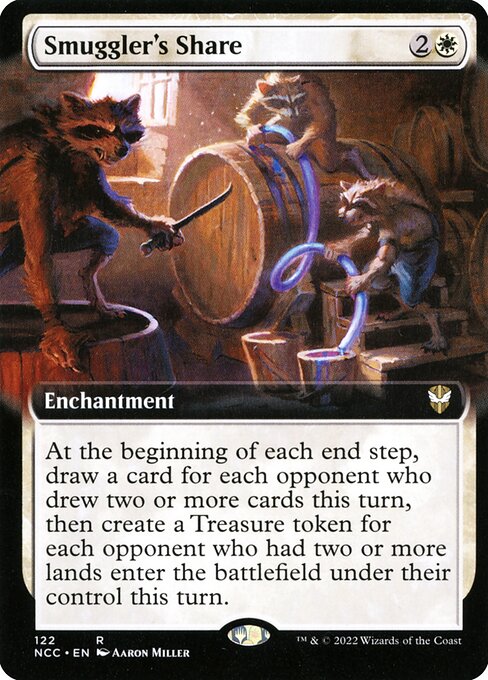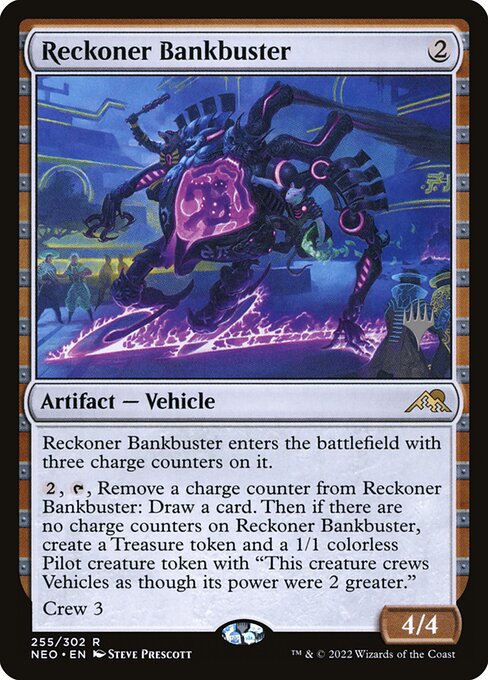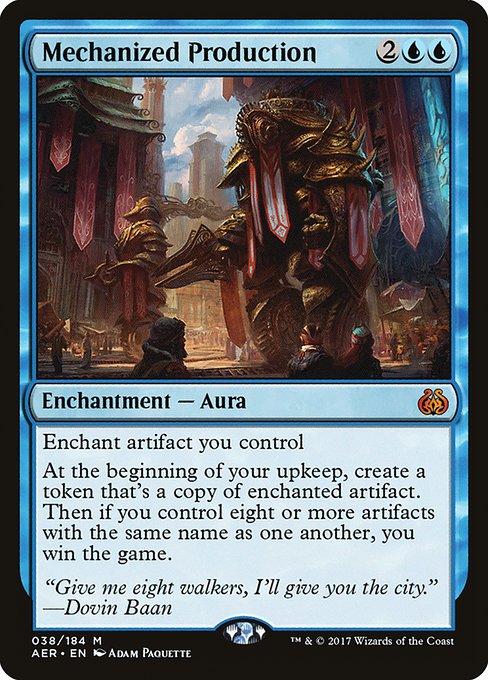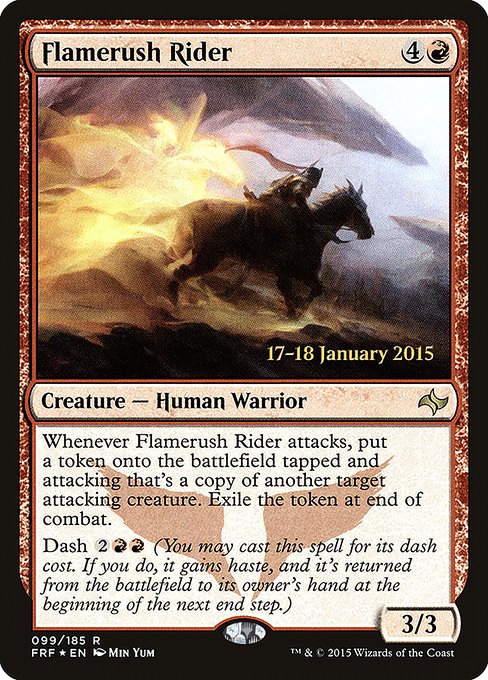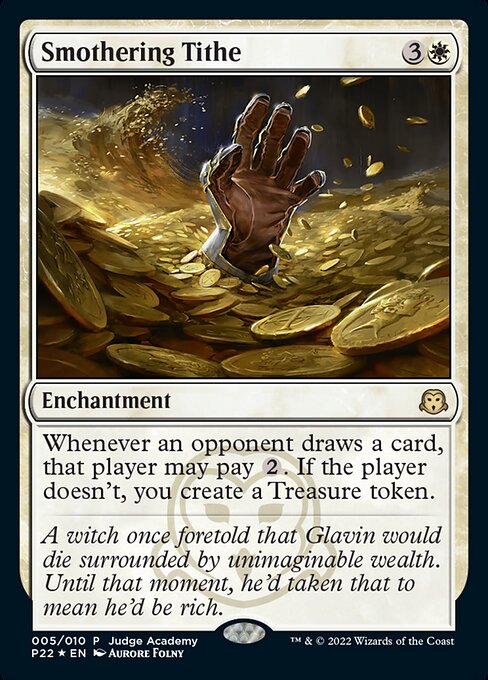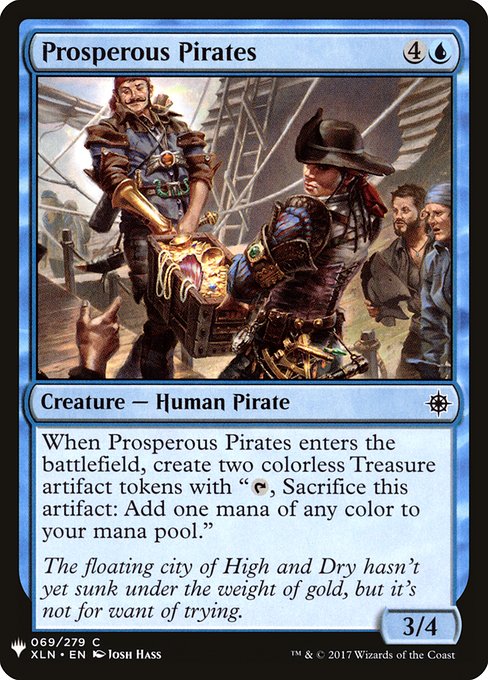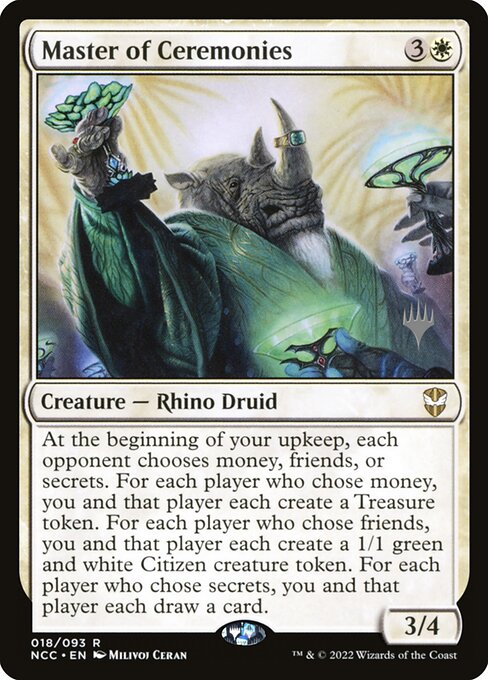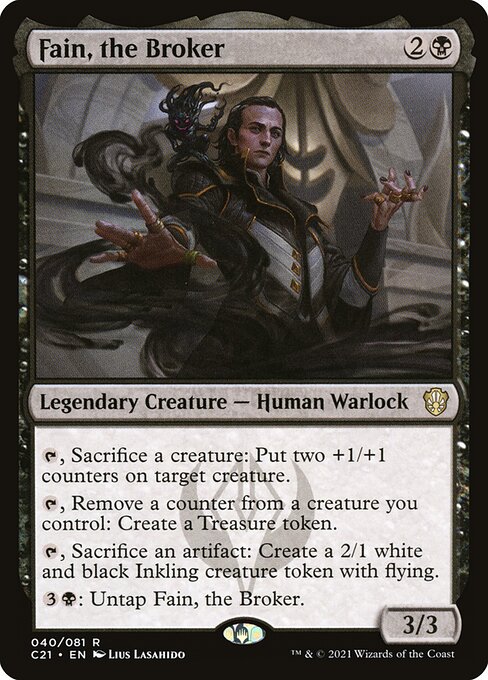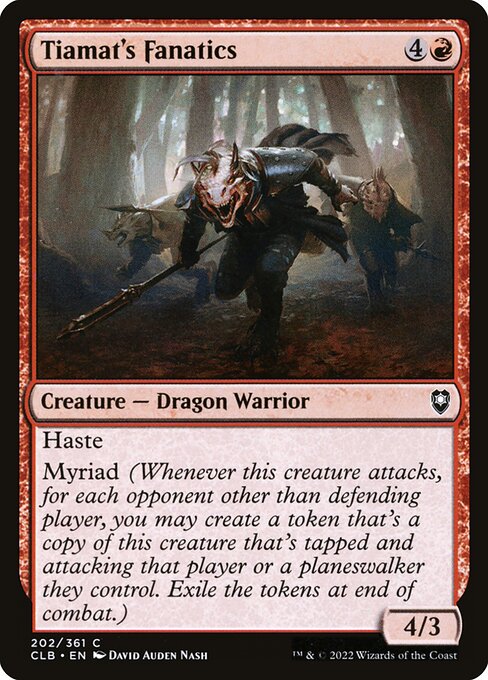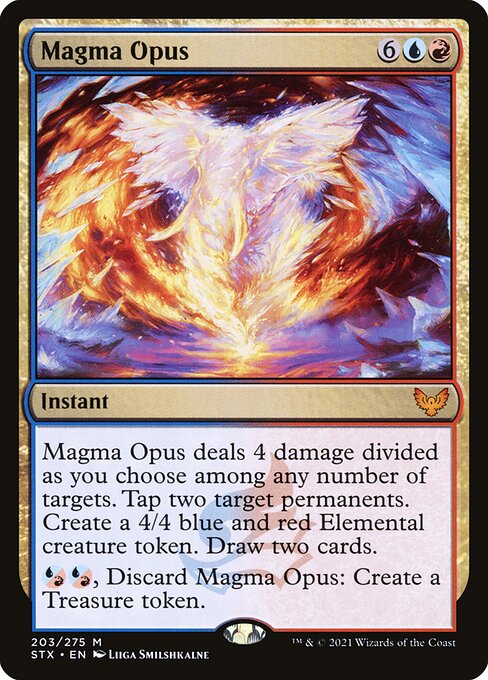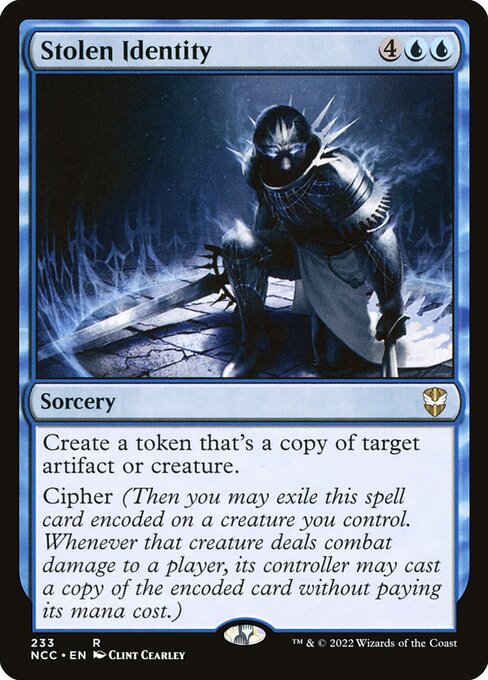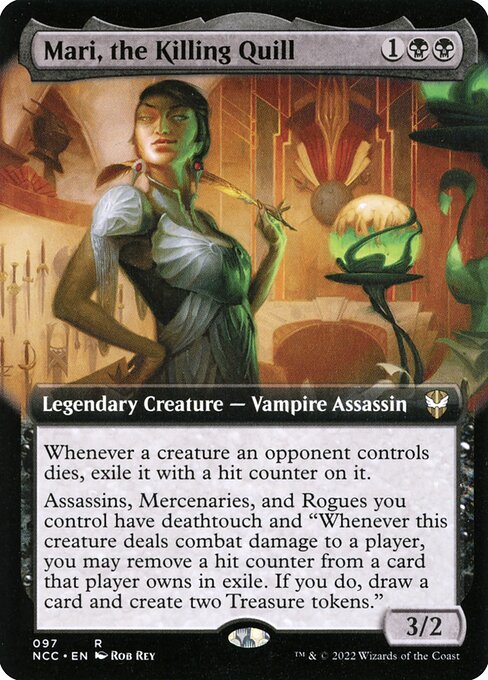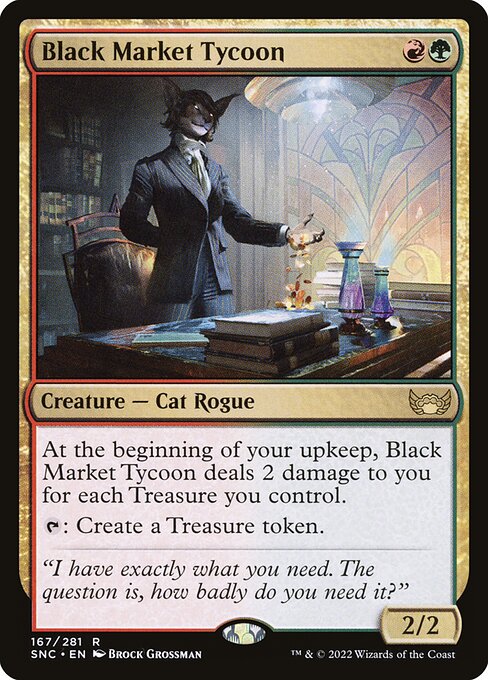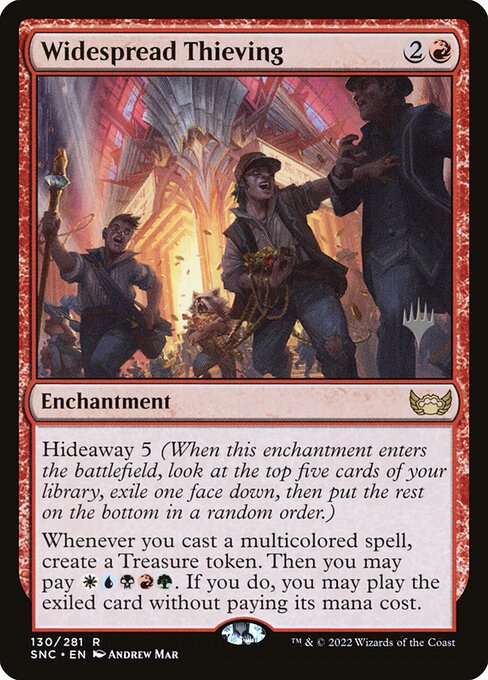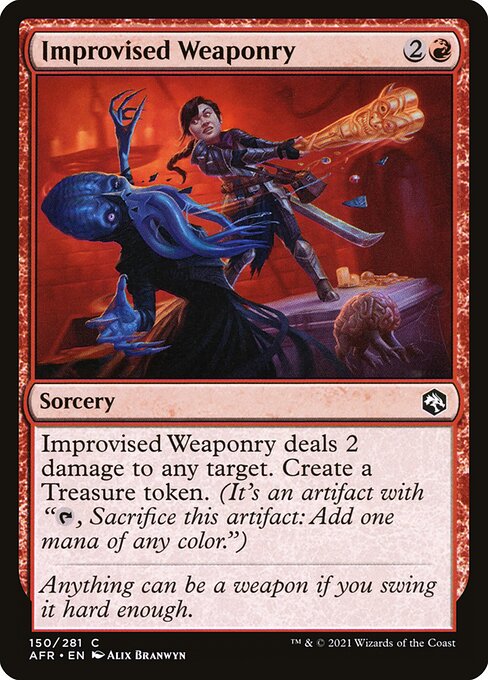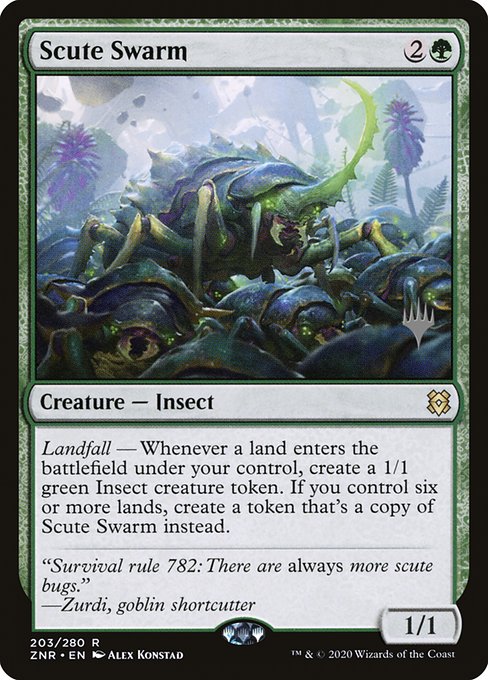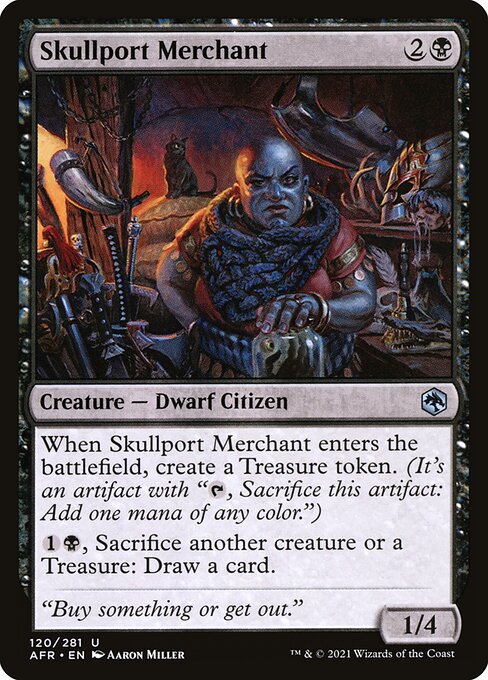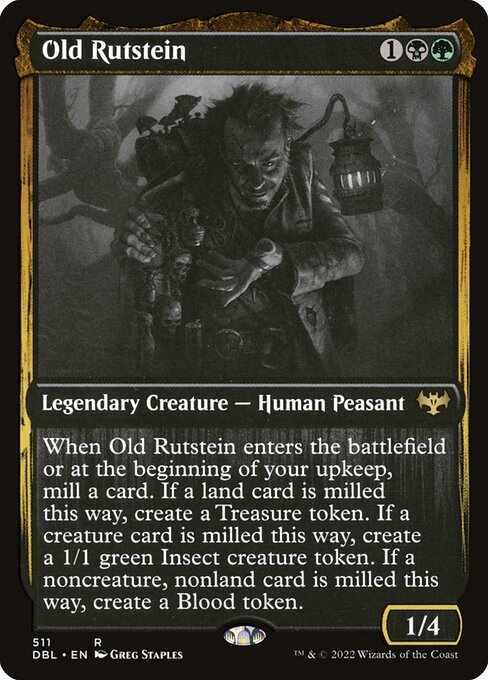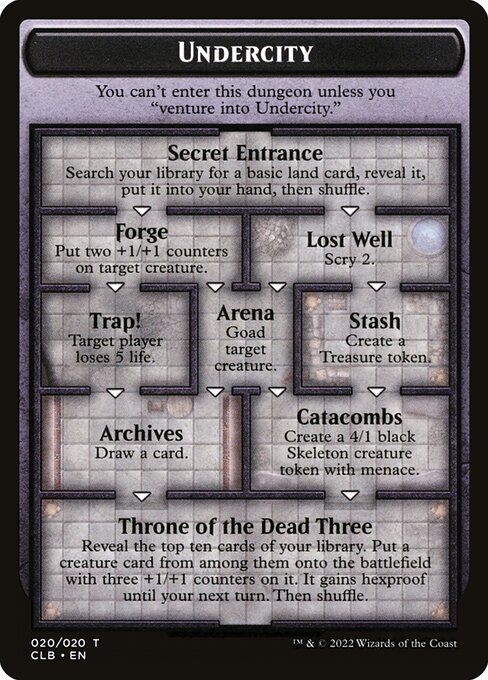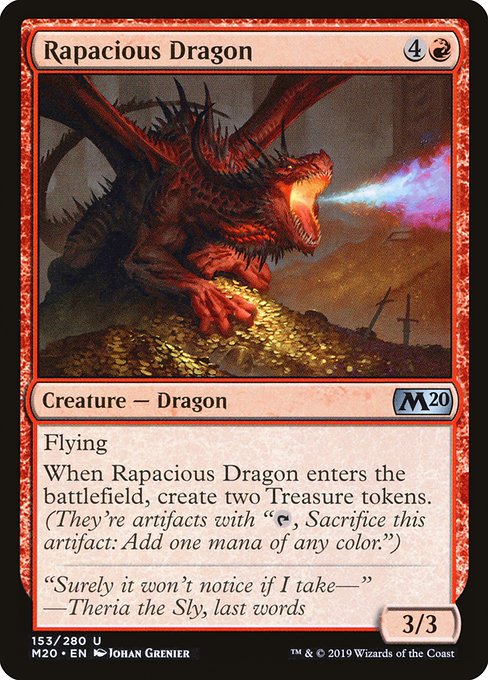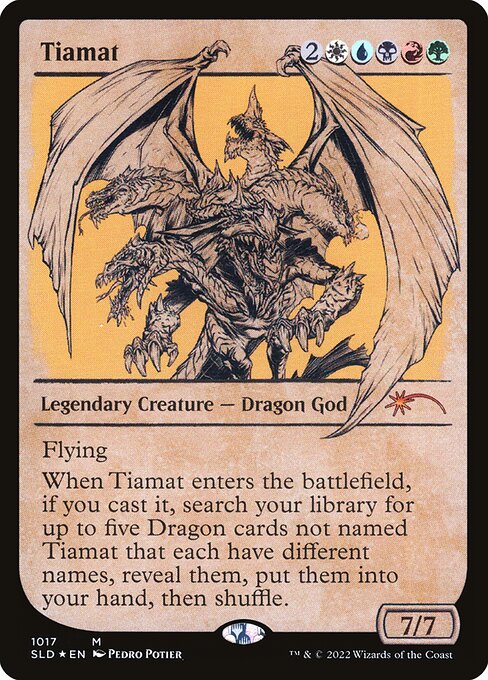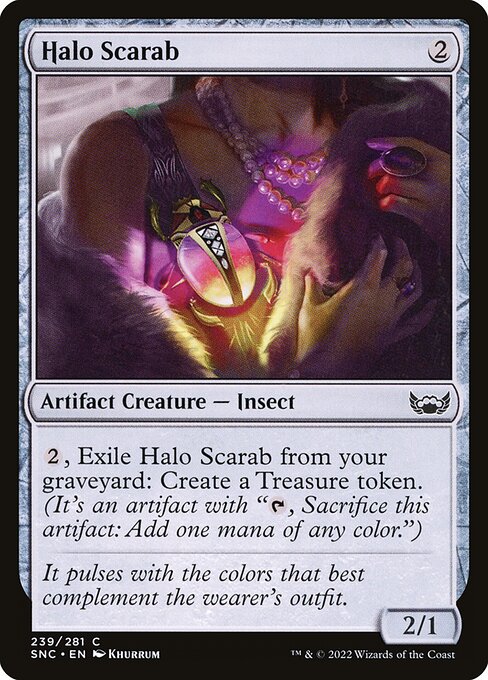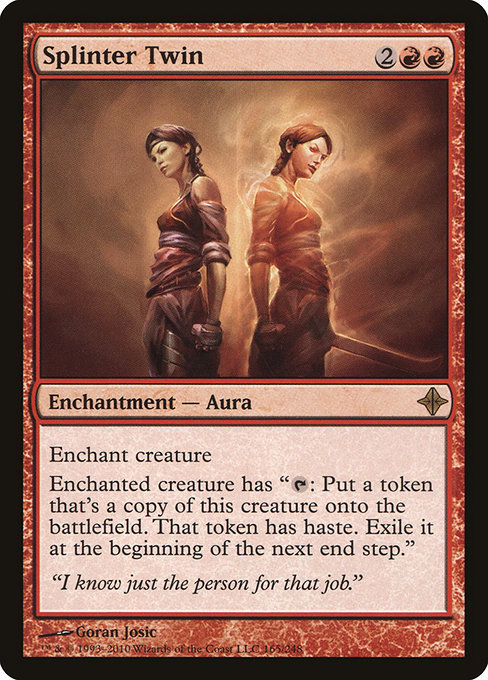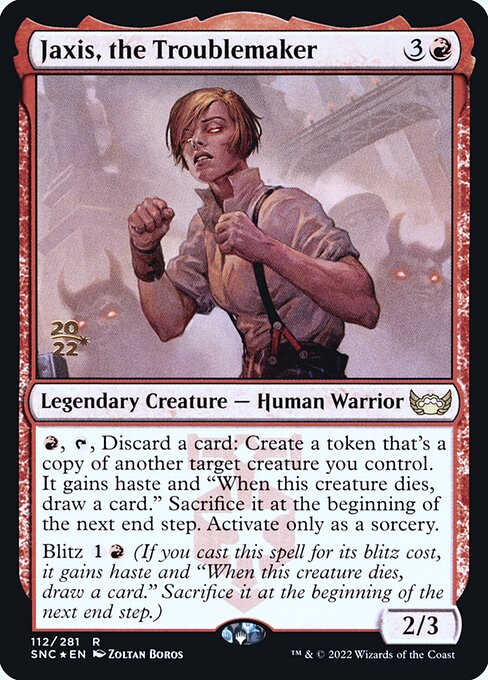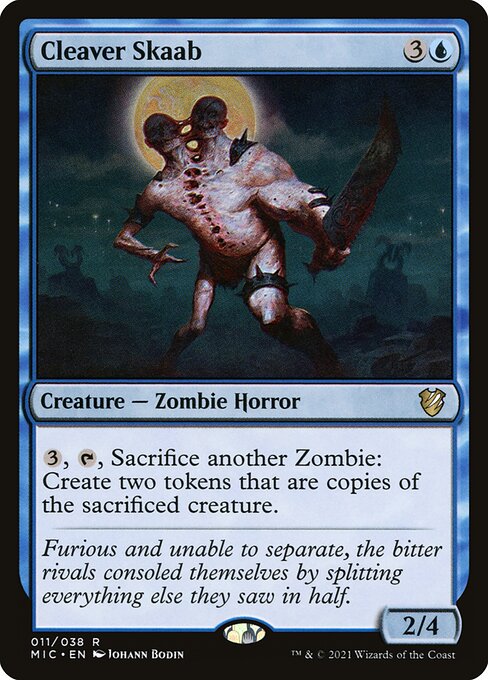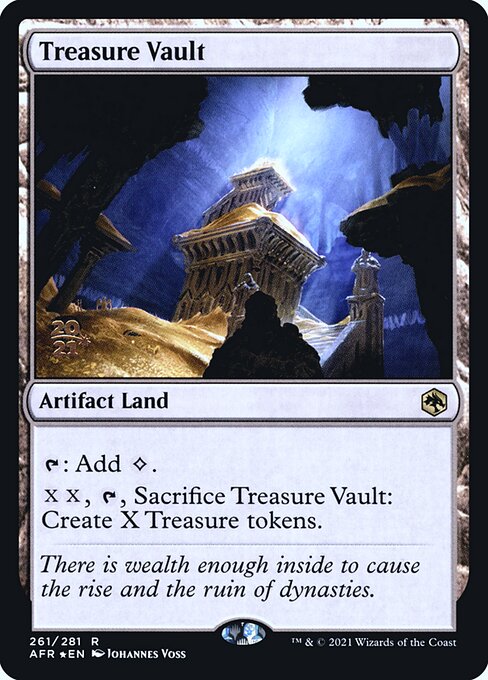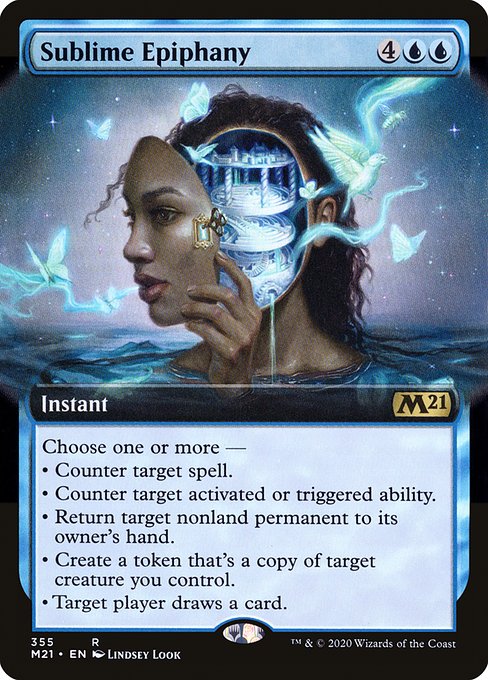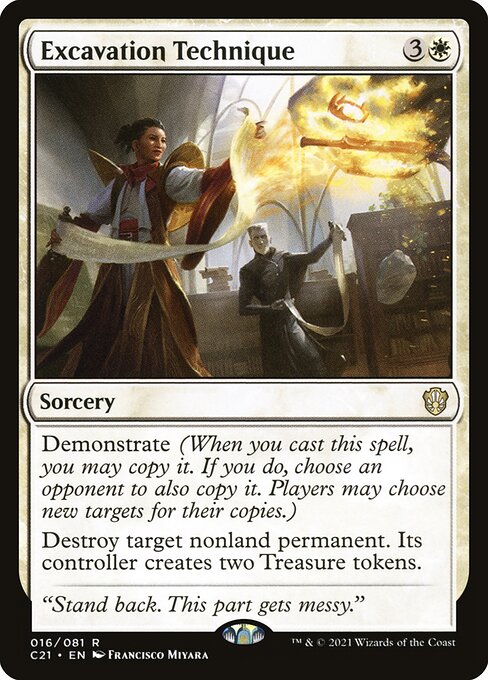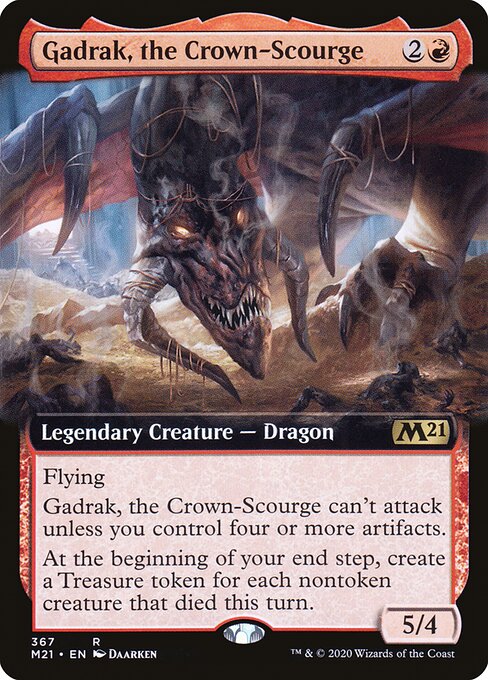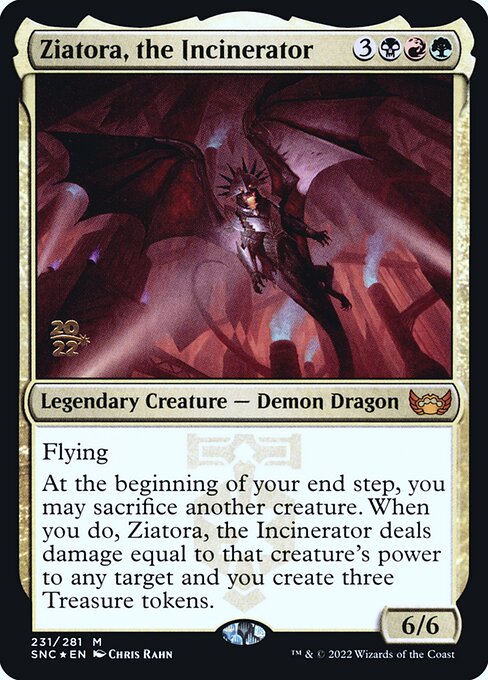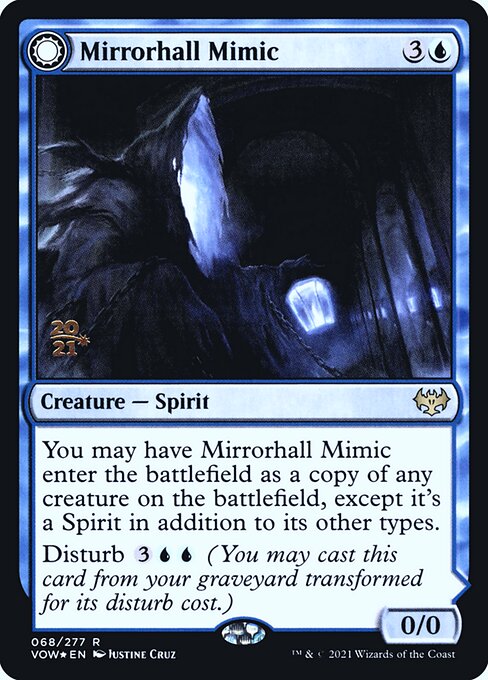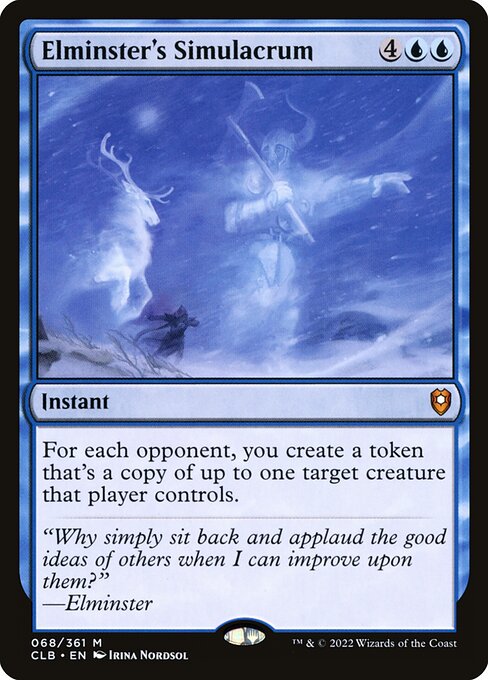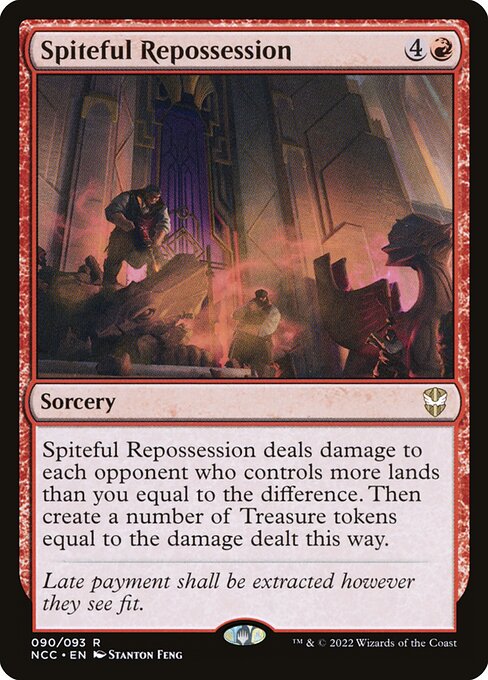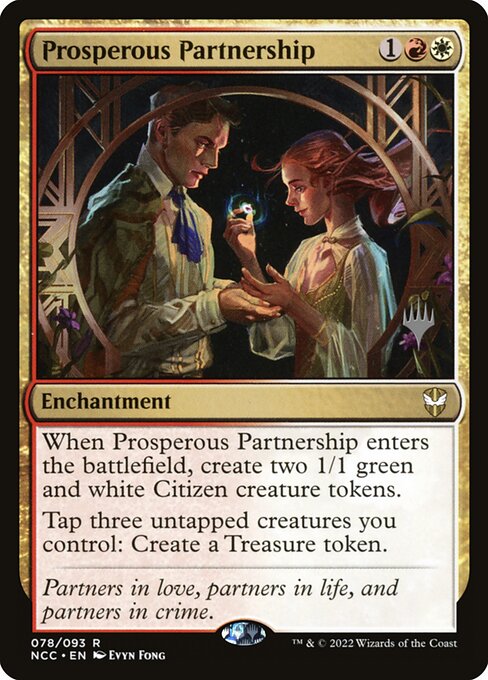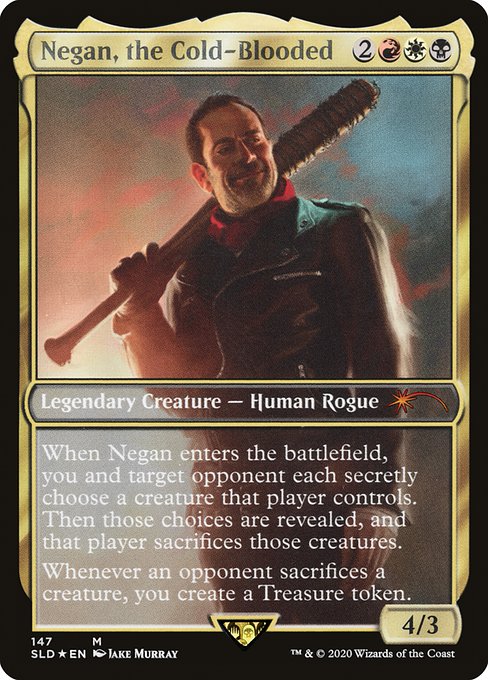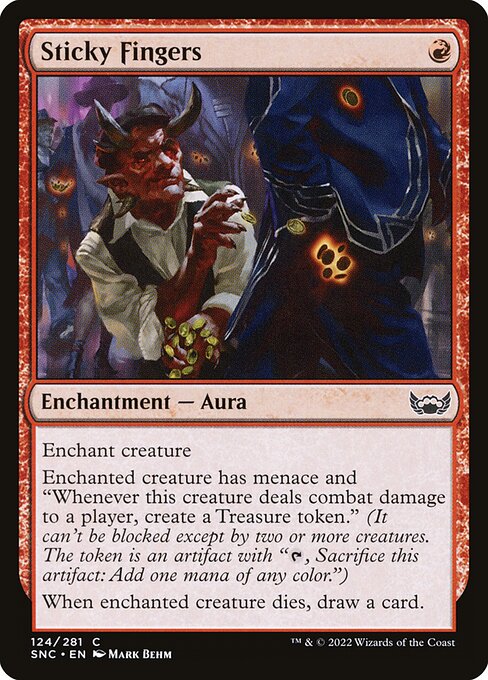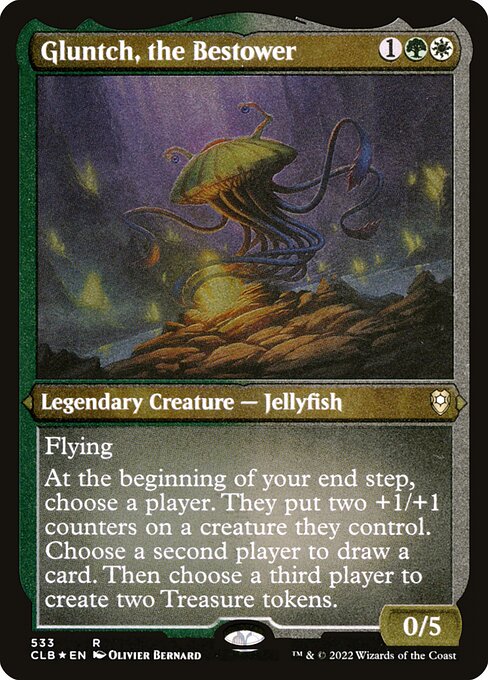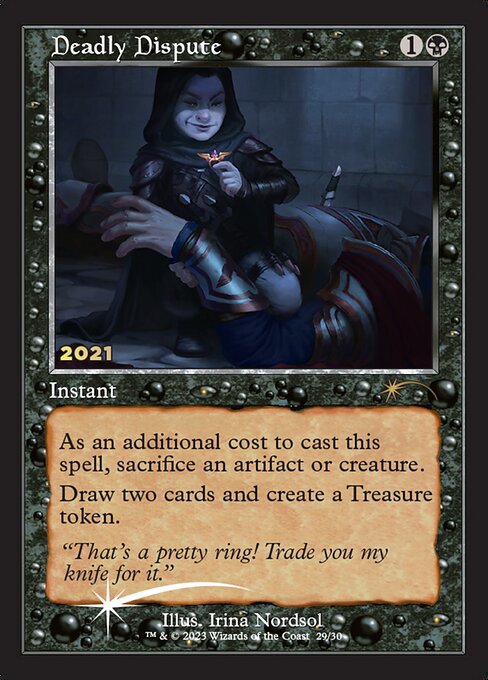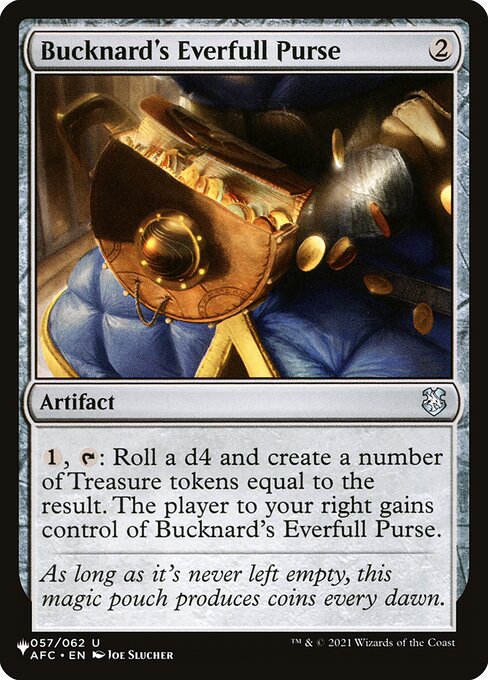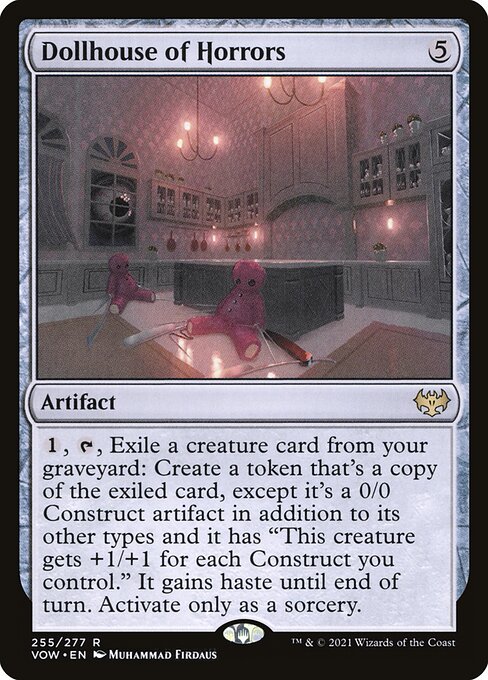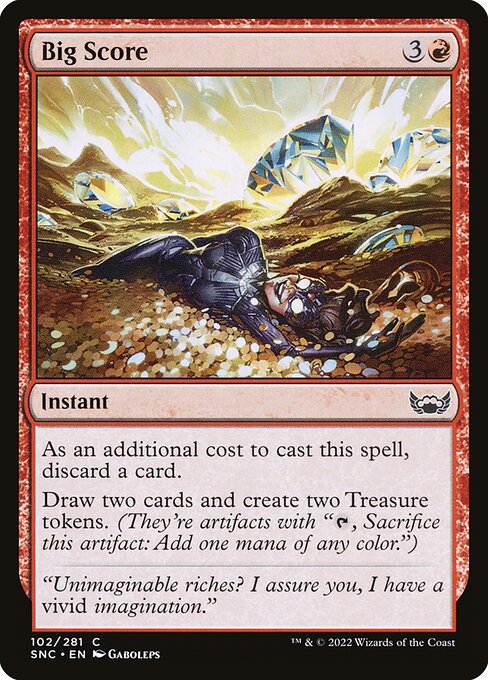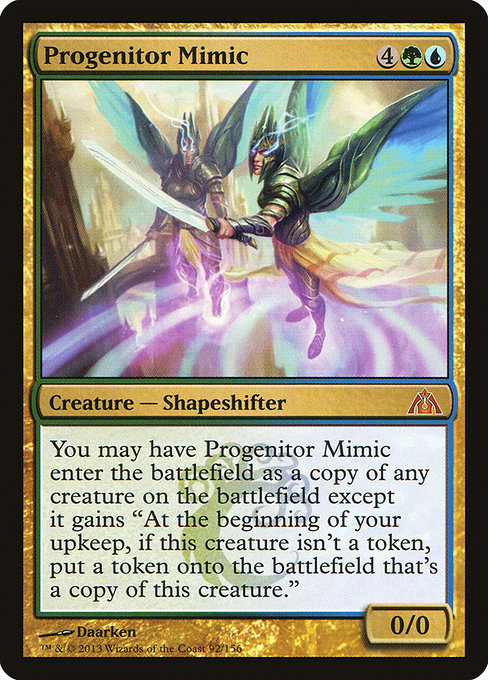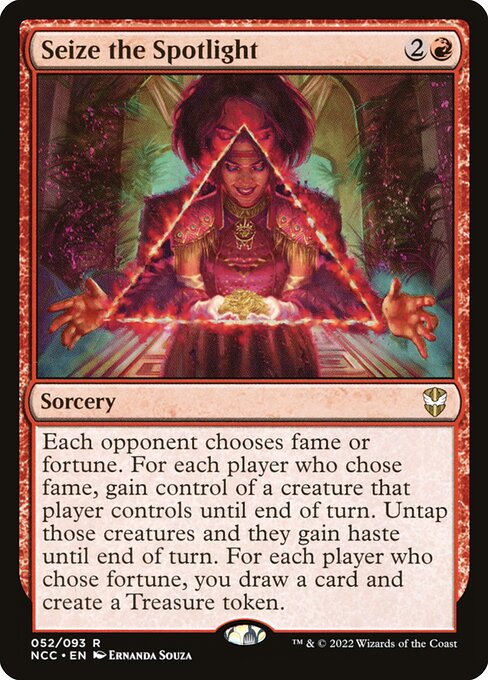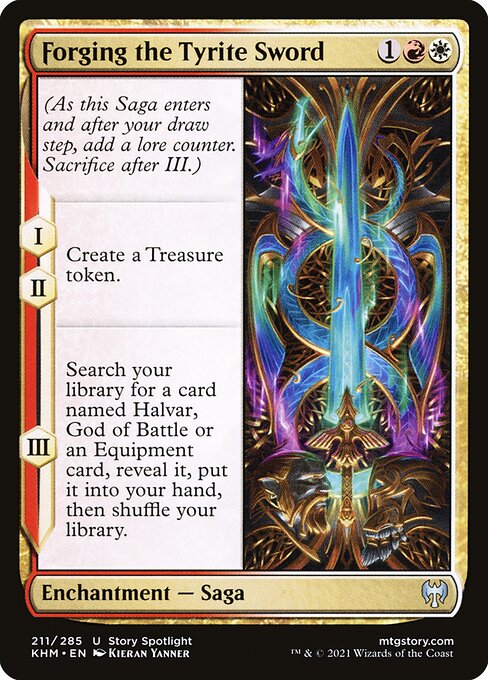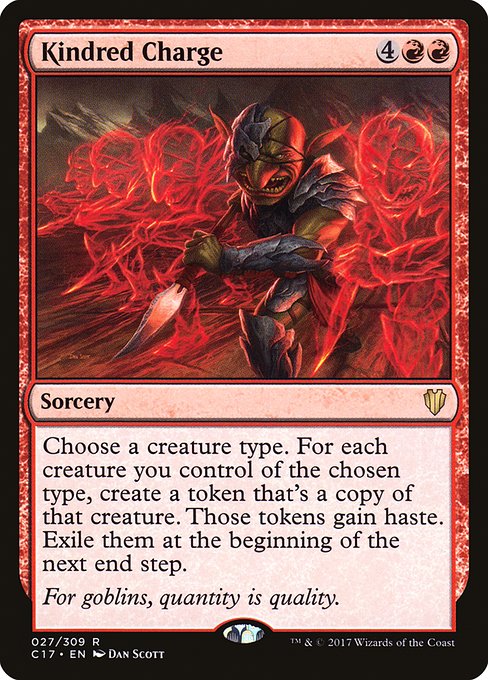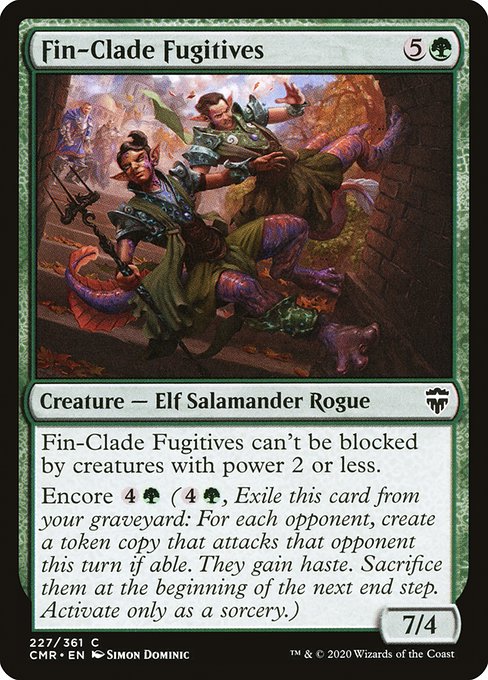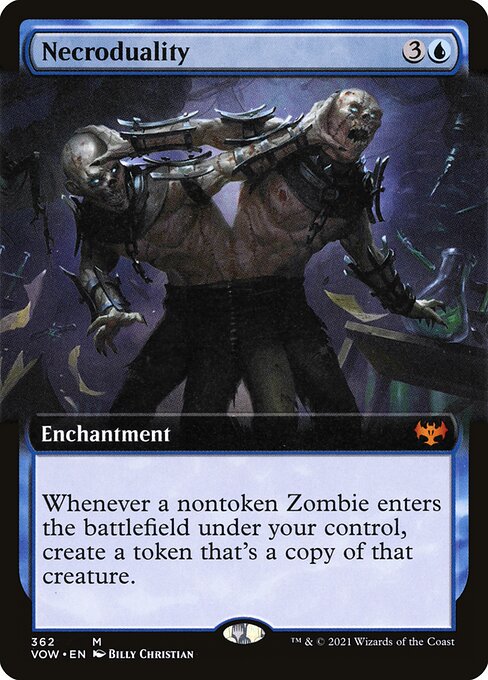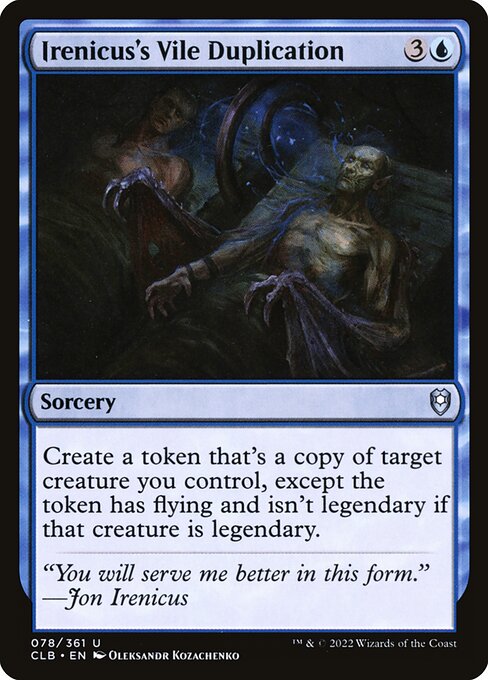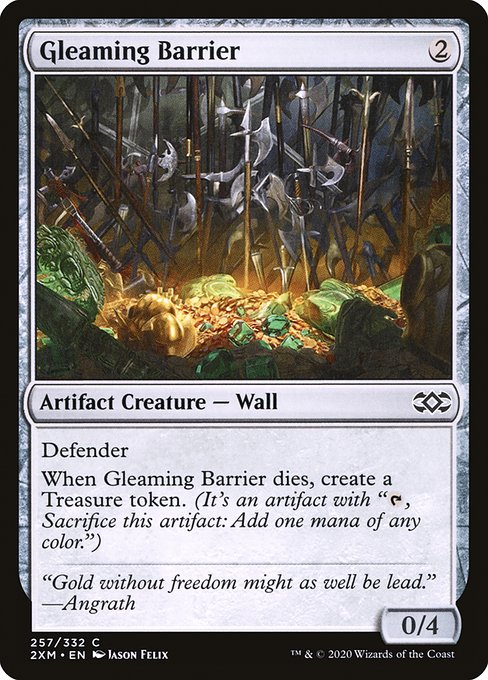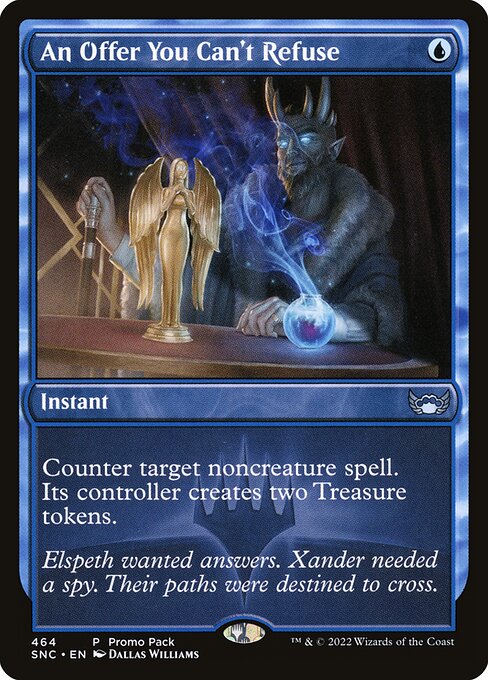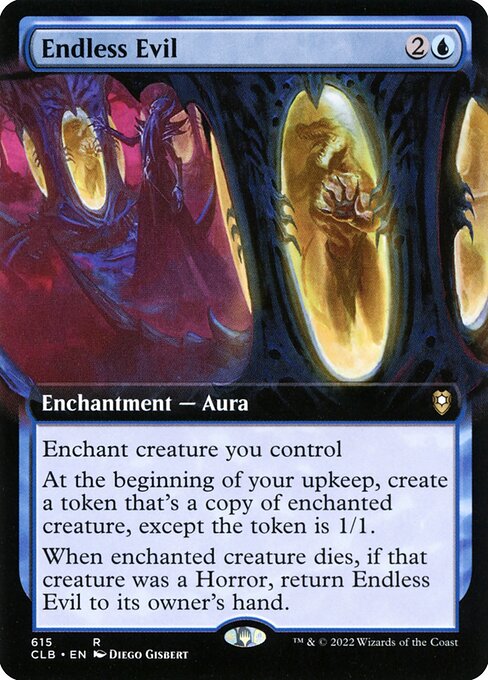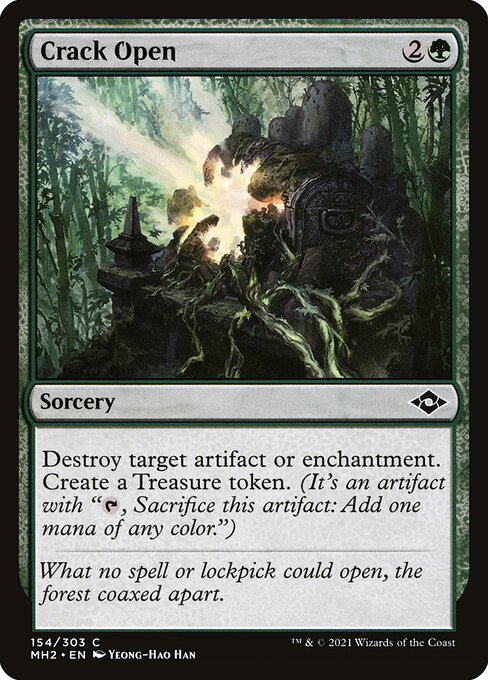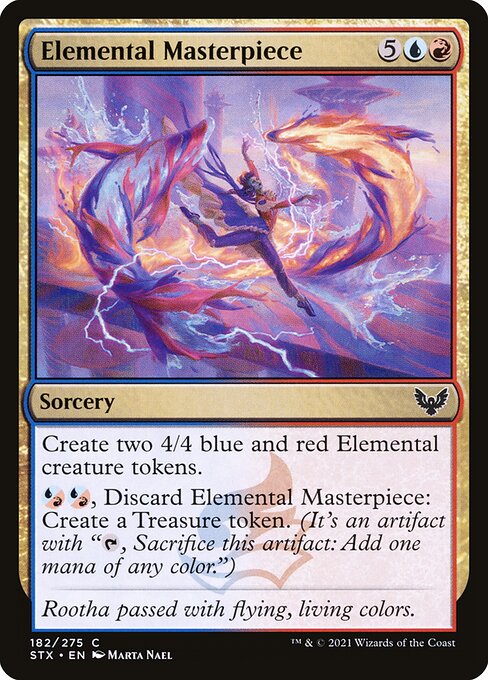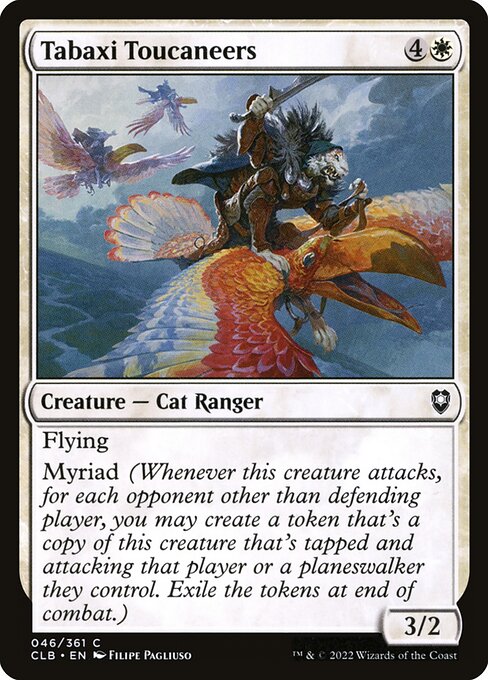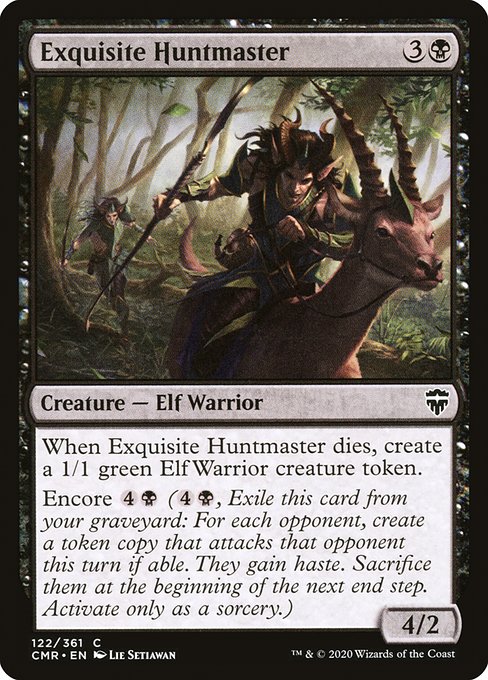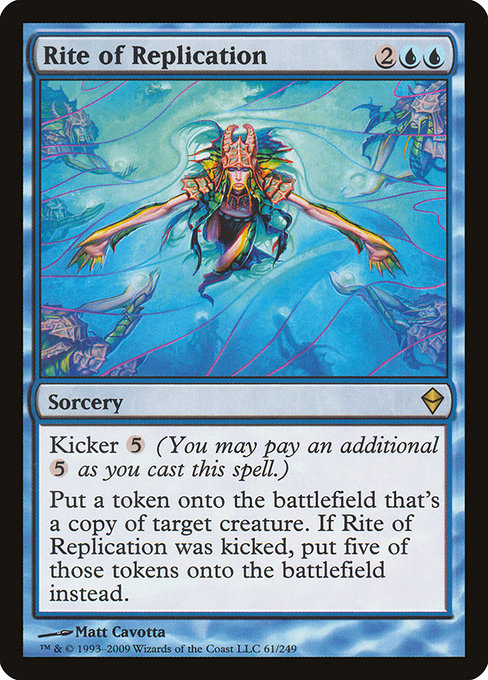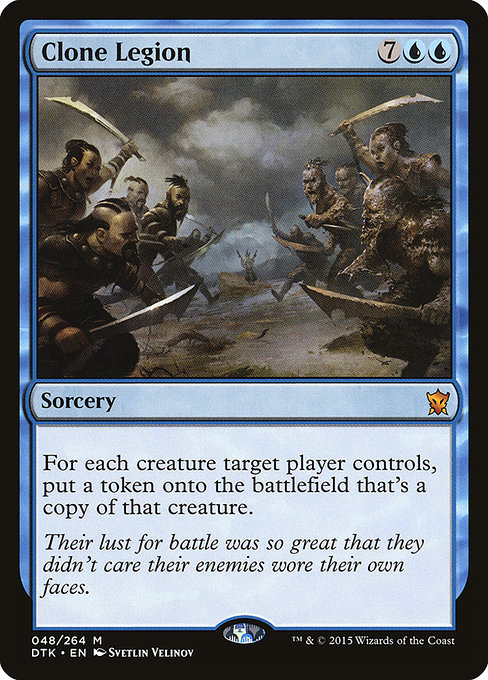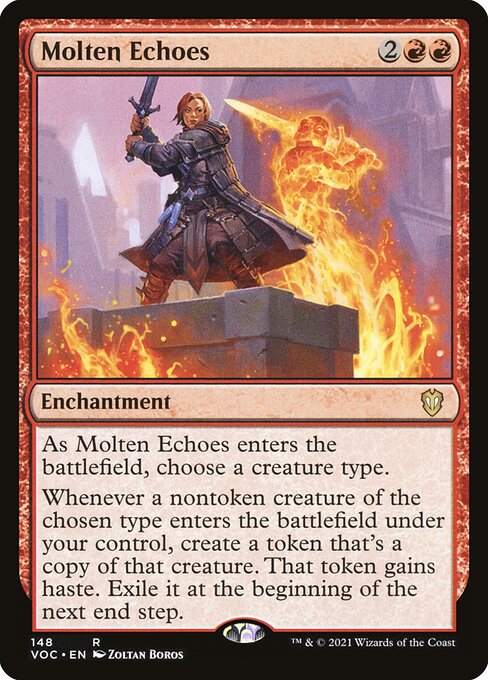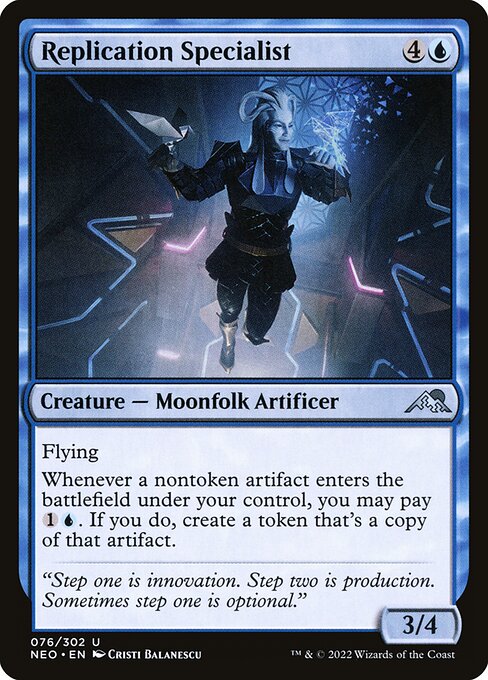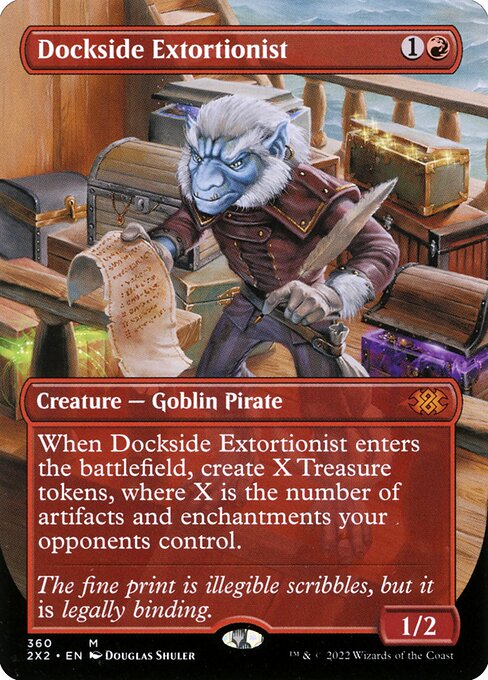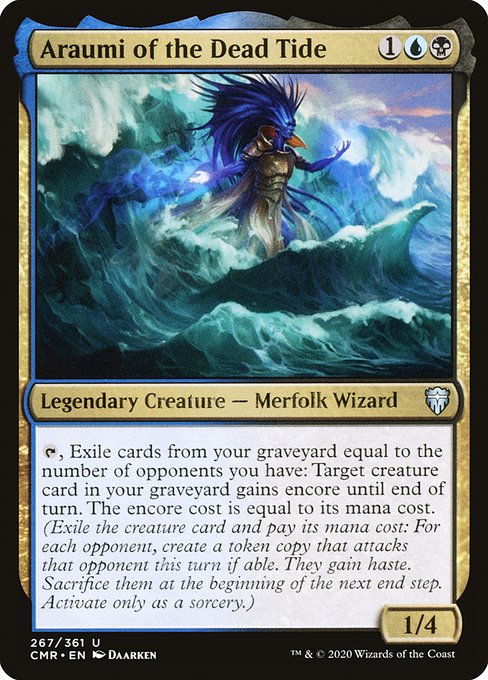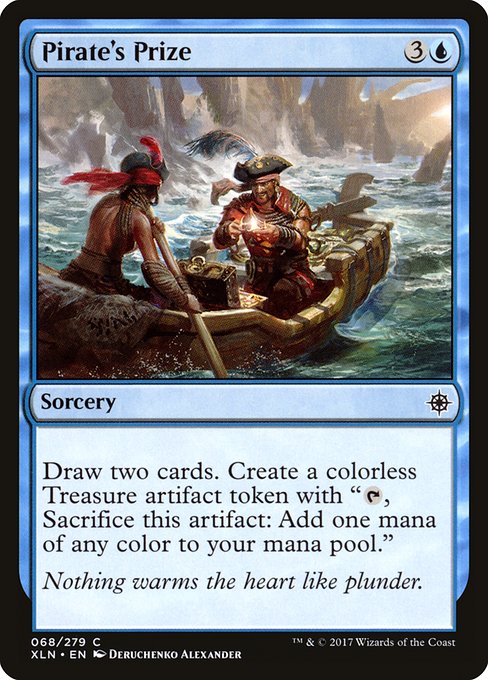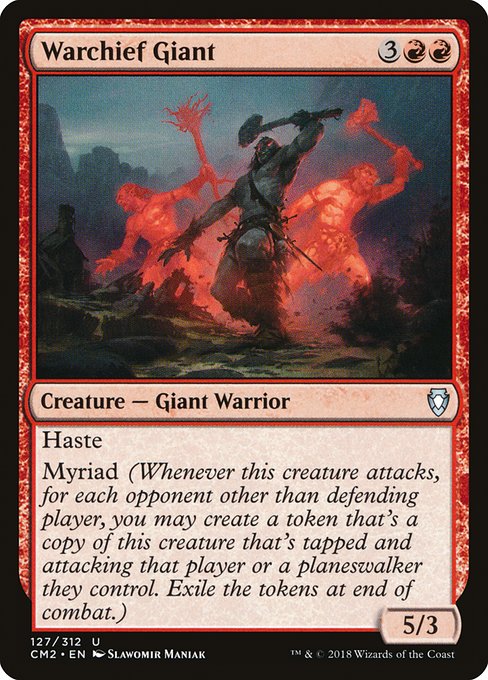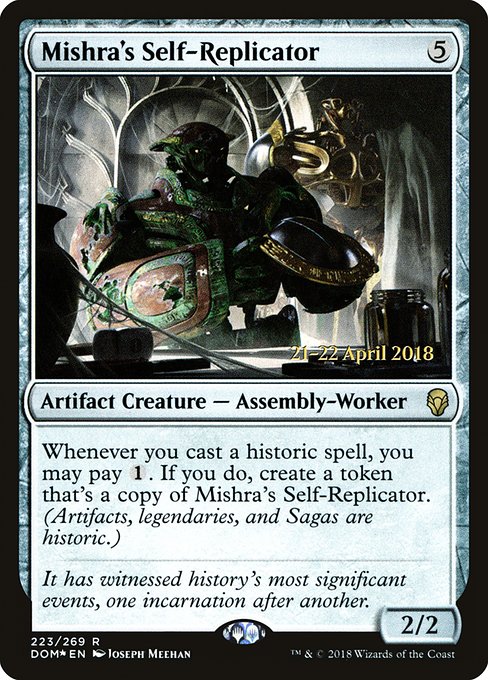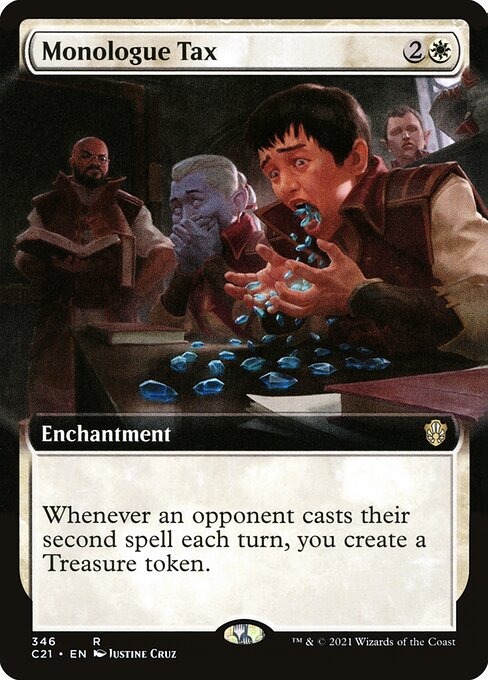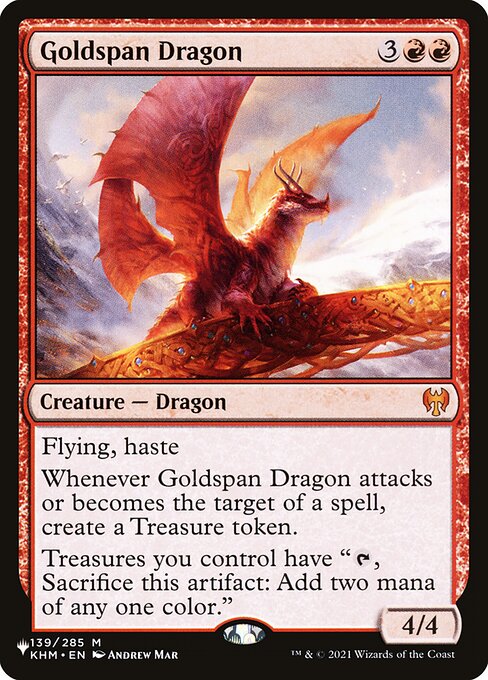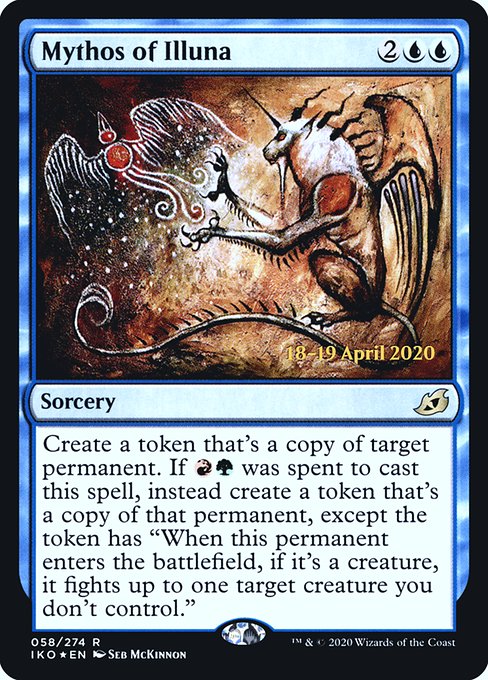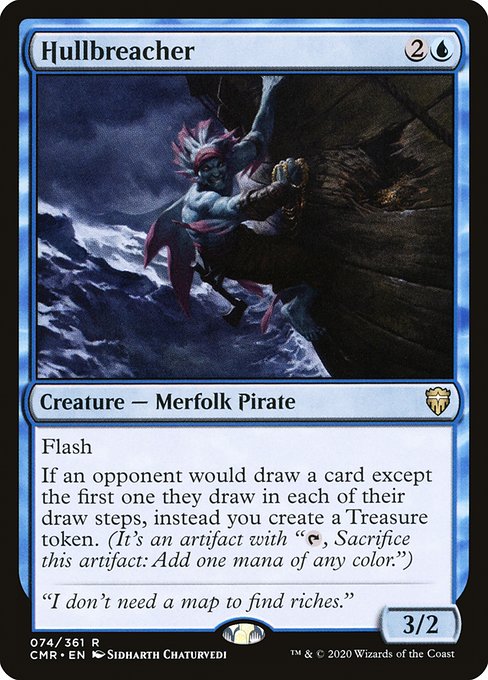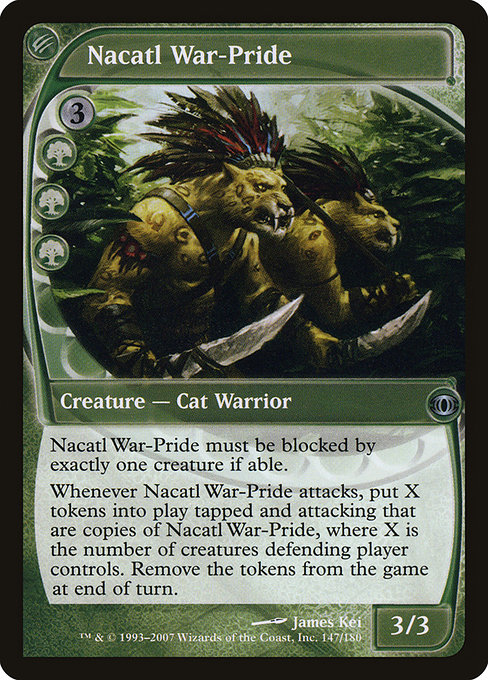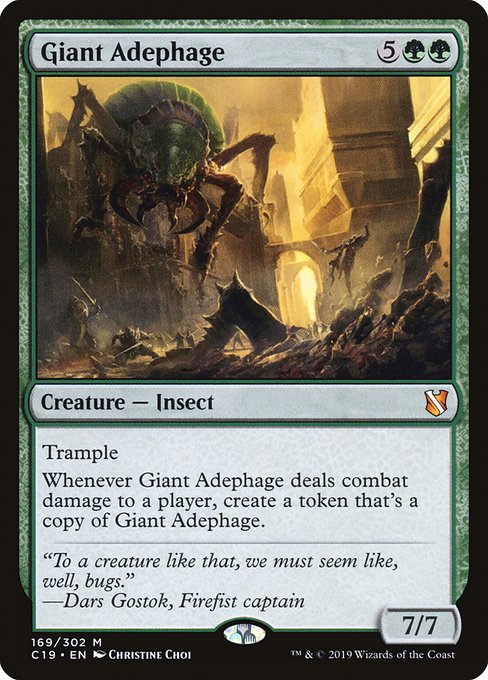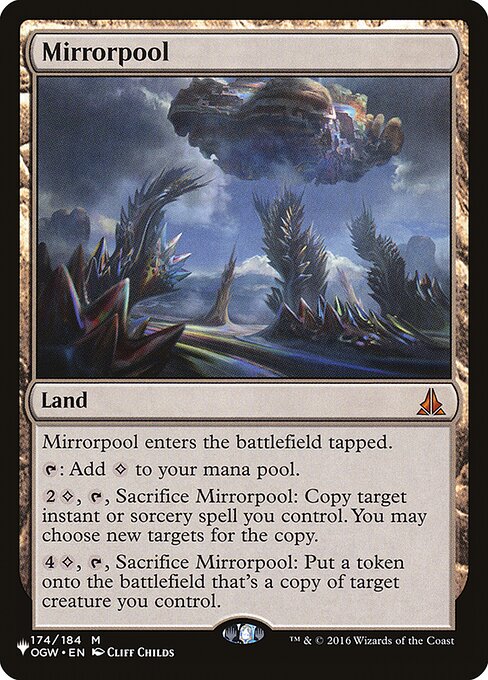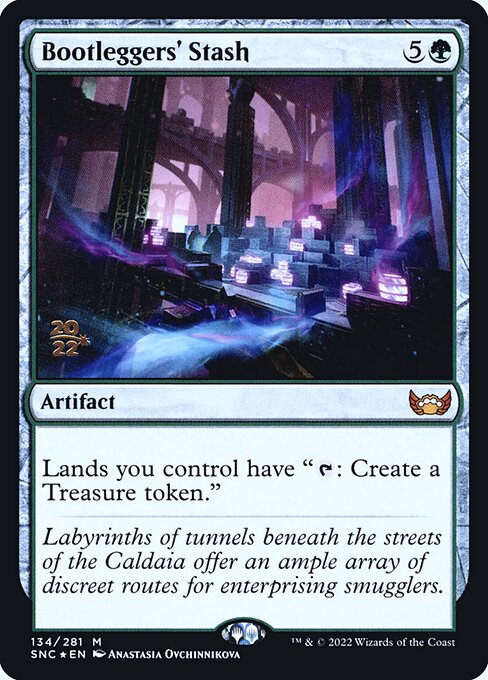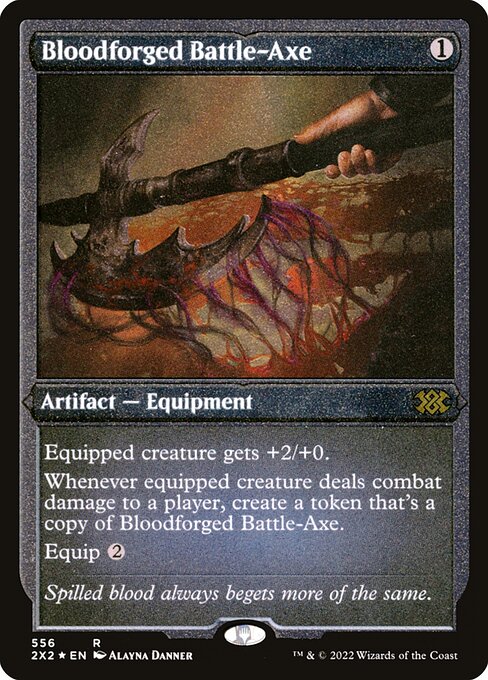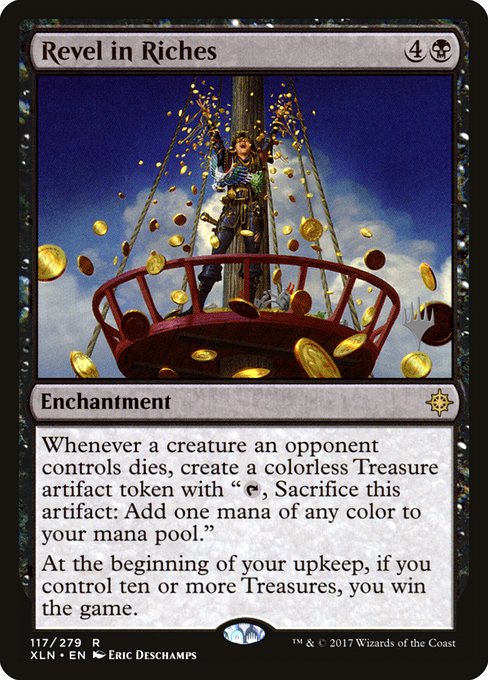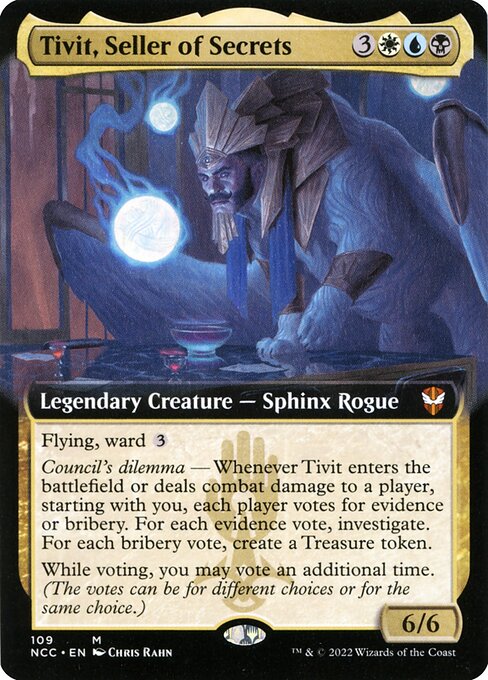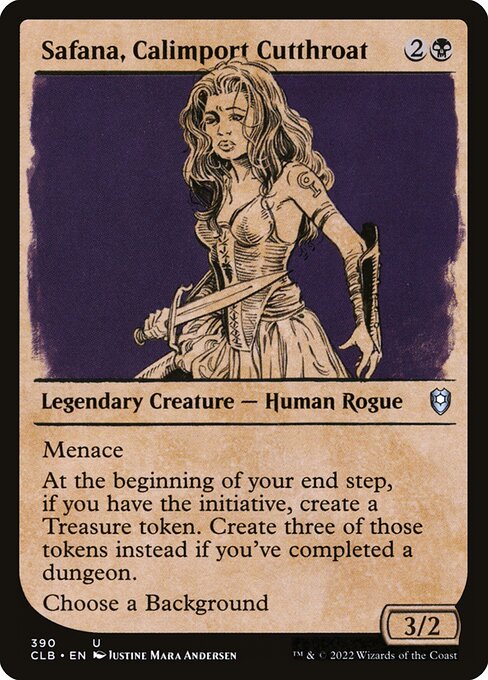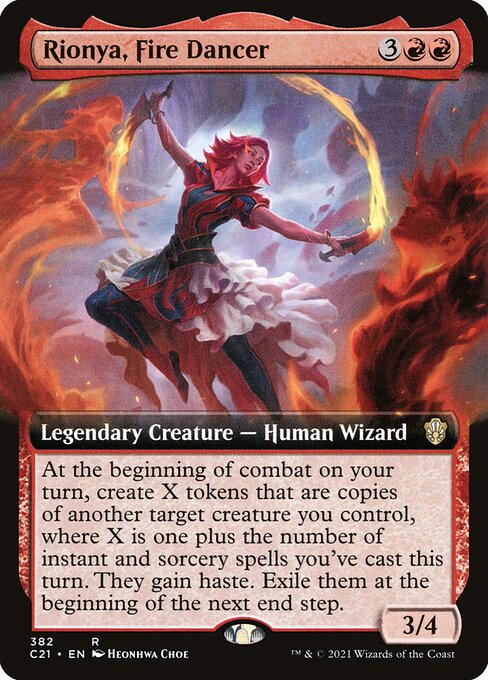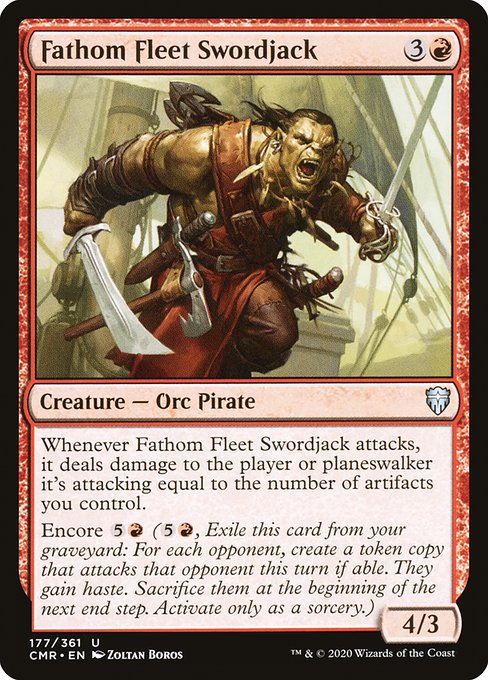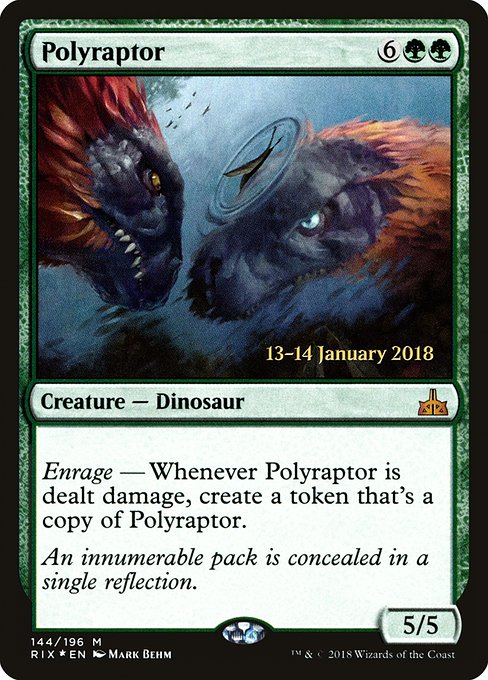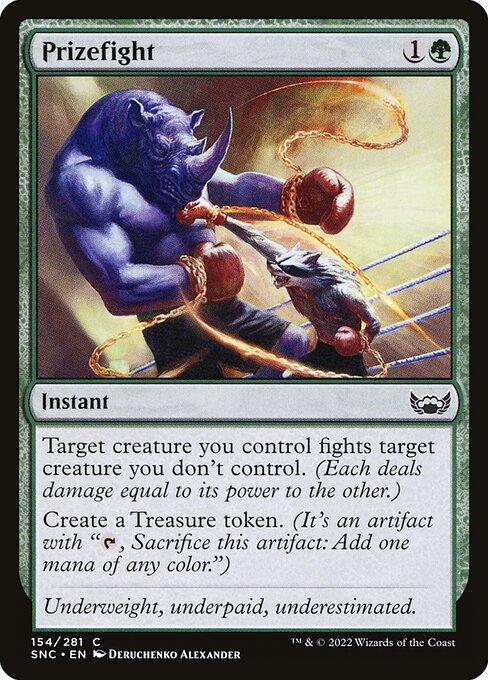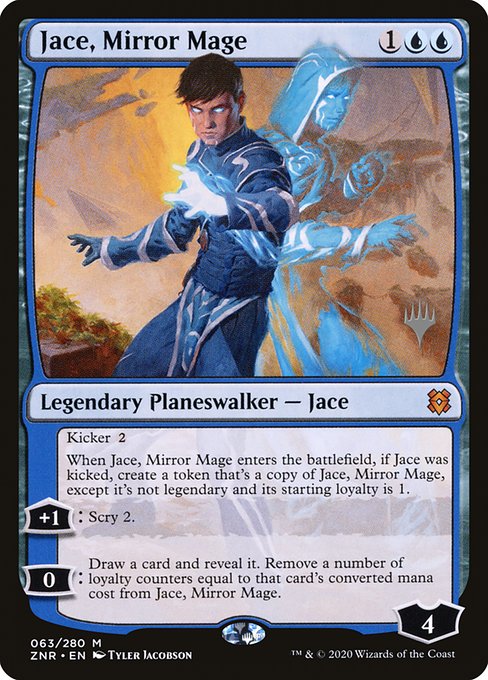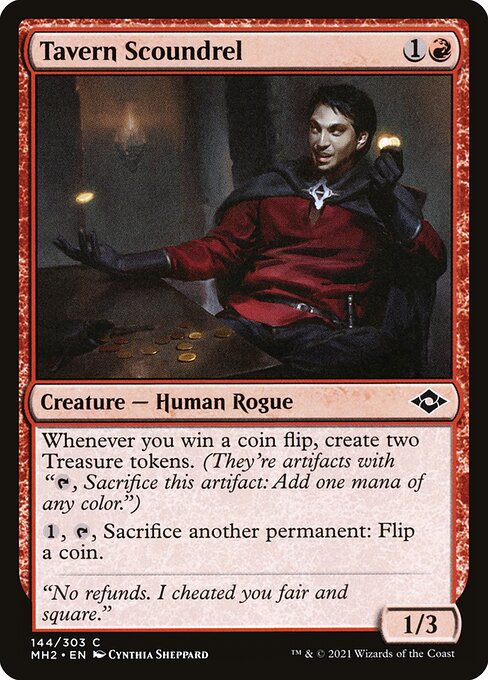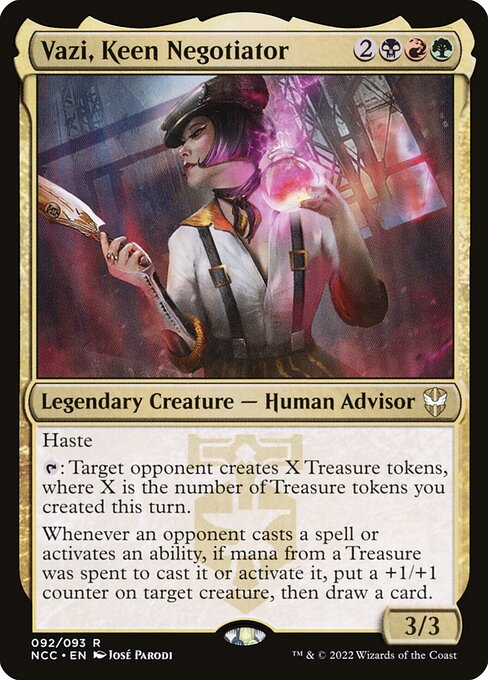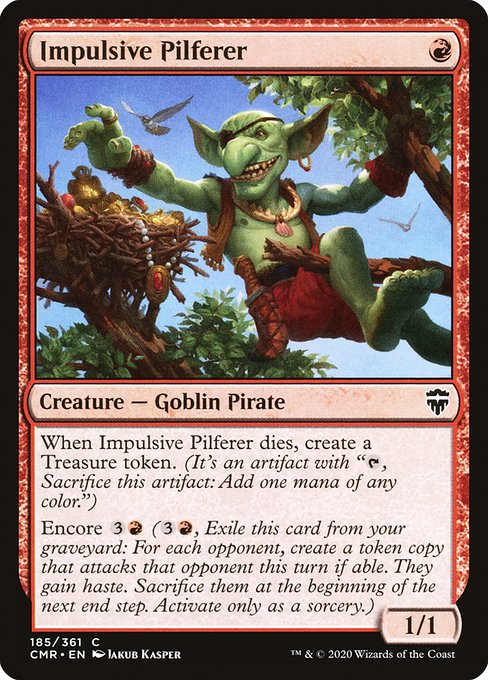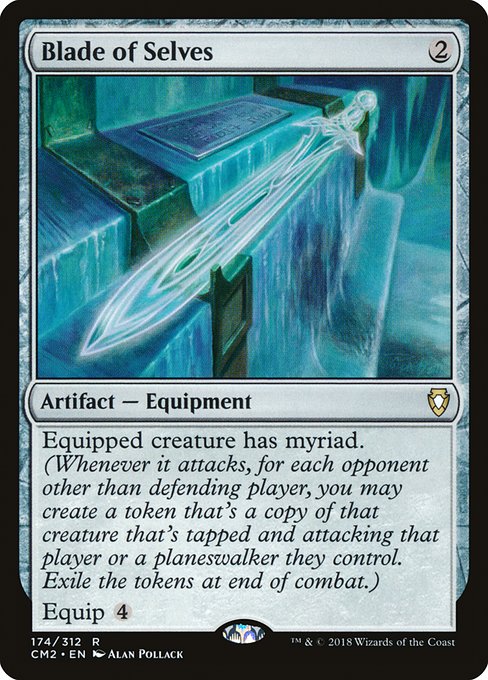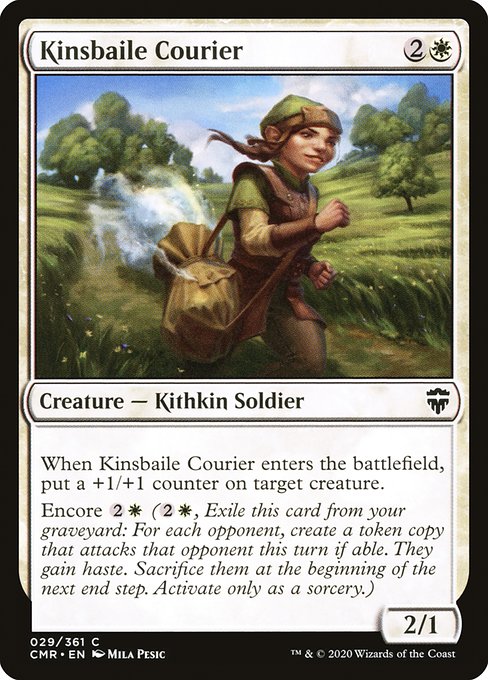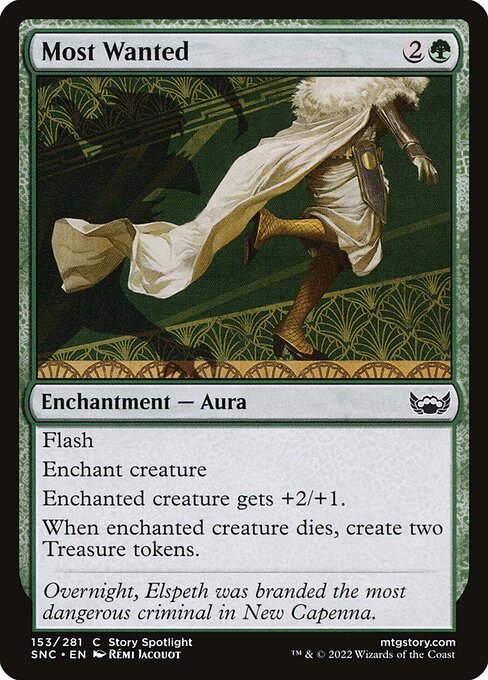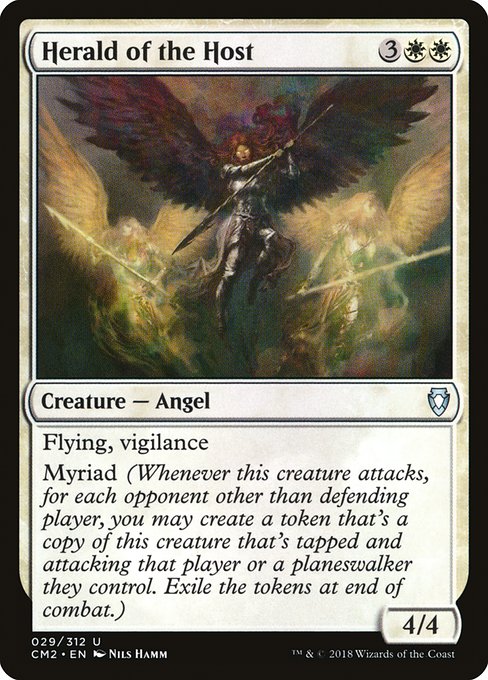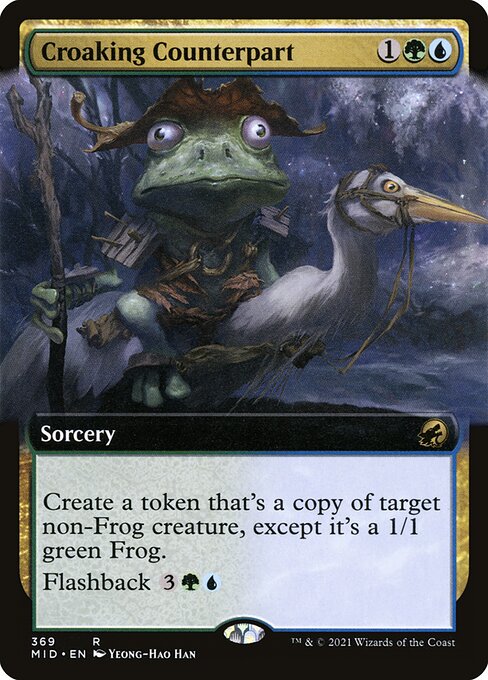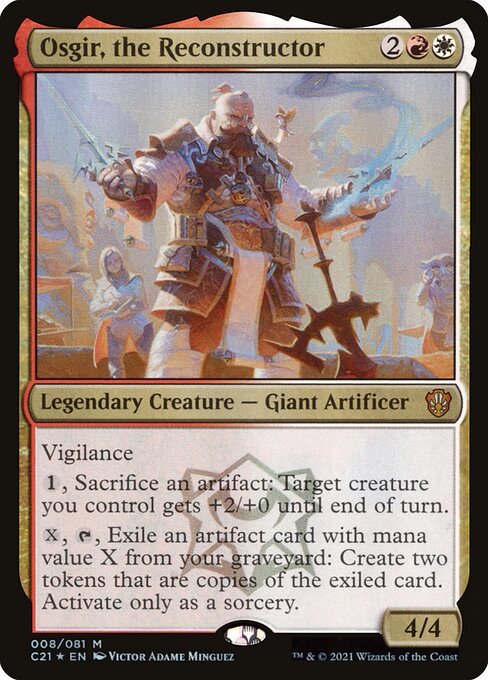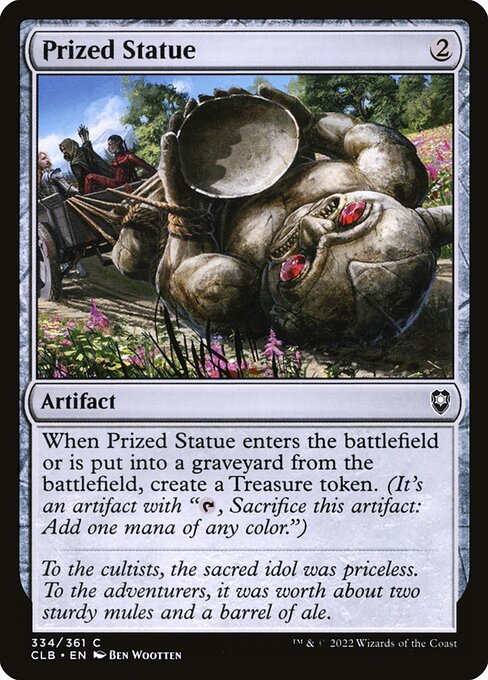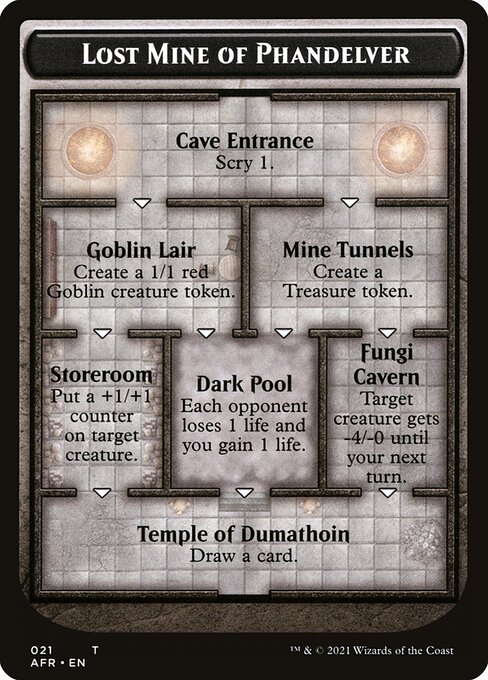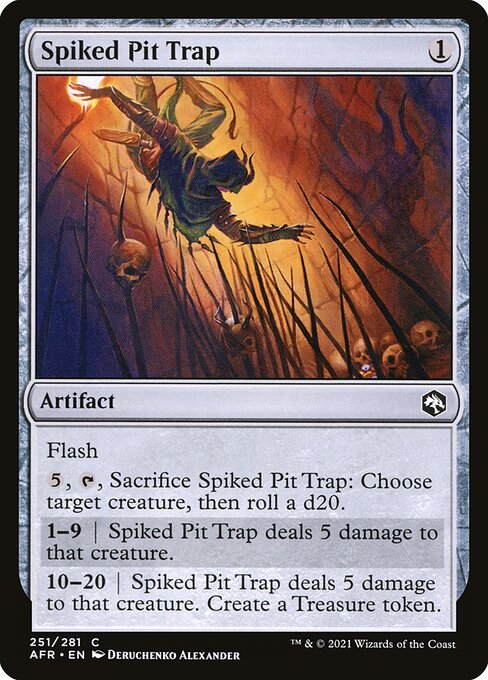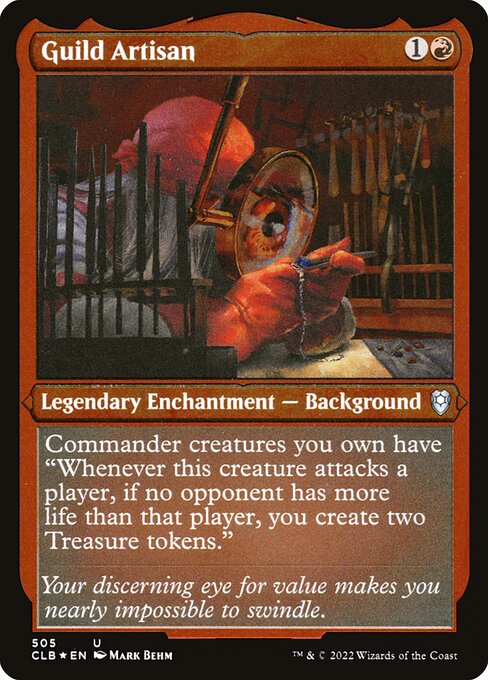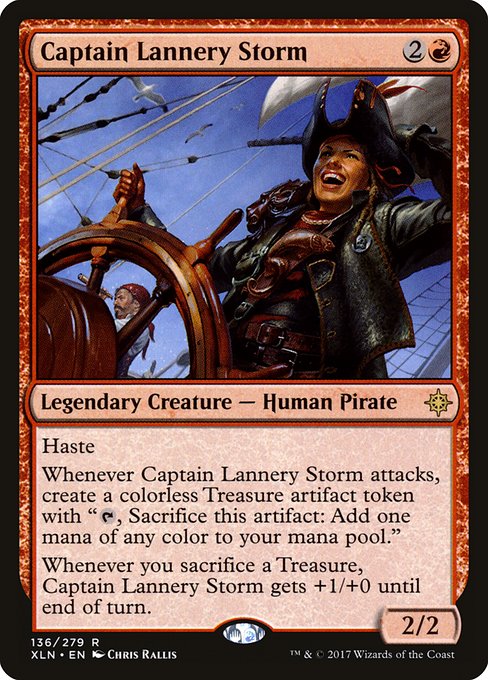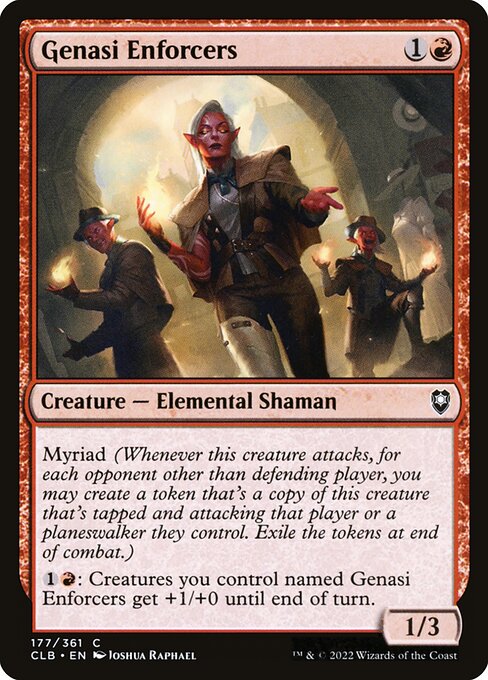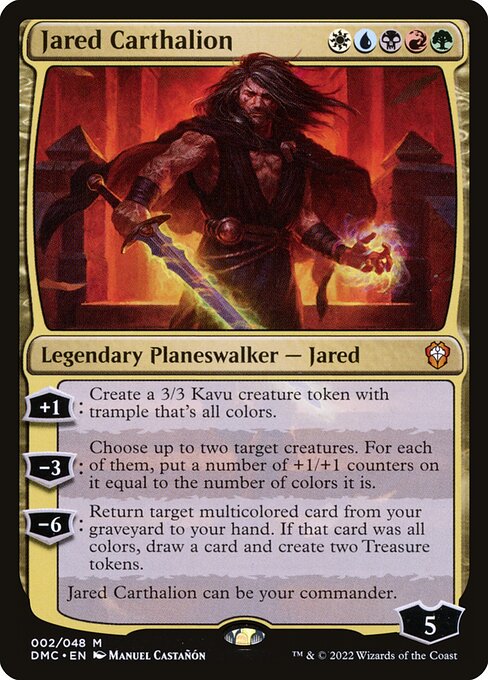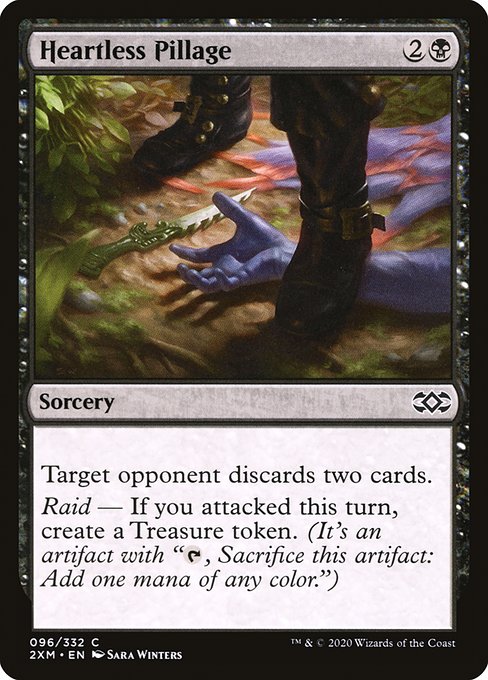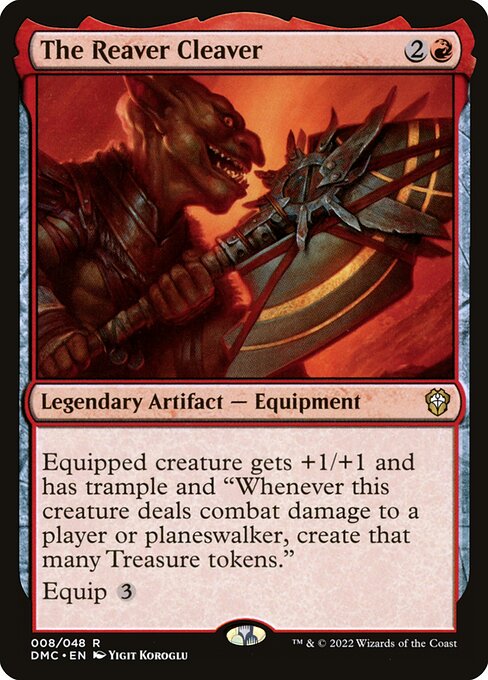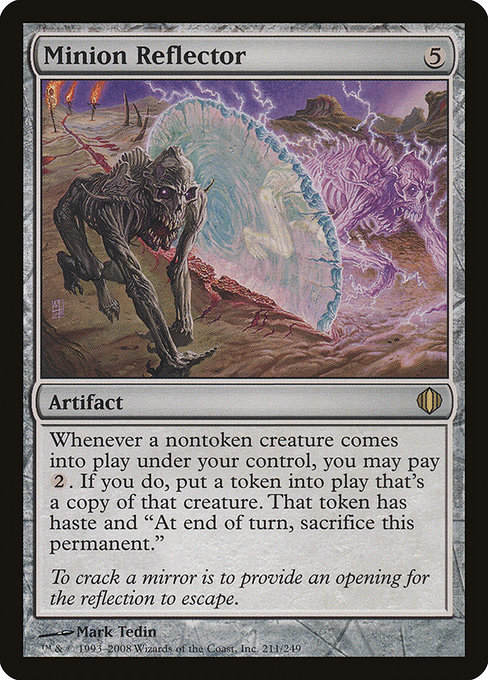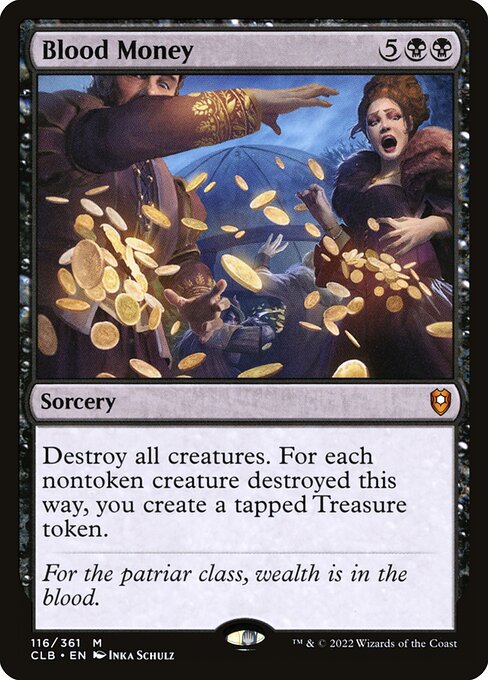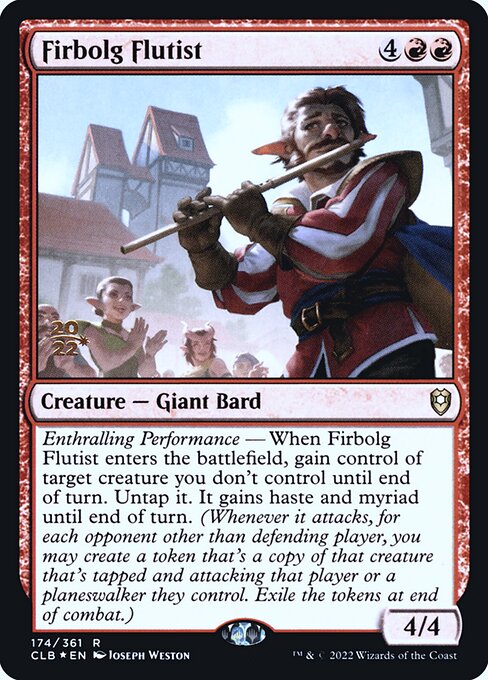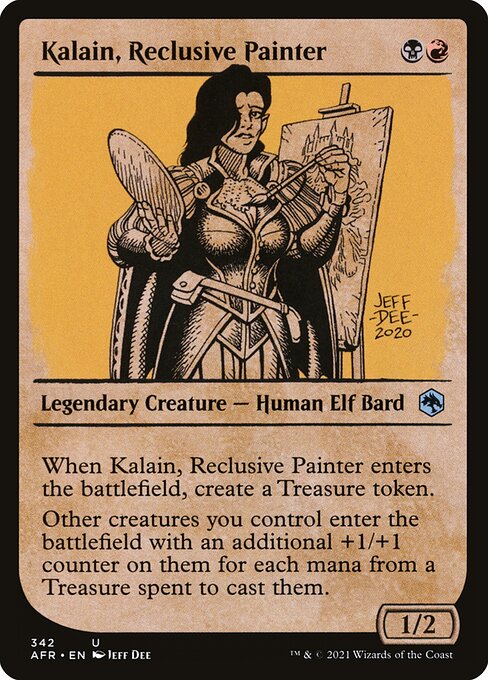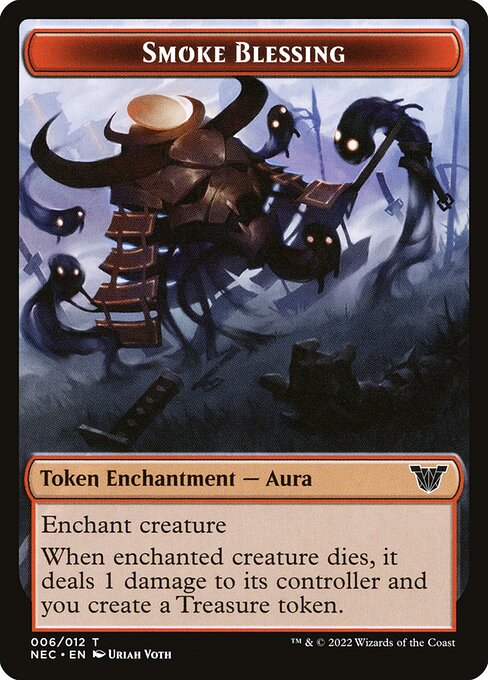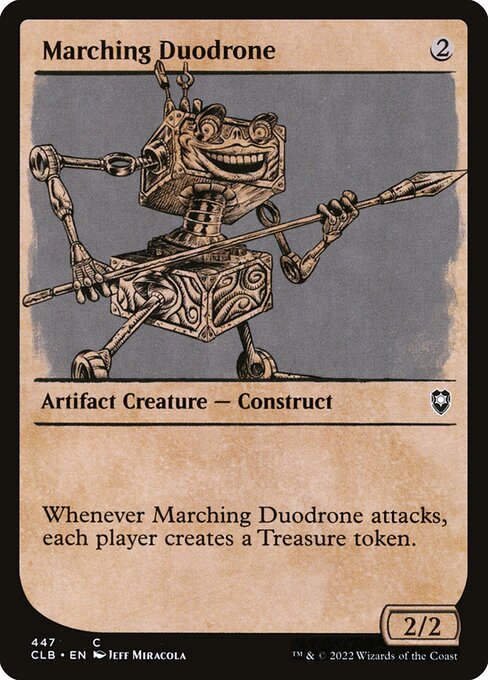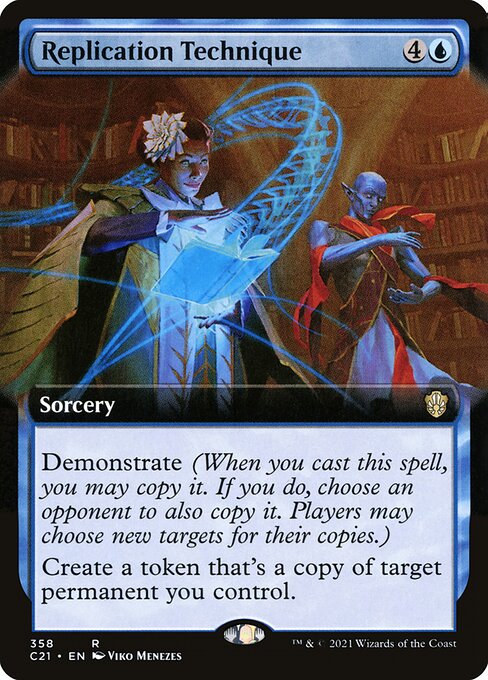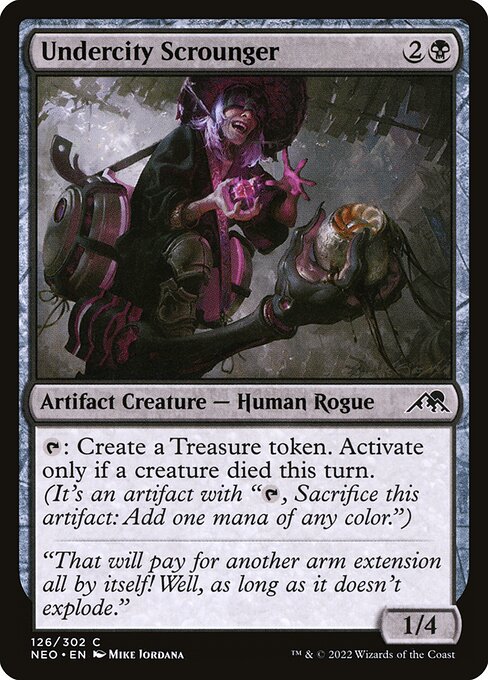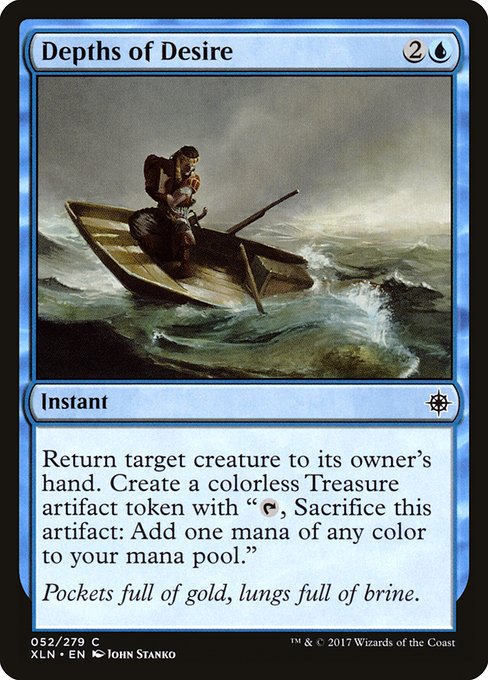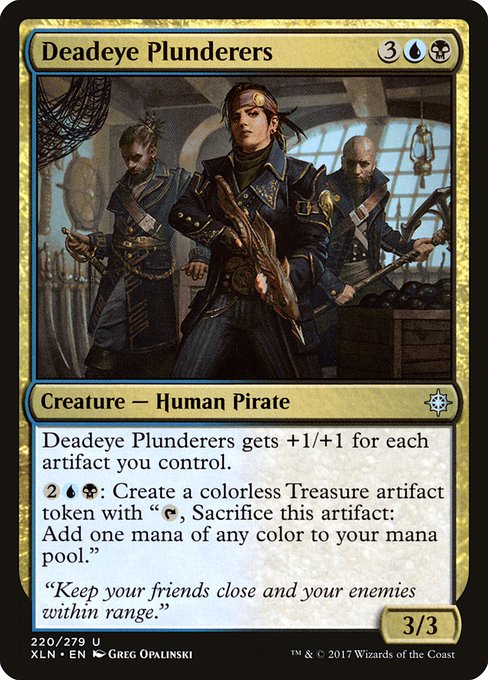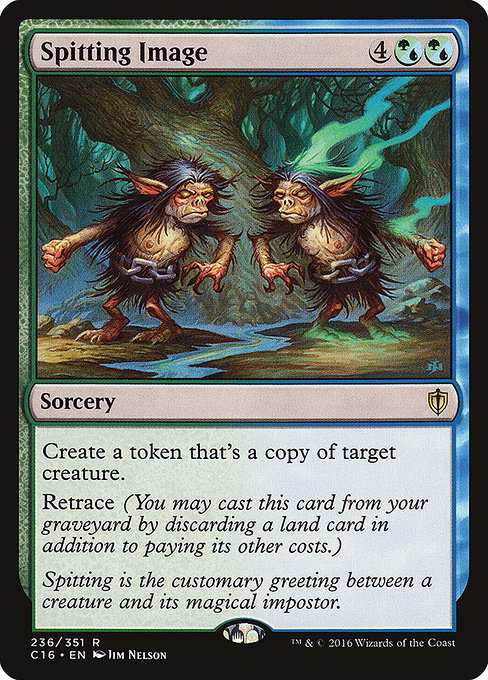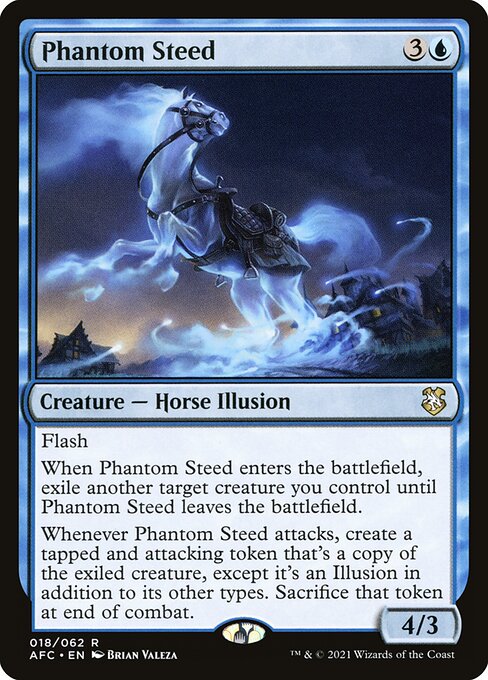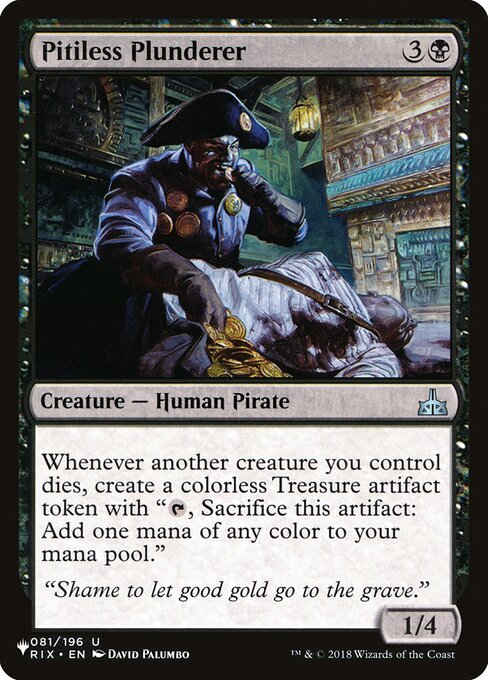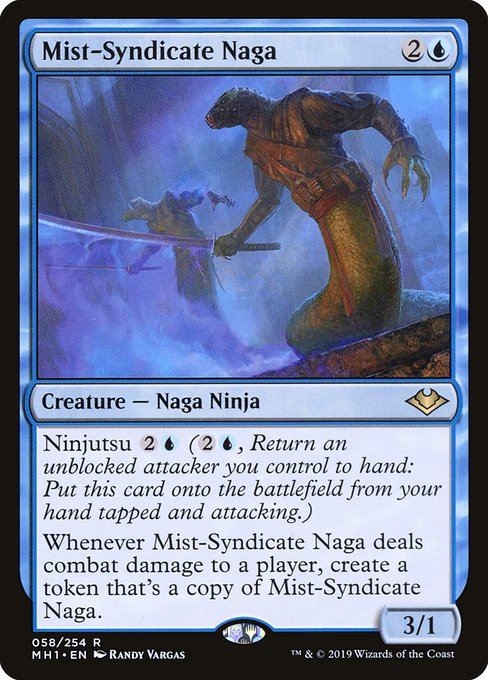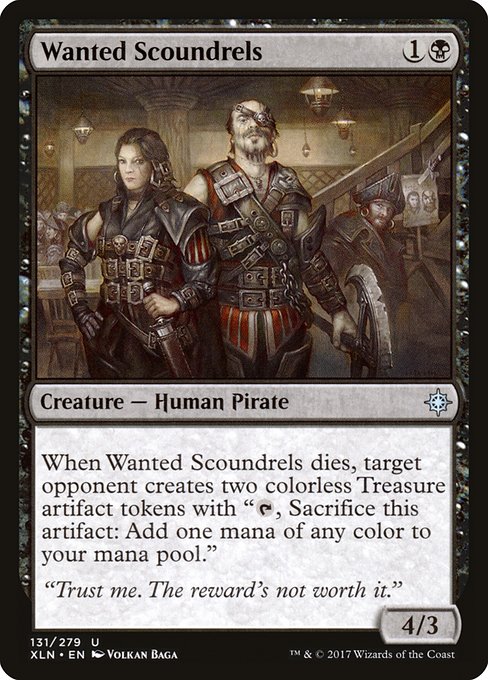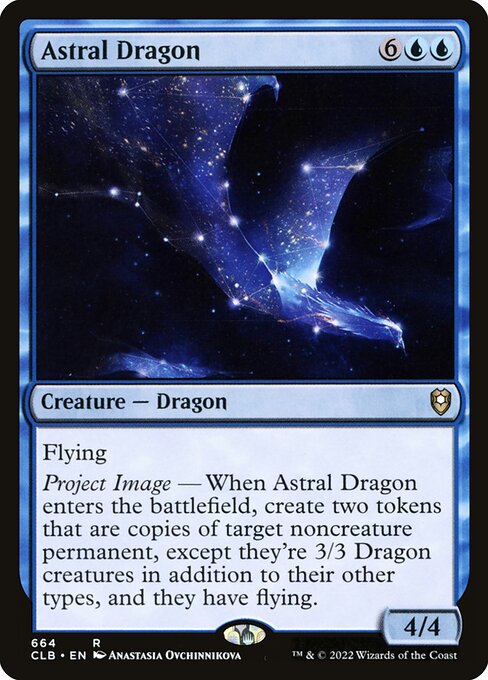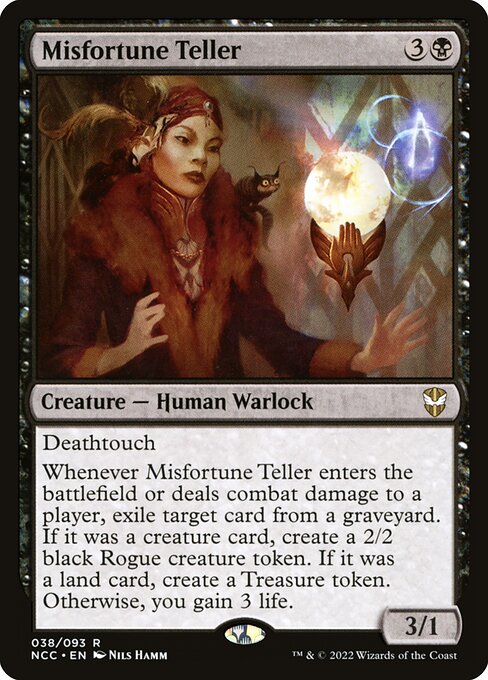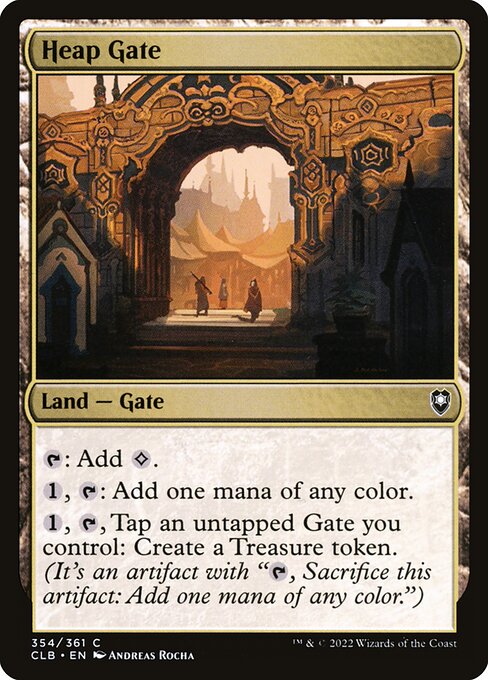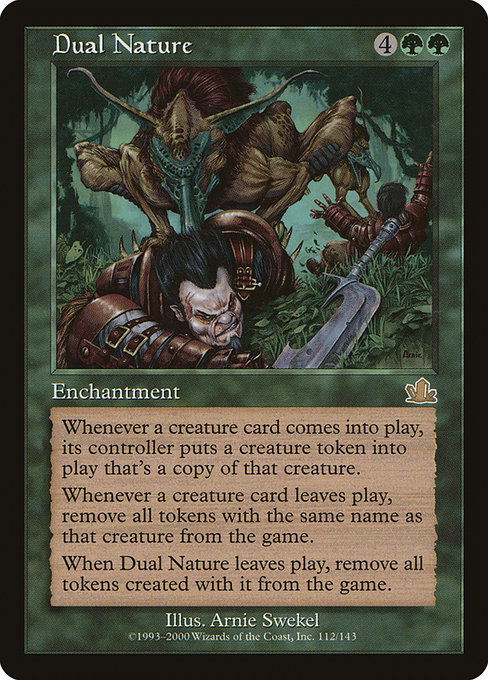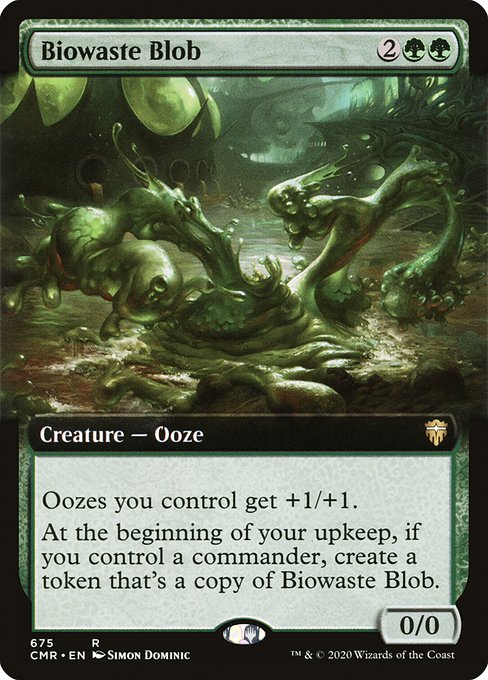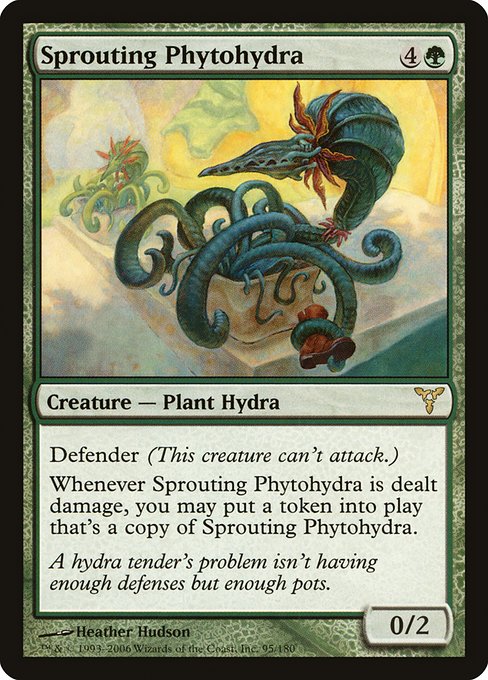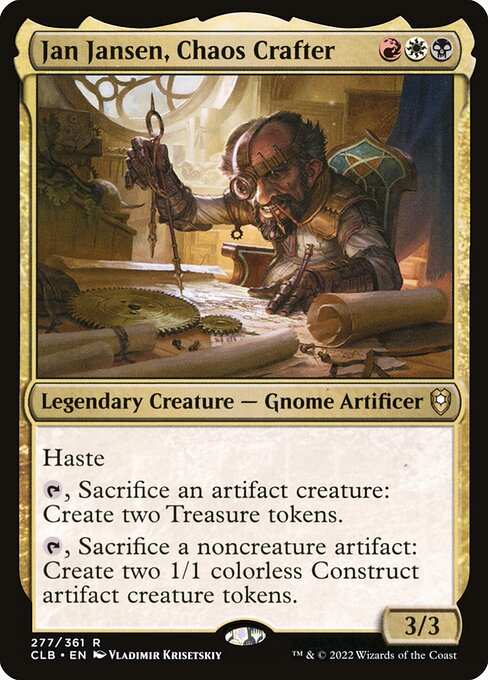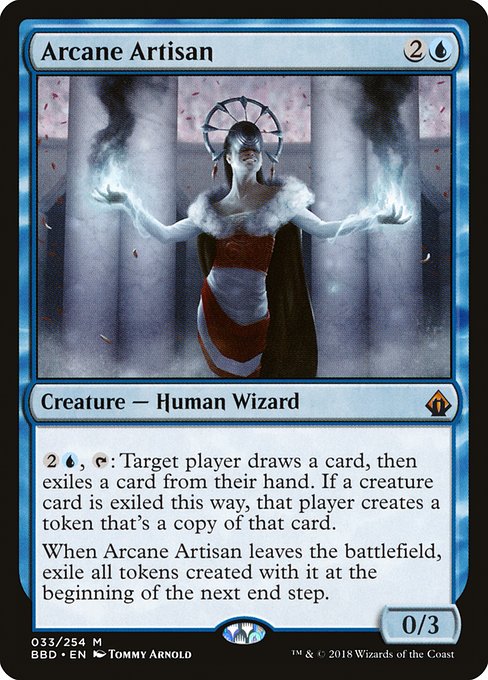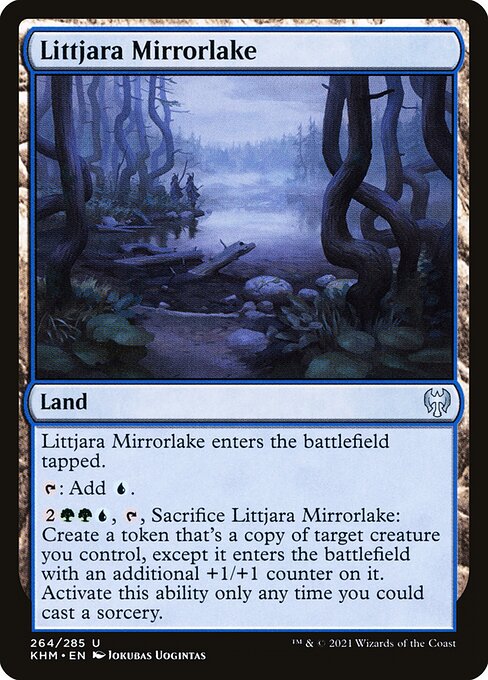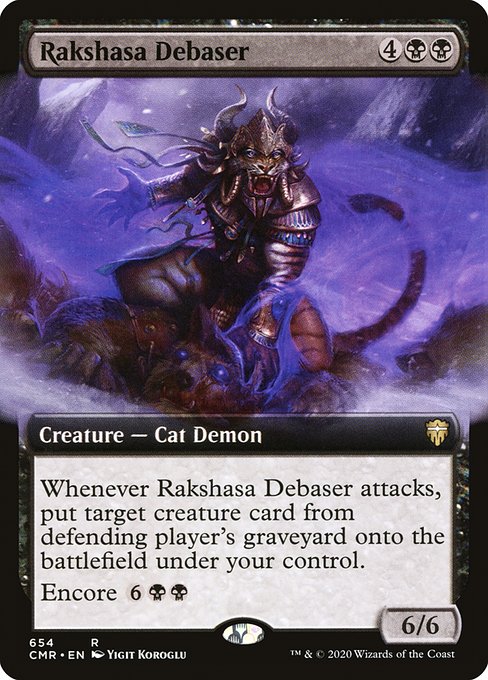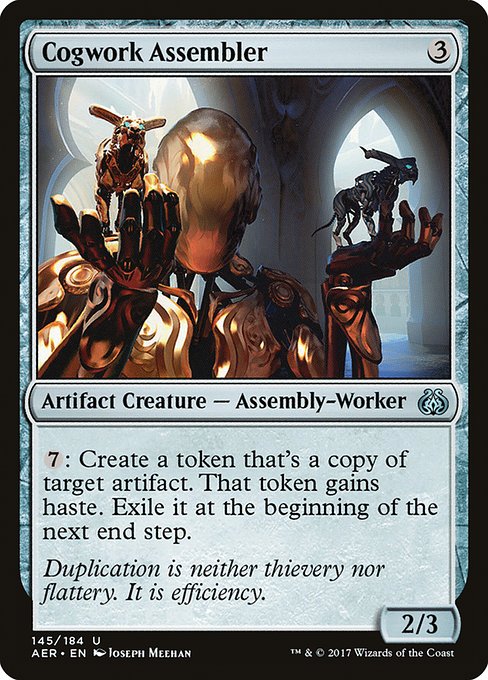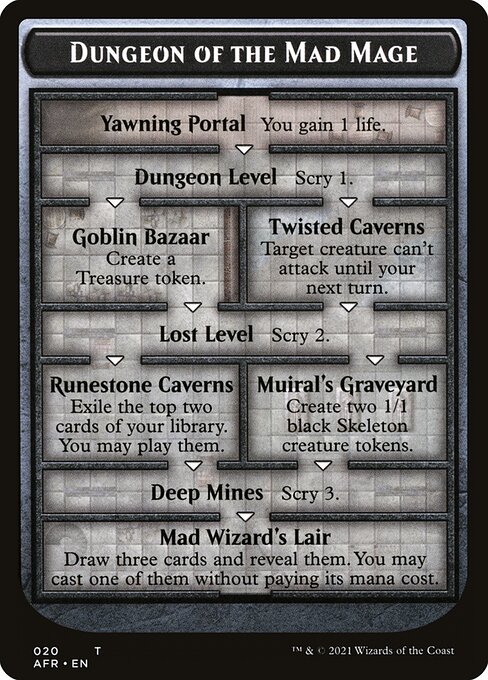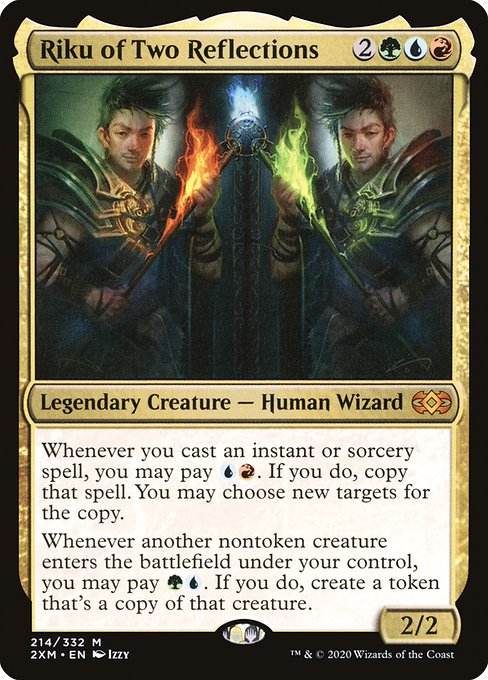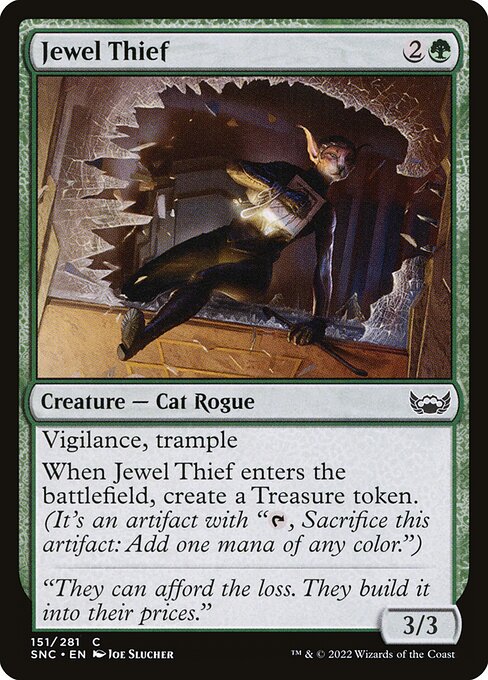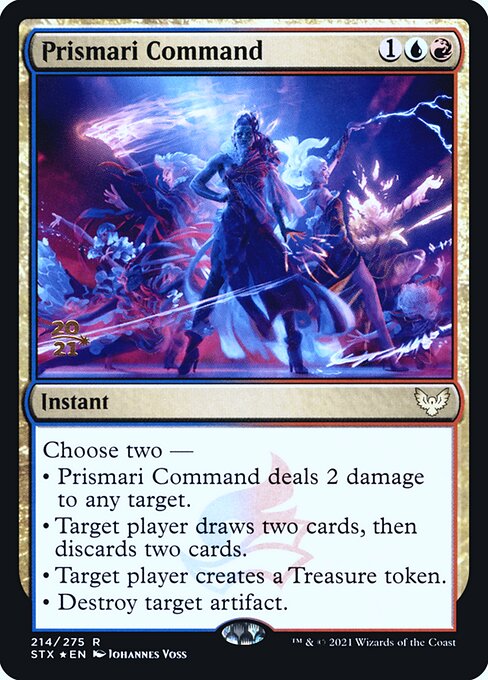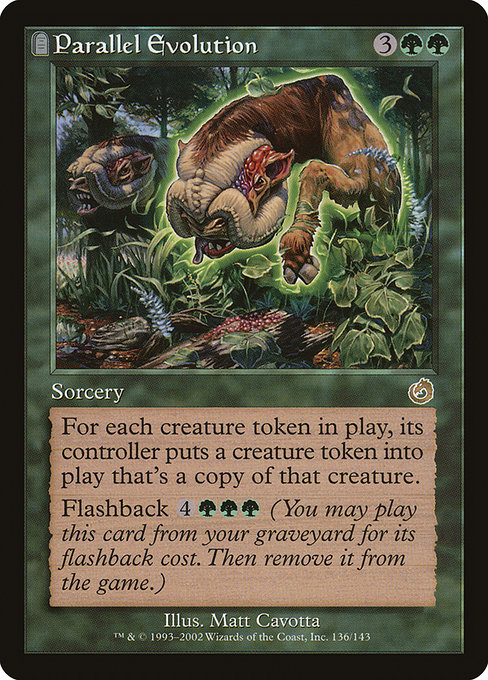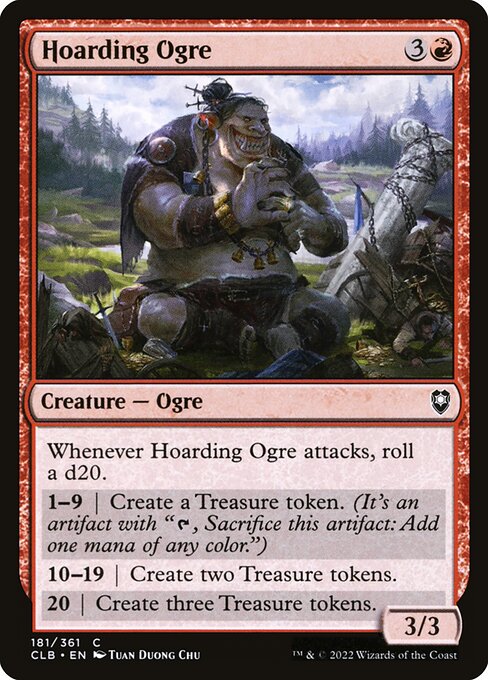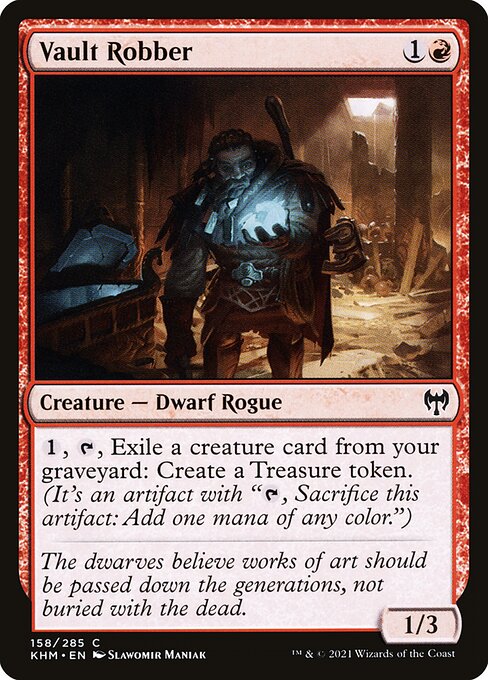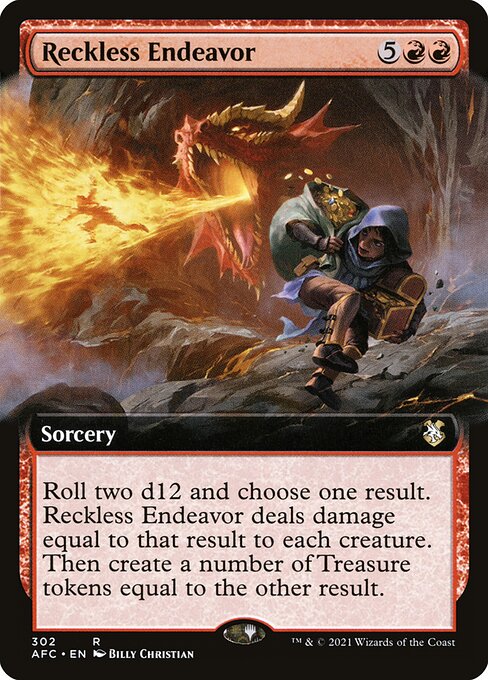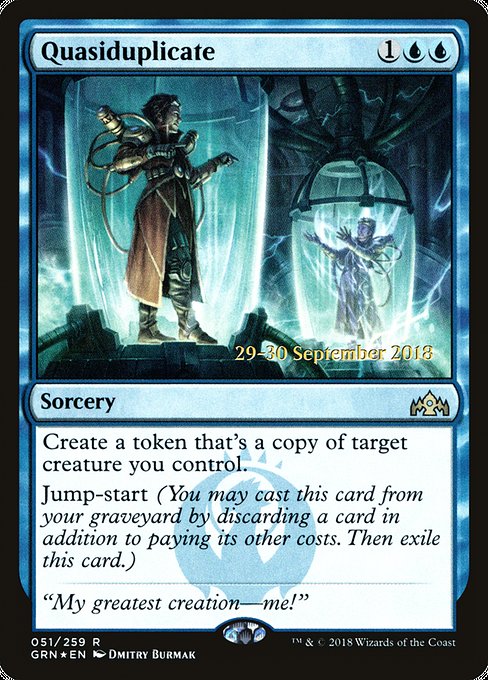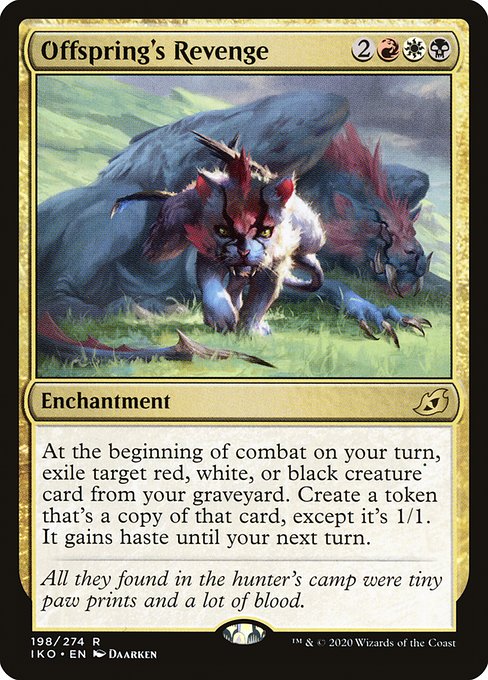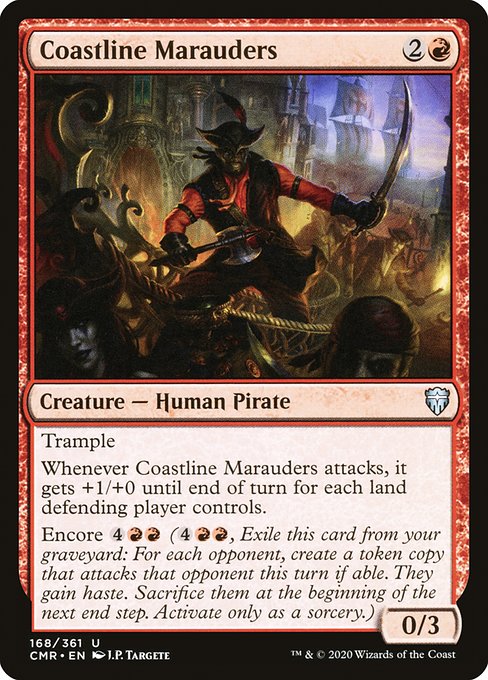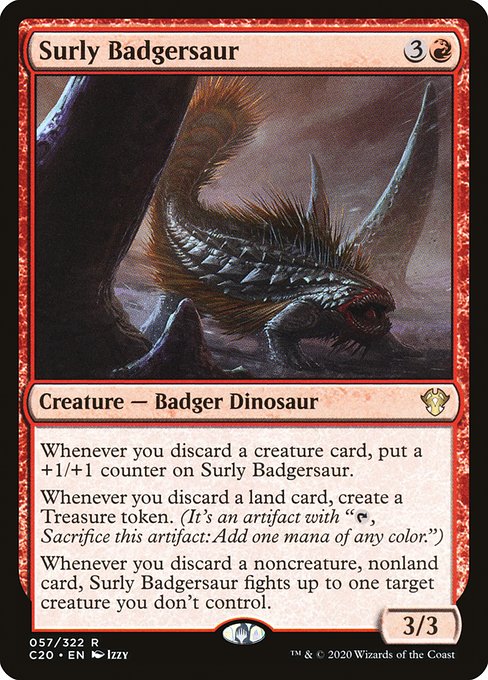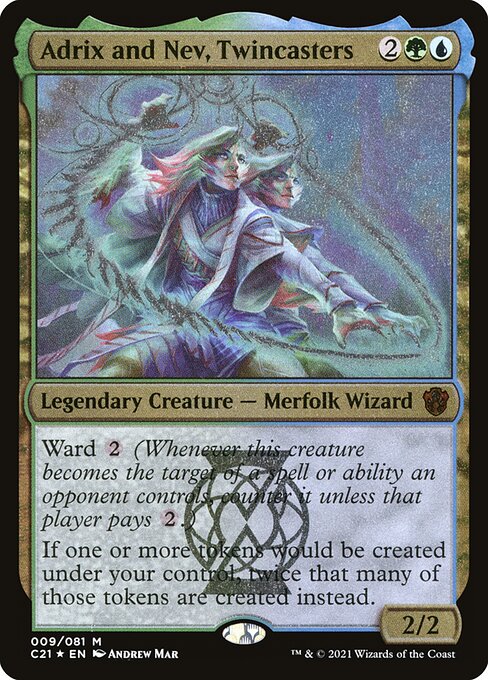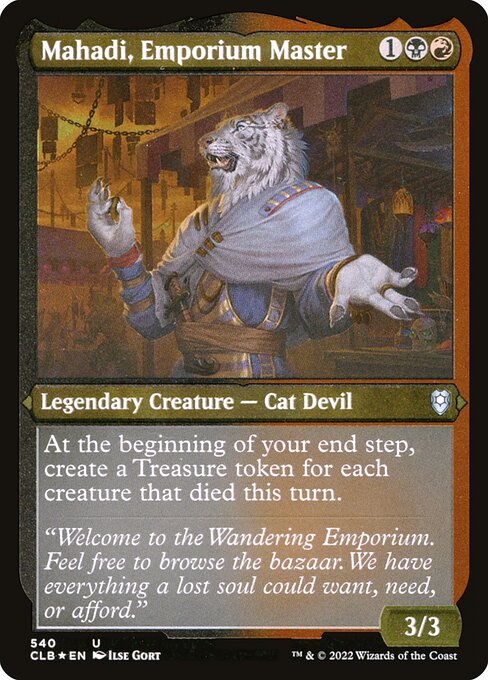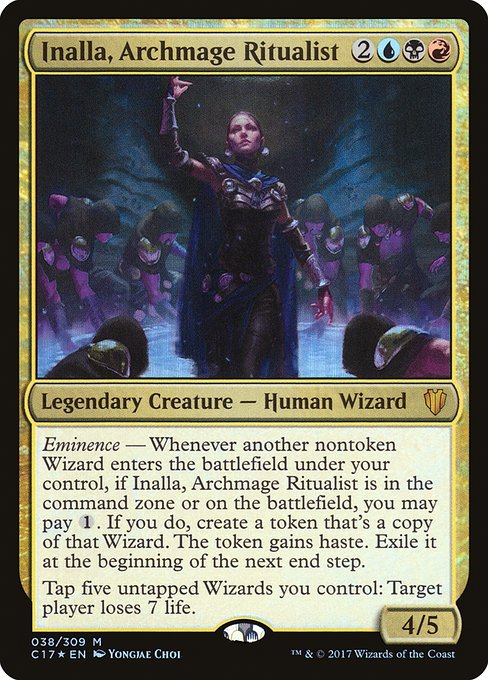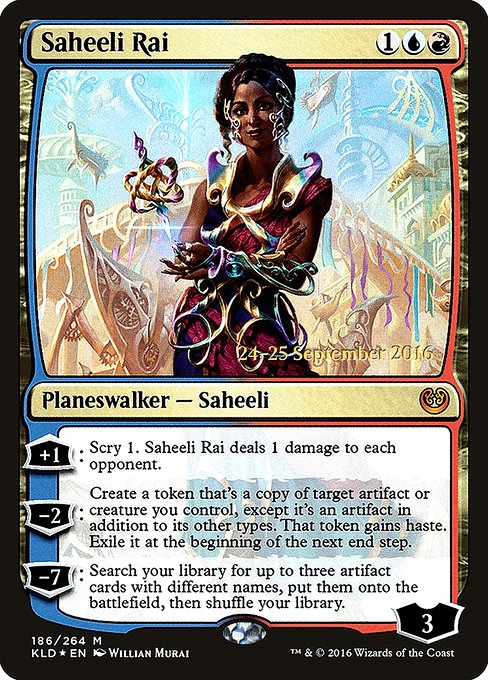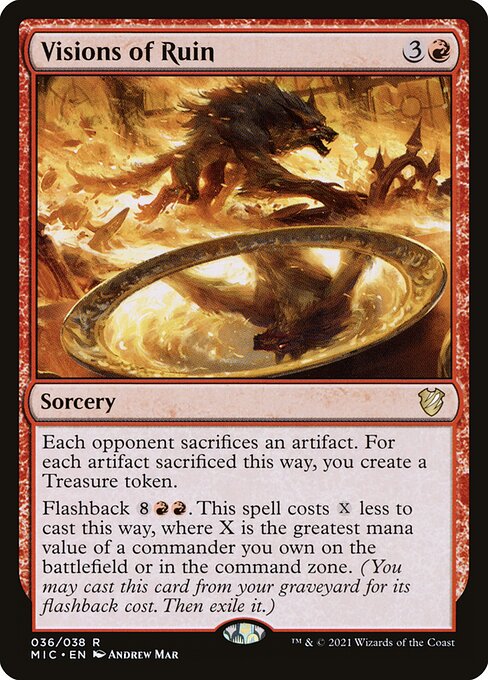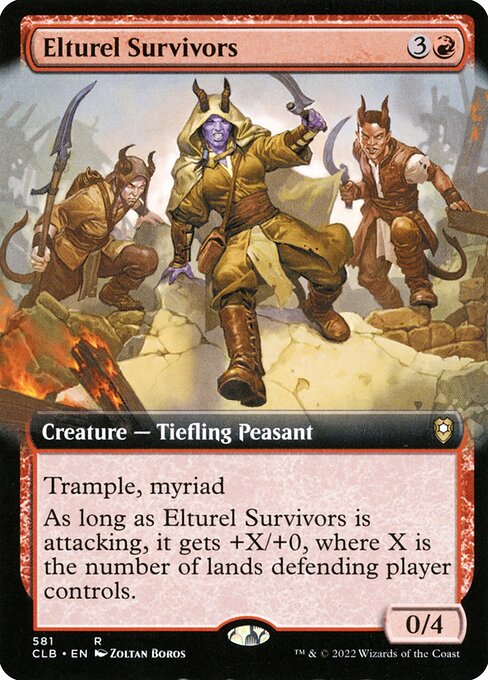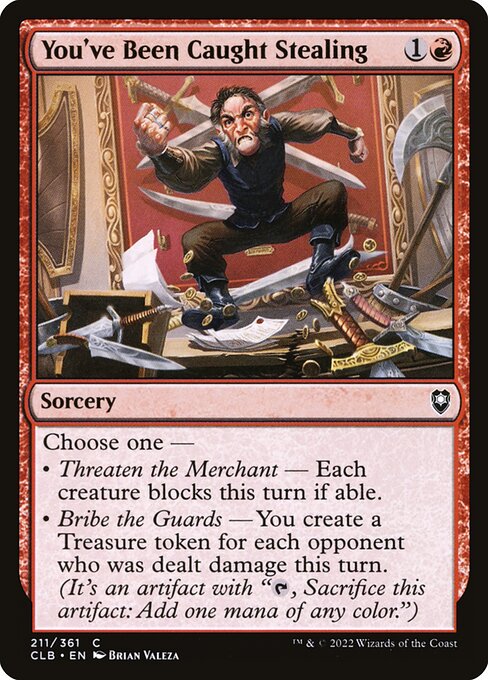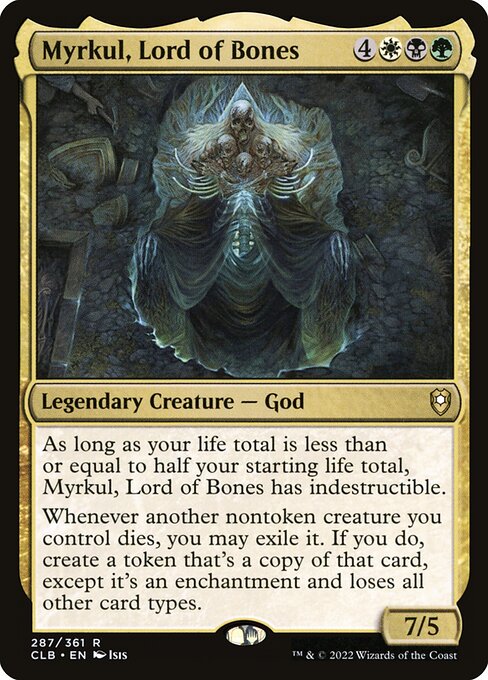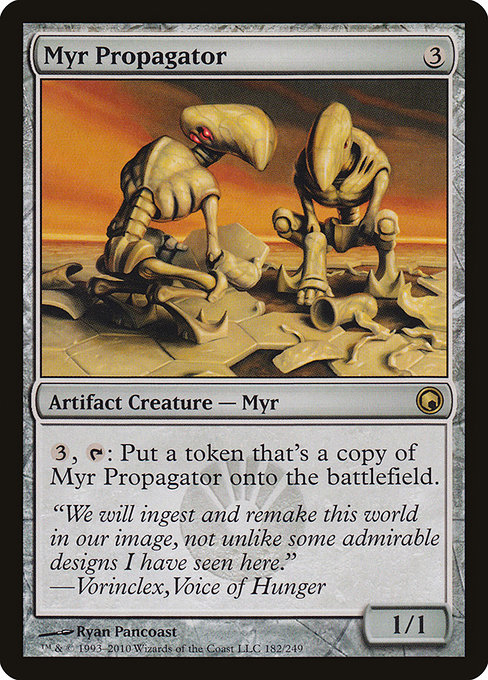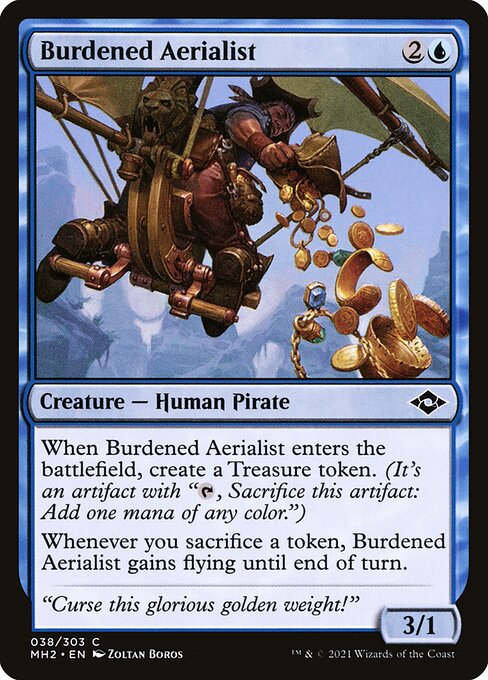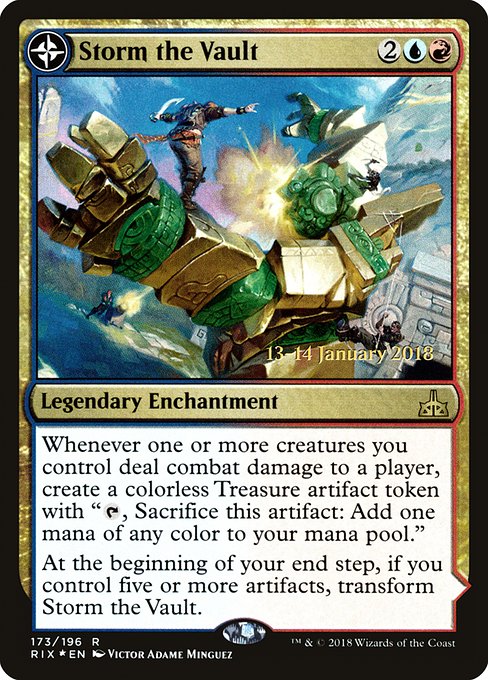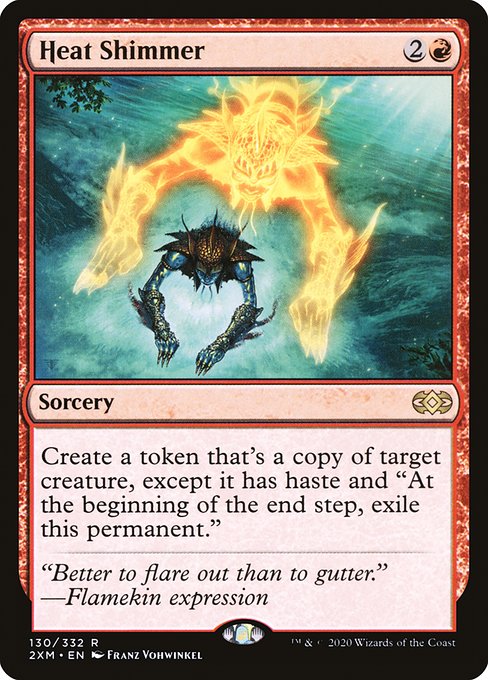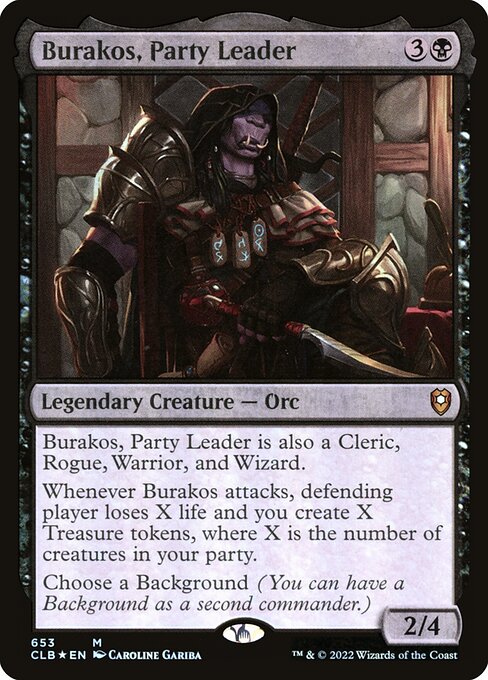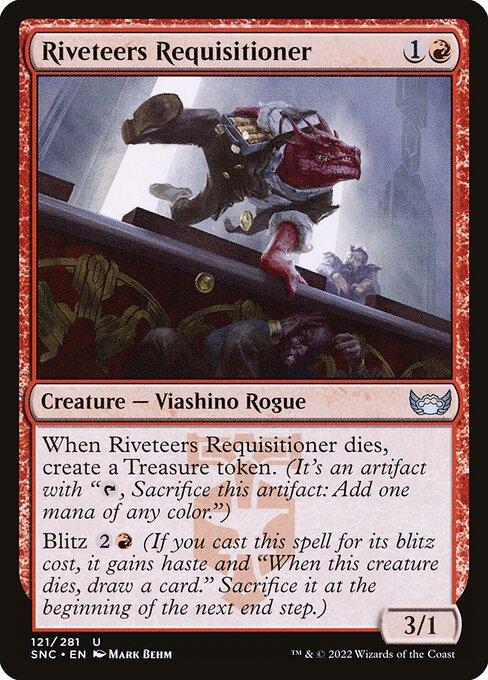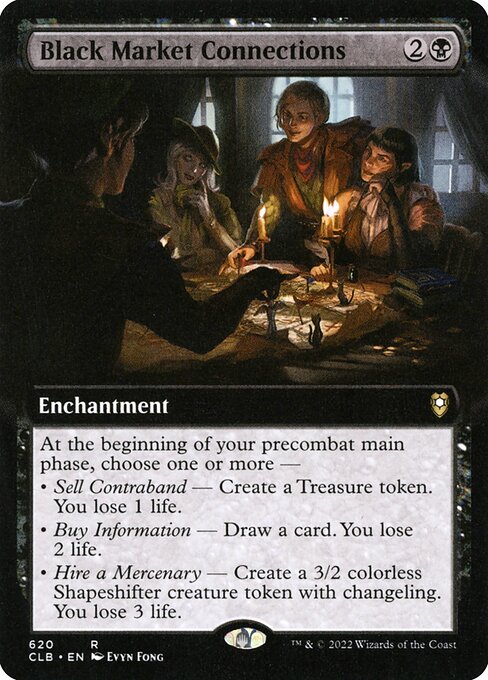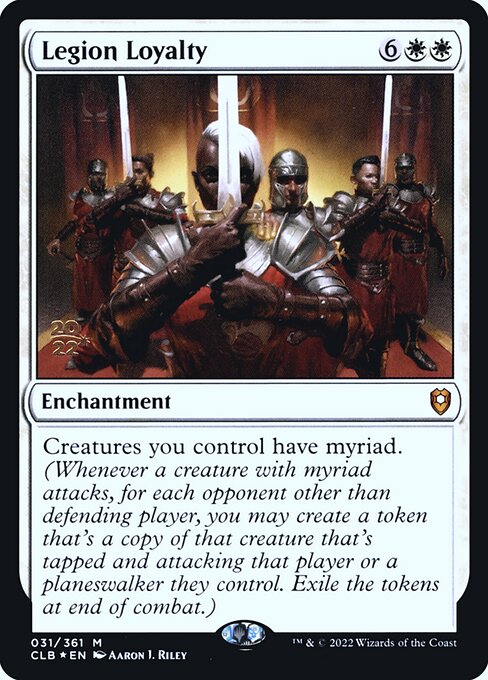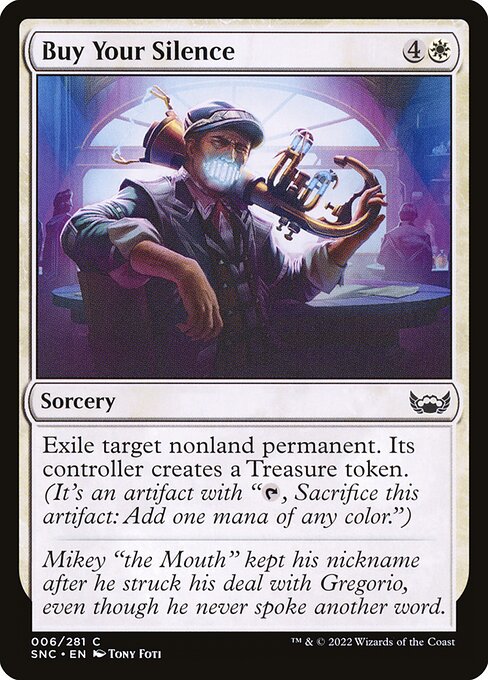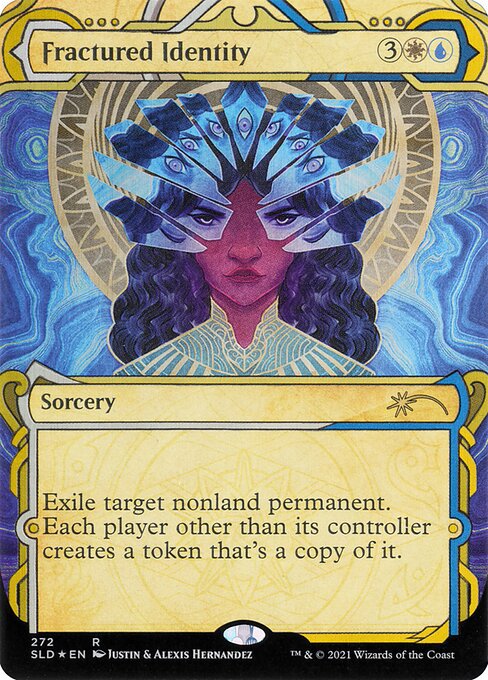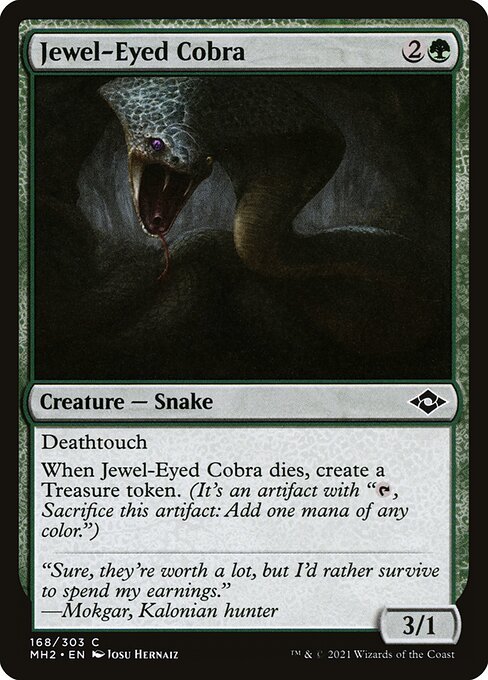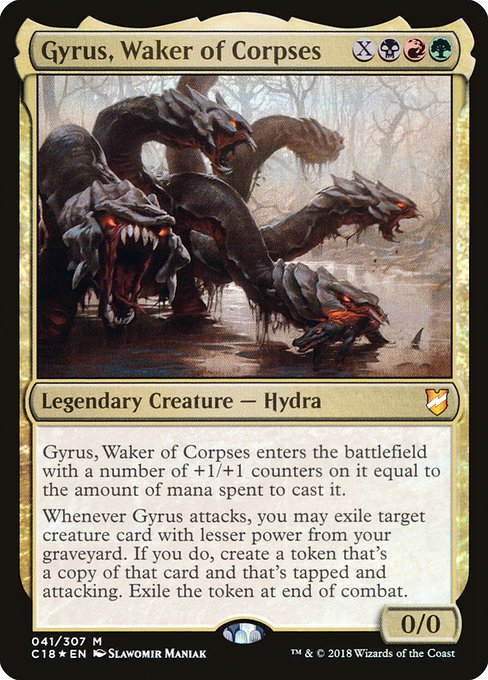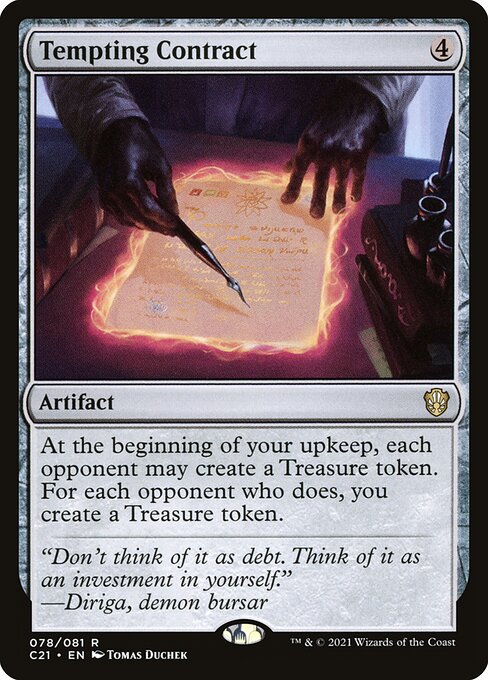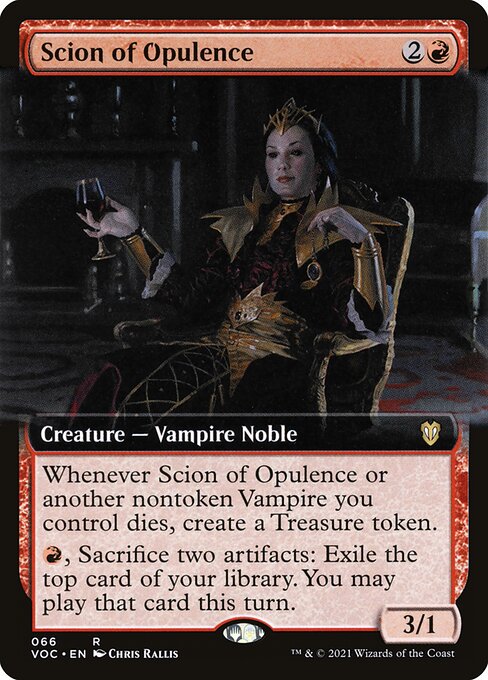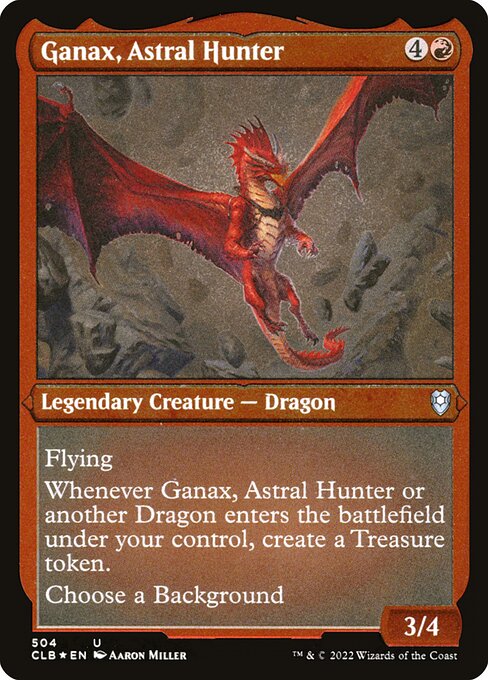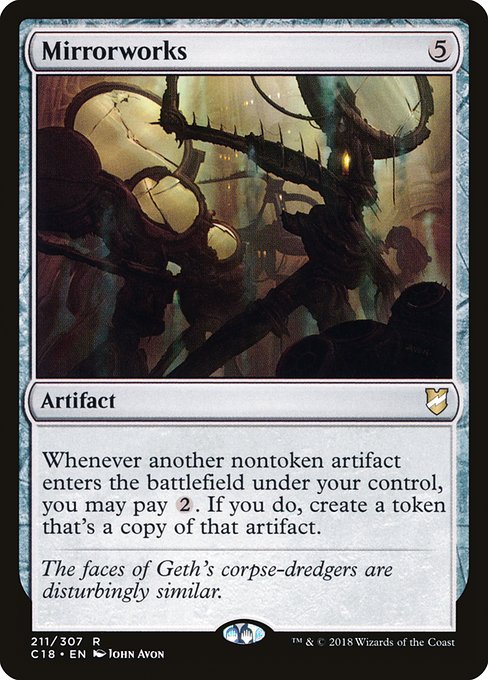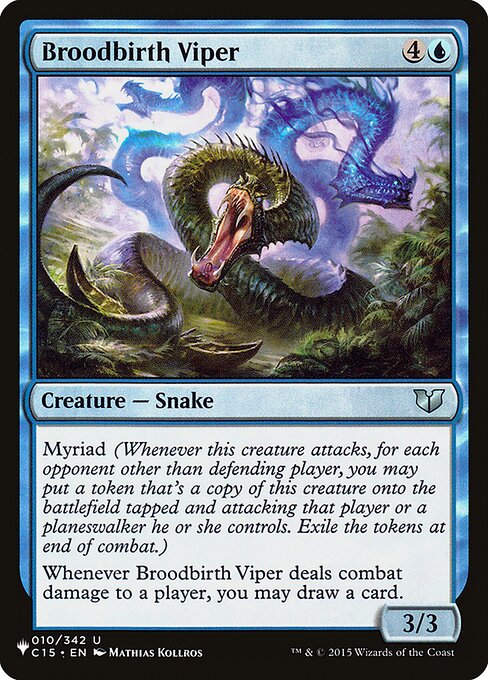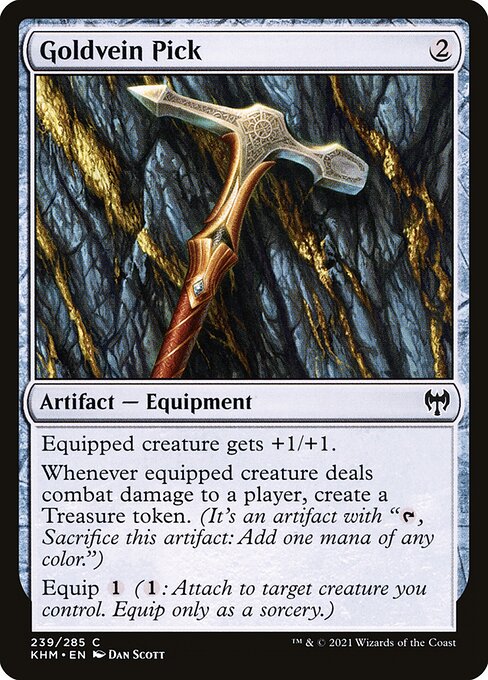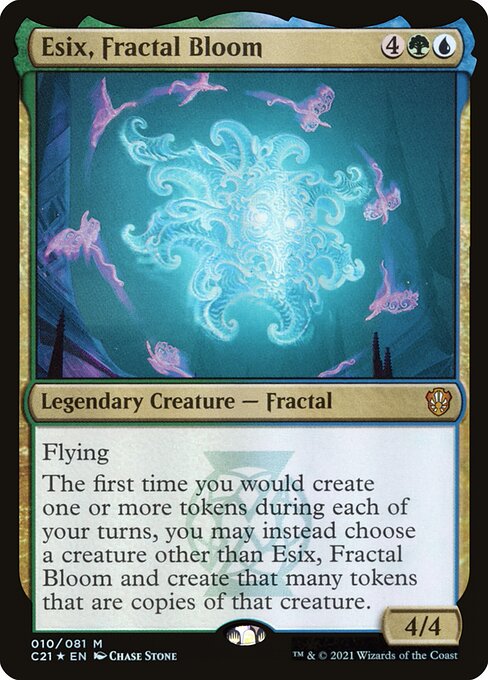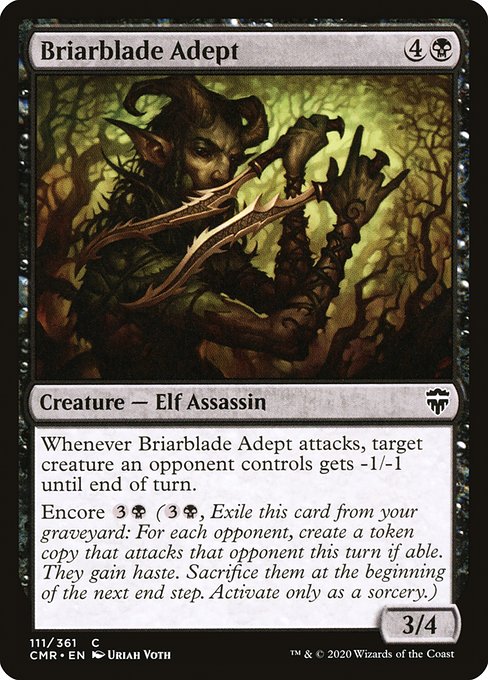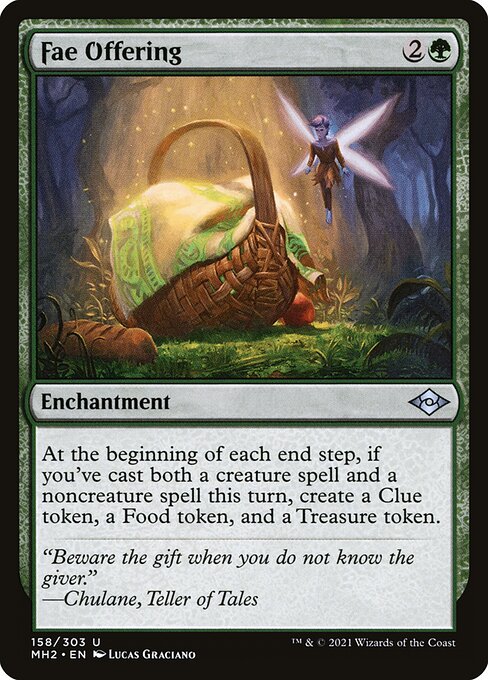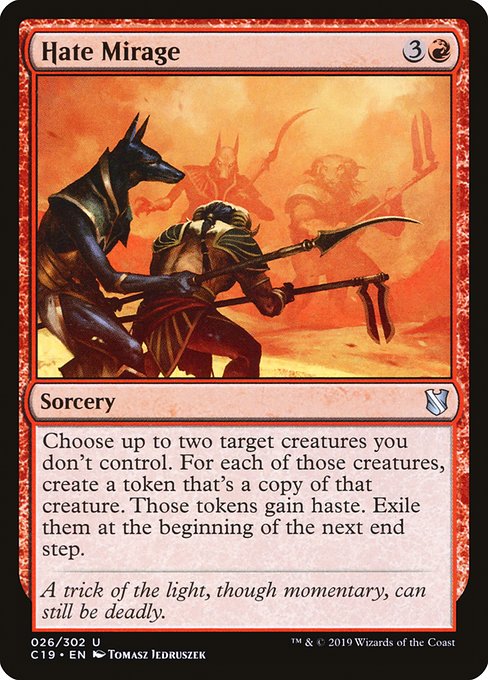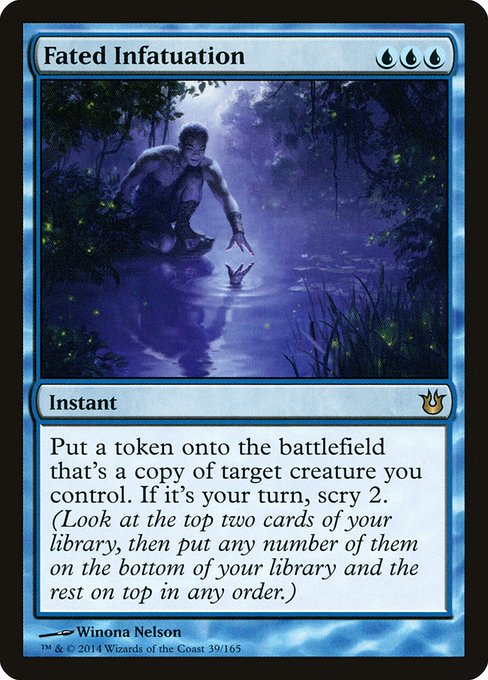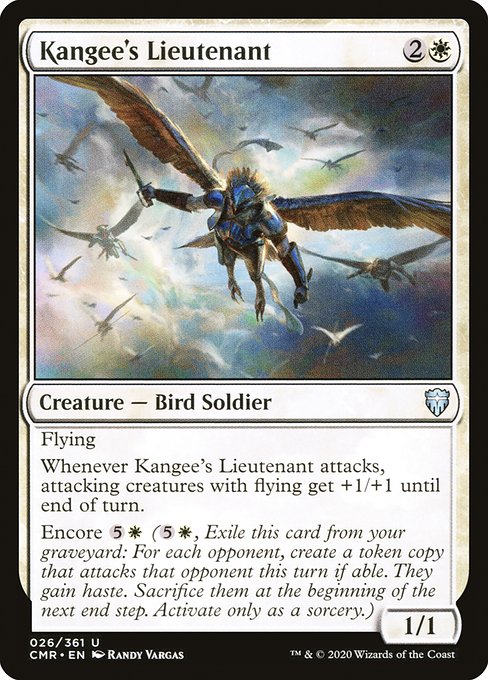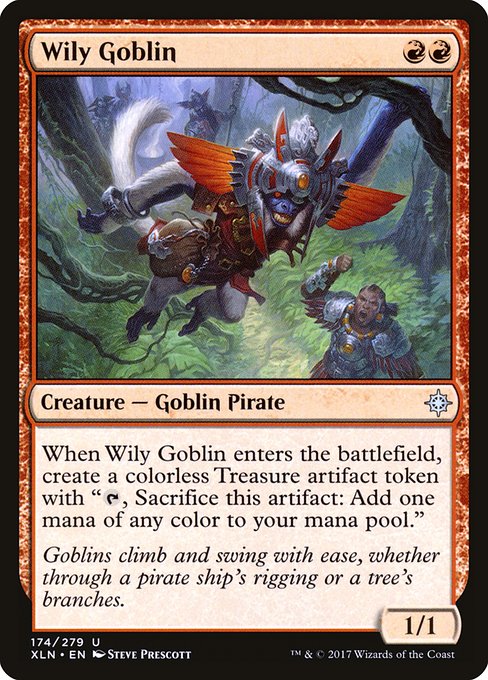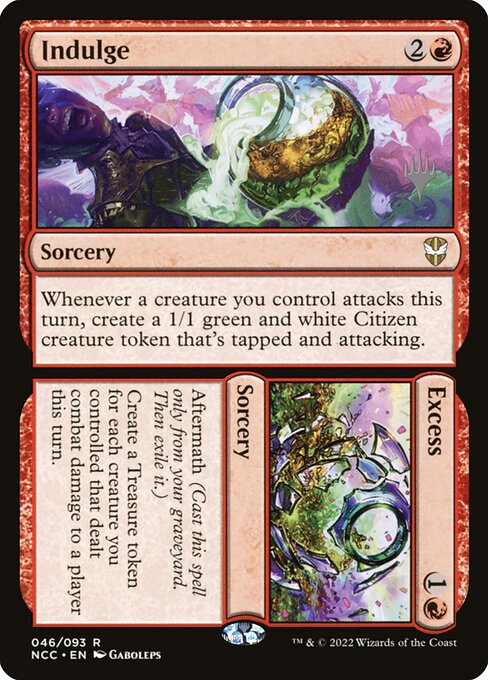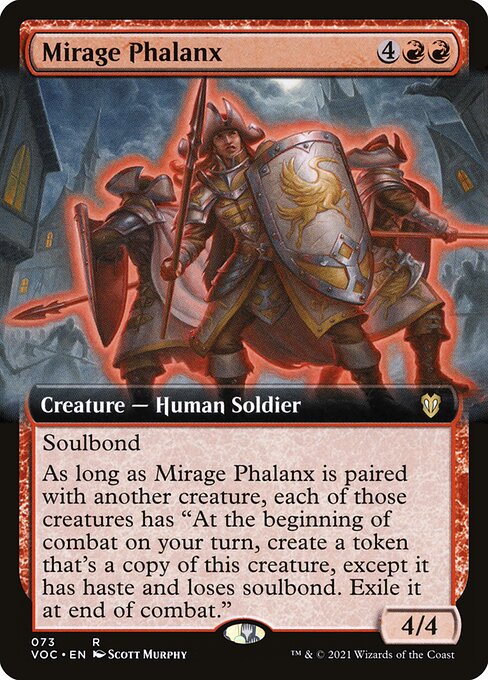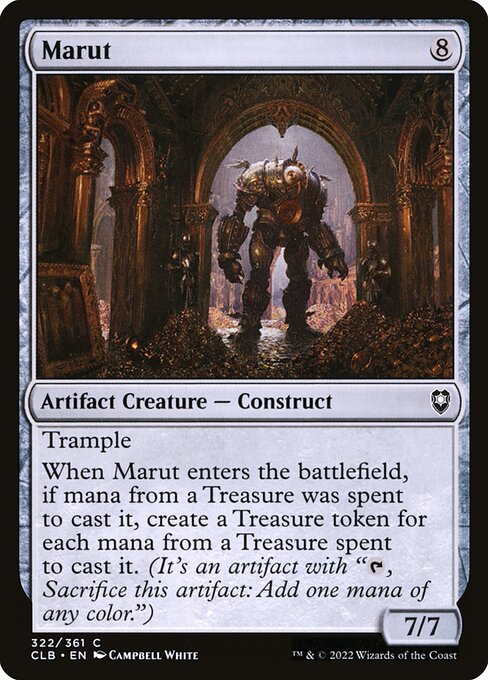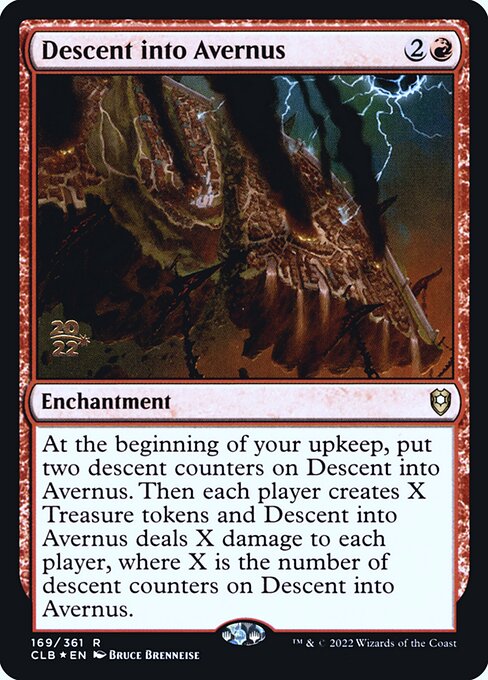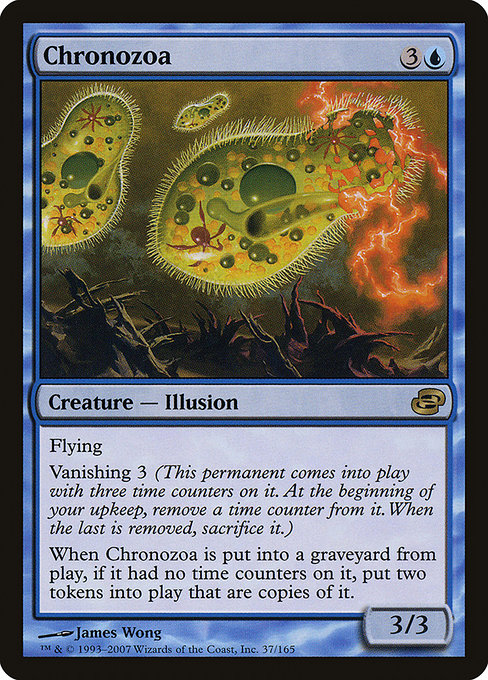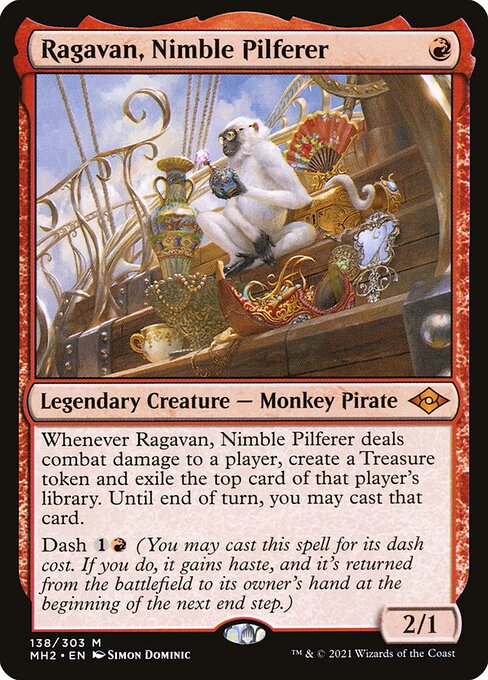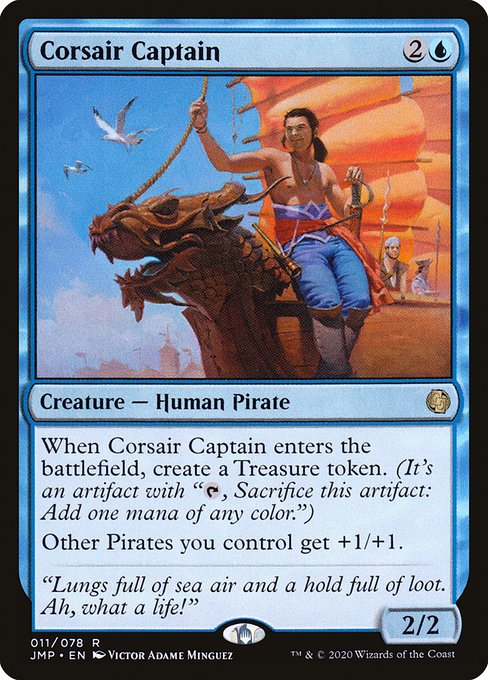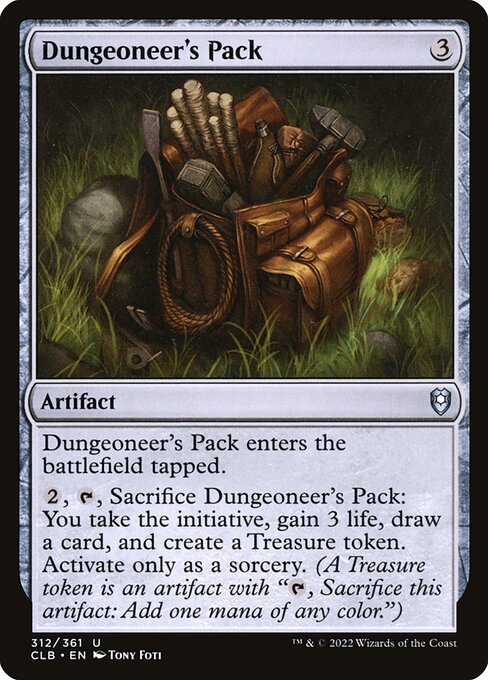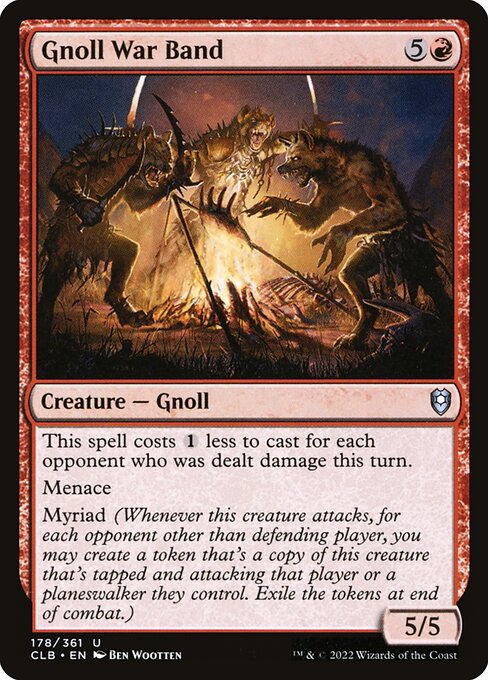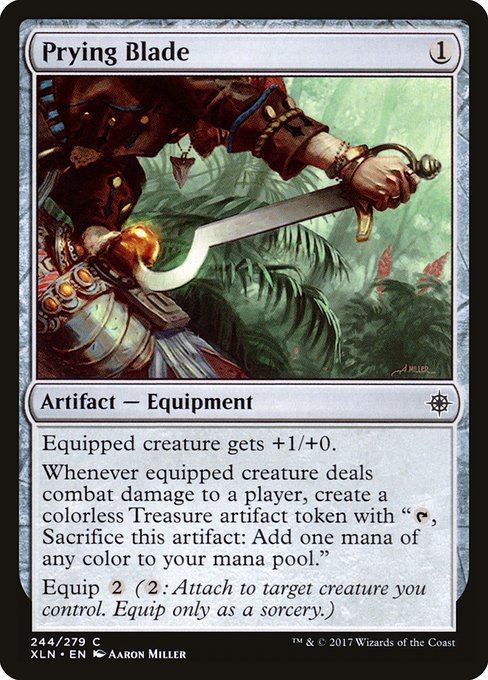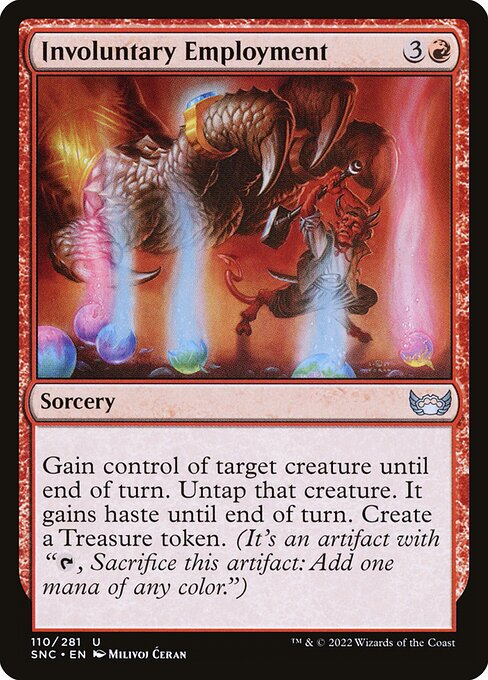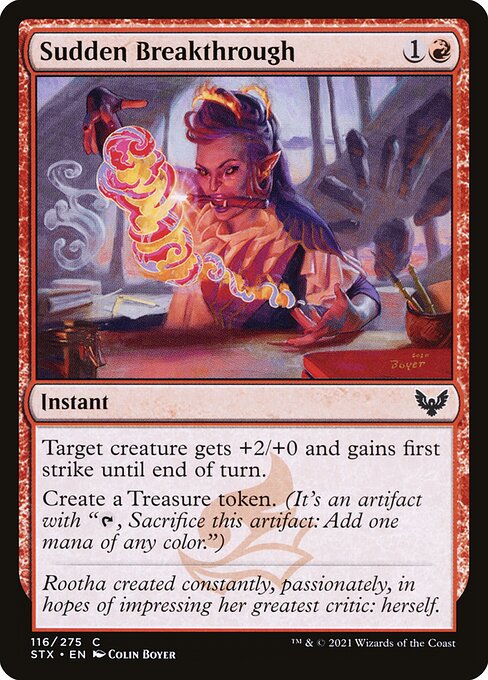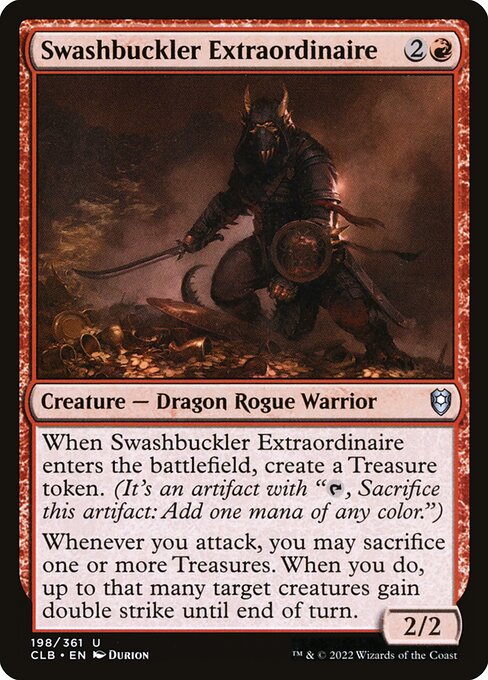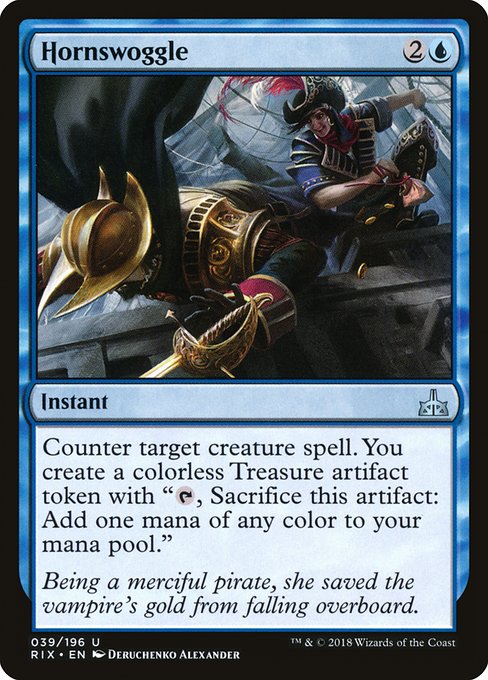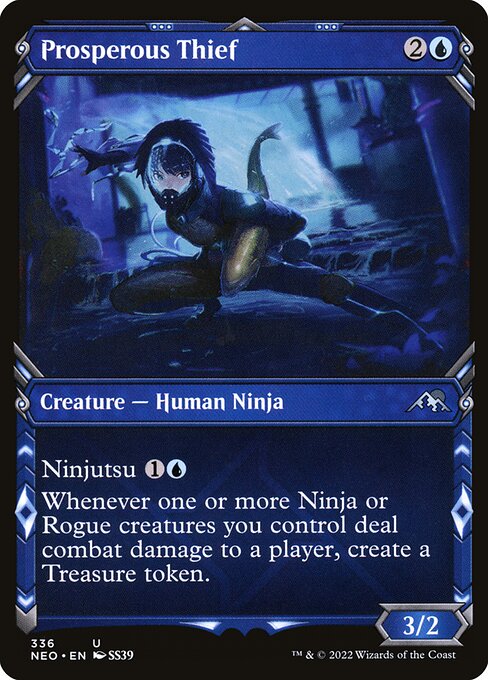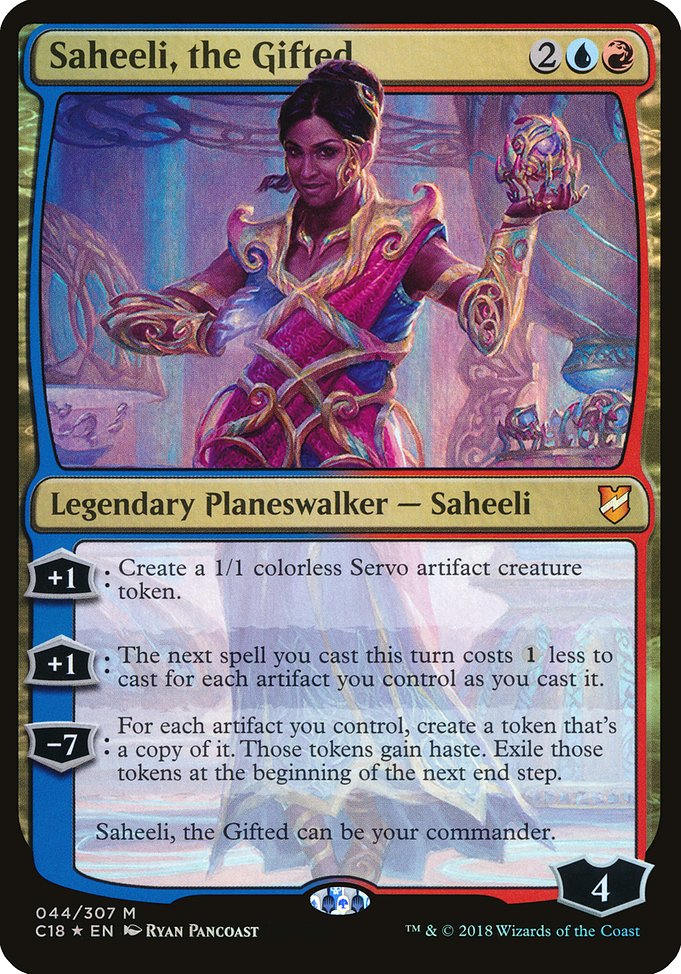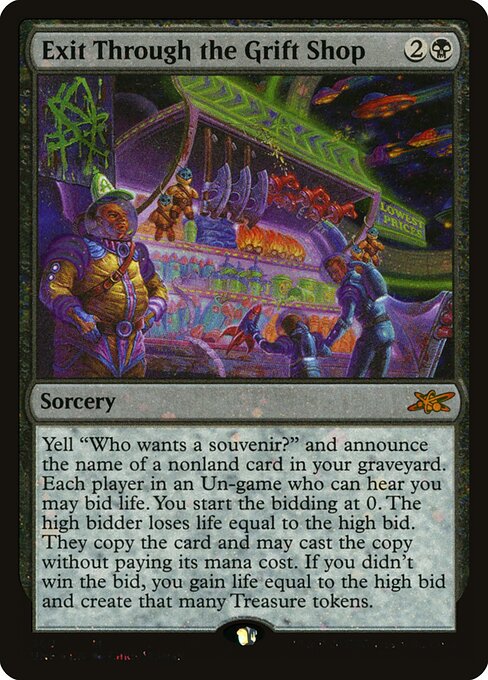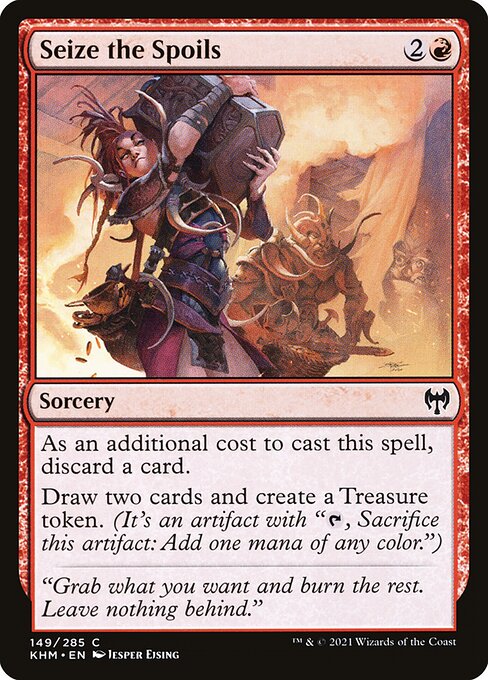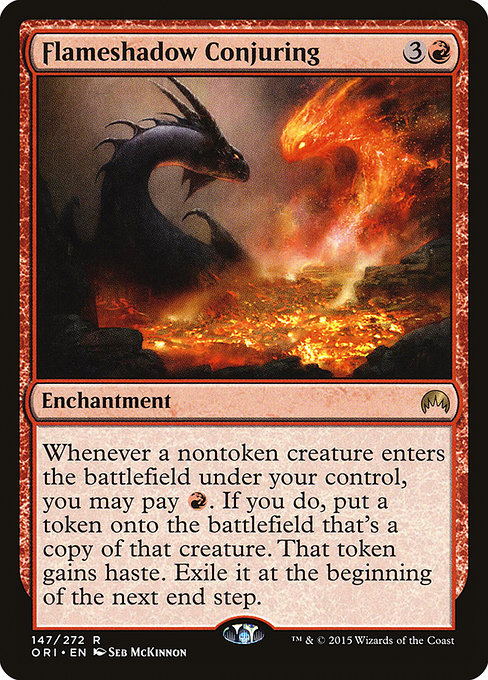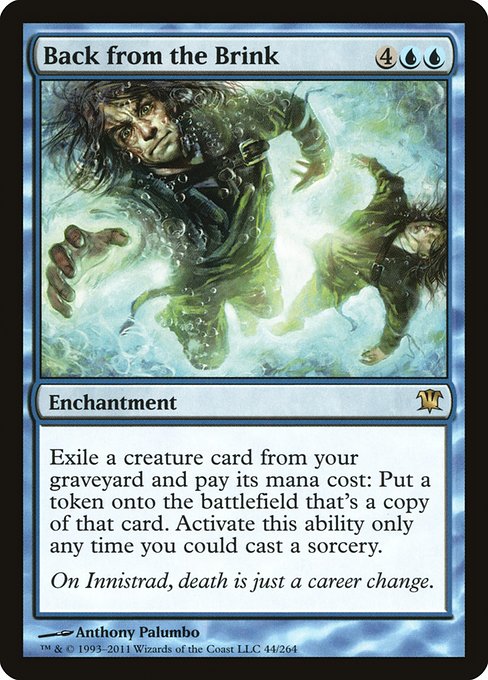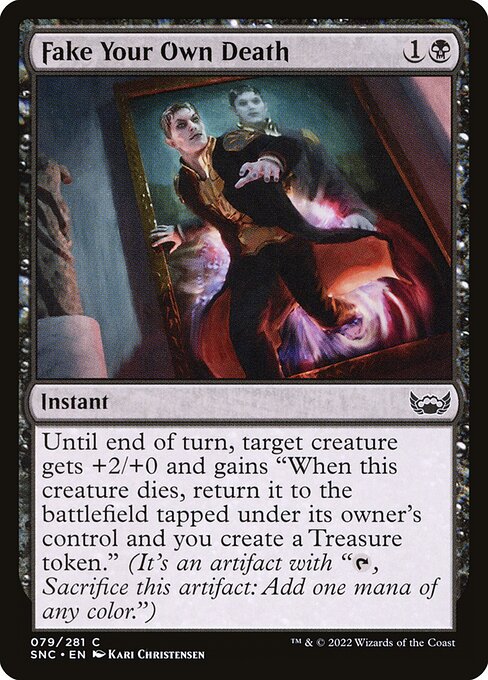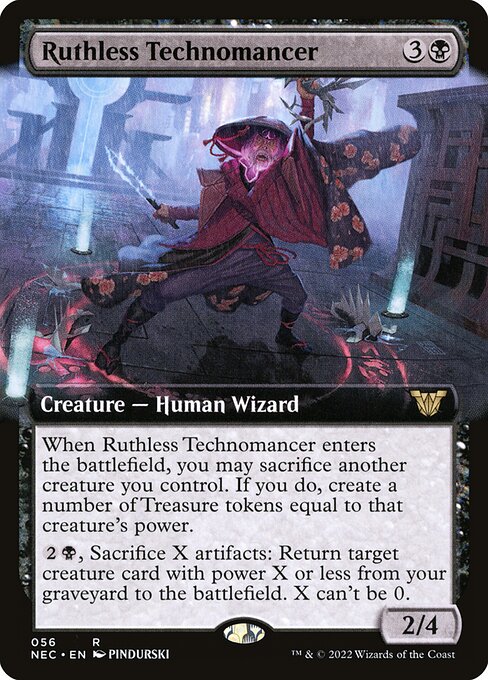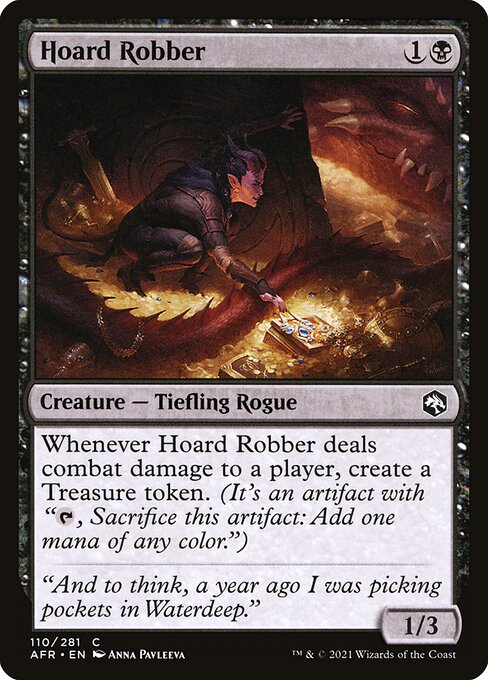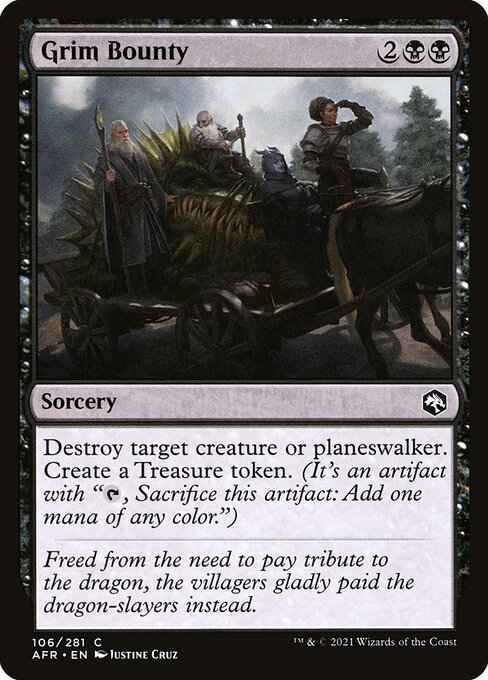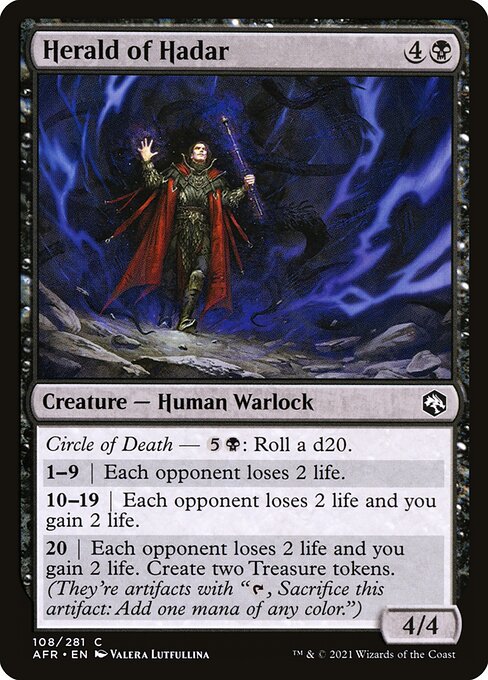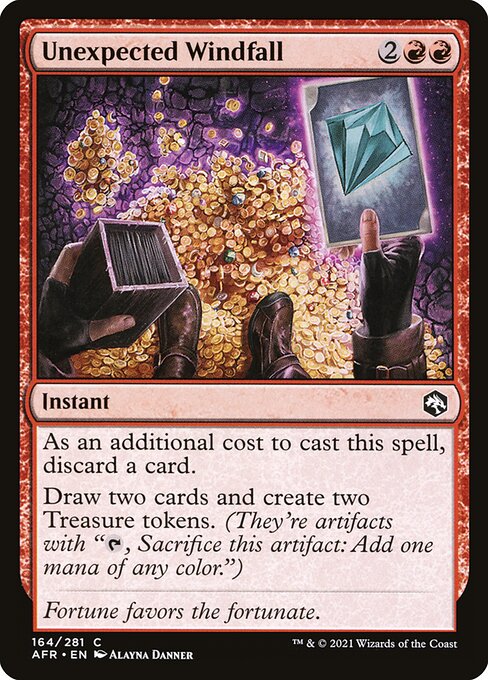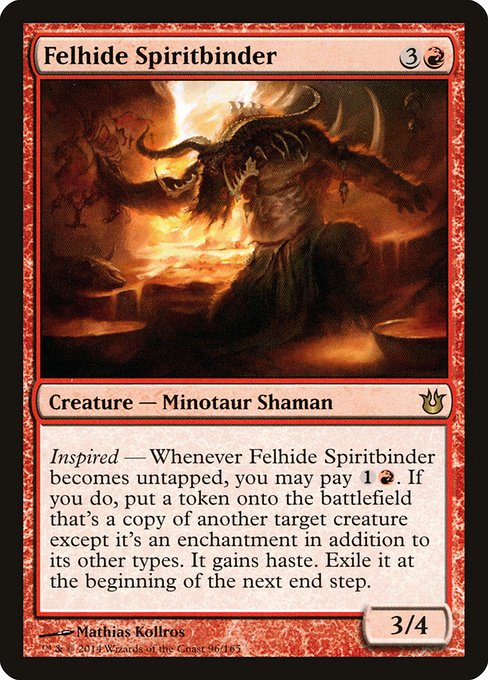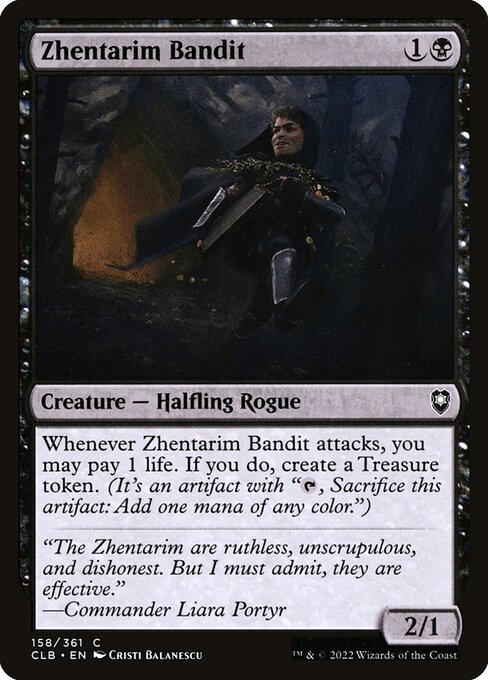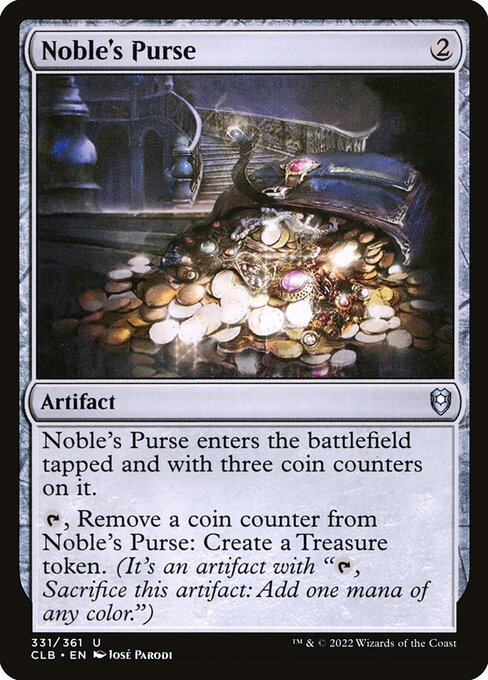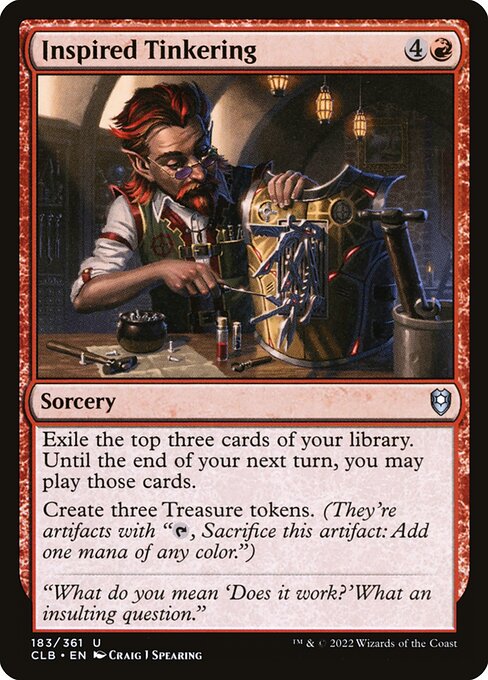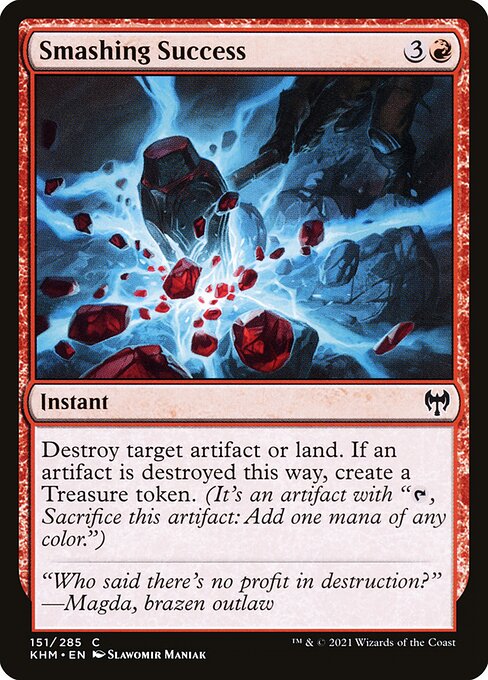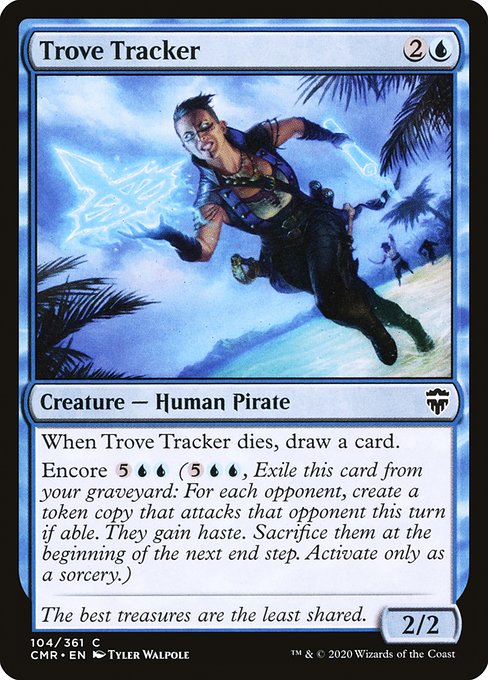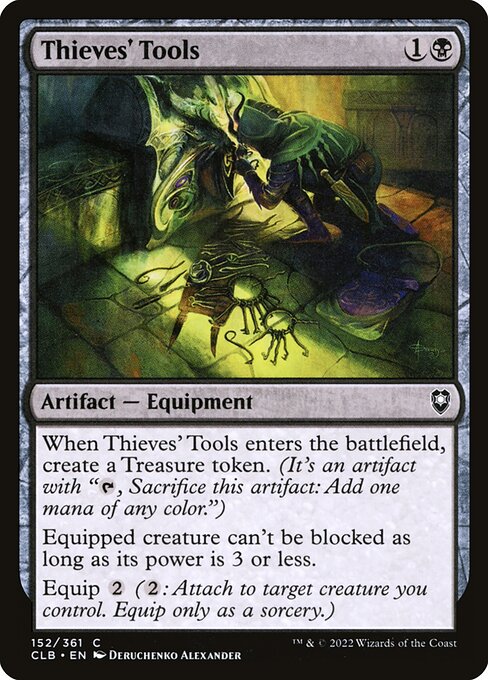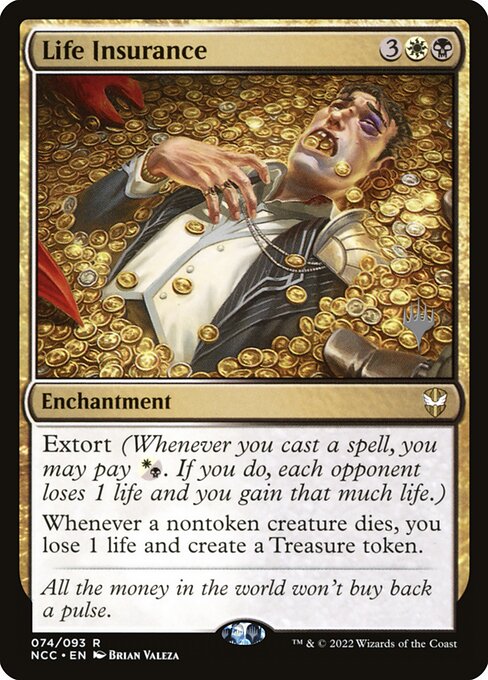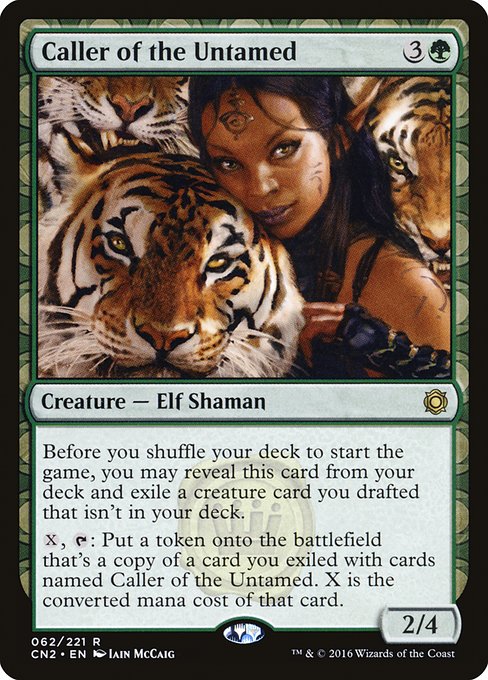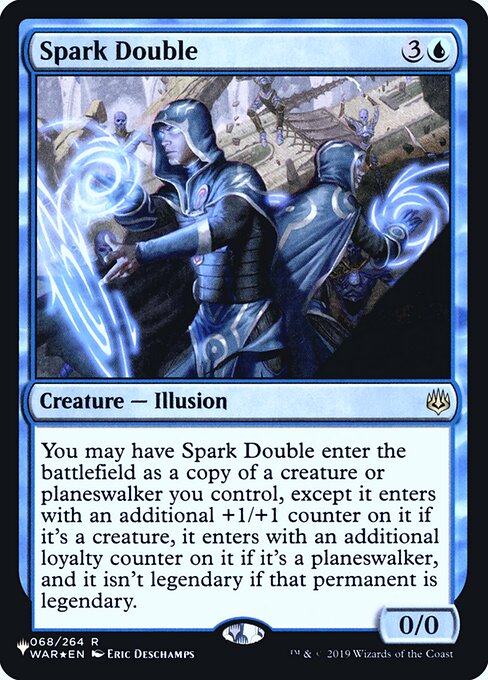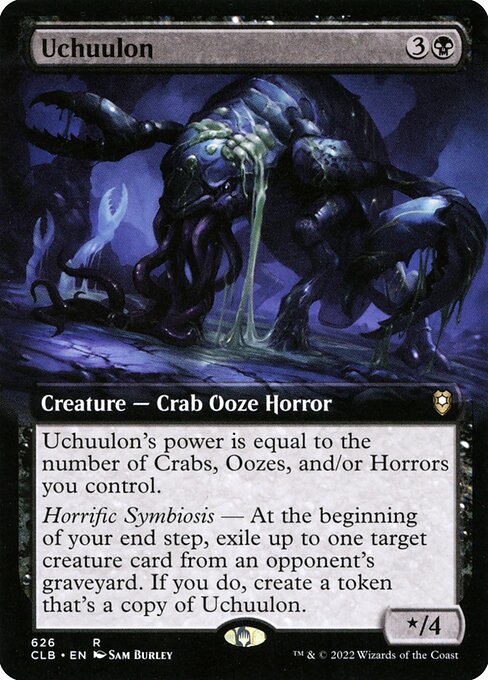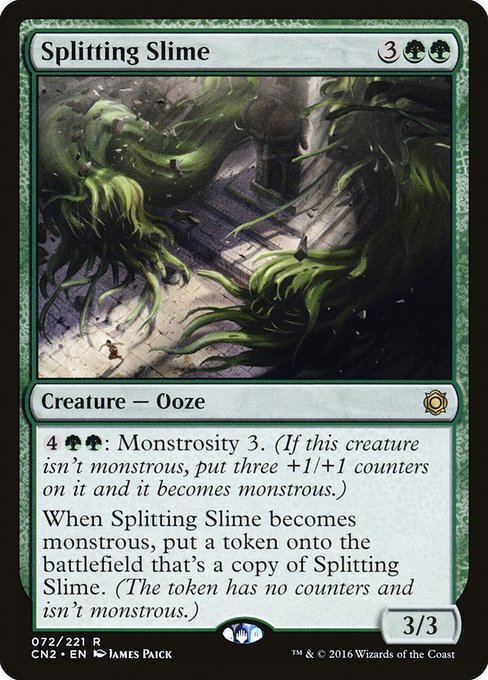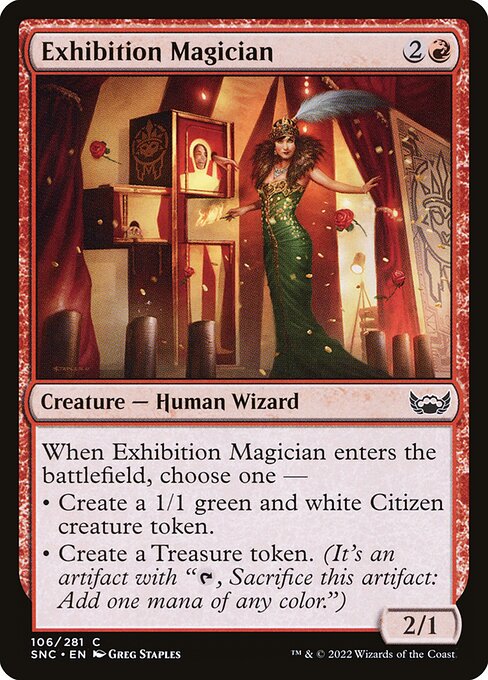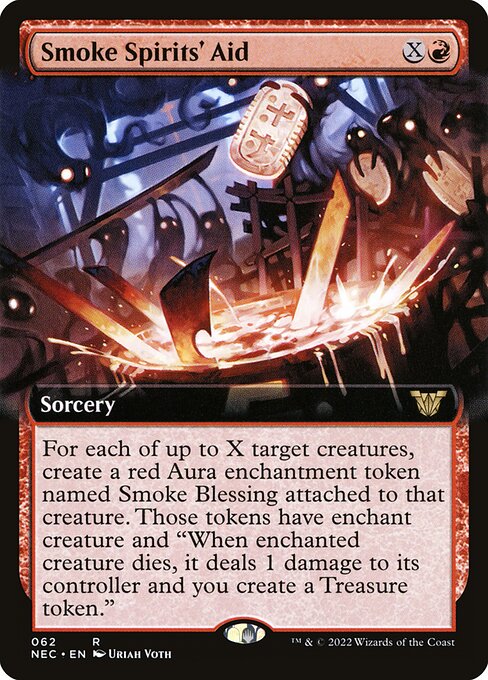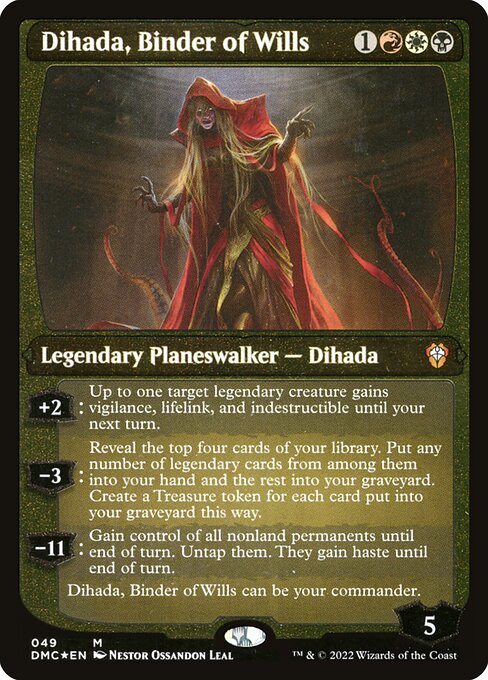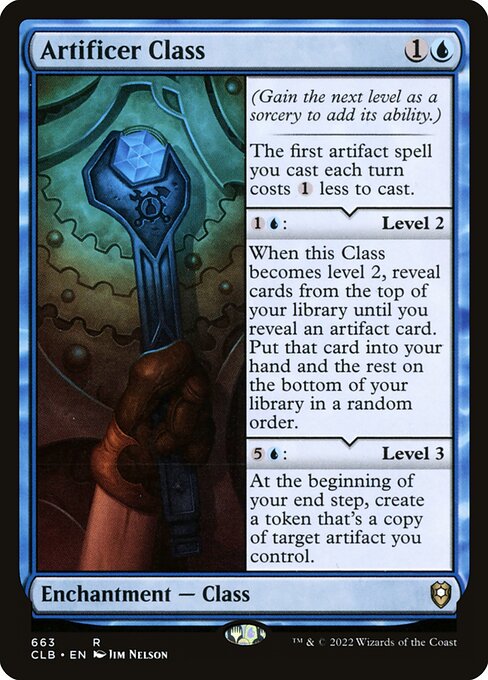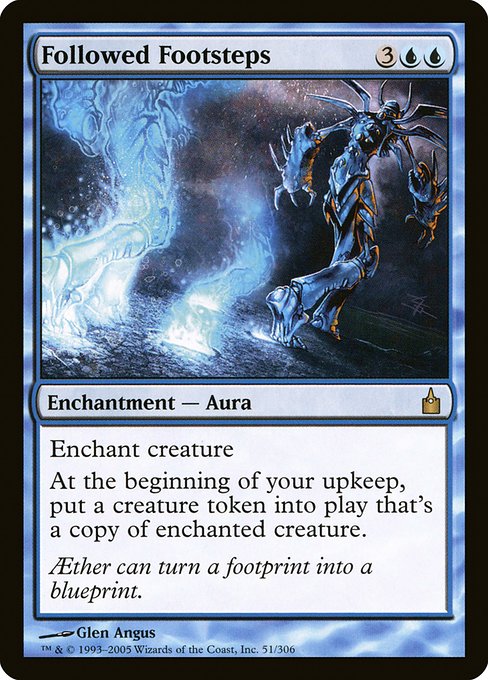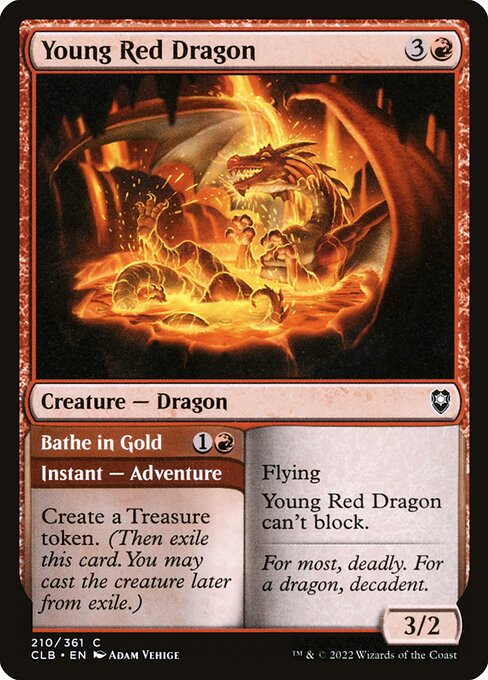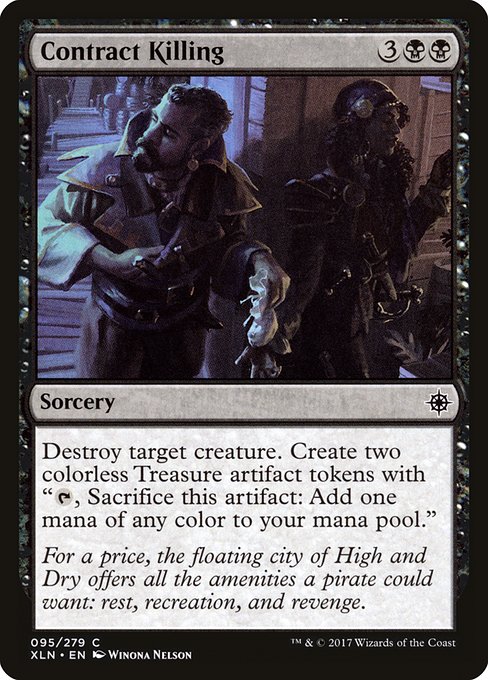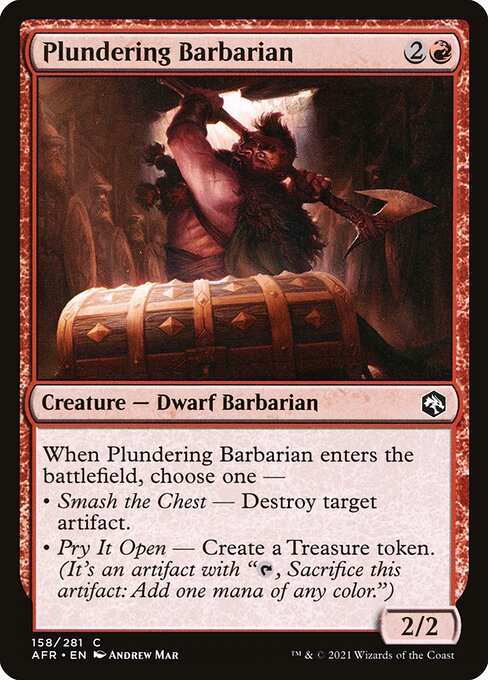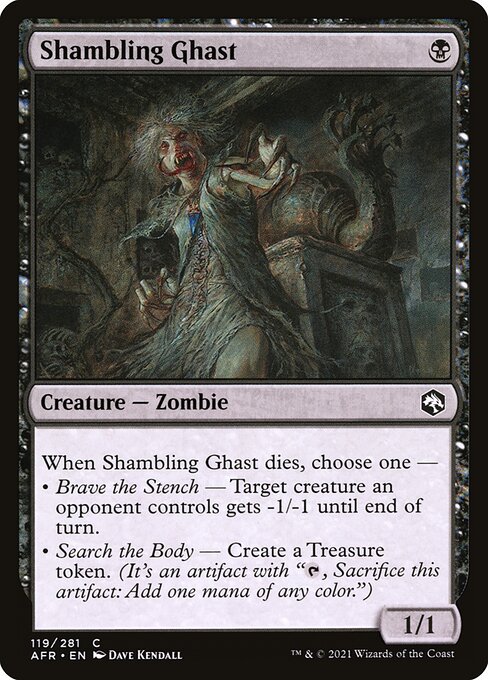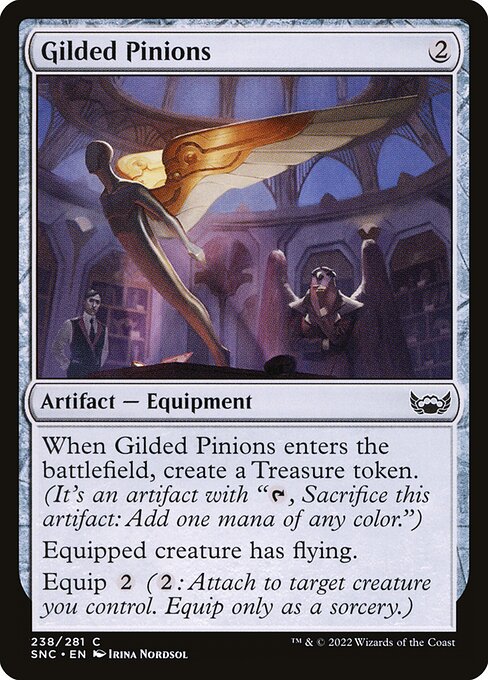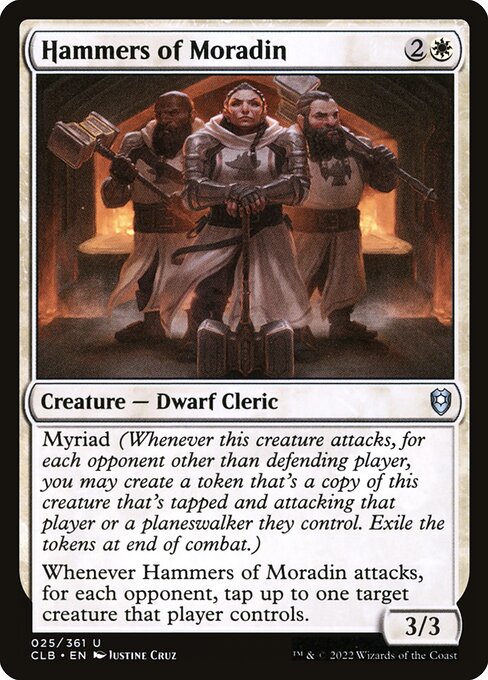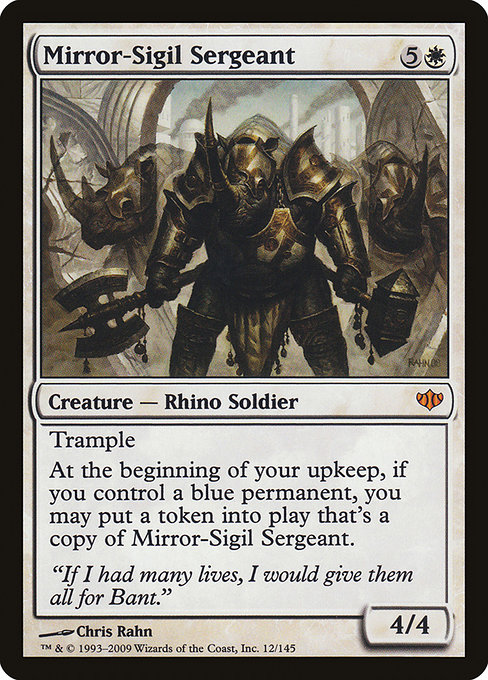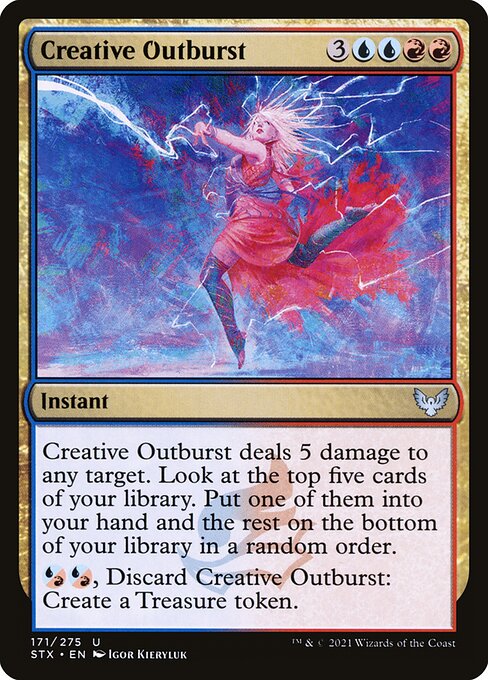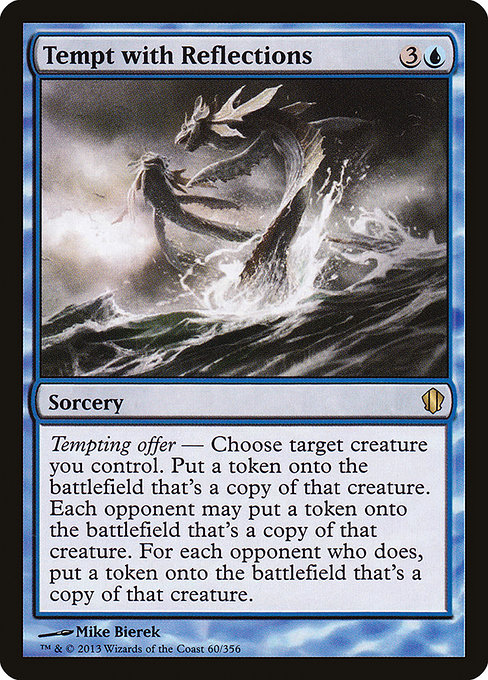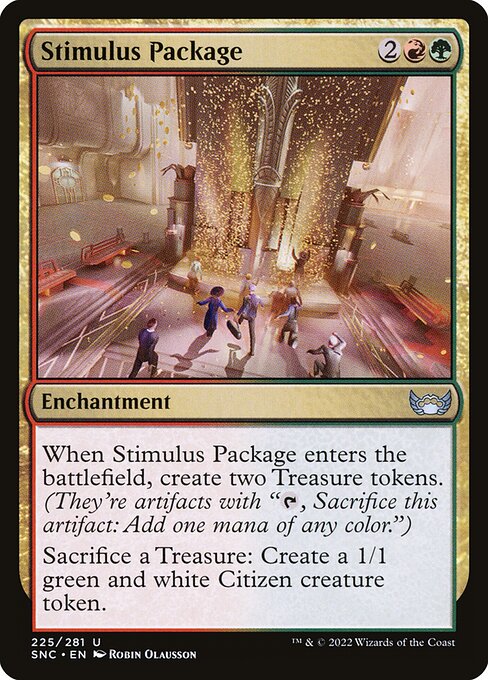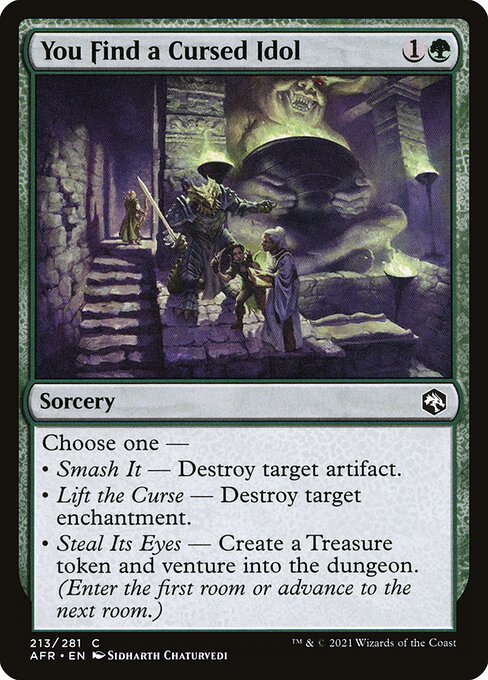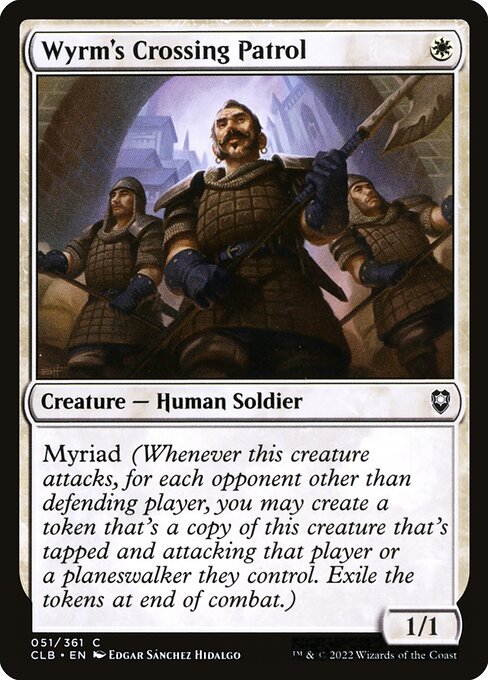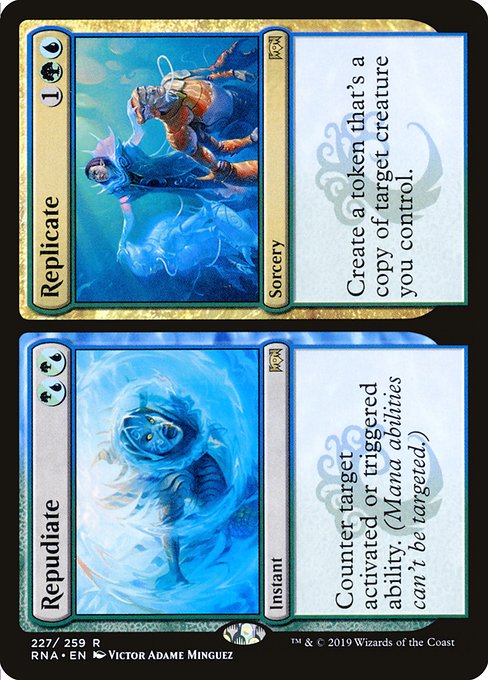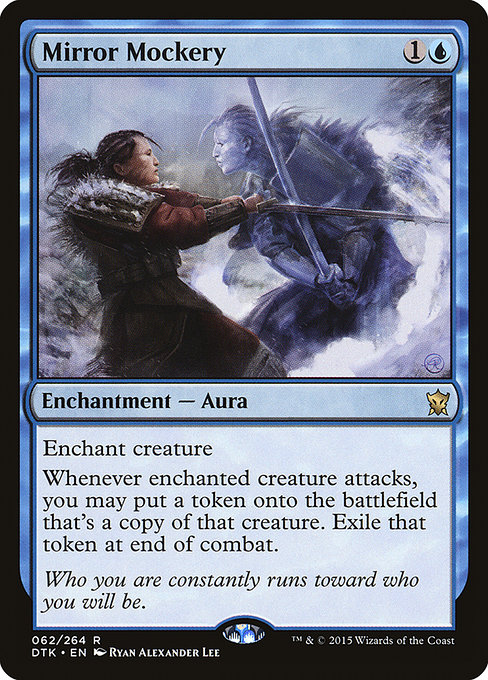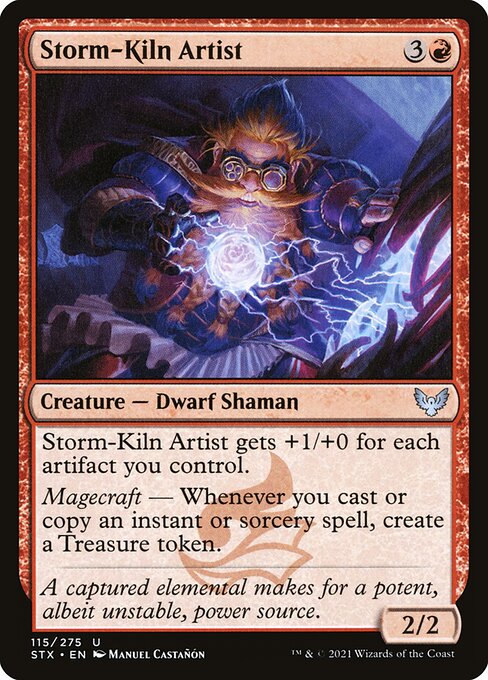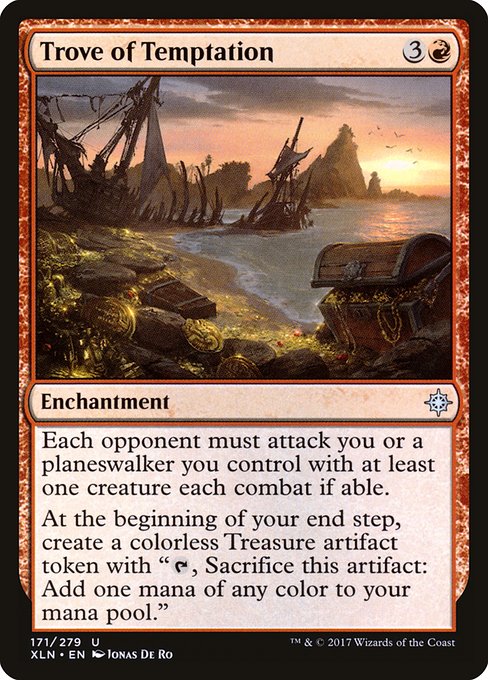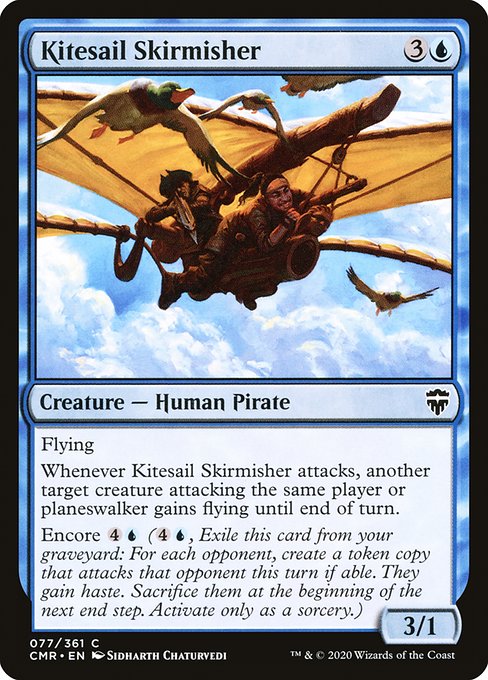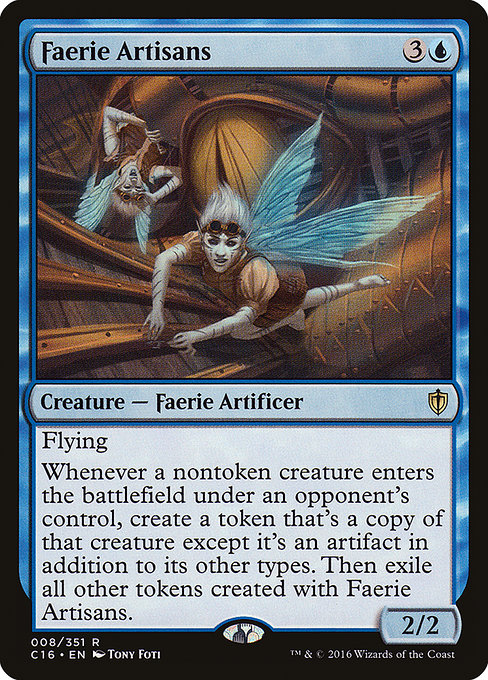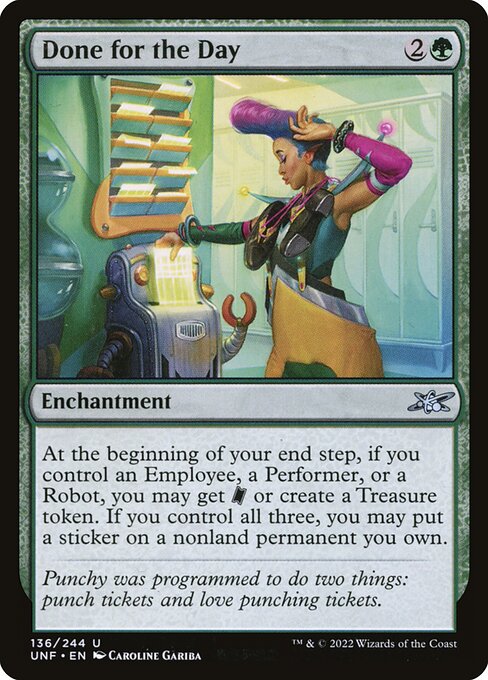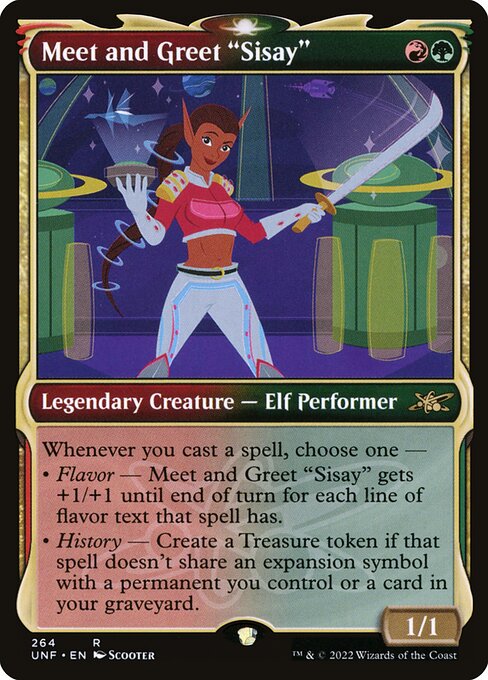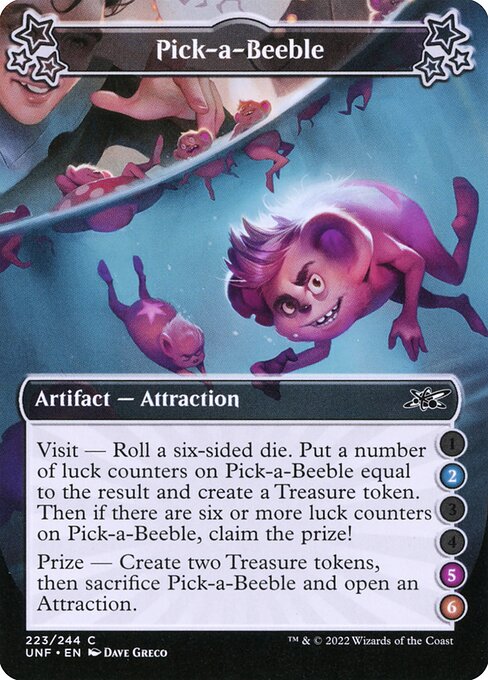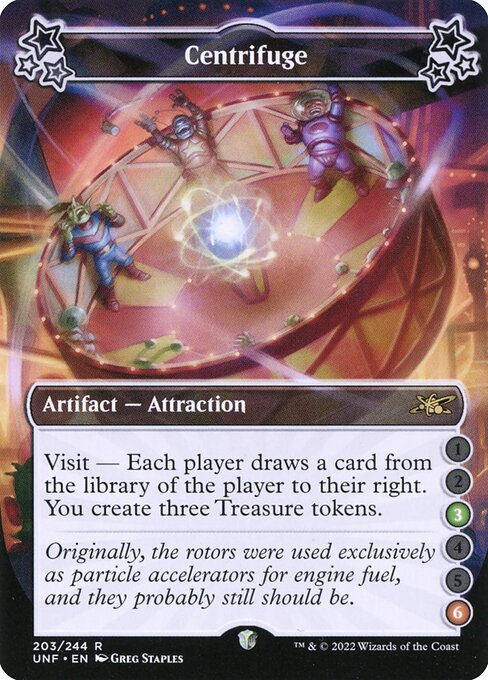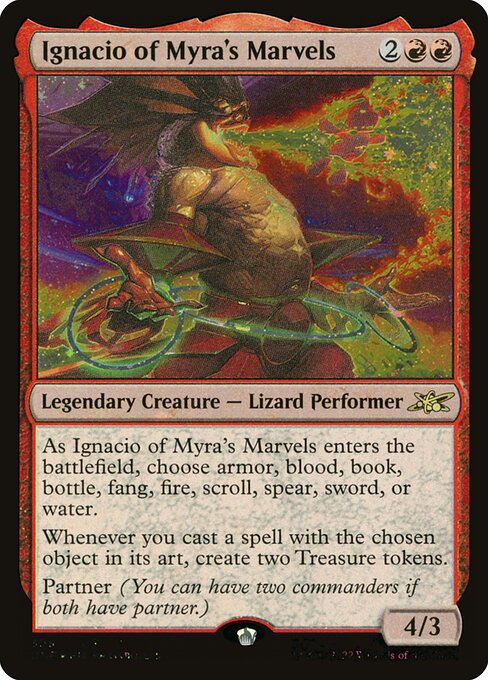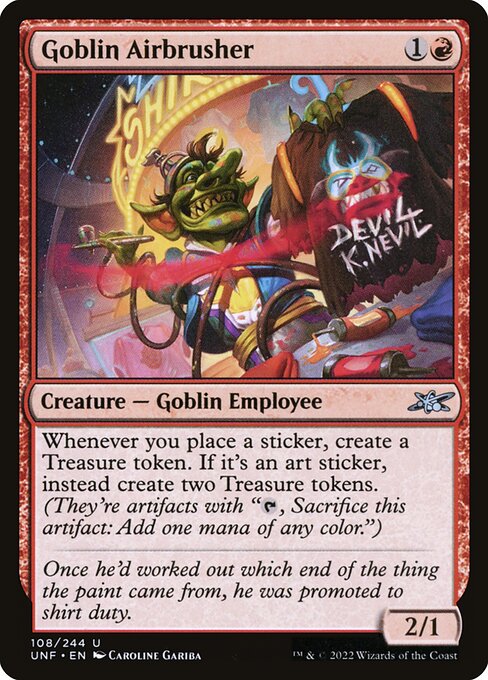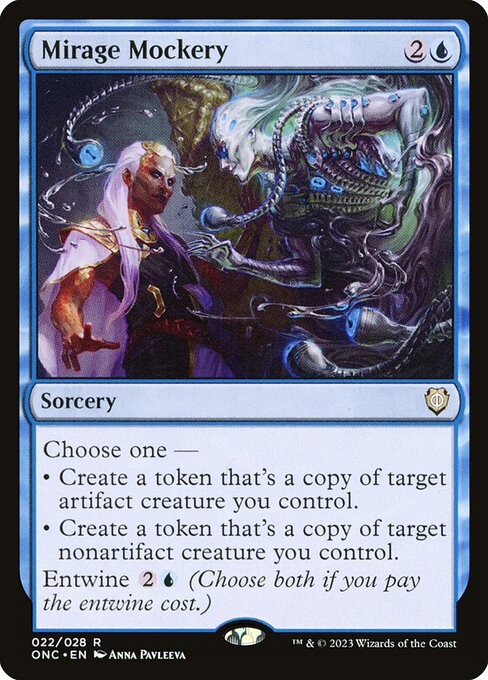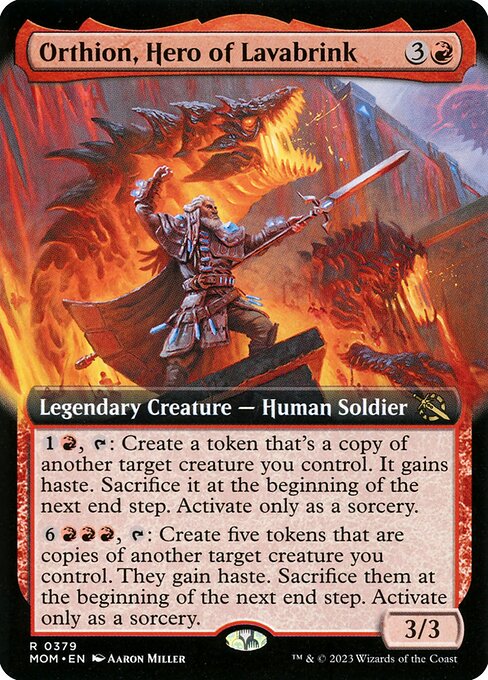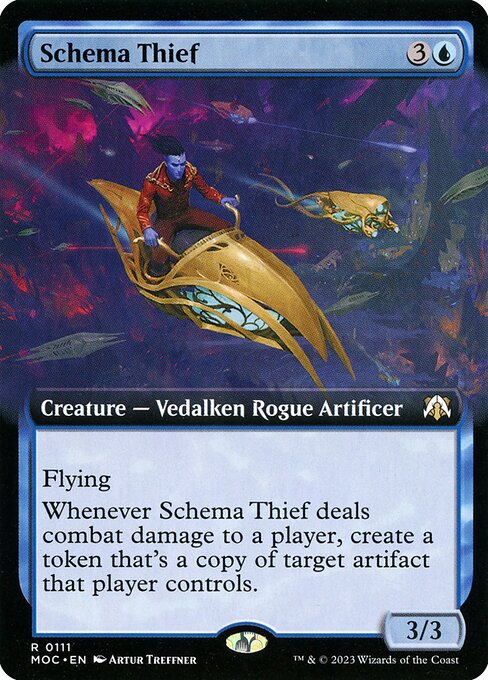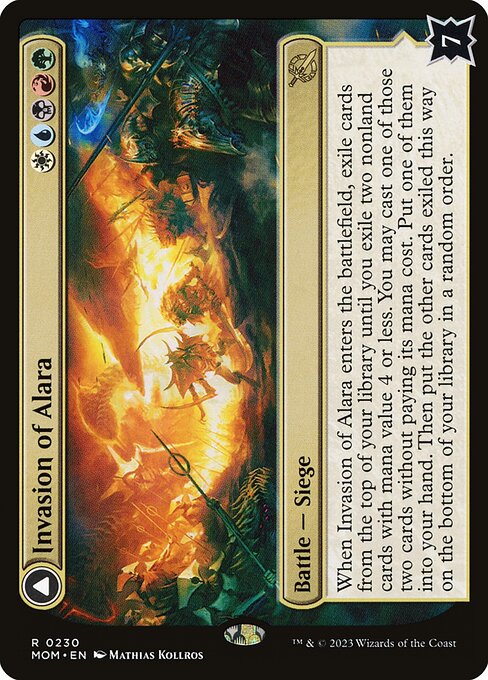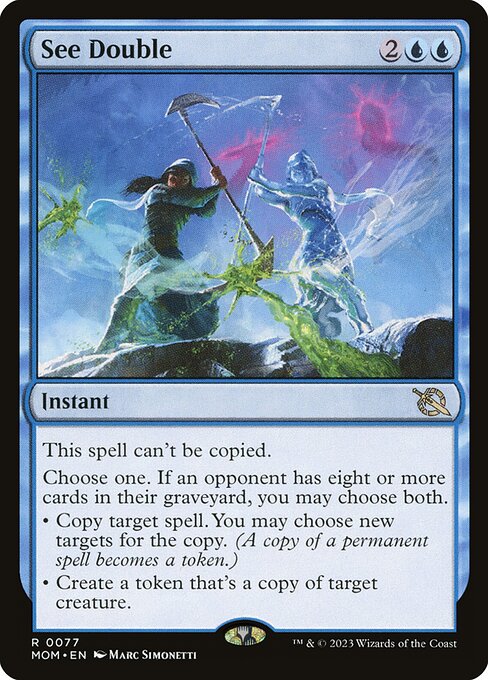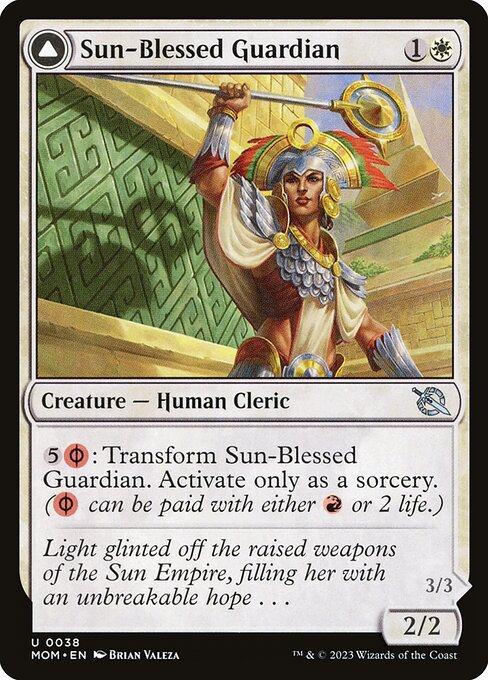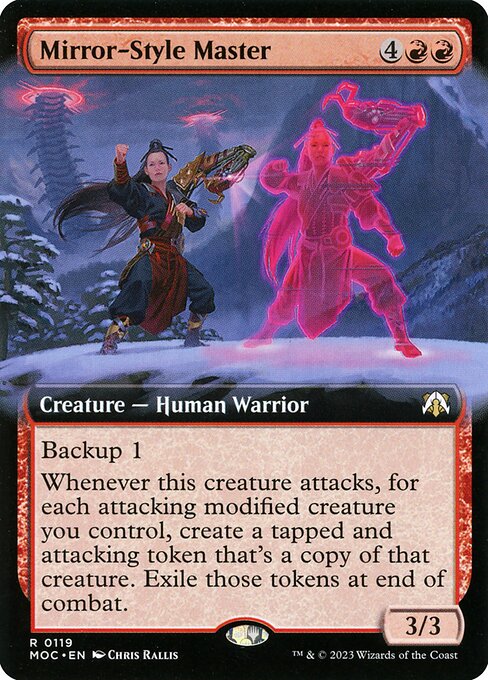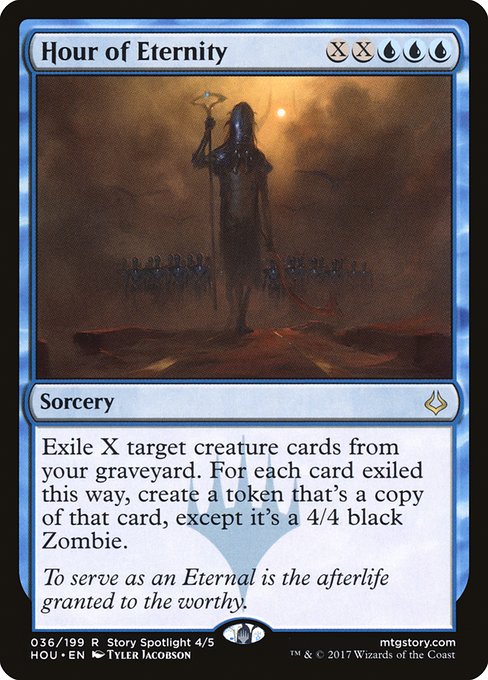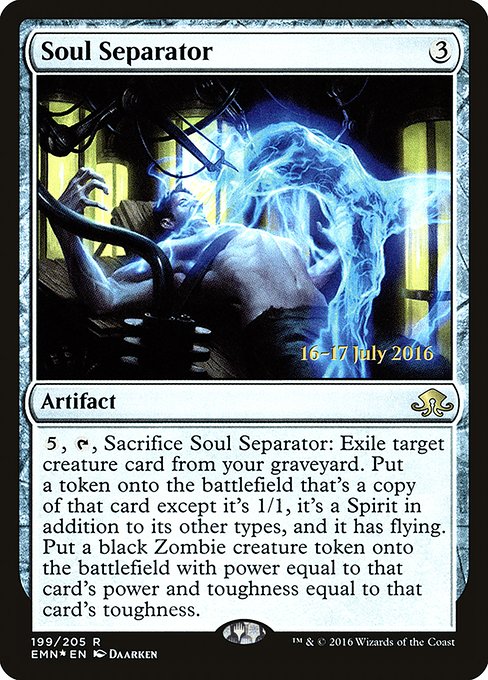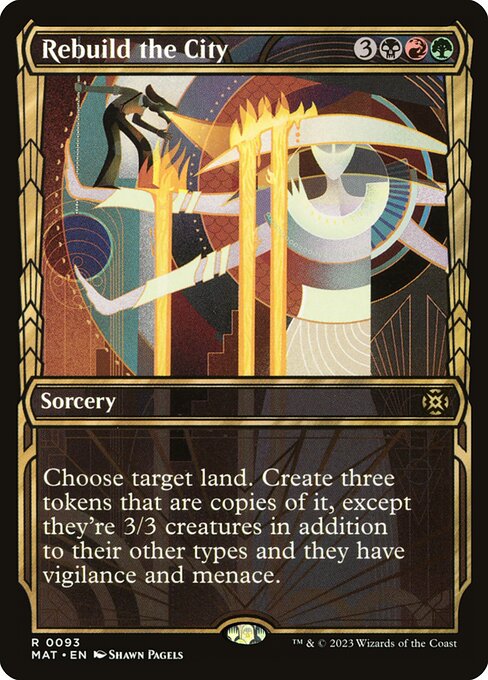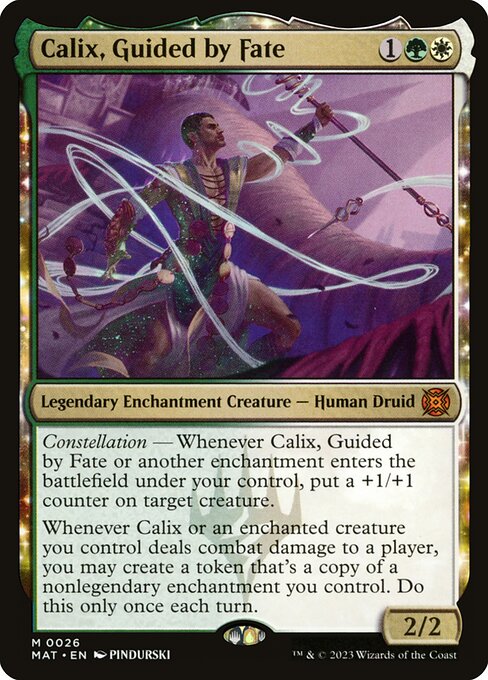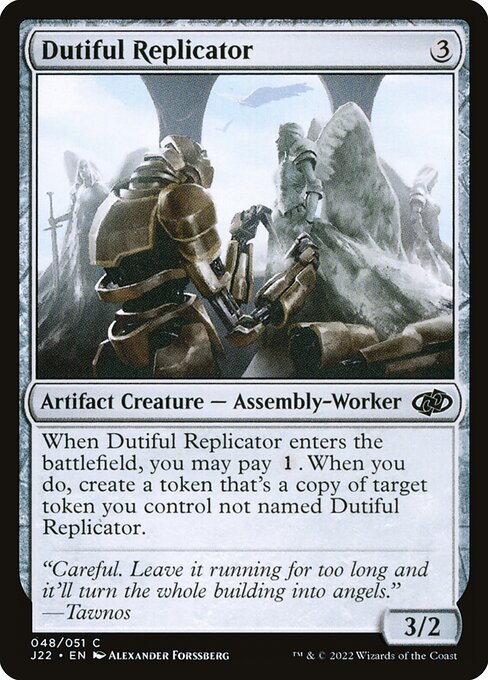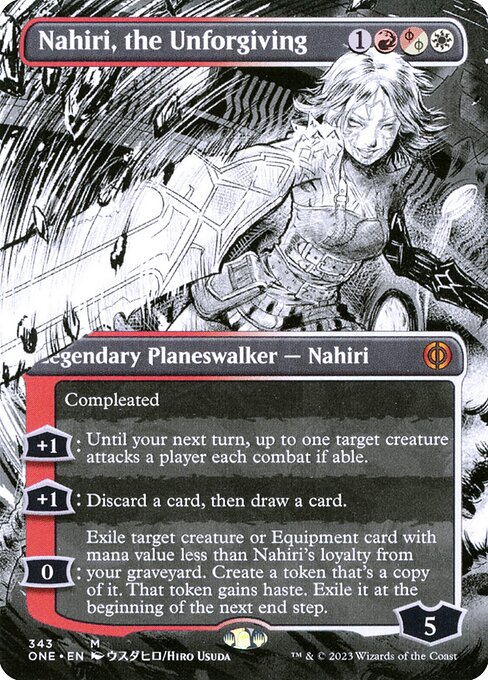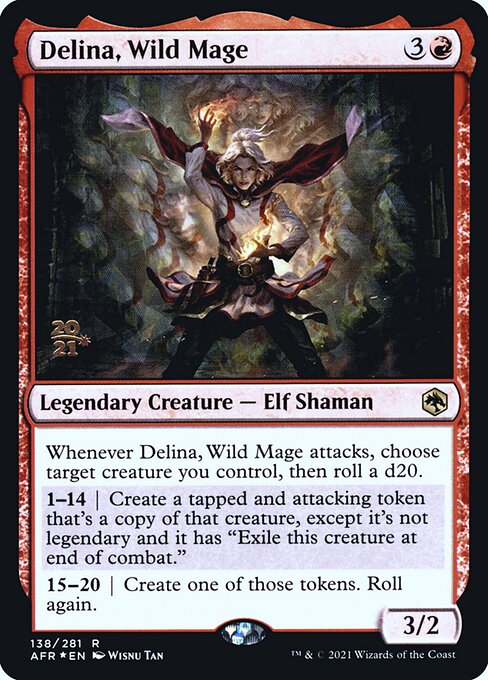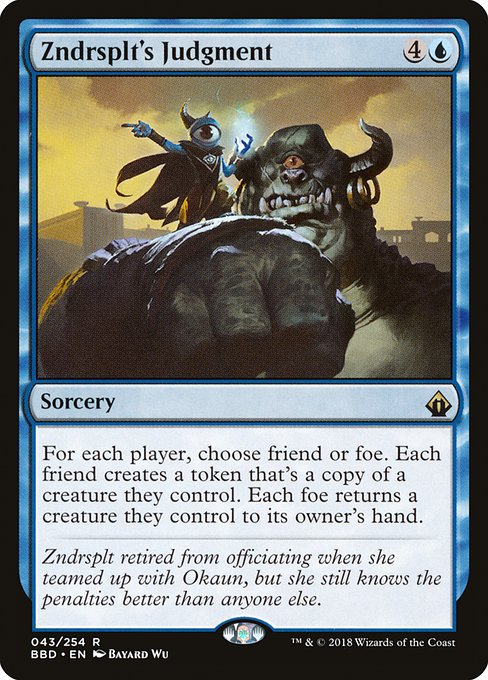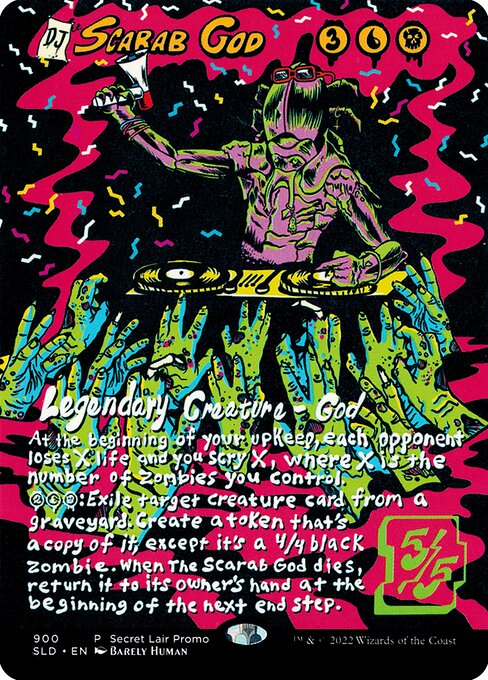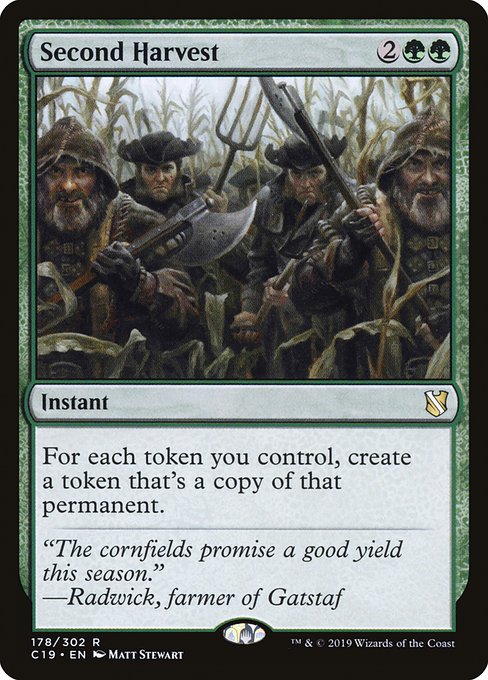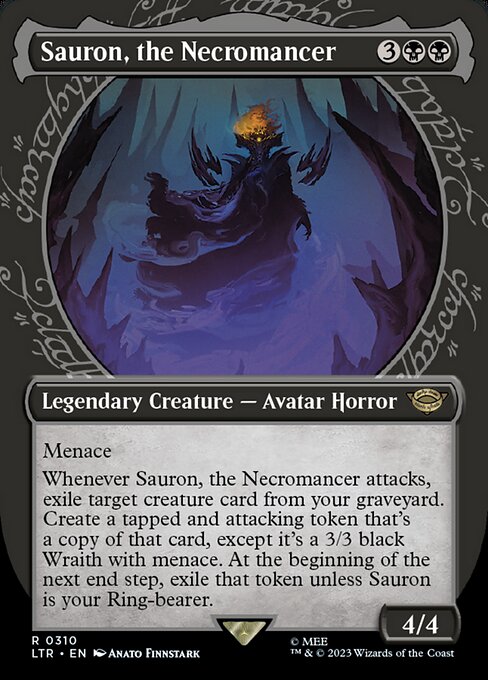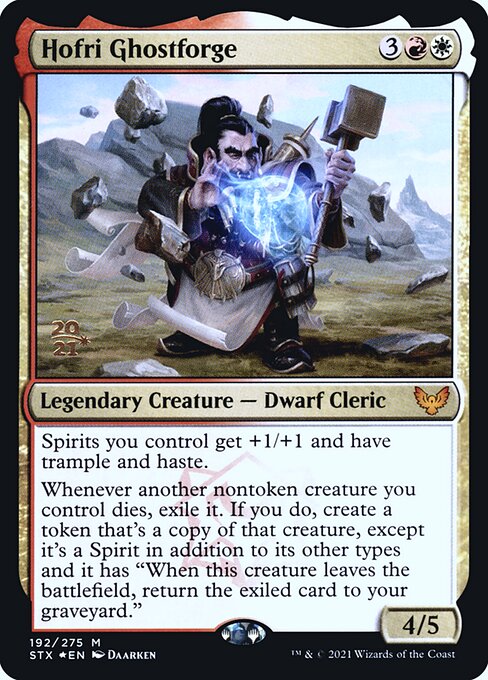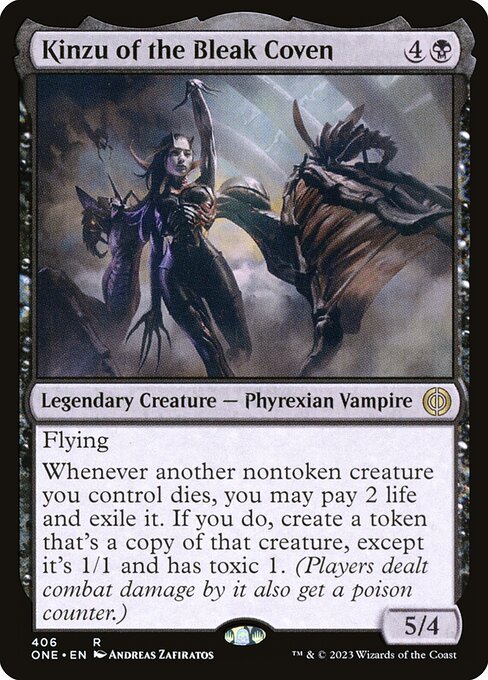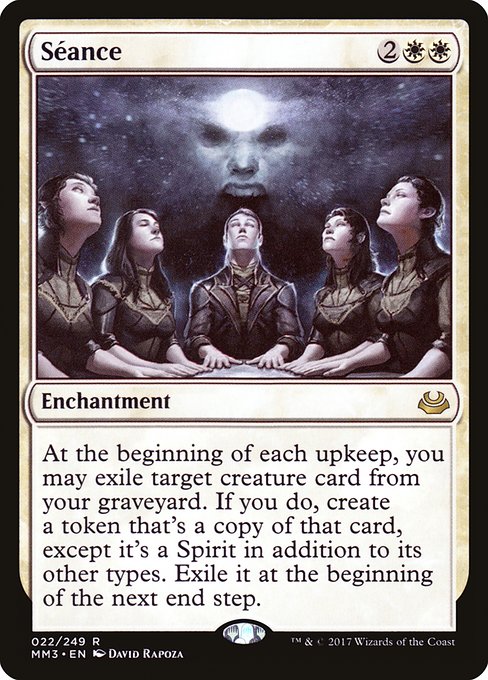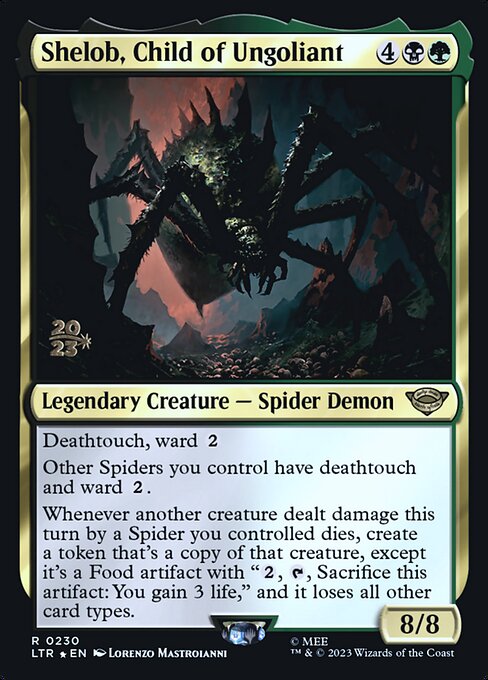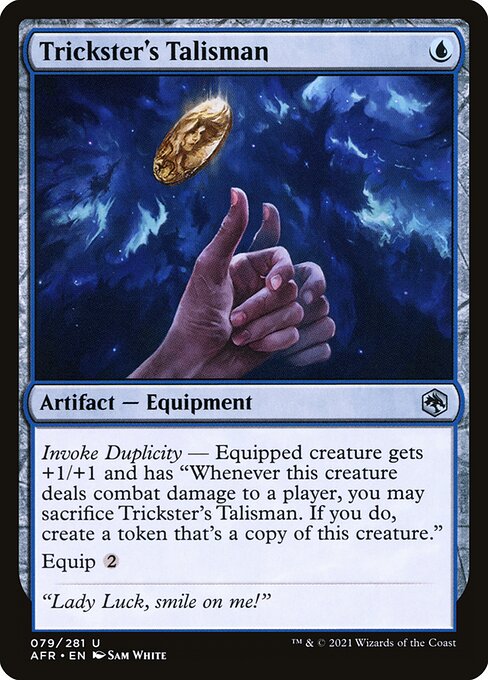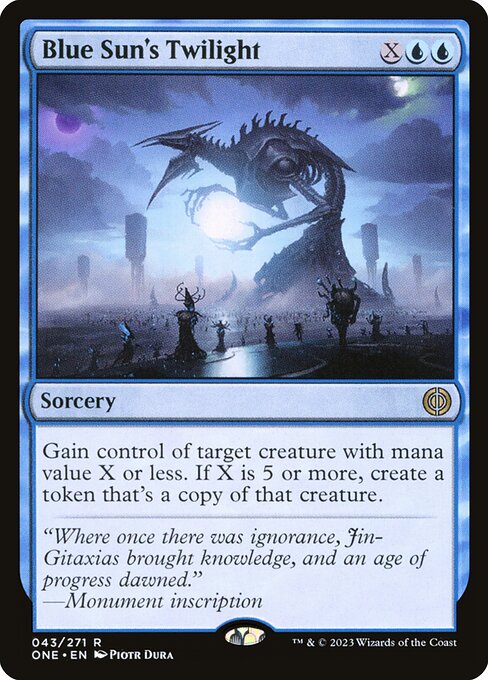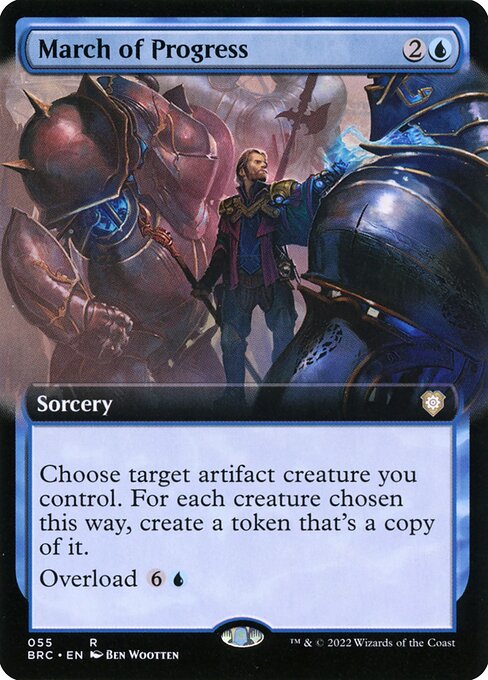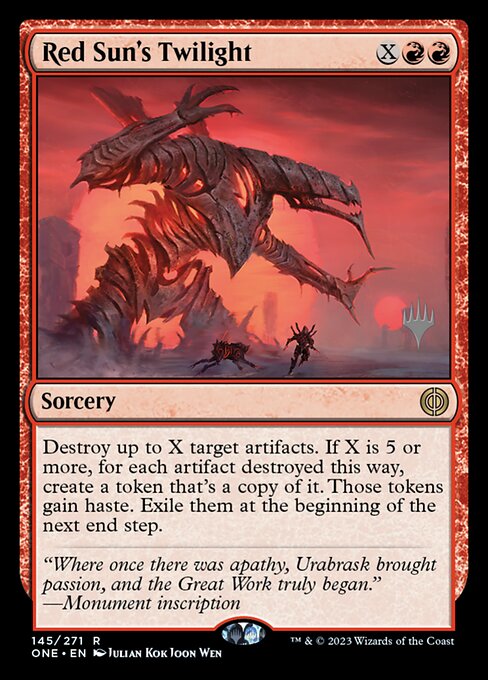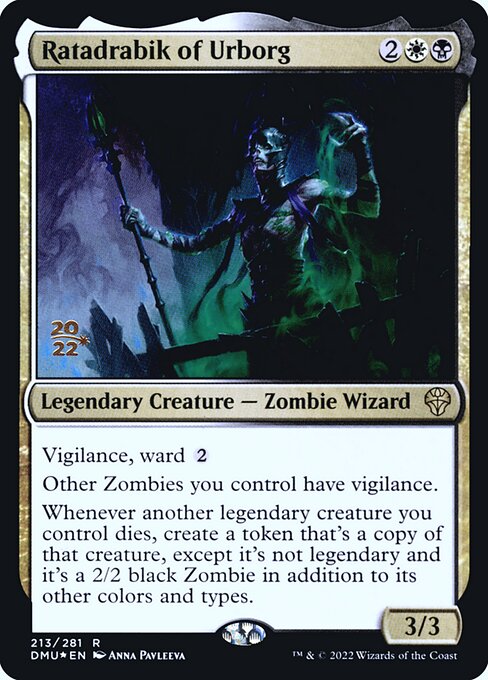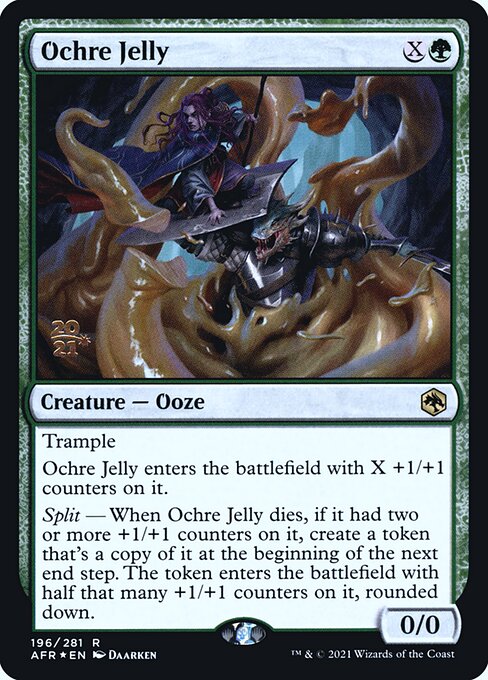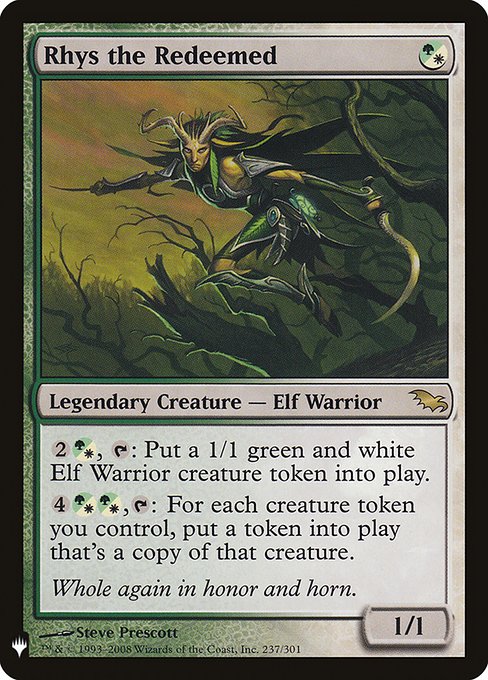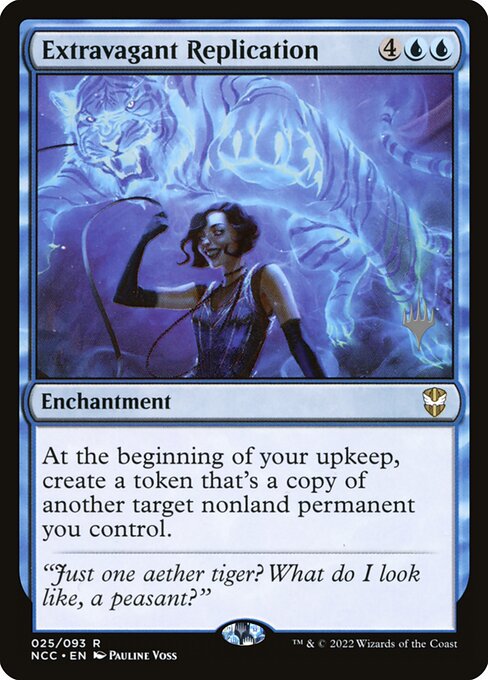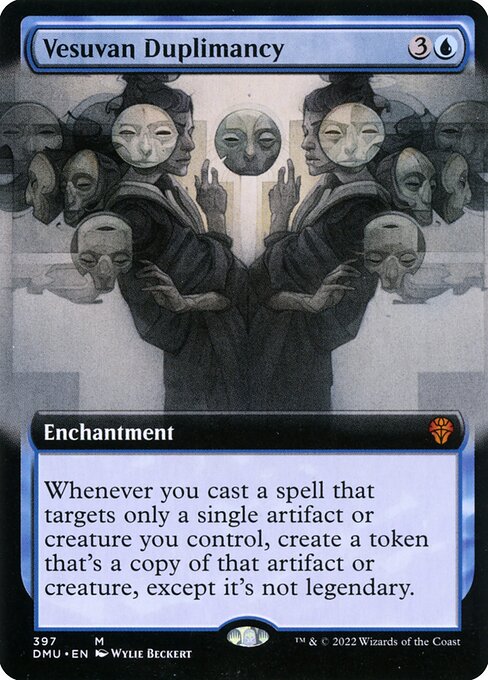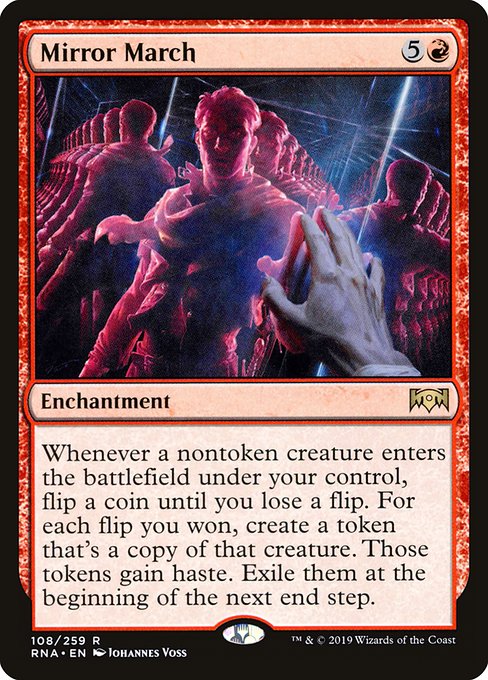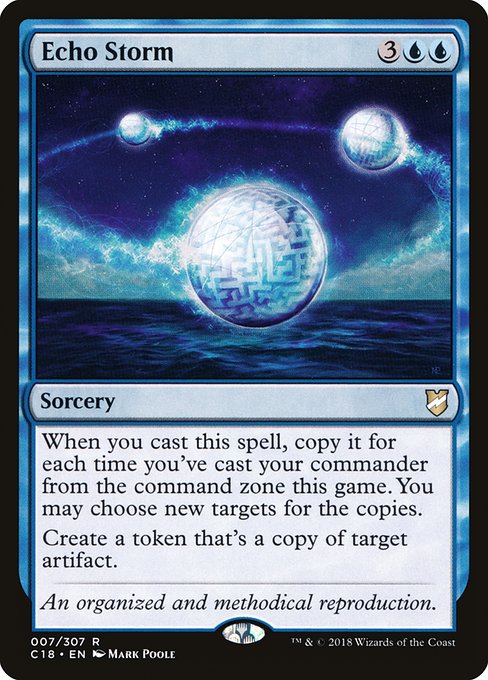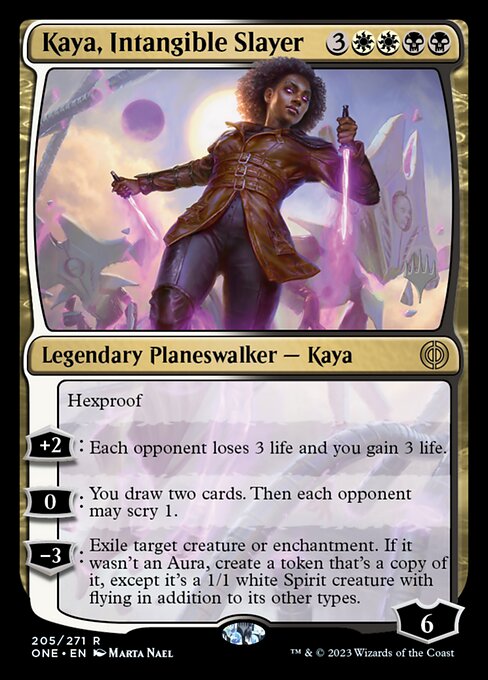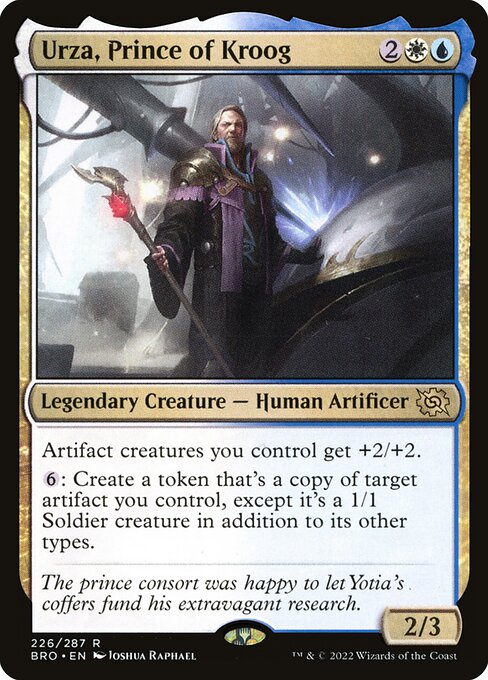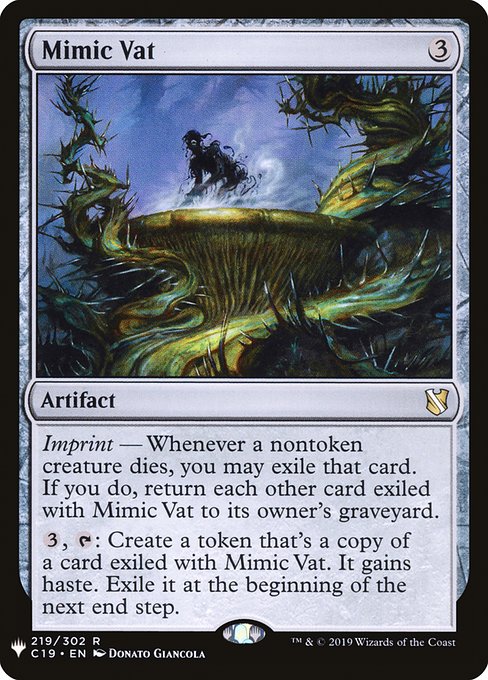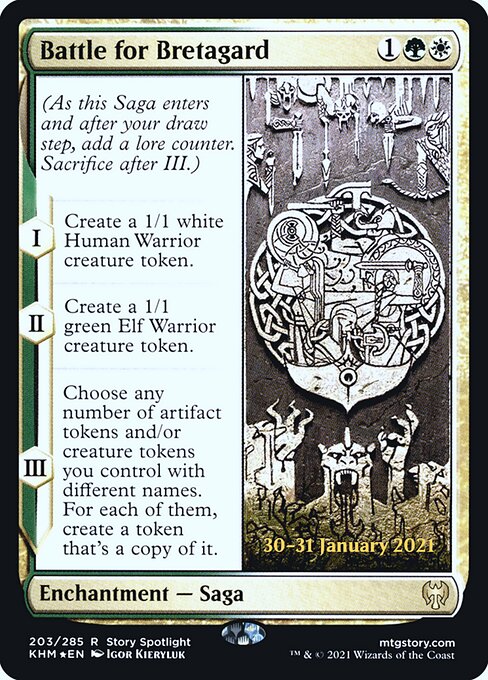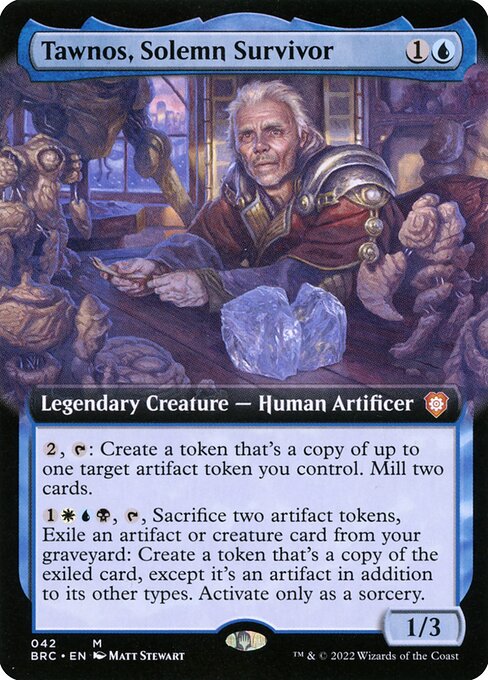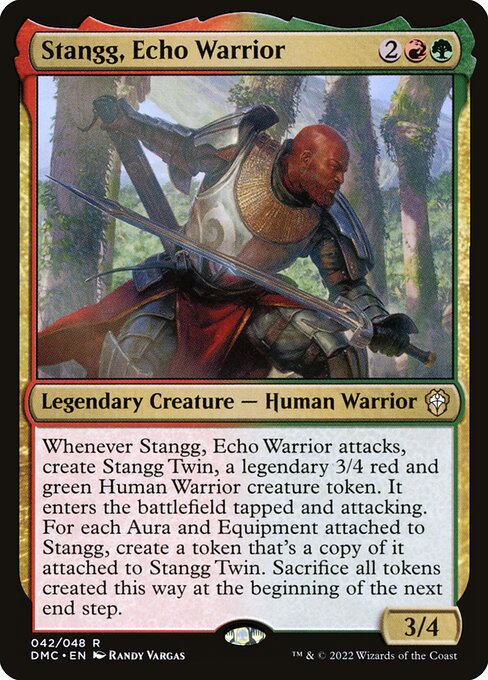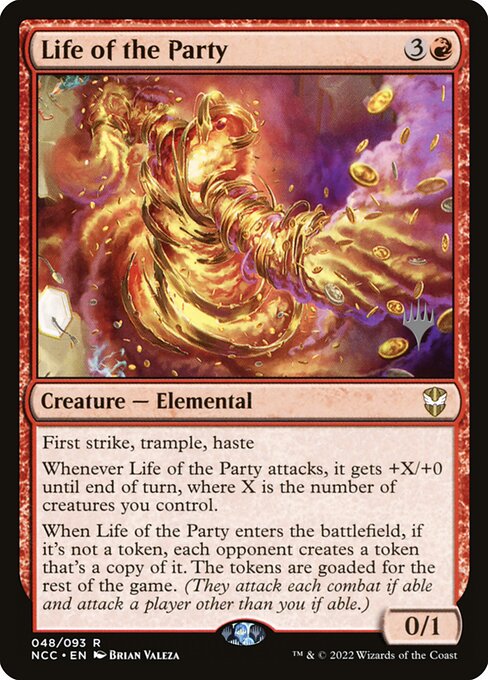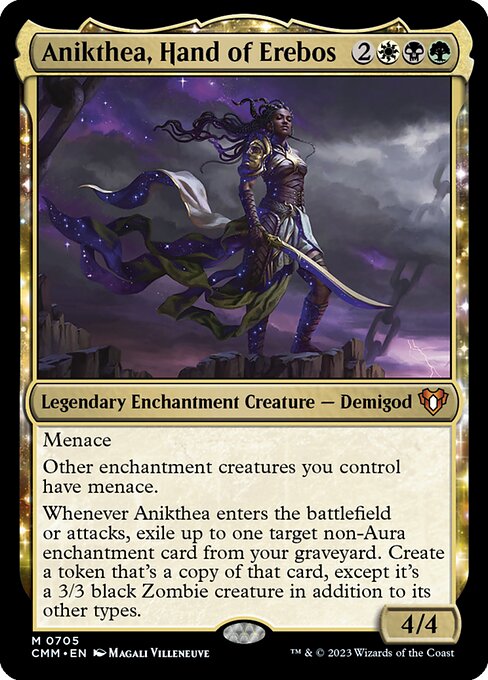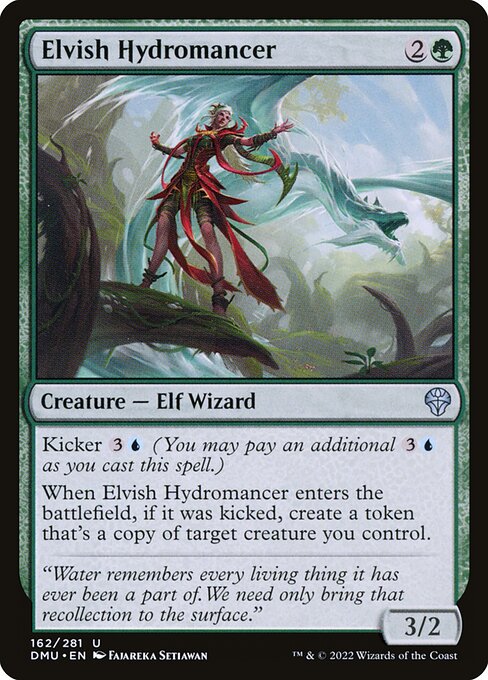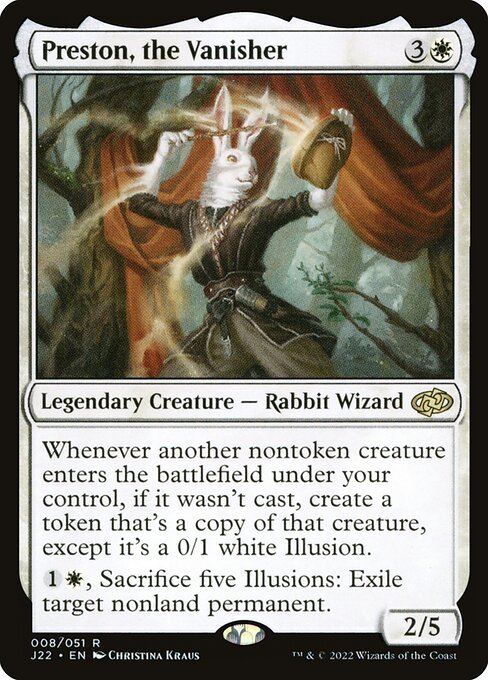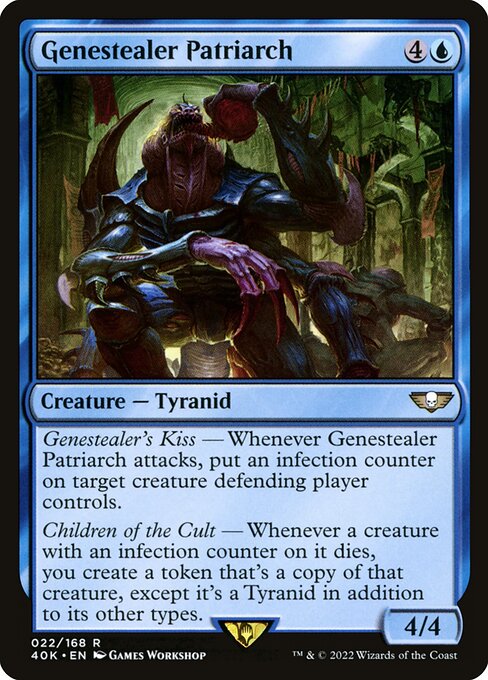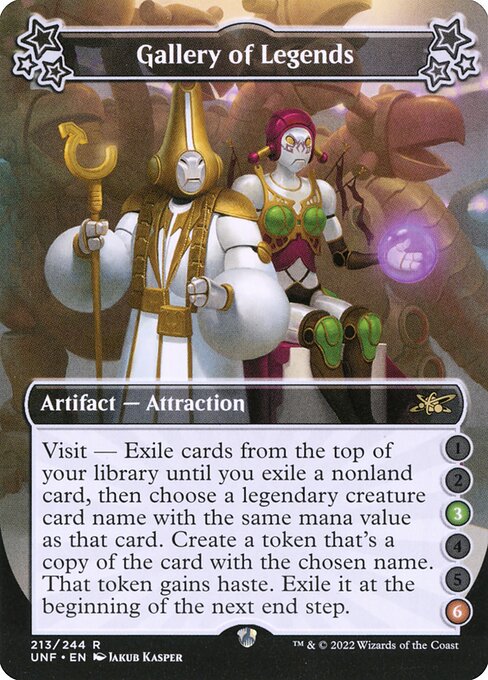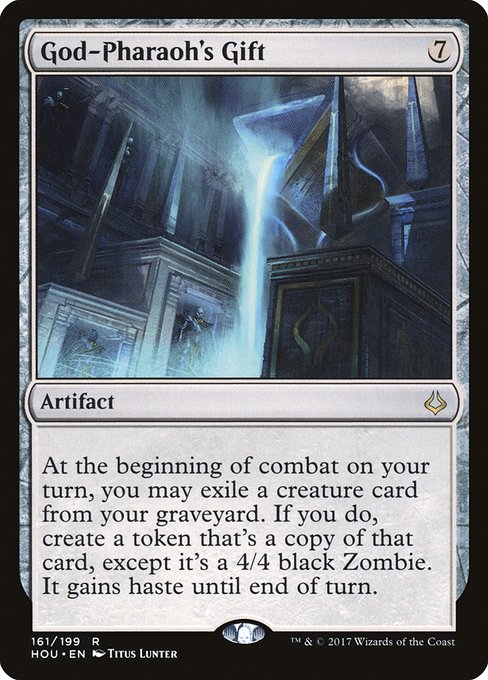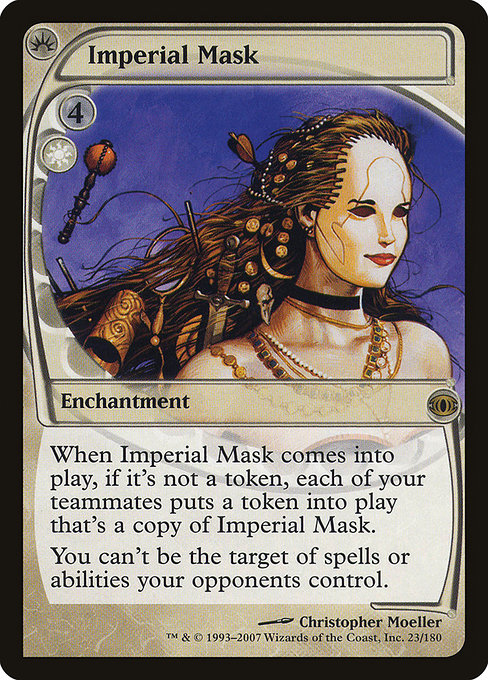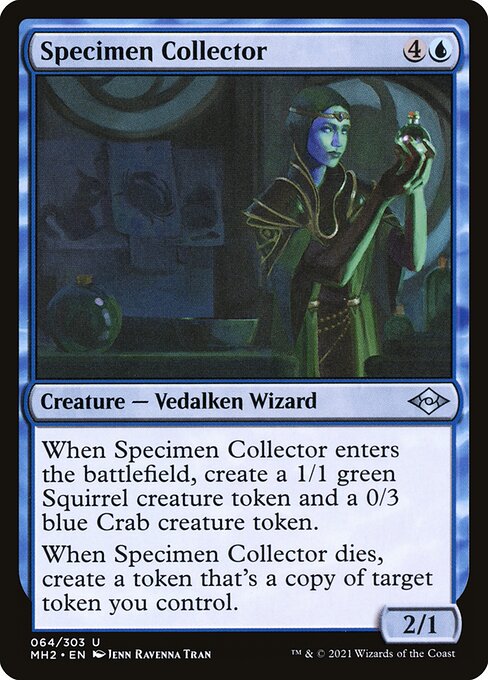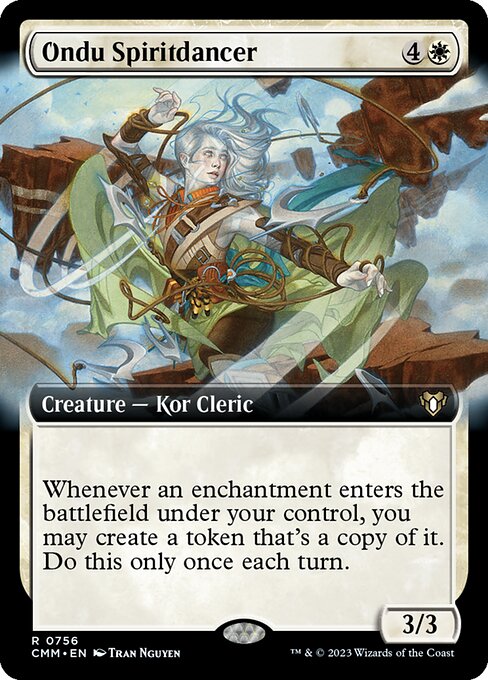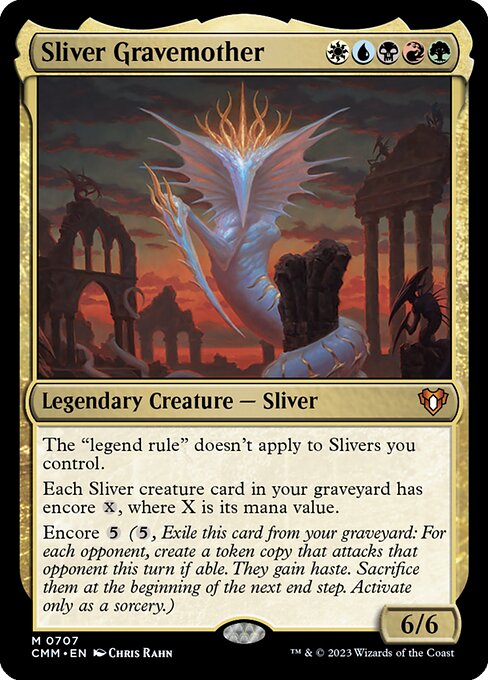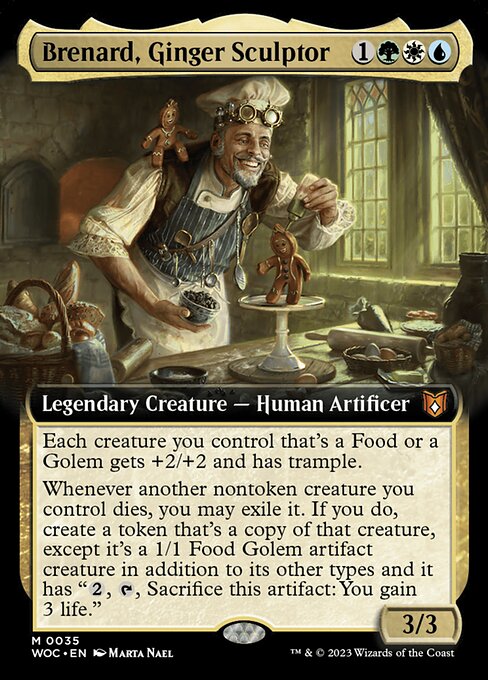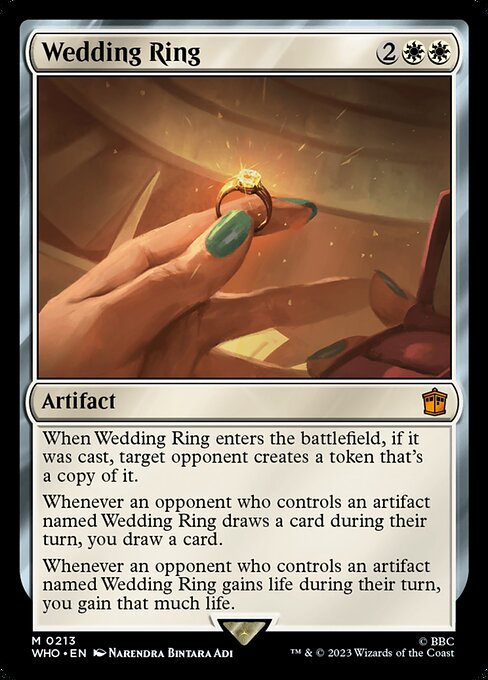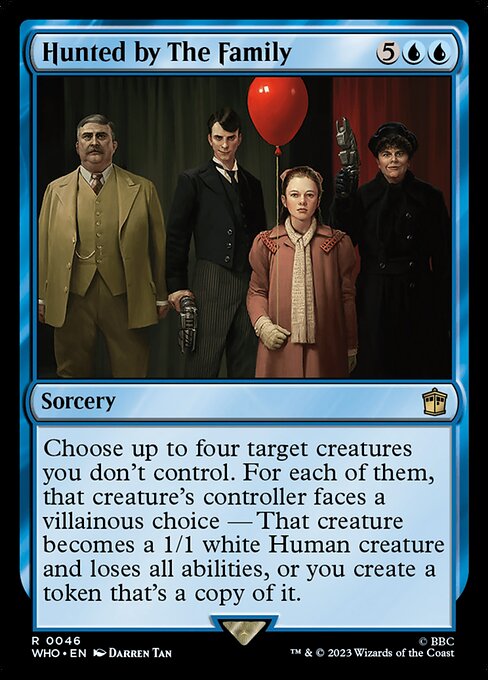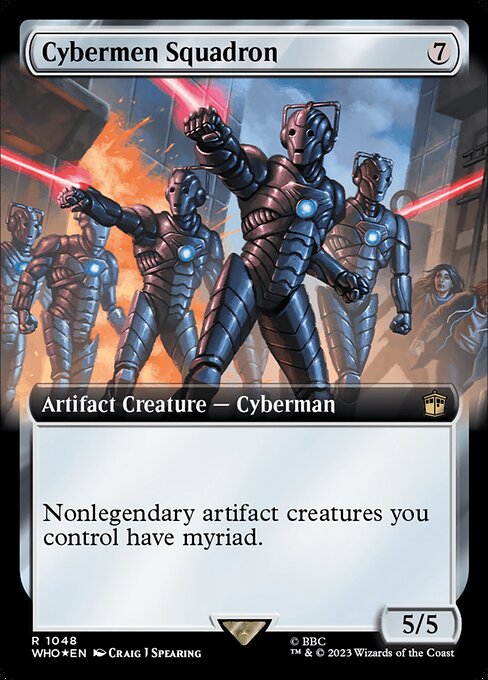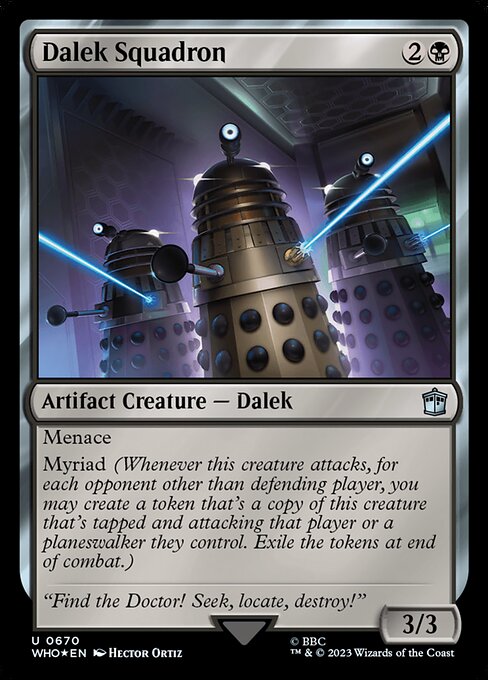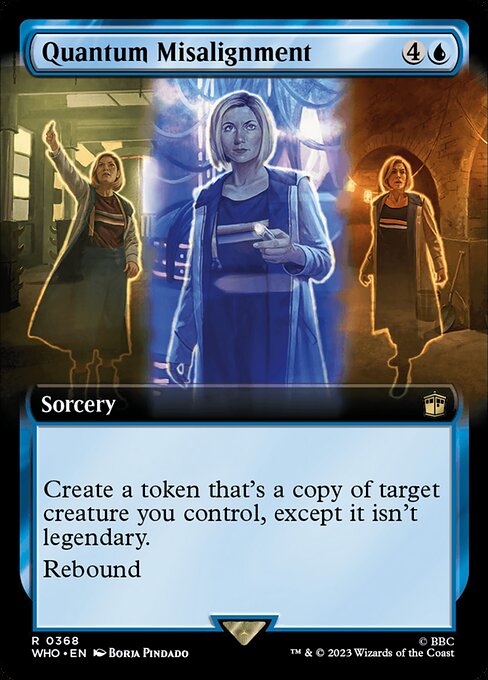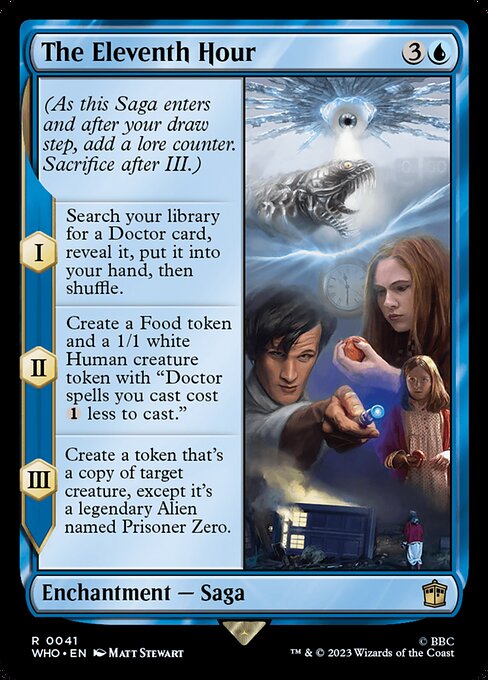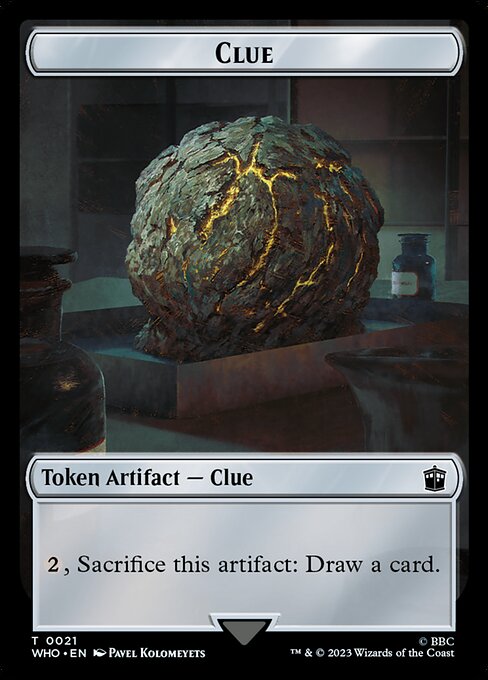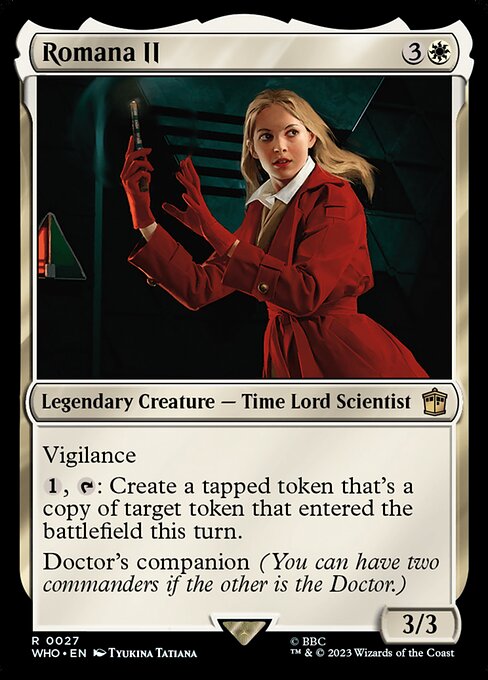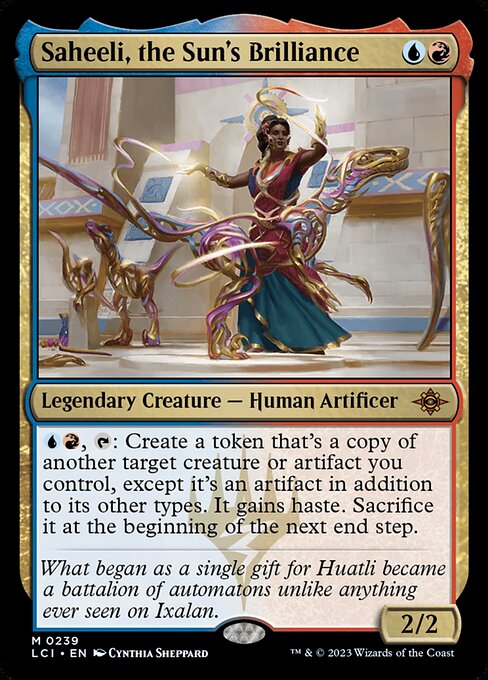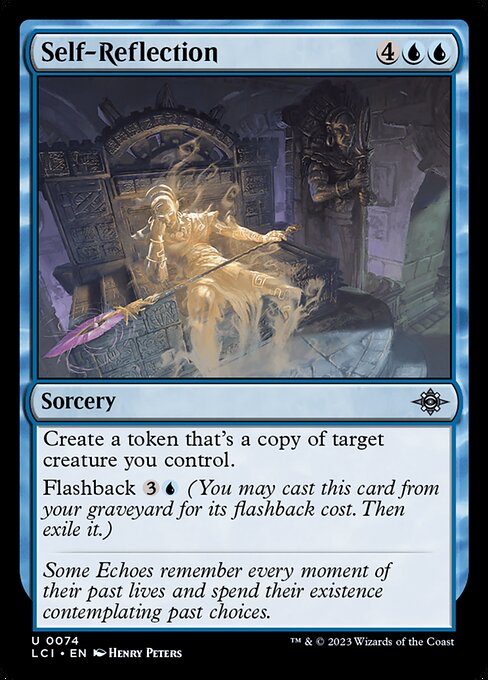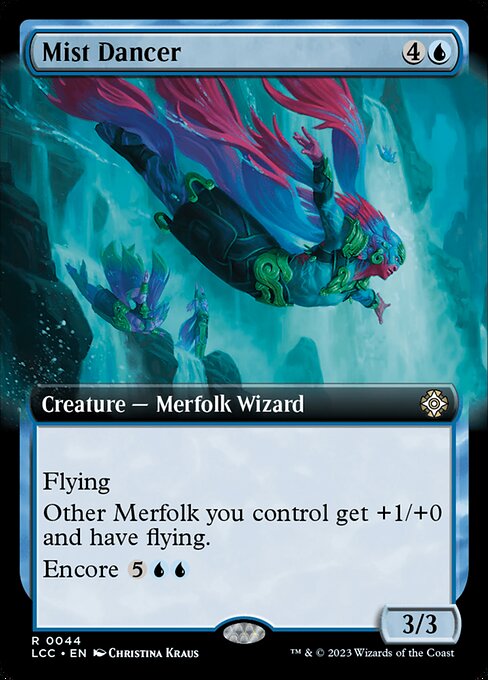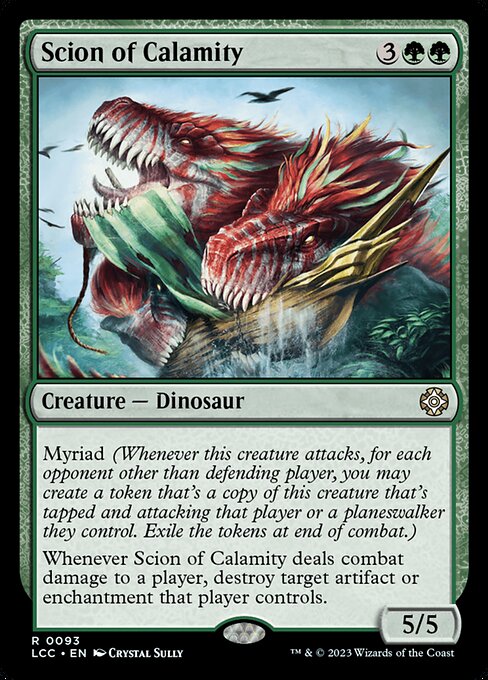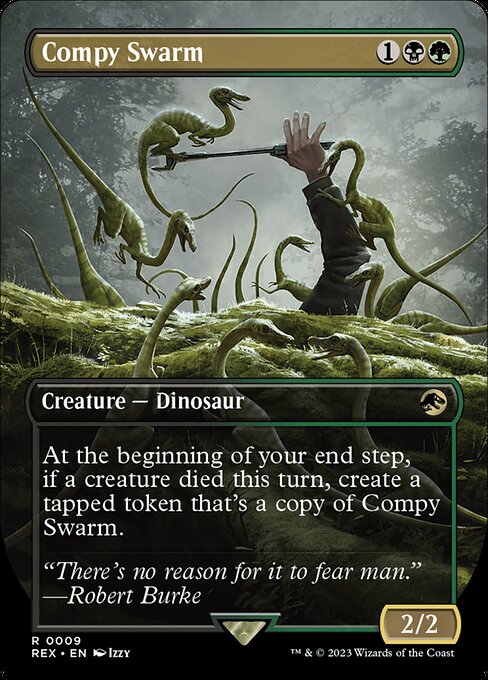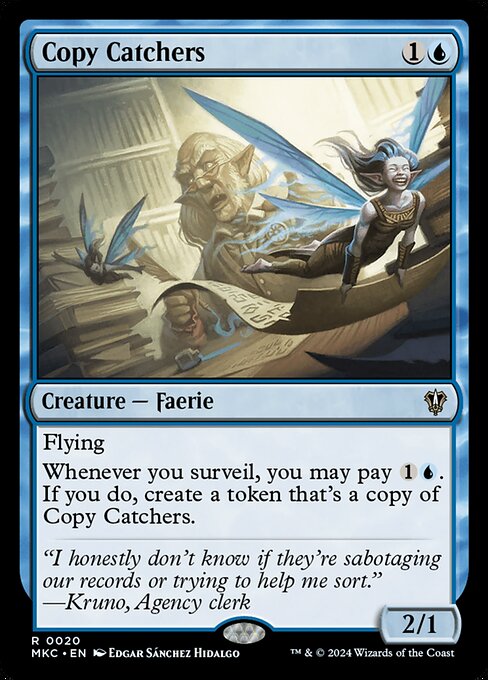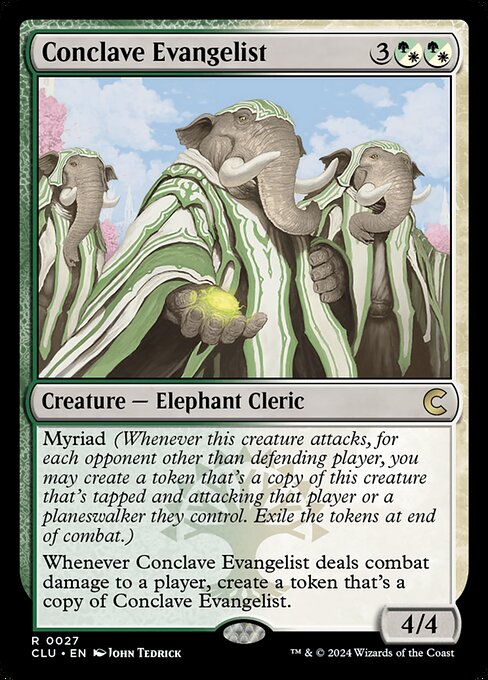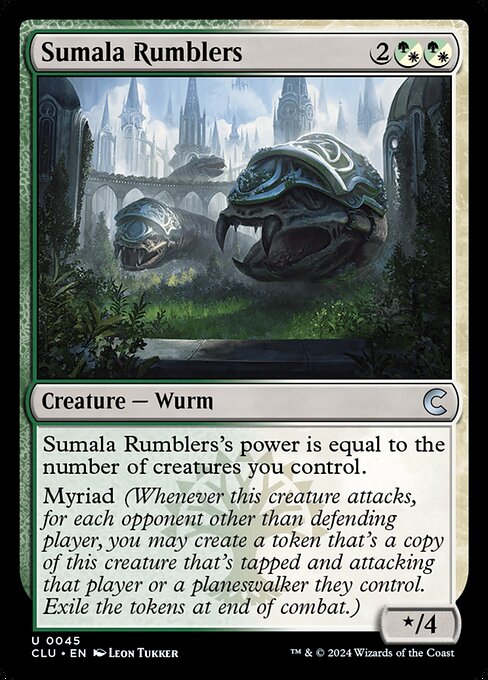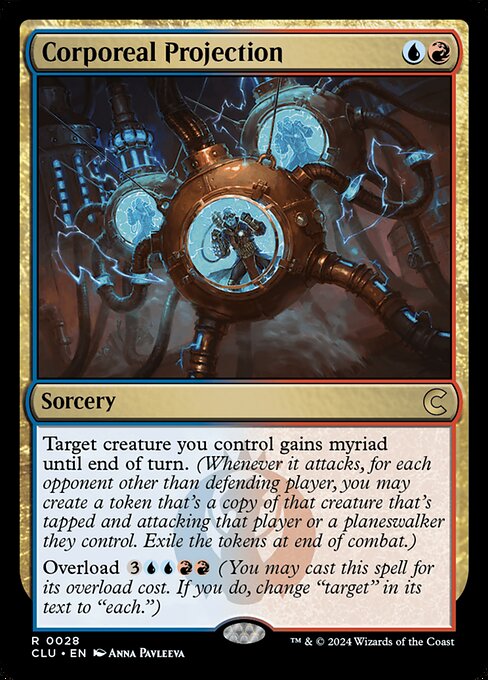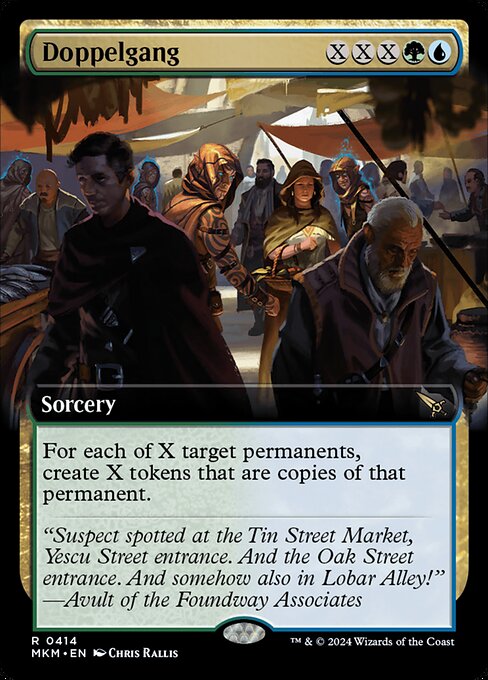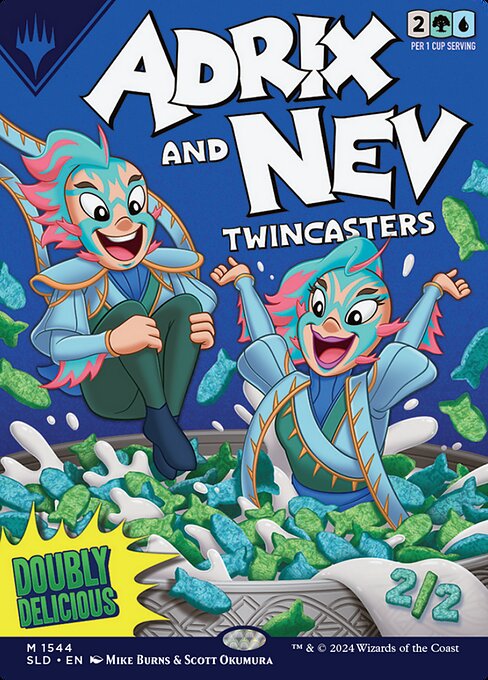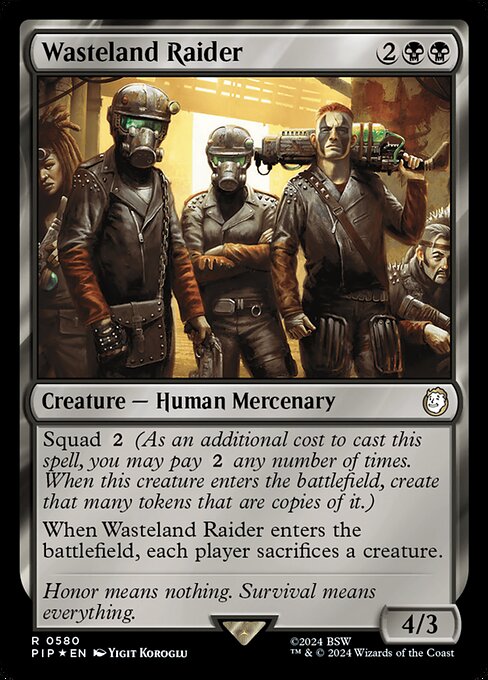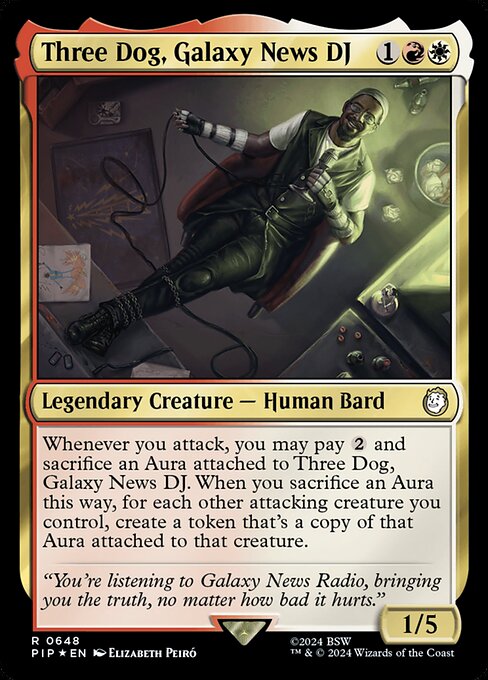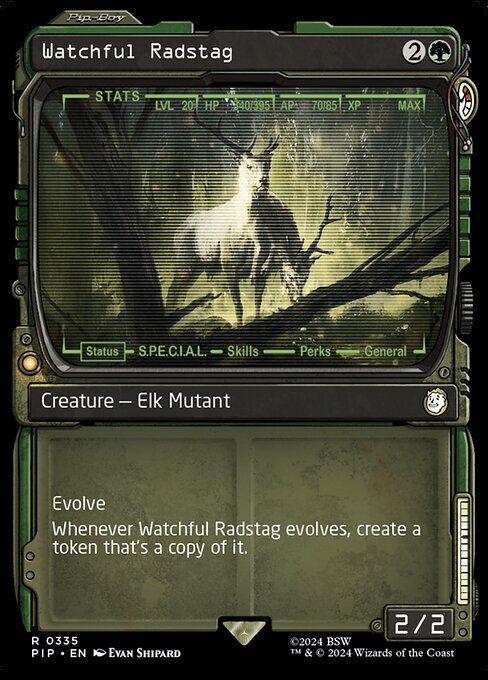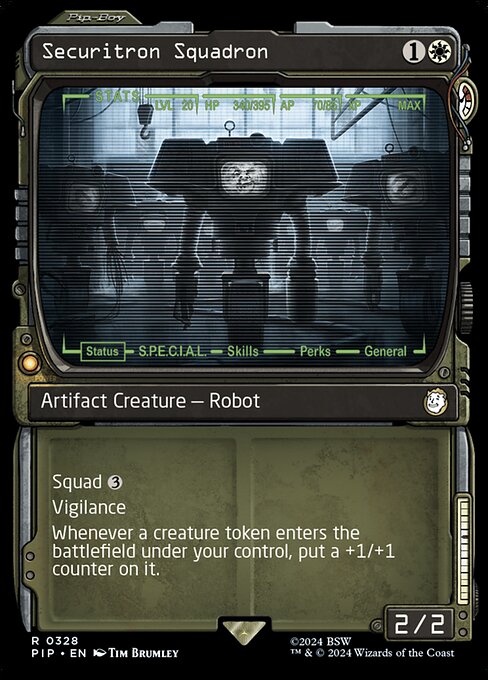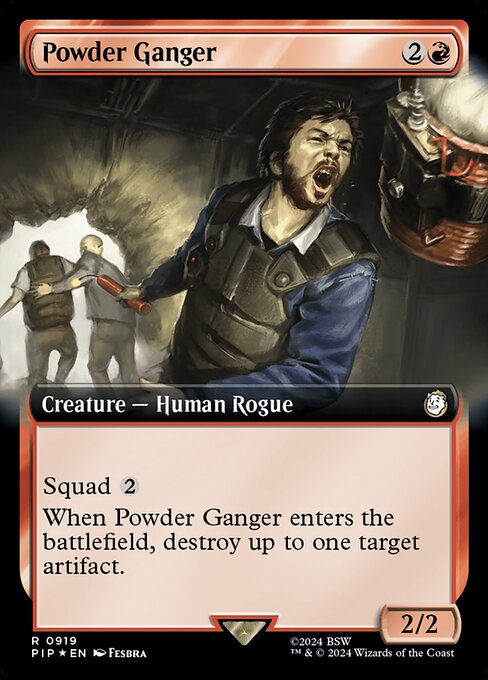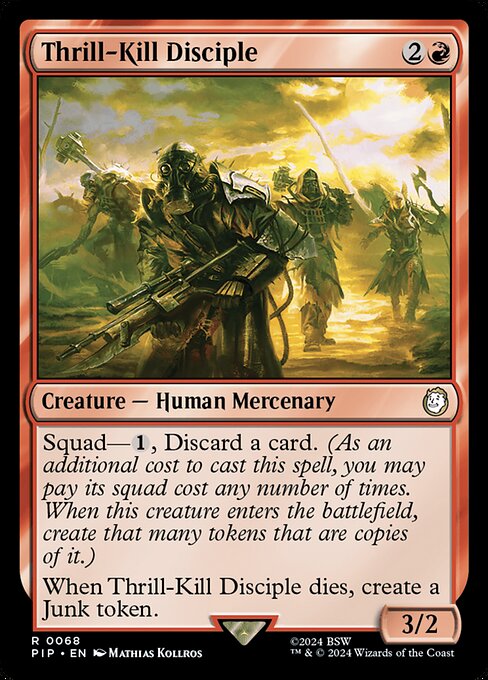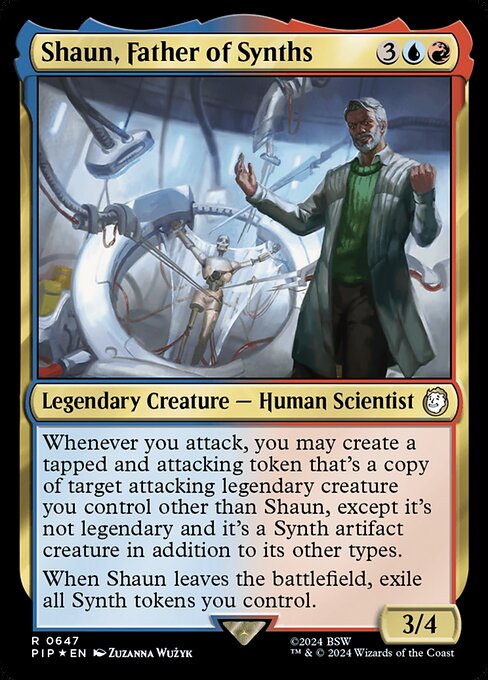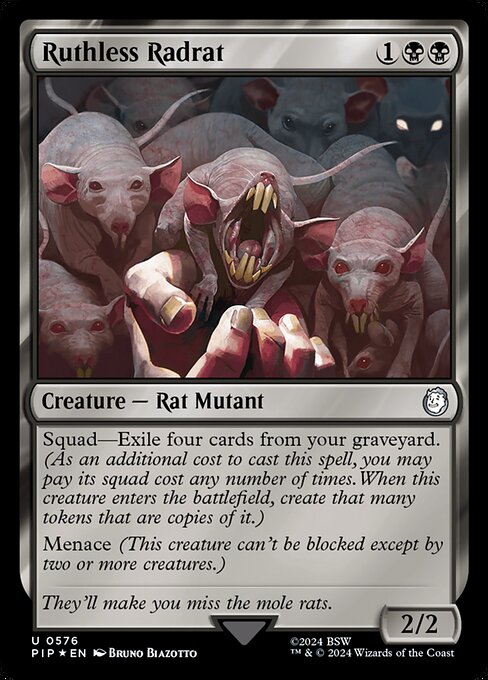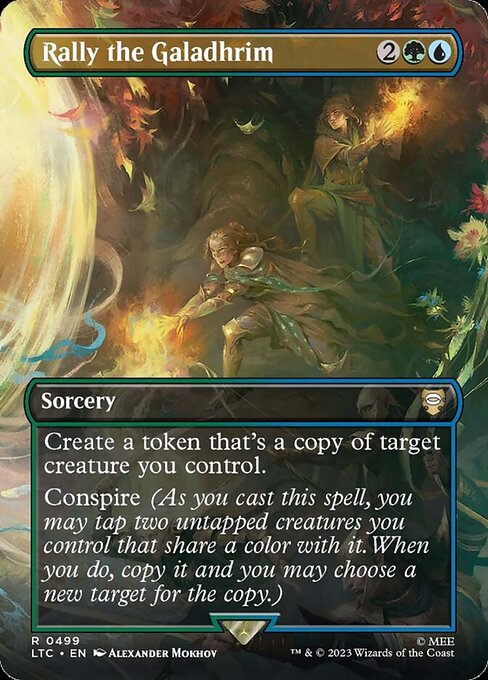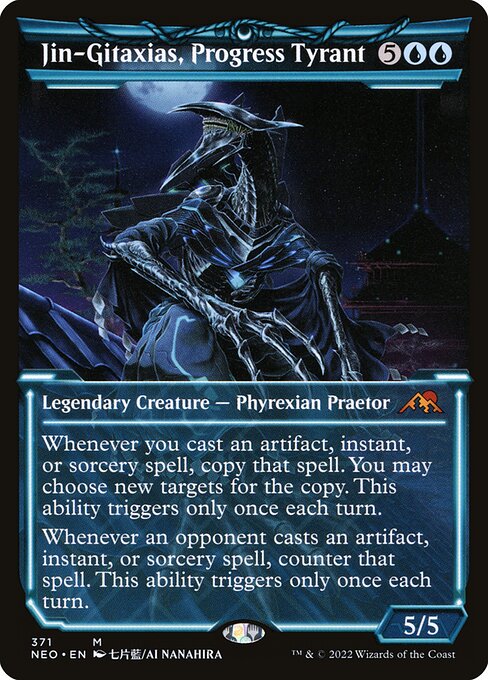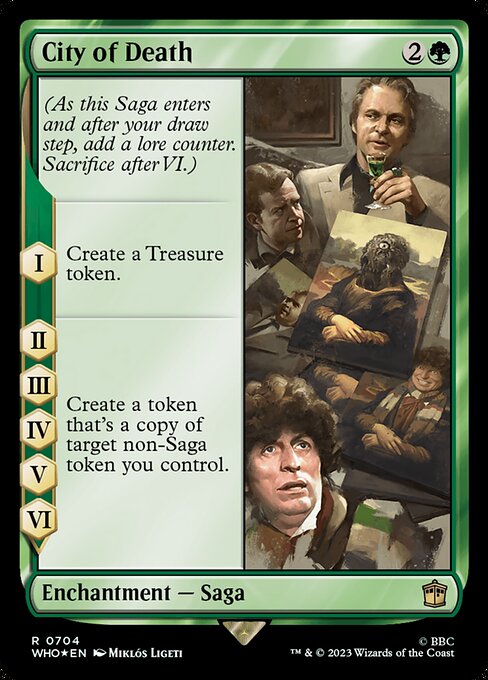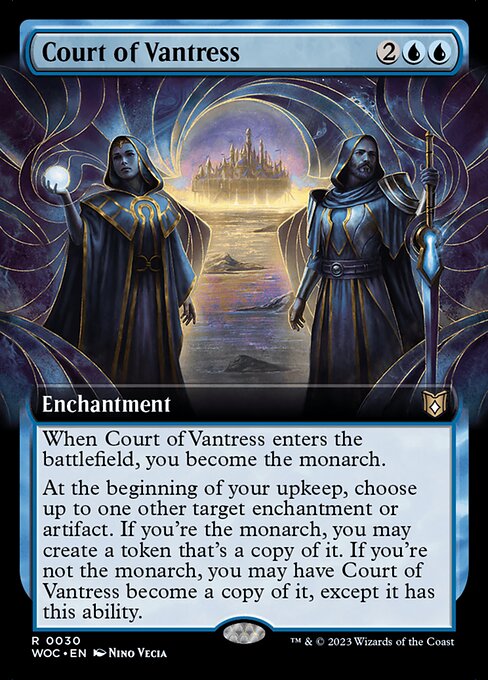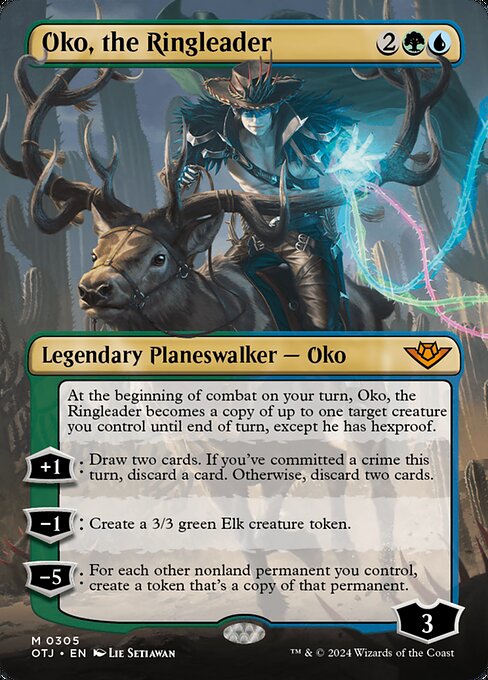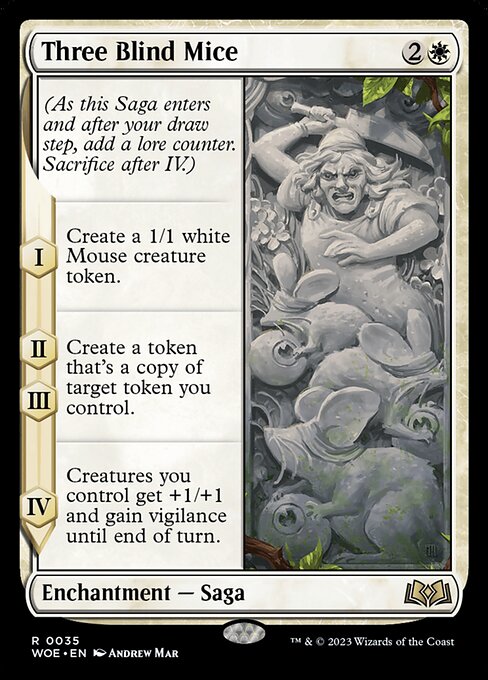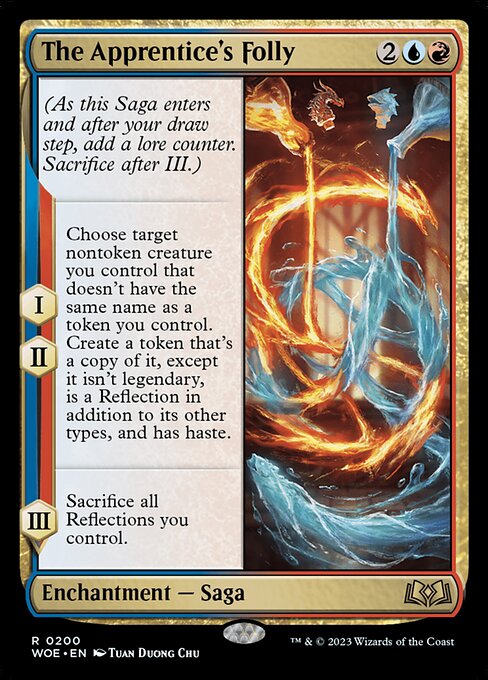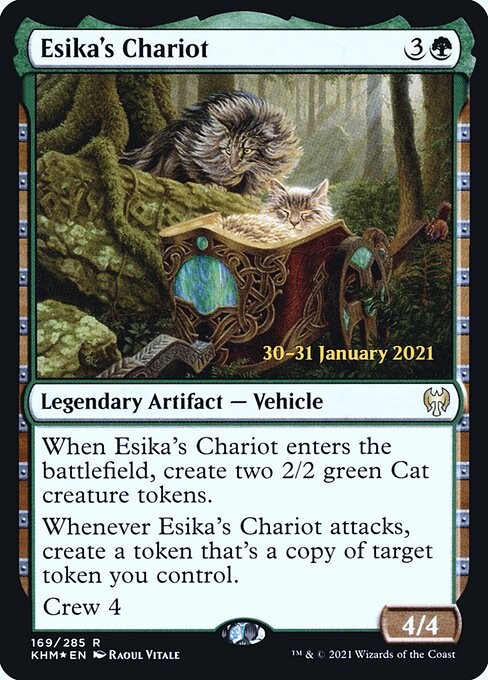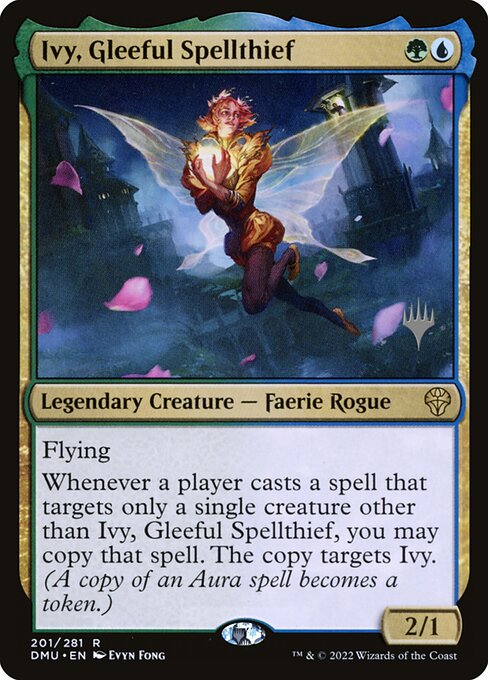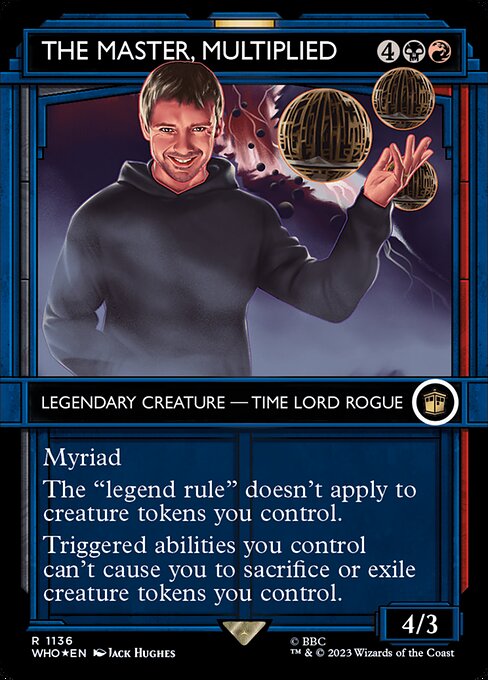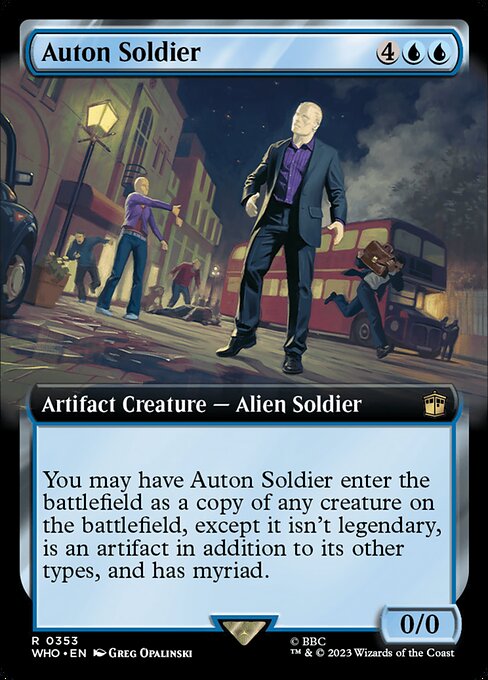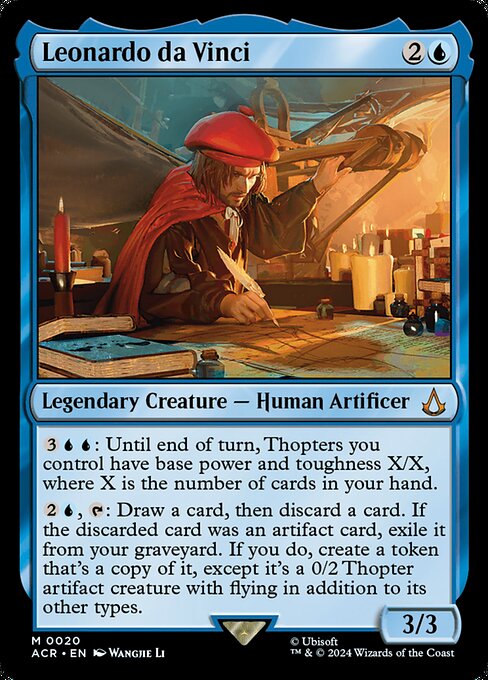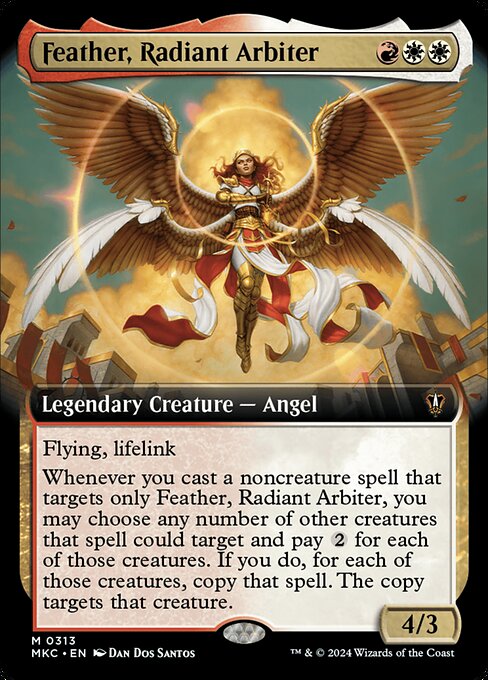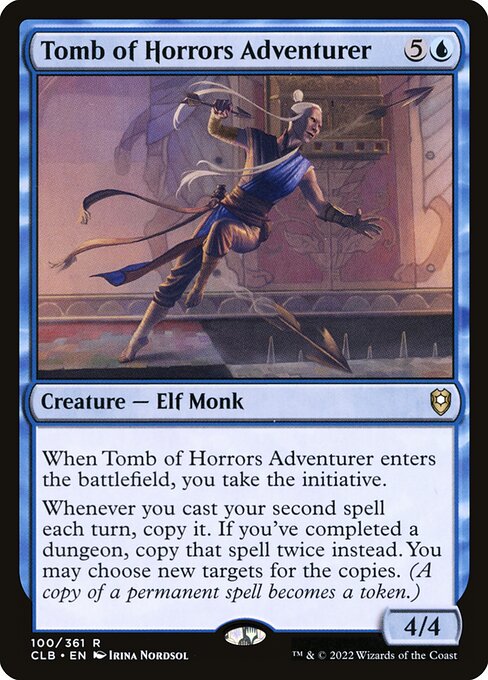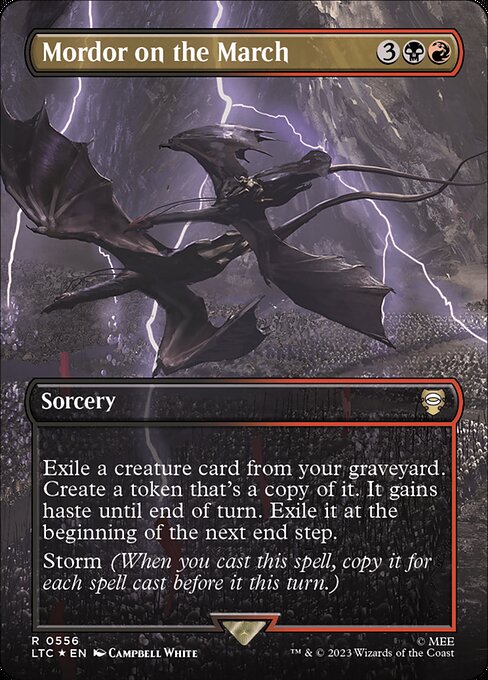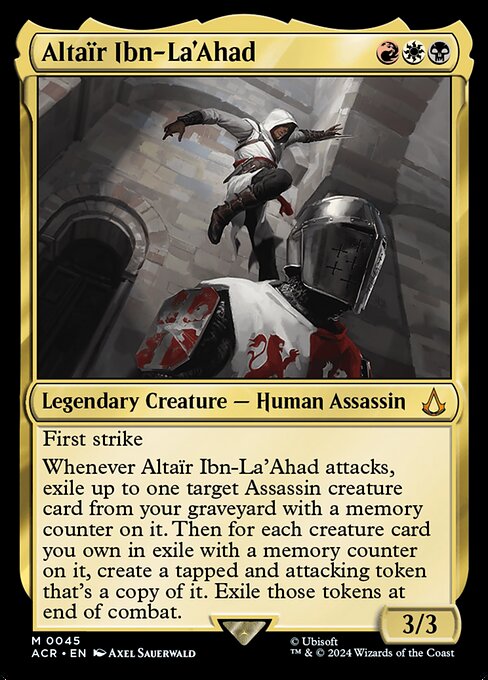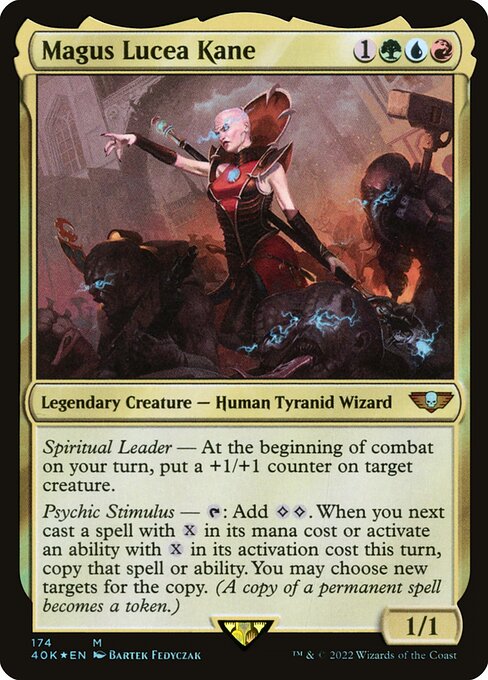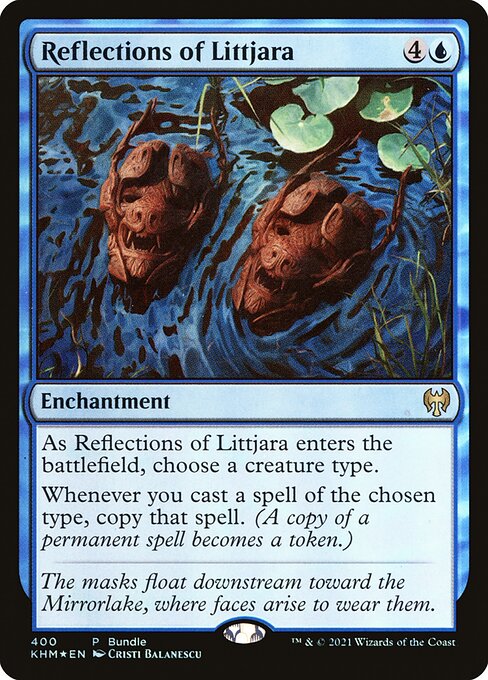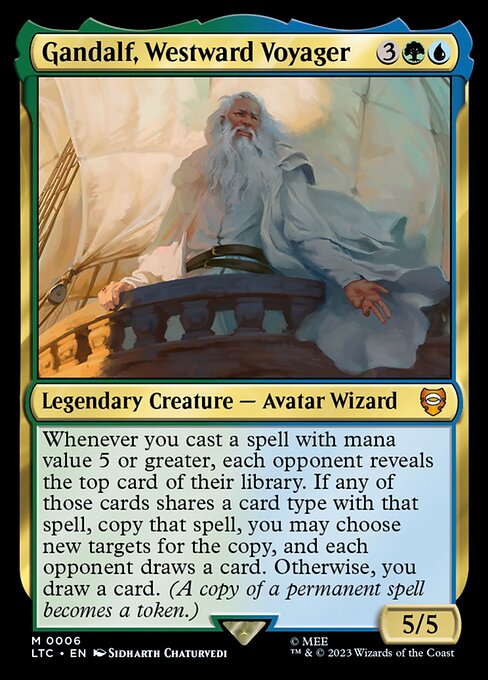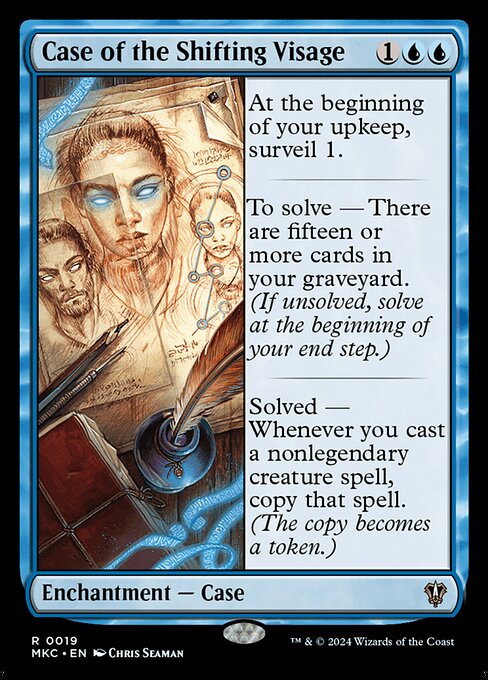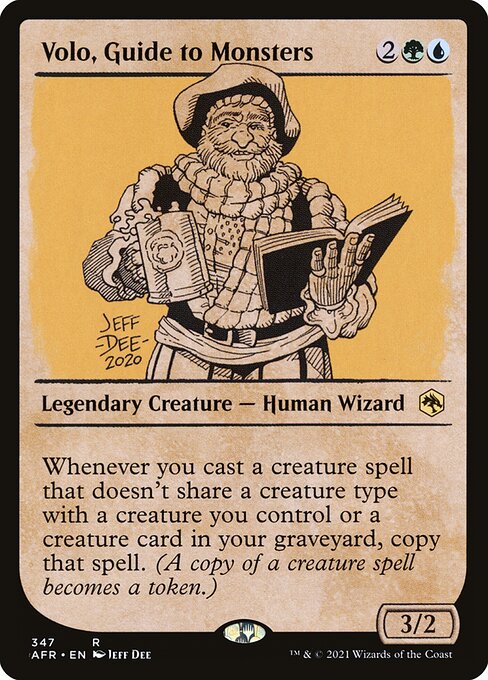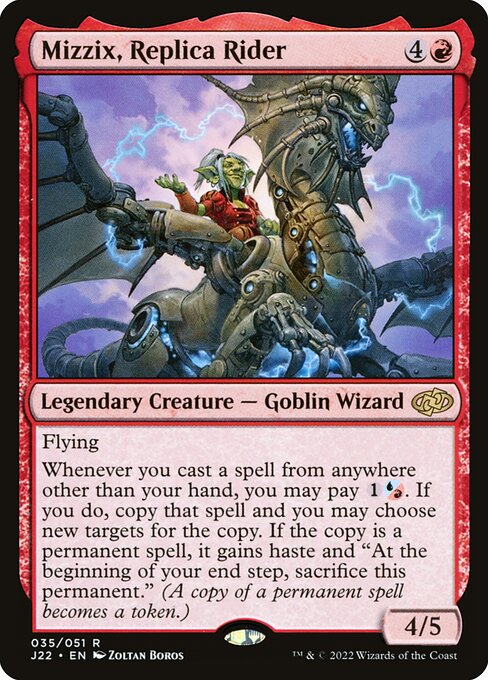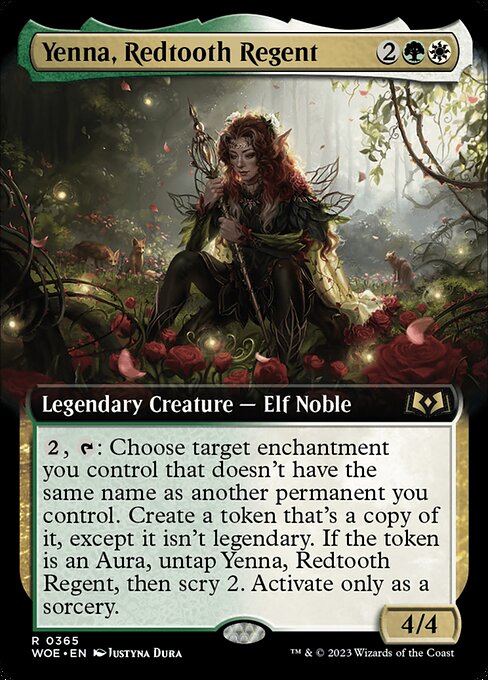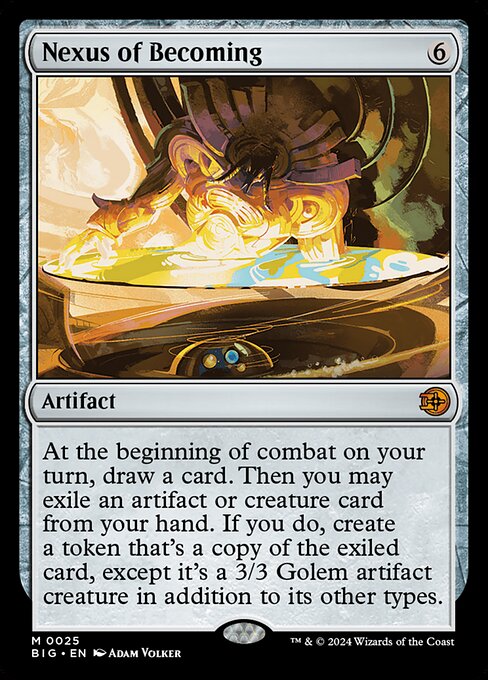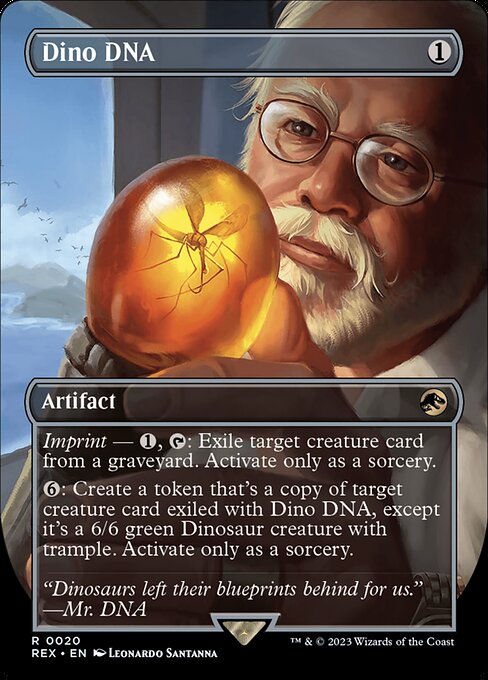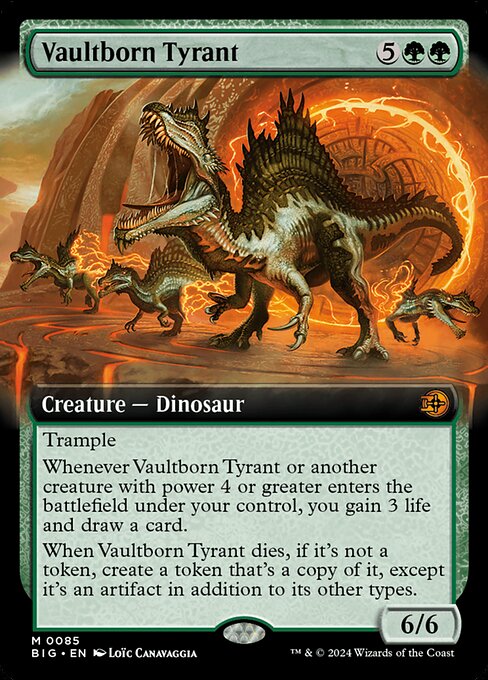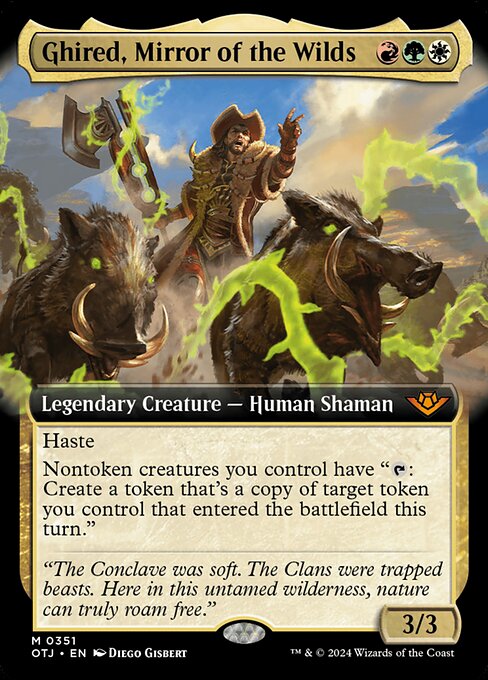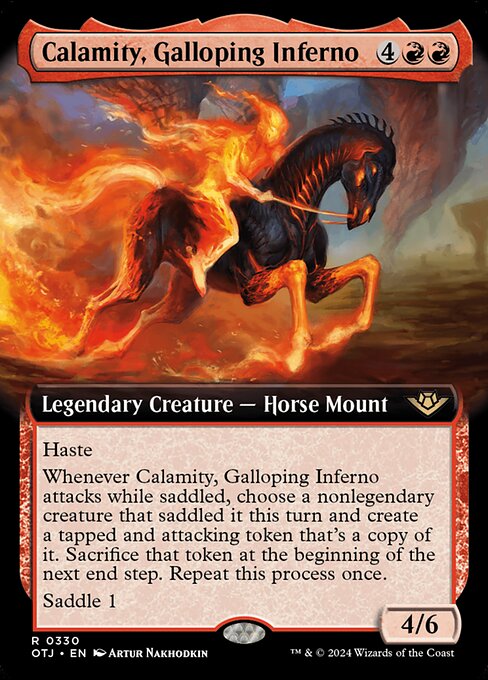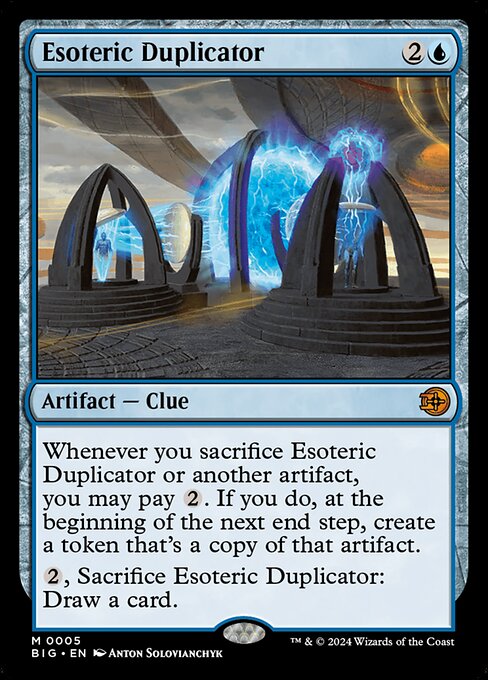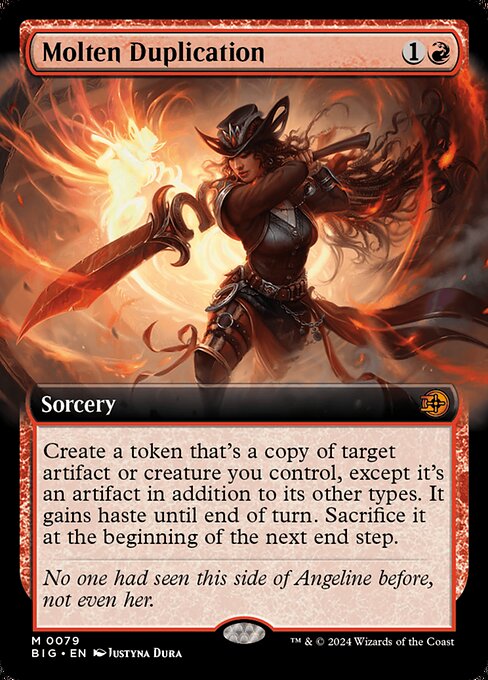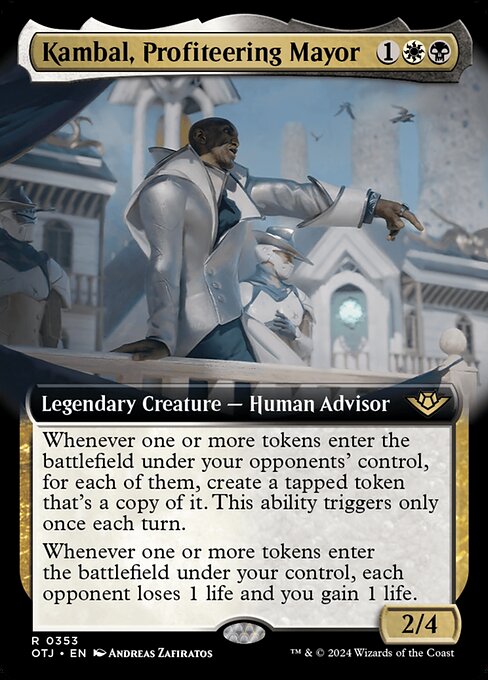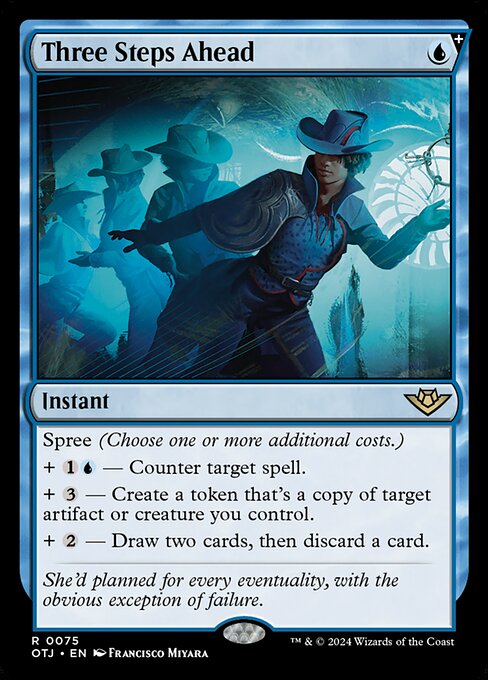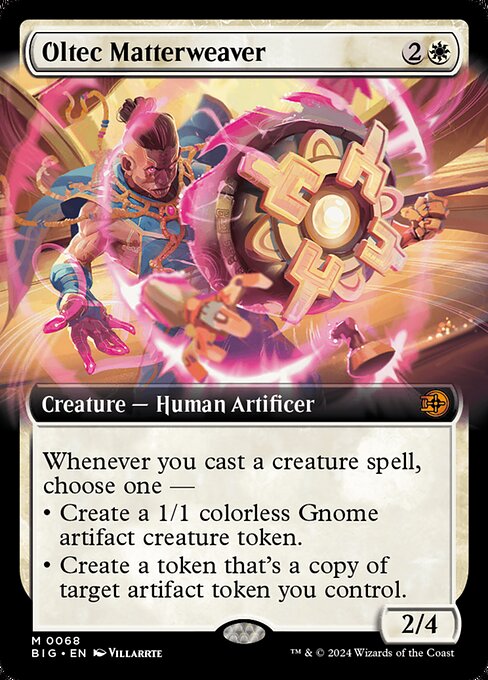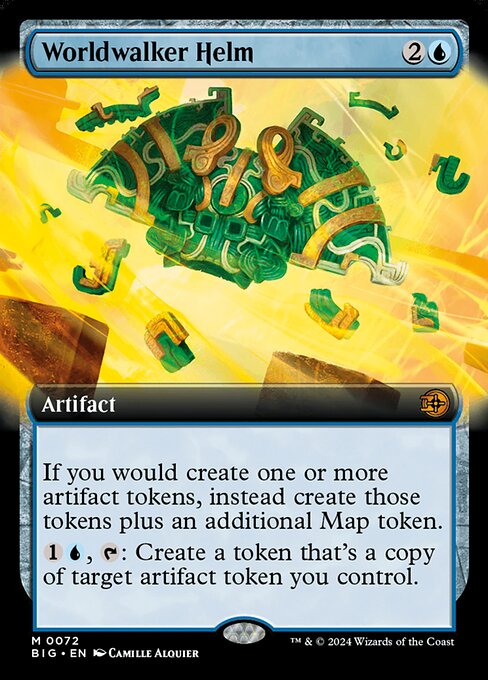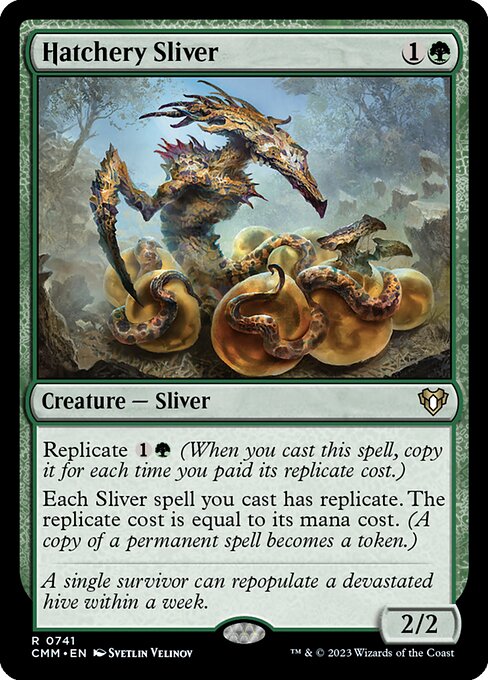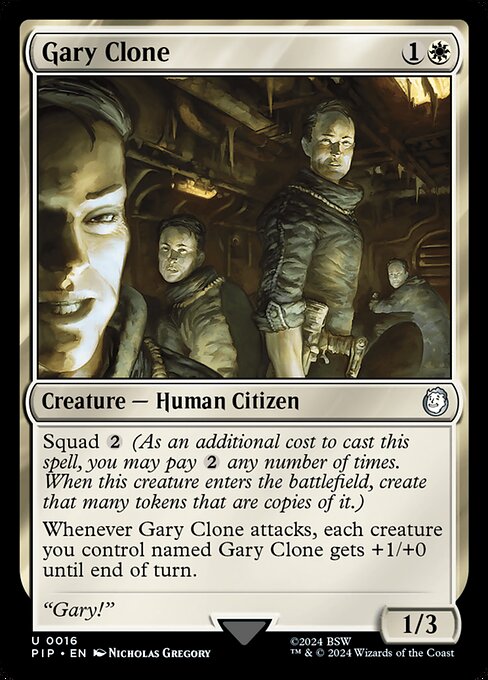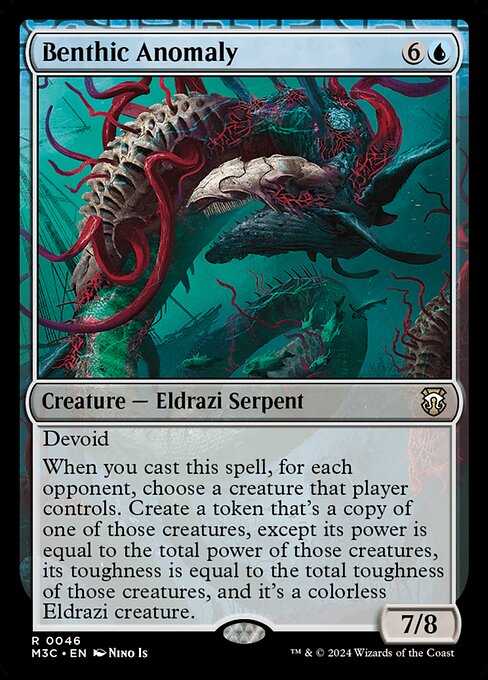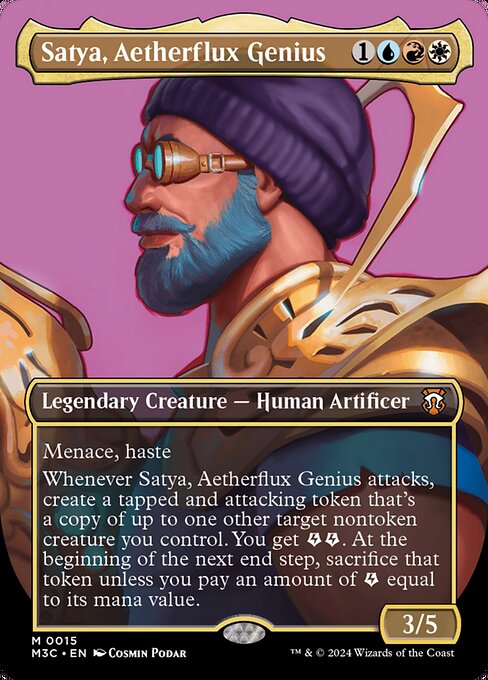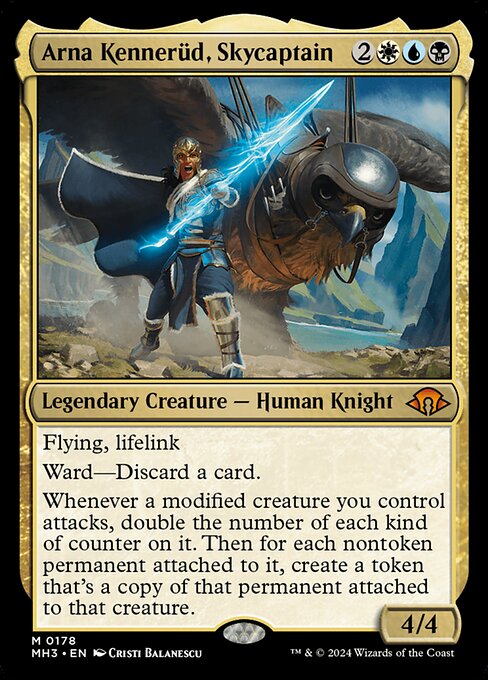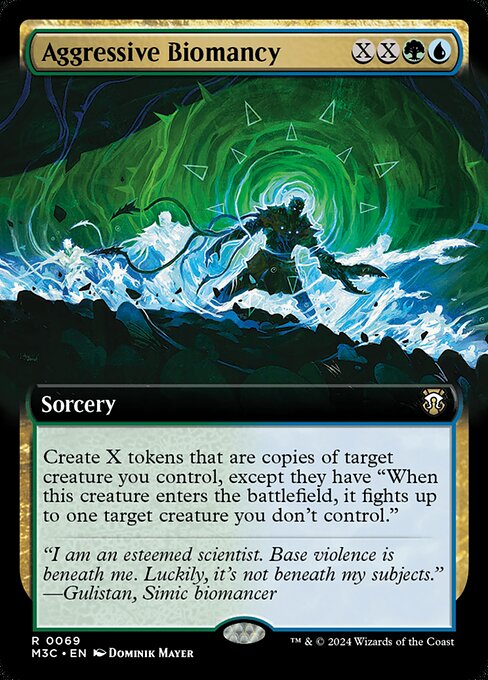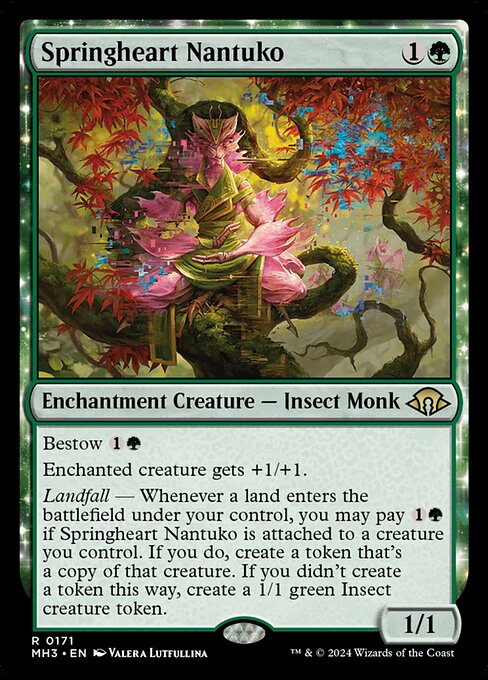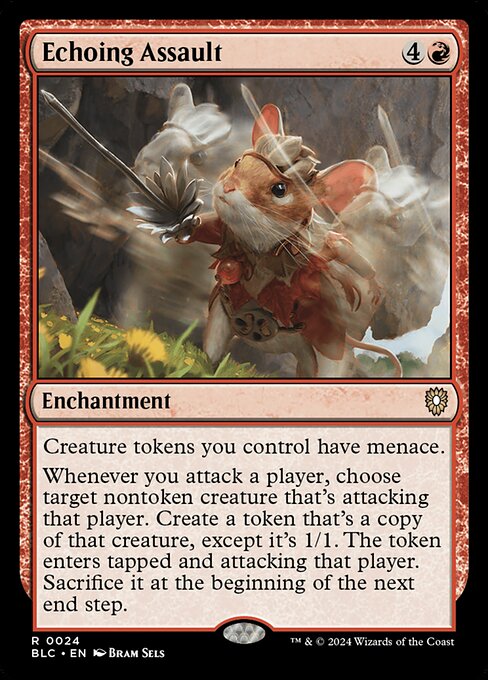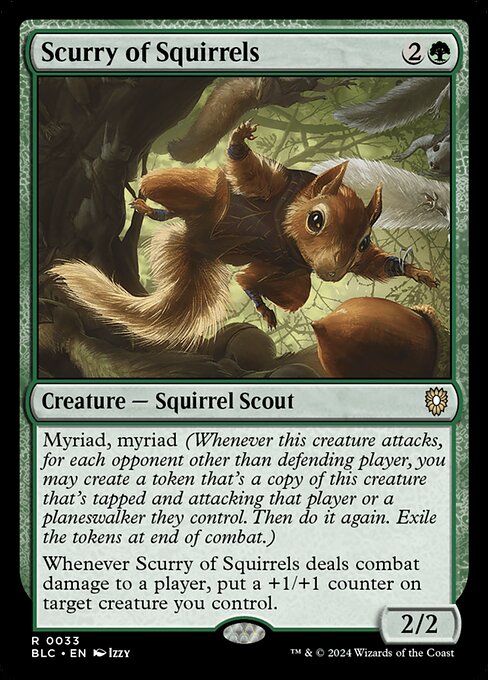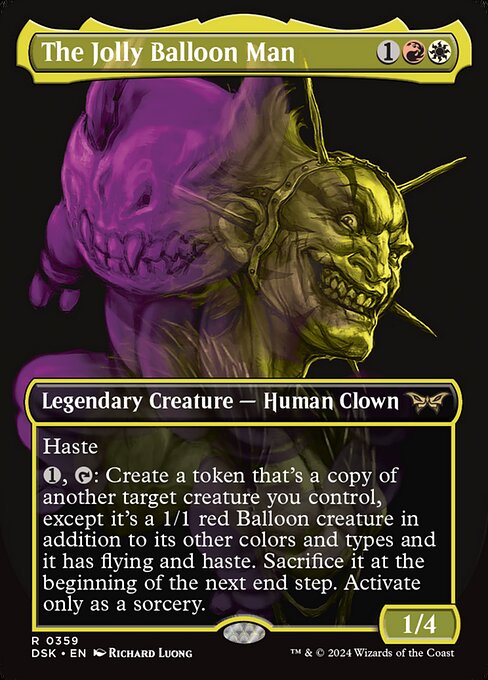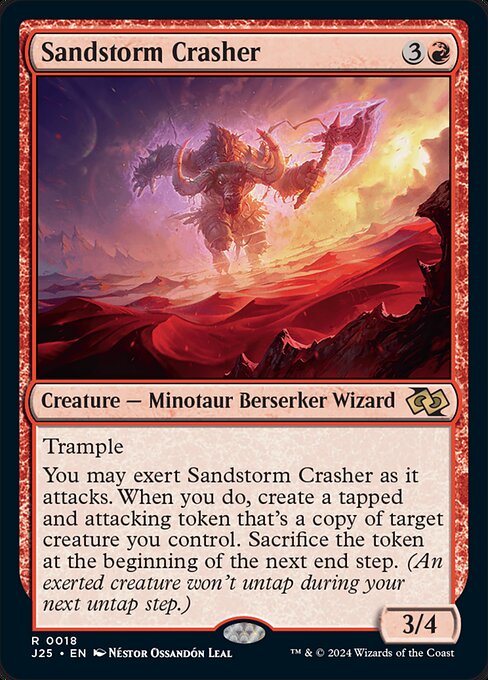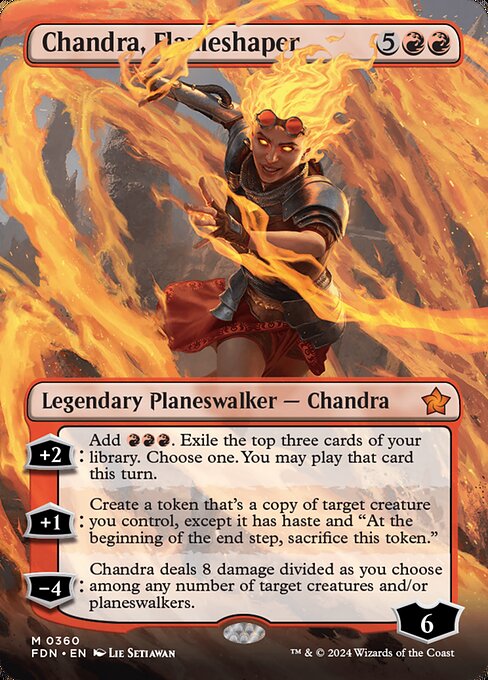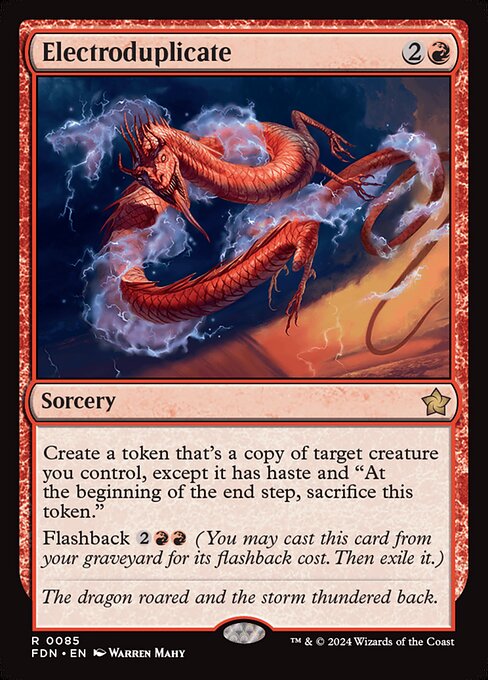Сказка о Разбившем Зеркало // Отражение Кики-Дзики
//
Чары — Сага // Чары Существо — Гоблин Шаман
(При выходе этой Саги и после вашего шага взятия карты добавьте один жетон знаний.)
I — Создайте одну фишку существа 2/2 красный Гоблин Шаман со способностью «Каждый раз, когда это существо атакует, создайте одну фишку Клада».
II — Вы можете сбросить не более двух карт. Если вы это делаете, возьмите столько же карт.
III — Изгоните эту Сагу, затем верните ее на поле битвы трансформированной под вашим контролем. // , : создайте одну фишку, являющуюся копией другого целевого нелегендарного существа под вашим контролем, но при этом у нее есть Ускорение. Пожертвуйте ее в начале следующего заключительного шага.
I — Создайте одну фишку существа 2/2 красный Гоблин Шаман со способностью «Каждый раз, когда это существо атакует, создайте одну фишку Клада».
II — Вы можете сбросить не более двух карт. Если вы это делаете, возьмите столько же карт.
III — Изгоните эту Сагу, затем верните ее на поле битвы трансформированной под вашим контролем. // , : создайте одну фишку, являющуюся копией другого целевого нелегендарного существа под вашим контролем, но при этом у нее есть Ускорение. Пожертвуйте ее в начале следующего заключительного шага.
2/2
standard
future
historic
gladiator
pioneer
explorer
modern
legacy
pauper
vintage
penny
commander
brawl
alchemy
paupercommander
duel
oldschool
premodern
Rulings
If the copied creature has in its mana cost, X is 0.
If Reflection of Kiki-Jiki's ability creates multiple tokens due to a replacement effect (such as the one Doubling Season creates), you'll sacrifice each of them.
The back face of a transforming double-faced card usually has a color indicator that defines its color.
The mana value of a transforming double-faced card is the mana value of its front face, no matter which face is up.
Each transforming double-faced card in this set is cast face up. In every zone other than the battlefield, consider only the characteristics of its front face. If it is on the battlefield, consider only the characteristics of the face that's up; the other face's characteristics are ignored.
If a copied creature is a token that isn't a copy of something else, the copy copies the original characteristics of that token as stated by the effect that created it.
A transforming double-faced card enters the battlefield with its front face up by default, unless a spell or ability instructs you to put it onto the battlefield transformed or you cast it transformed, in which case it enters with its back face up.
If another creature becomes a copy of, or enters the battlefield as a copy of, the token, that creature will copy the creature card the token is copying, except it will also have haste. However, you won't sacrifice the new copy at the beginning of the next end step.
If you are instructed to put a card that isn't a double-faced card onto the battlefield transformed, it will not enter the battlefield at all. In that case, it stays in the zone it was previously in. For example, if a single-faced card is a copy of Azusa's Many Journeys, the chapter III ability will cause it to be exiled and then remain in exile.
Each face of a transforming double-faced card has its own set of characteristics: name, types, subtypes, abilities, and so on. While a transforming double-faced permanent is on the battlefield, consider only the characteristics of the face that's currently up. The other set of characteristics is ignored.
If a copied creature is copying something else, the token you create will use the copiable values of the target creature. In most cases, it will just be a copy of whatever that creature is copying.
The token created by Reflection of Kiki-Jiki copies exactly what was printed on the original creature (except that the copy also has haste) and nothing else (unless it's copying a creature that's a token or that's copying something else; see below). It doesn't copy whether the creature is tapped or untapped, whether it has any counters on it or Auras and/or Equipment attached to it, or any non-copy effects that changed its power, toughness, types, color, and so on. Most notably, if the target creature isn't normally a creature, the copy won't be a creature.
Any enters-the-battlefield abilities of the copied creature will trigger when the token enters the battlefield. Any “as [this permanent] enters the battlefield” or “[this permanent] enters the battlefield with” abilities of the copied creature card will also work.
If Reflection of Kiki-Jiki's ability creates multiple tokens due to a replacement effect (such as the one Doubling Season creates), you'll sacrifice each of them.
The back face of a transforming double-faced card usually has a color indicator that defines its color.
The mana value of a transforming double-faced card is the mana value of its front face, no matter which face is up.
Each transforming double-faced card in this set is cast face up. In every zone other than the battlefield, consider only the characteristics of its front face. If it is on the battlefield, consider only the characteristics of the face that's up; the other face's characteristics are ignored.
If a copied creature is a token that isn't a copy of something else, the copy copies the original characteristics of that token as stated by the effect that created it.
A transforming double-faced card enters the battlefield with its front face up by default, unless a spell or ability instructs you to put it onto the battlefield transformed or you cast it transformed, in which case it enters with its back face up.
If another creature becomes a copy of, or enters the battlefield as a copy of, the token, that creature will copy the creature card the token is copying, except it will also have haste. However, you won't sacrifice the new copy at the beginning of the next end step.
If you are instructed to put a card that isn't a double-faced card onto the battlefield transformed, it will not enter the battlefield at all. In that case, it stays in the zone it was previously in. For example, if a single-faced card is a copy of Azusa's Many Journeys, the chapter III ability will cause it to be exiled and then remain in exile.
Each face of a transforming double-faced card has its own set of characteristics: name, types, subtypes, abilities, and so on. While a transforming double-faced permanent is on the battlefield, consider only the characteristics of the face that's currently up. The other set of characteristics is ignored.
If a copied creature is copying something else, the token you create will use the copiable values of the target creature. In most cases, it will just be a copy of whatever that creature is copying.
The token created by Reflection of Kiki-Jiki copies exactly what was printed on the original creature (except that the copy also has haste) and nothing else (unless it's copying a creature that's a token or that's copying something else; see below). It doesn't copy whether the creature is tapped or untapped, whether it has any counters on it or Auras and/or Equipment attached to it, or any non-copy effects that changed its power, toughness, types, color, and so on. Most notably, if the target creature isn't normally a creature, the copy won't be a creature.
Any enters-the-battlefield abilities of the copied creature will trigger when the token enters the battlefield. Any “as [this permanent] enters the battlefield” or “[this permanent] enters the battlefield with” abilities of the copied creature card will also work.
Rulings
If the copied creature has in its mana cost, X is 0.
If Reflection of Kiki-Jiki's ability creates multiple tokens due to a replacement effect (such as the one Doubling Season creates), you'll sacrifice each of them.
The back face of a transforming double-faced card usually has a color indicator that defines its color.
The mana value of a transforming double-faced card is the mana value of its front face, no matter which face is up.
Each transforming double-faced card in this set is cast face up. In every zone other than the battlefield, consider only the characteristics of its front face. If it is on the battlefield, consider only the characteristics of the face that's up; the other face's characteristics are ignored.
If a copied creature is a token that isn't a copy of something else, the copy copies the original characteristics of that token as stated by the effect that created it.
A transforming double-faced card enters the battlefield with its front face up by default, unless a spell or ability instructs you to put it onto the battlefield transformed or you cast it transformed, in which case it enters with its back face up.
If another creature becomes a copy of, or enters the battlefield as a copy of, the token, that creature will copy the creature card the token is copying, except it will also have haste. However, you won't sacrifice the new copy at the beginning of the next end step.
If you are instructed to put a card that isn't a double-faced card onto the battlefield transformed, it will not enter the battlefield at all. In that case, it stays in the zone it was previously in. For example, if a single-faced card is a copy of Azusa's Many Journeys, the chapter III ability will cause it to be exiled and then remain in exile.
Each face of a transforming double-faced card has its own set of characteristics: name, types, subtypes, abilities, and so on. While a transforming double-faced permanent is on the battlefield, consider only the characteristics of the face that's currently up. The other set of characteristics is ignored.
If a copied creature is copying something else, the token you create will use the copiable values of the target creature. In most cases, it will just be a copy of whatever that creature is copying.
The token created by Reflection of Kiki-Jiki copies exactly what was printed on the original creature (except that the copy also has haste) and nothing else (unless it's copying a creature that's a token or that's copying something else; see below). It doesn't copy whether the creature is tapped or untapped, whether it has any counters on it or Auras and/or Equipment attached to it, or any non-copy effects that changed its power, toughness, types, color, and so on. Most notably, if the target creature isn't normally a creature, the copy won't be a creature.
Any enters-the-battlefield abilities of the copied creature will trigger when the token enters the battlefield. Any “as [this permanent] enters the battlefield” or “[this permanent] enters the battlefield with” abilities of the copied creature card will also work.
If Reflection of Kiki-Jiki's ability creates multiple tokens due to a replacement effect (such as the one Doubling Season creates), you'll sacrifice each of them.
The back face of a transforming double-faced card usually has a color indicator that defines its color.
The mana value of a transforming double-faced card is the mana value of its front face, no matter which face is up.
Each transforming double-faced card in this set is cast face up. In every zone other than the battlefield, consider only the characteristics of its front face. If it is on the battlefield, consider only the characteristics of the face that's up; the other face's characteristics are ignored.
If a copied creature is a token that isn't a copy of something else, the copy copies the original characteristics of that token as stated by the effect that created it.
A transforming double-faced card enters the battlefield with its front face up by default, unless a spell or ability instructs you to put it onto the battlefield transformed or you cast it transformed, in which case it enters with its back face up.
If another creature becomes a copy of, or enters the battlefield as a copy of, the token, that creature will copy the creature card the token is copying, except it will also have haste. However, you won't sacrifice the new copy at the beginning of the next end step.
If you are instructed to put a card that isn't a double-faced card onto the battlefield transformed, it will not enter the battlefield at all. In that case, it stays in the zone it was previously in. For example, if a single-faced card is a copy of Azusa's Many Journeys, the chapter III ability will cause it to be exiled and then remain in exile.
Each face of a transforming double-faced card has its own set of characteristics: name, types, subtypes, abilities, and so on. While a transforming double-faced permanent is on the battlefield, consider only the characteristics of the face that's currently up. The other set of characteristics is ignored.
If a copied creature is copying something else, the token you create will use the copiable values of the target creature. In most cases, it will just be a copy of whatever that creature is copying.
The token created by Reflection of Kiki-Jiki copies exactly what was printed on the original creature (except that the copy also has haste) and nothing else (unless it's copying a creature that's a token or that's copying something else; see below). It doesn't copy whether the creature is tapped or untapped, whether it has any counters on it or Auras and/or Equipment attached to it, or any non-copy effects that changed its power, toughness, types, color, and so on. Most notably, if the target creature isn't normally a creature, the copy won't be a creature.
Any enters-the-battlefield abilities of the copied creature will trigger when the token enters the battlefield. Any “as [this permanent] enters the battlefield” or “[this permanent] enters the battlefield with” abilities of the copied creature card will also work.
Votre collection ? vos decks ?
Envie de gérer votre collection et/ou créer des decks ?
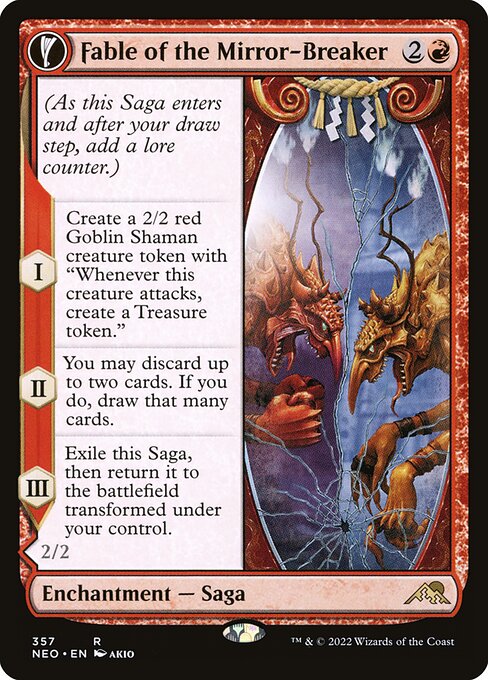

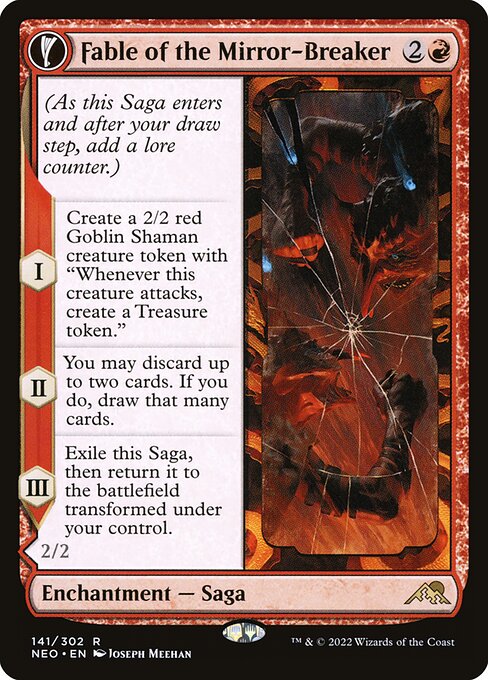
 0
0
 16.37€
16.37€
